My most current blog entry:
Entries from March 1, 2018 - March 31, 2018
A Ramble in Scotland with a Visiting Friend (10/31 - 11/3, 2015)
 Sunday, March 18, 2018 at 11:18AM
Sunday, March 18, 2018 at 11:18AM Although I have left Scotland and am living back in Bangkok now, I am still going through photos I took on my many photographic rambles. This entry is of a three day ramble (mostly the northeast of Scotland) I took when my good friend John Stiles visited me. I took many, many photos on this ramble, so it will take some time for me to complete it. These are 'The Best of John's Visit.' Enjoy.
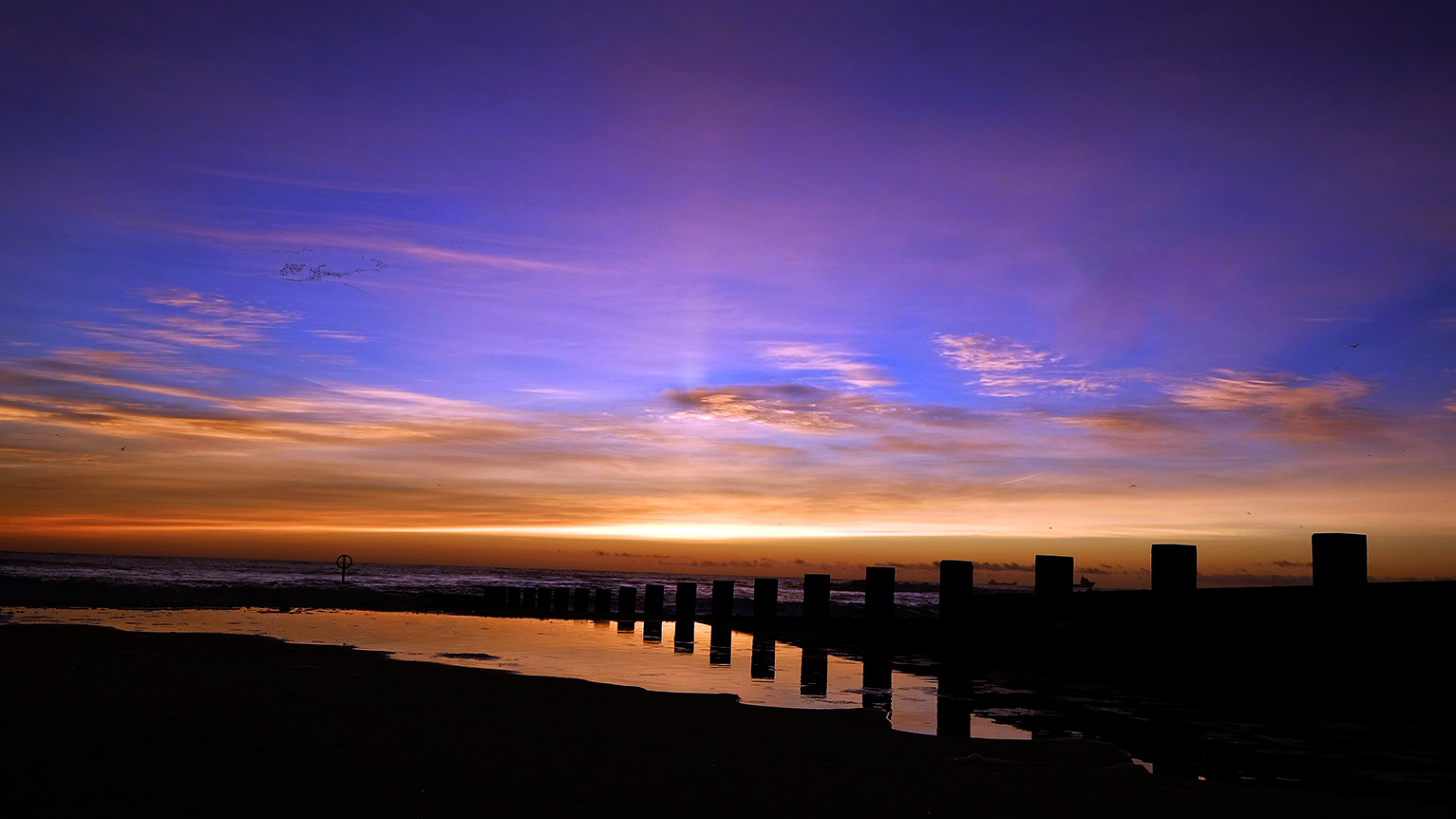 A North Sea sunrise along the Aberdeen Esplanade. Just above freezing.
A North Sea sunrise along the Aberdeen Esplanade. Just above freezing.
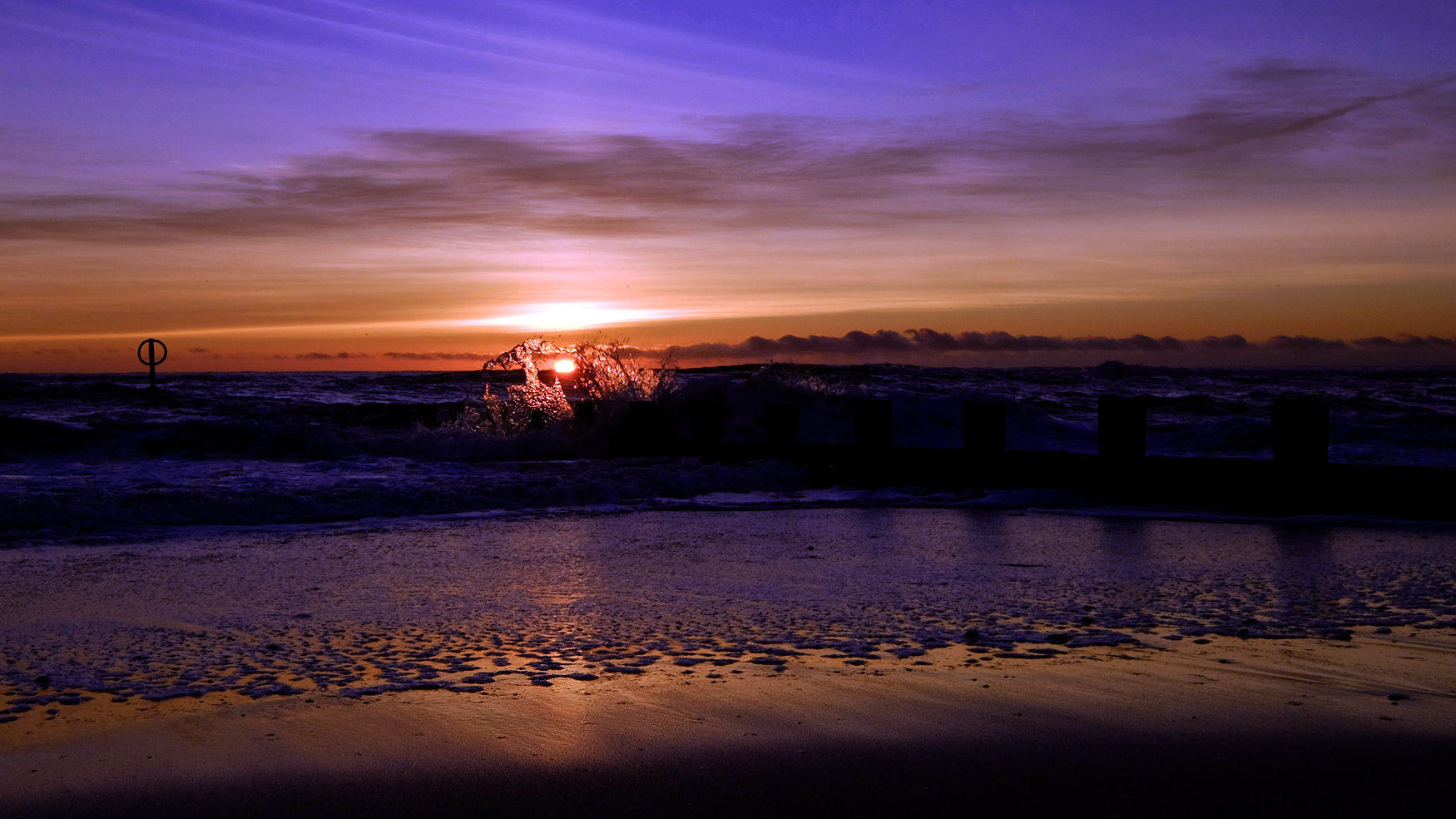 First Light. North Sea.
First Light. North Sea.
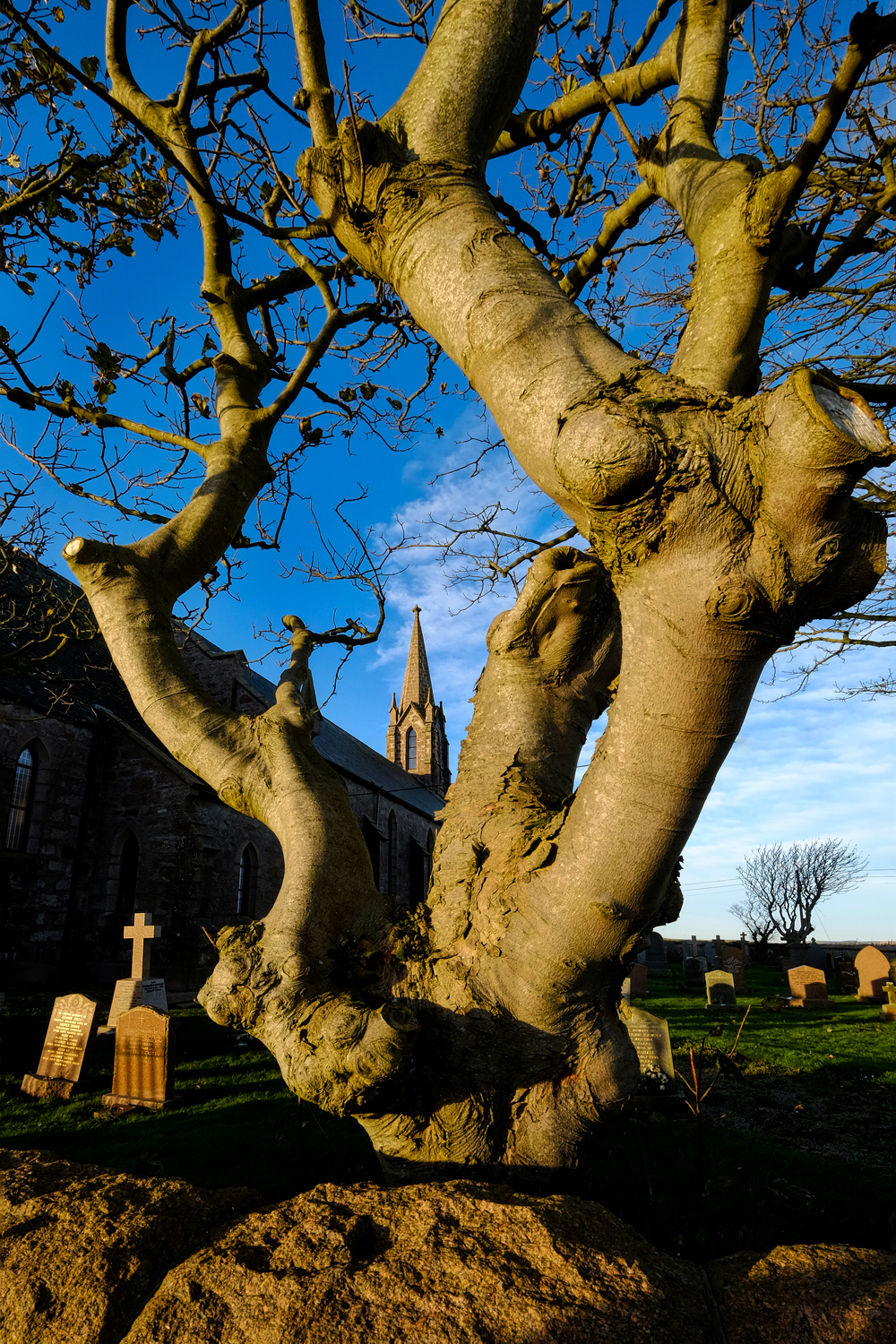 A church along an Aberdeenshire rural road.
A church along an Aberdeenshire rural road.
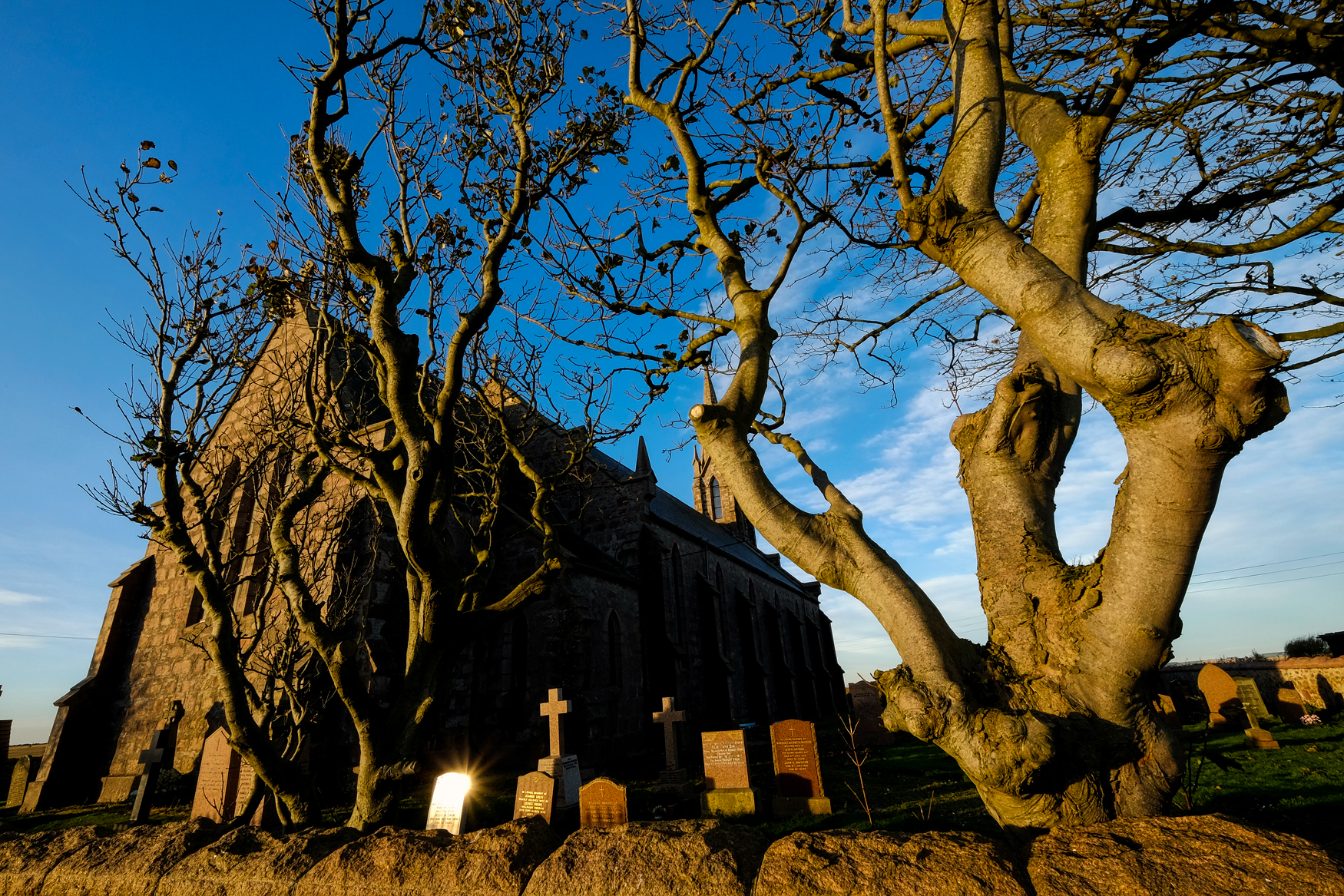 Stunning November weather for northeast Scotland.
Stunning November weather for northeast Scotland.
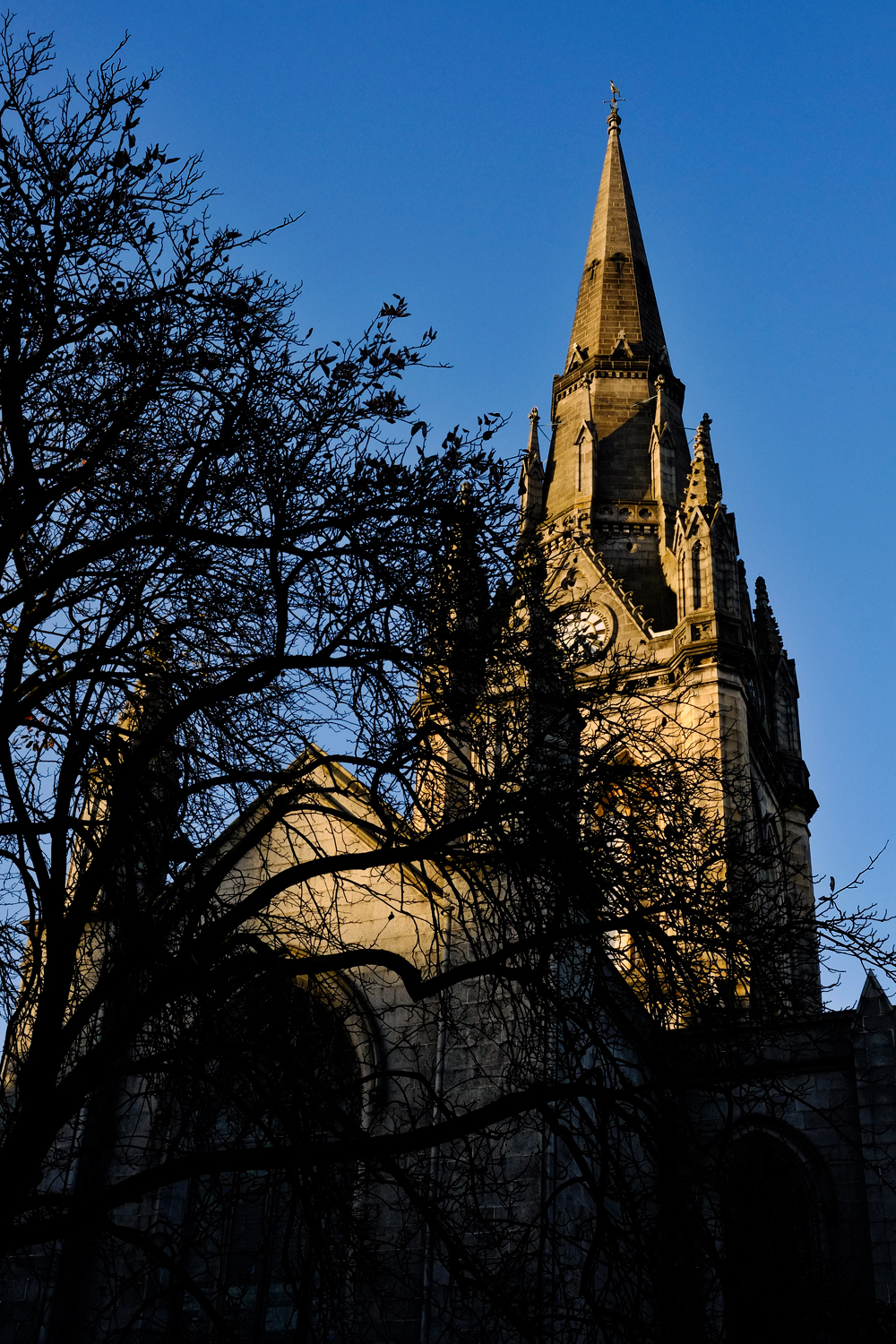 I the middle of the Aberdeen city centre is a wonderful church and cemetery.
I the middle of the Aberdeen city centre is a wonderful church and cemetery.
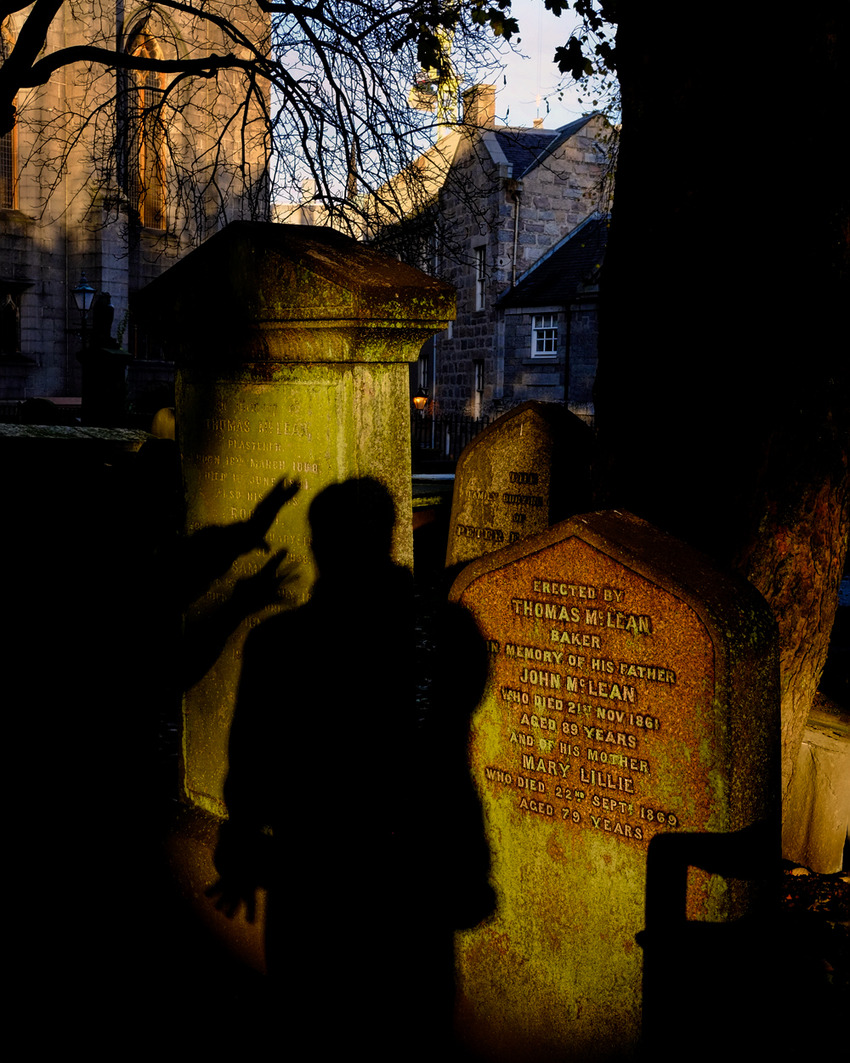 When an old friend visits that you haven't seen in a while, and it's Halloween, and you are in an old graveyard . . . you must play!
When an old friend visits that you haven't seen in a while, and it's Halloween, and you are in an old graveyard . . . you must play!
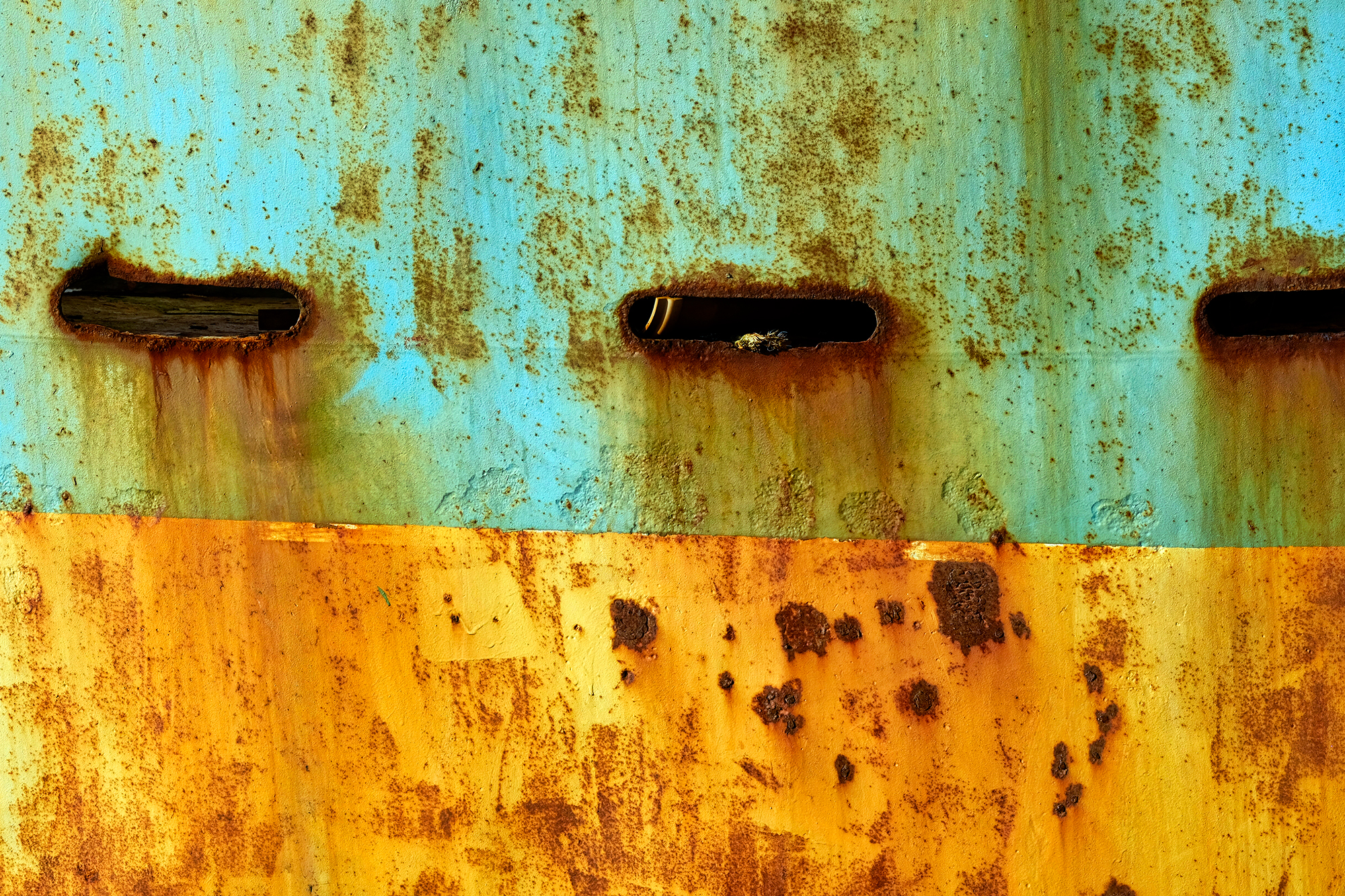 After that stunning sunrise at the Aberdeen Esplanade, our day one ramble took us up the coast to the little fishing berg of Baddam where the hulls of the beached trawlers provided extraordinary abstract studies in decay and color.
After that stunning sunrise at the Aberdeen Esplanade, our day one ramble took us up the coast to the little fishing berg of Baddam where the hulls of the beached trawlers provided extraordinary abstract studies in decay and color.
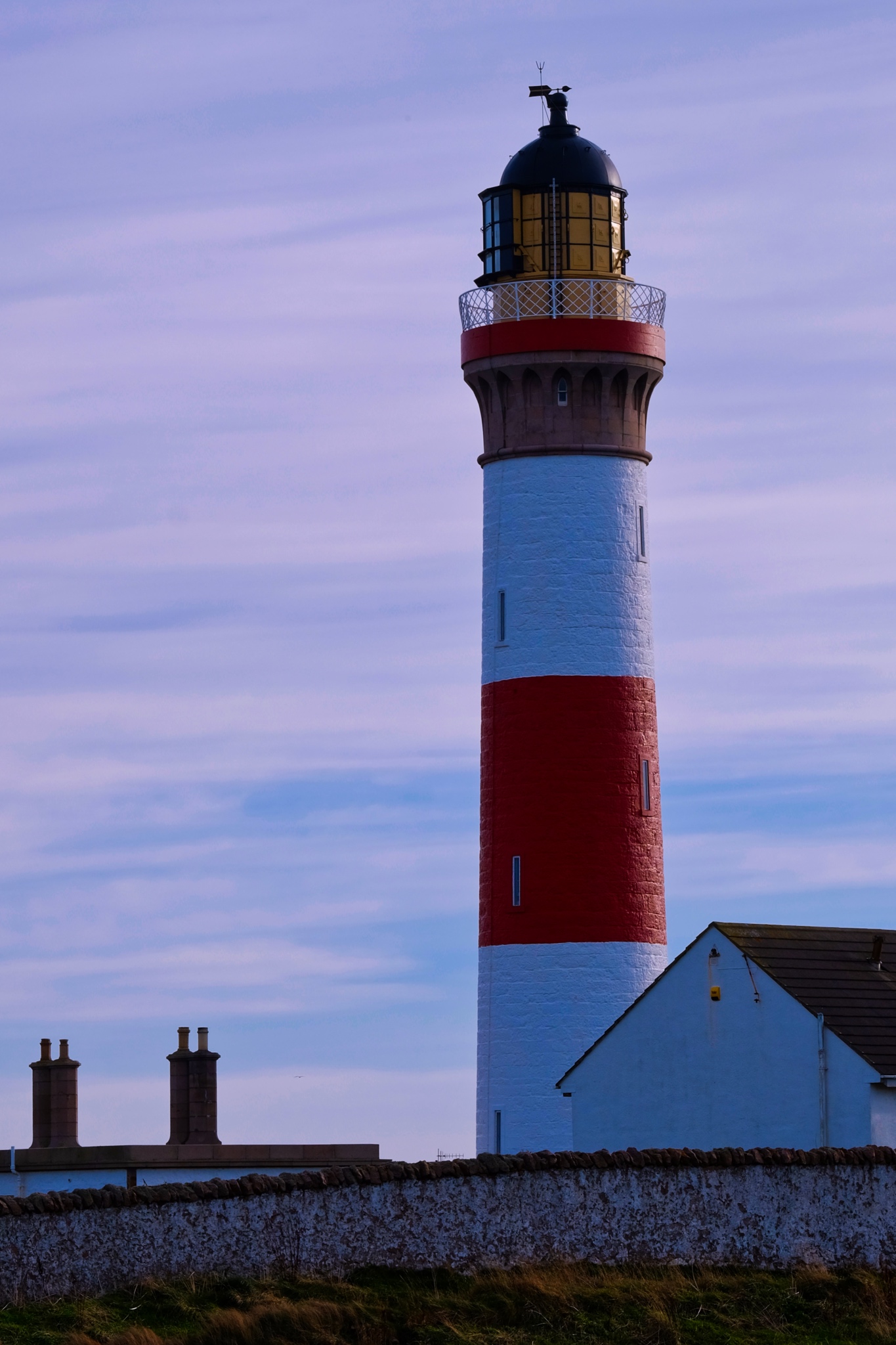 The lighthouse at Baddam.
The lighthouse at Baddam.
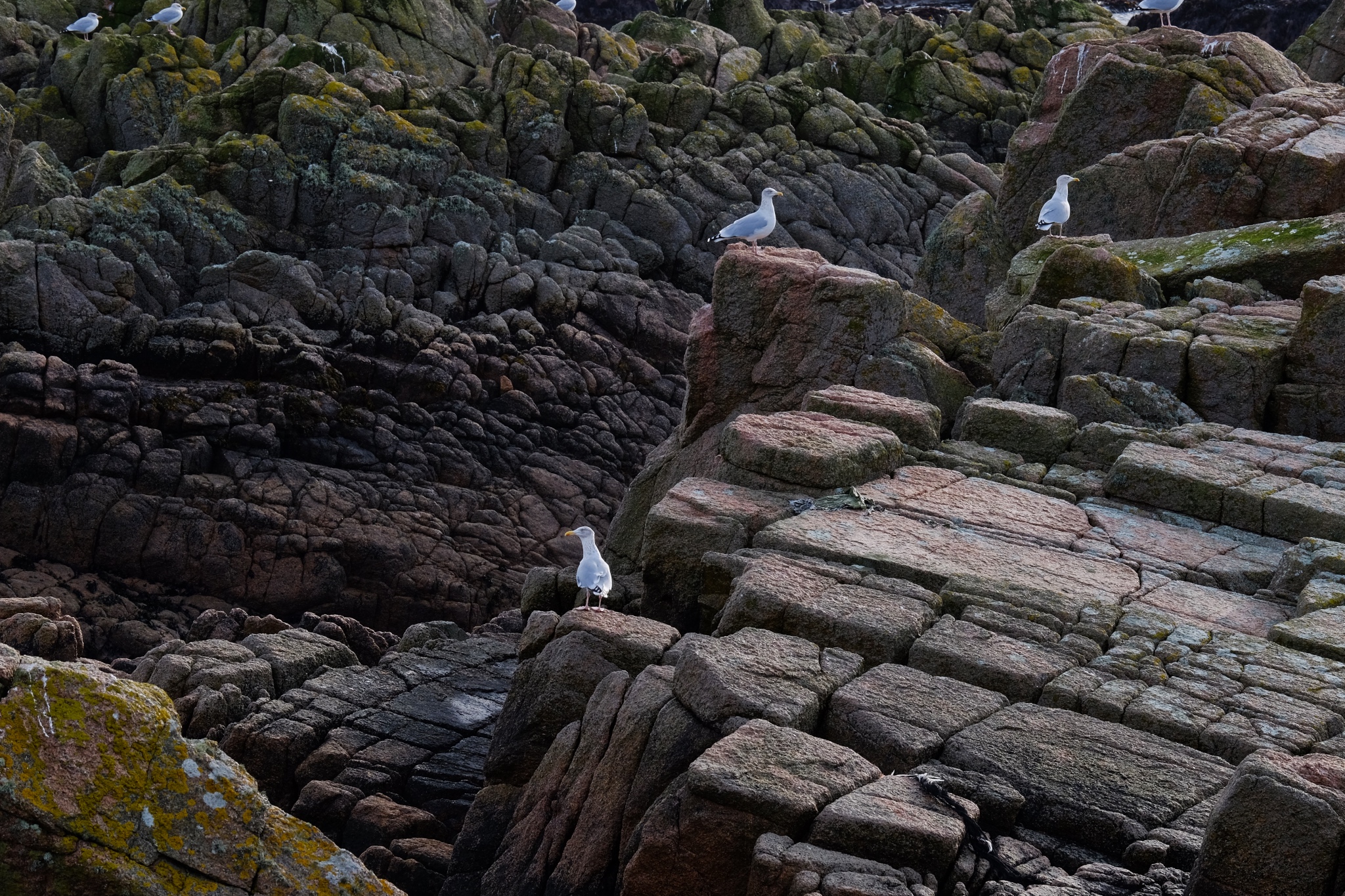 Exposed rocks near Baddam harbour.
Exposed rocks near Baddam harbour.
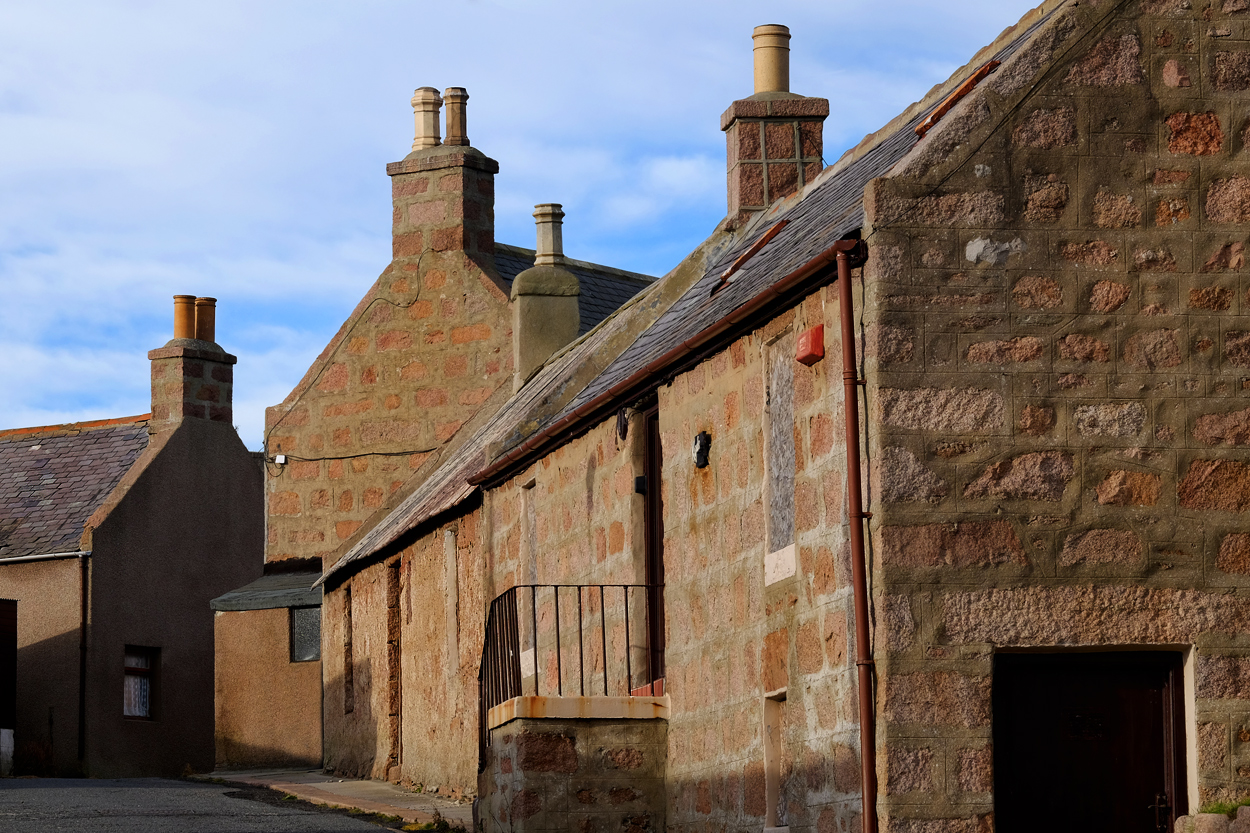 The austere old section of Baddam village.
The austere old section of Baddam village.
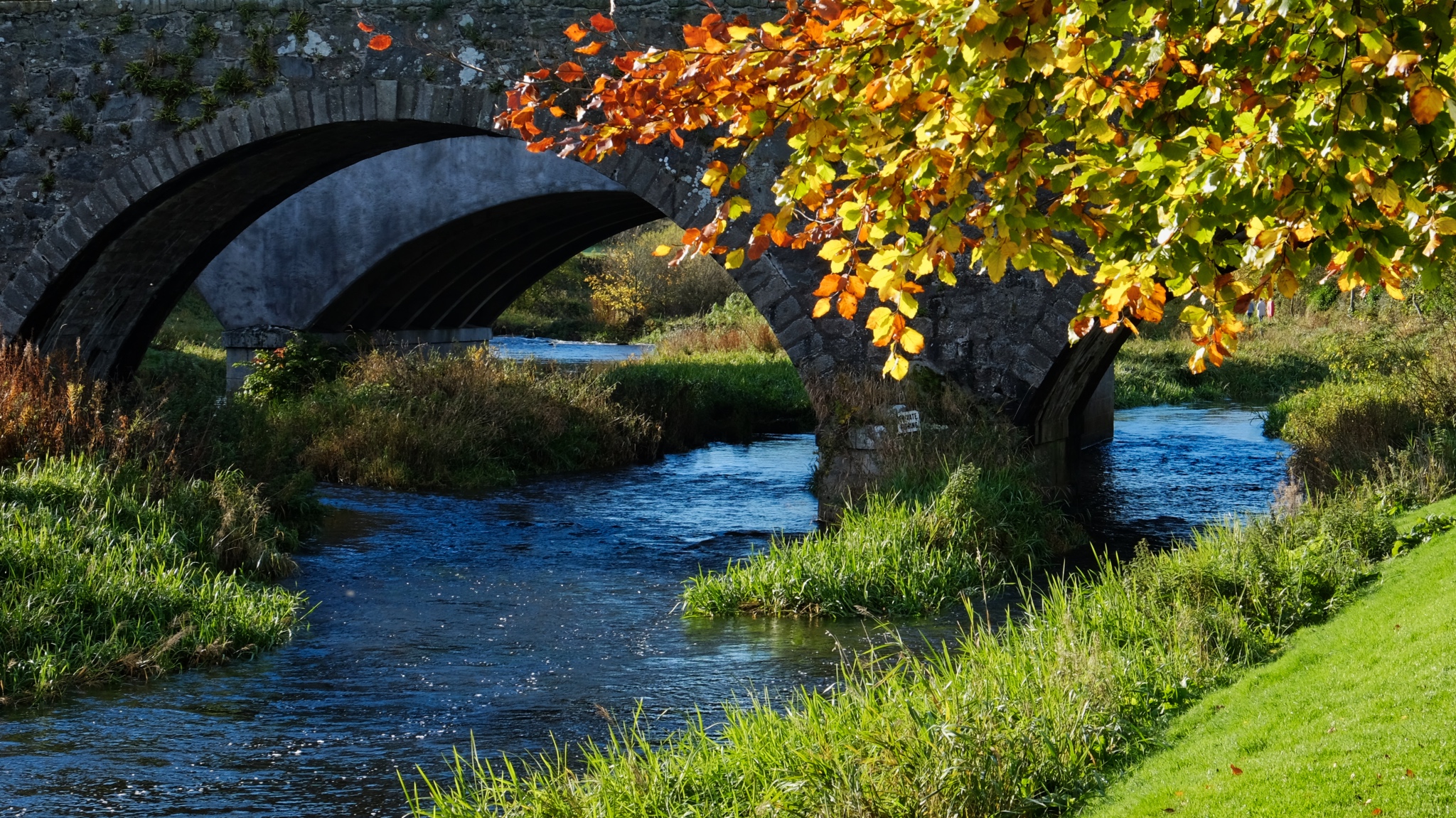 All along our small road route, we were continually 'discovering' fantastically beautiful scenes.
All along our small road route, we were continually 'discovering' fantastically beautiful scenes.
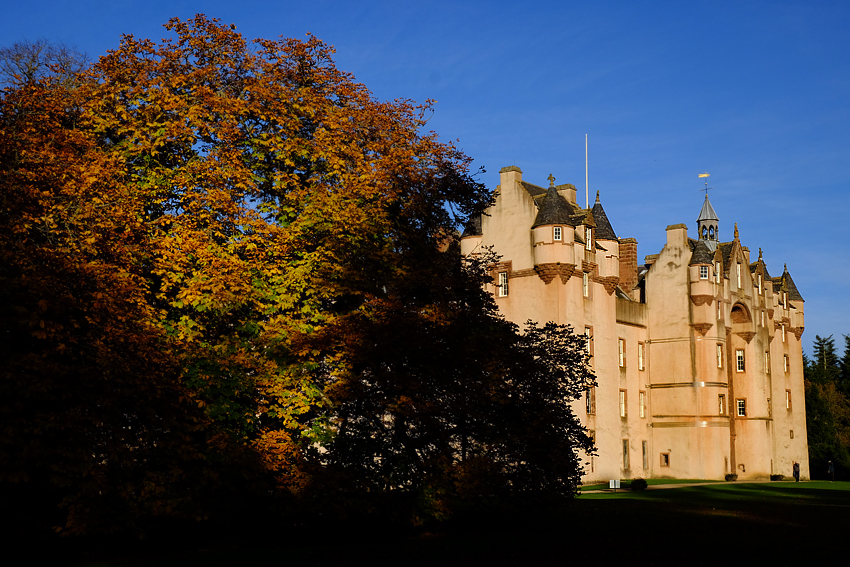 The stunning Fyvie Castle.
The stunning Fyvie Castle.
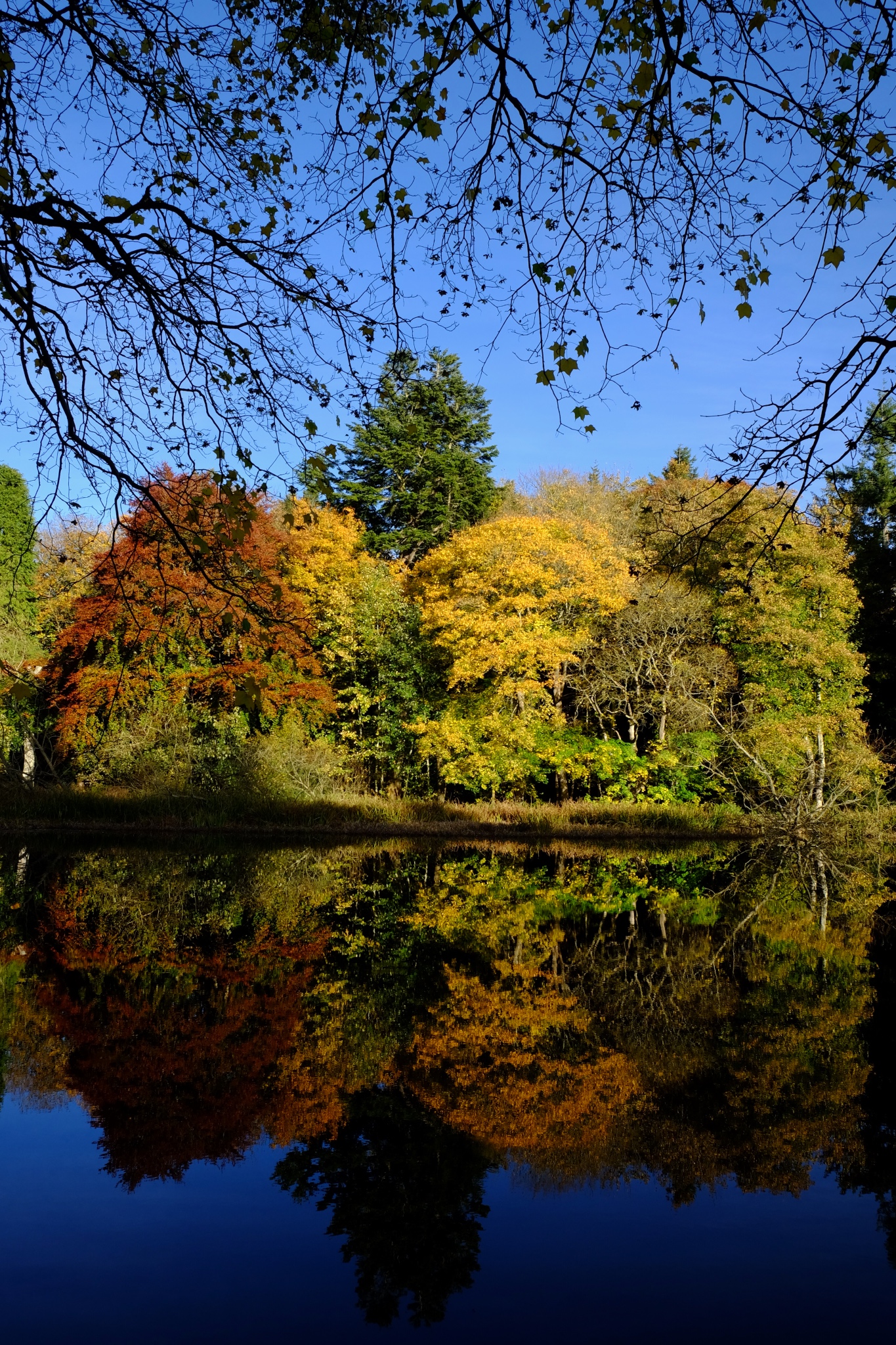 Gorgeous autumn scenes all around the grounds of Fyvie Castle.
Gorgeous autumn scenes all around the grounds of Fyvie Castle.
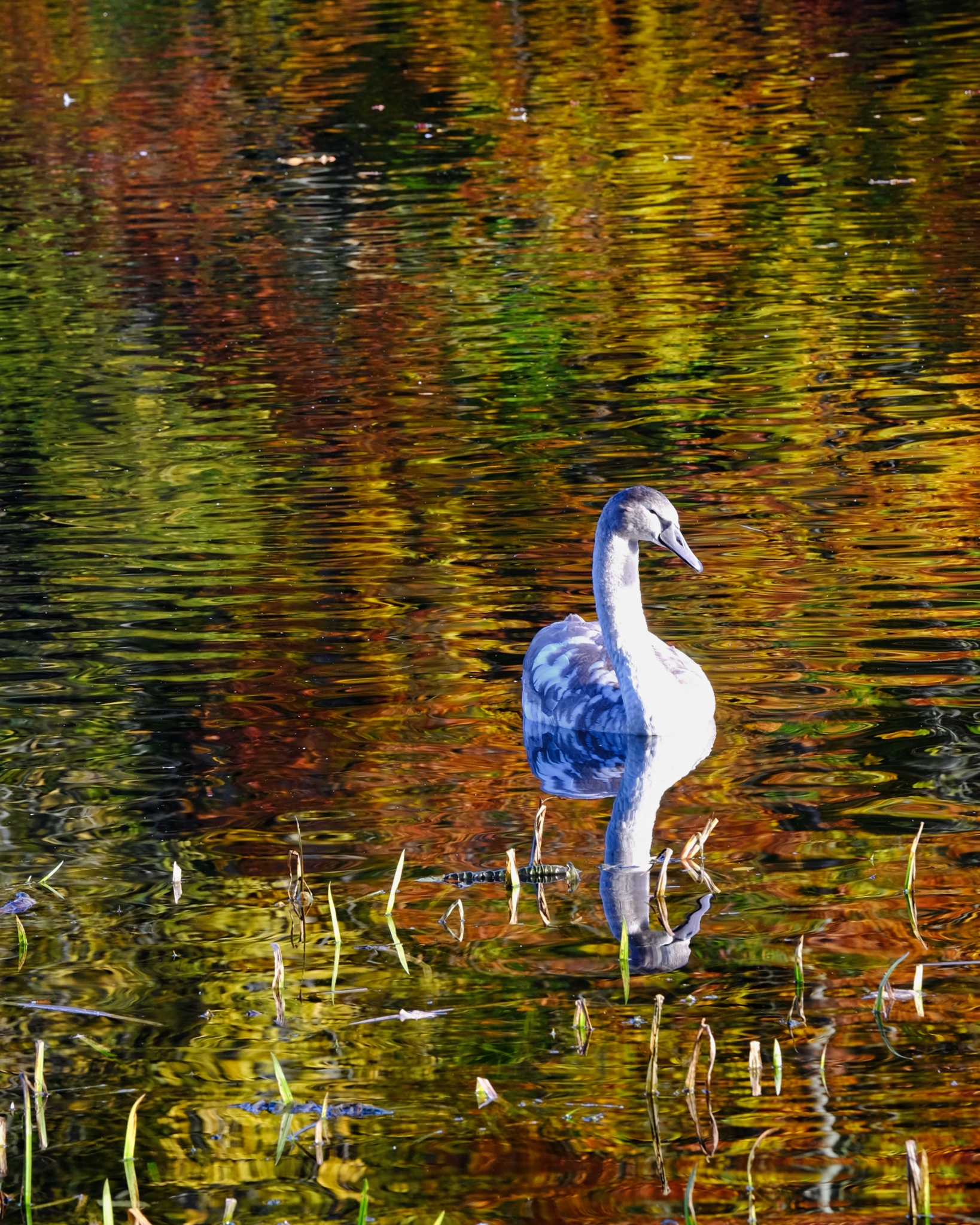 Superb Fall colors reflected in the castle goose pond.
Superb Fall colors reflected in the castle goose pond.
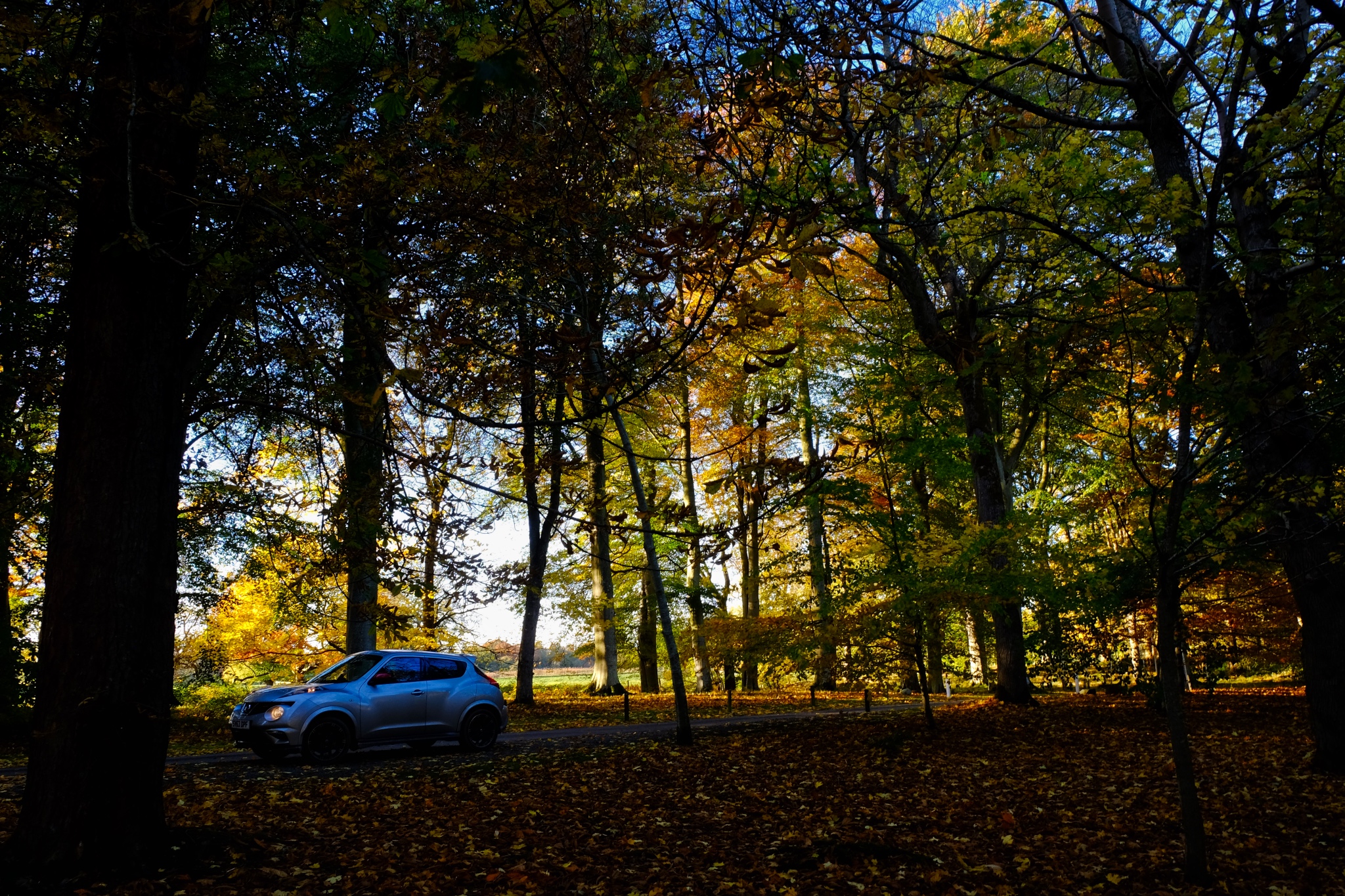 For three glorious days we rambled about the small roads of northeast Scotland. My AWD Juke NISMO was the perfect car for the narrow, winding, wet-leaf-covered country lanes.
For three glorious days we rambled about the small roads of northeast Scotland. My AWD Juke NISMO was the perfect car for the narrow, winding, wet-leaf-covered country lanes.
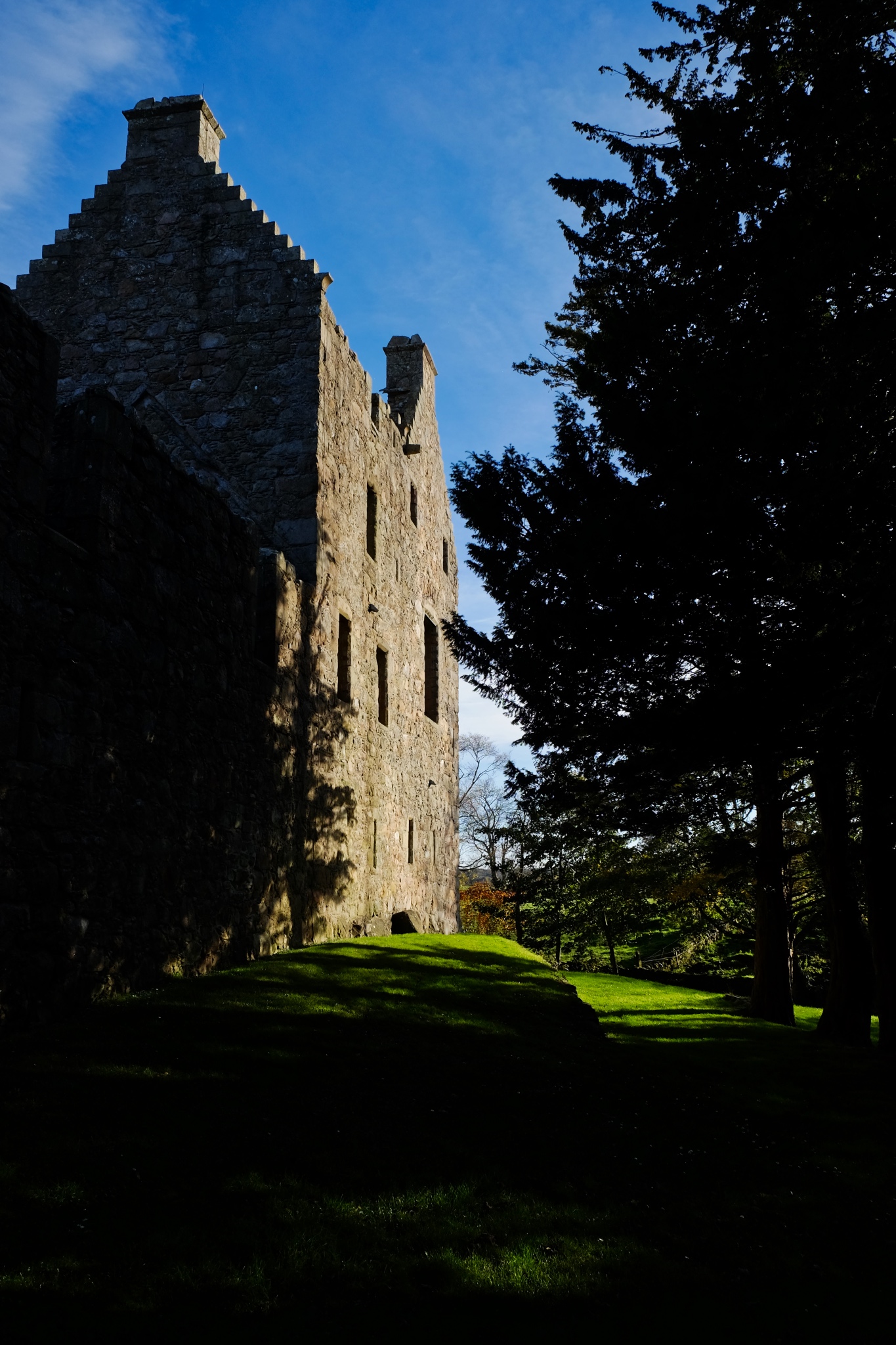 Castles and castle ruins everywhere in Aberdeenshire.
Castles and castle ruins everywhere in Aberdeenshire.
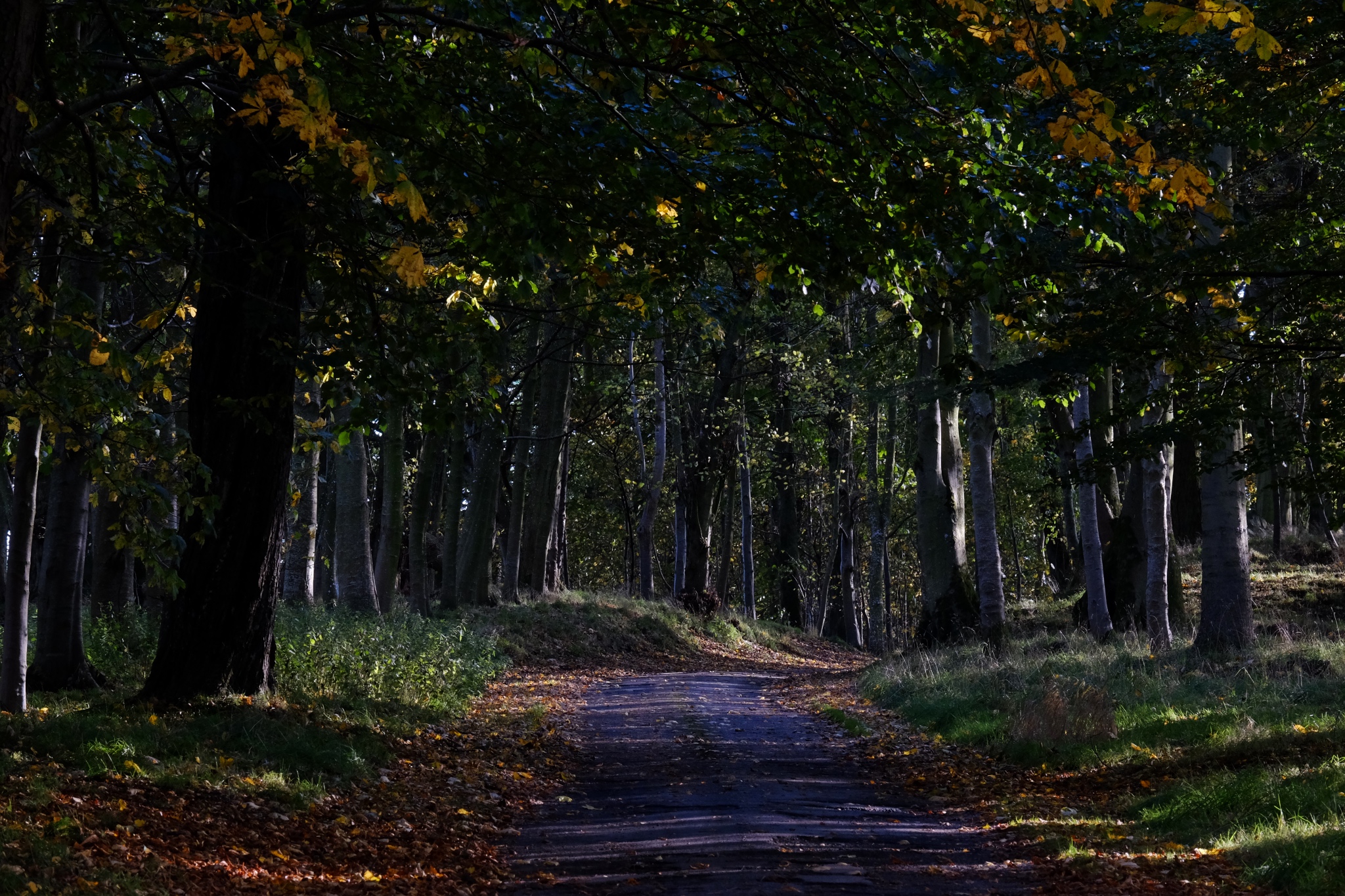 The Aberdeenshire roads would alternately suddenly diving into the deep shade of small forests . . .
The Aberdeenshire roads would alternately suddenly diving into the deep shade of small forests . . .
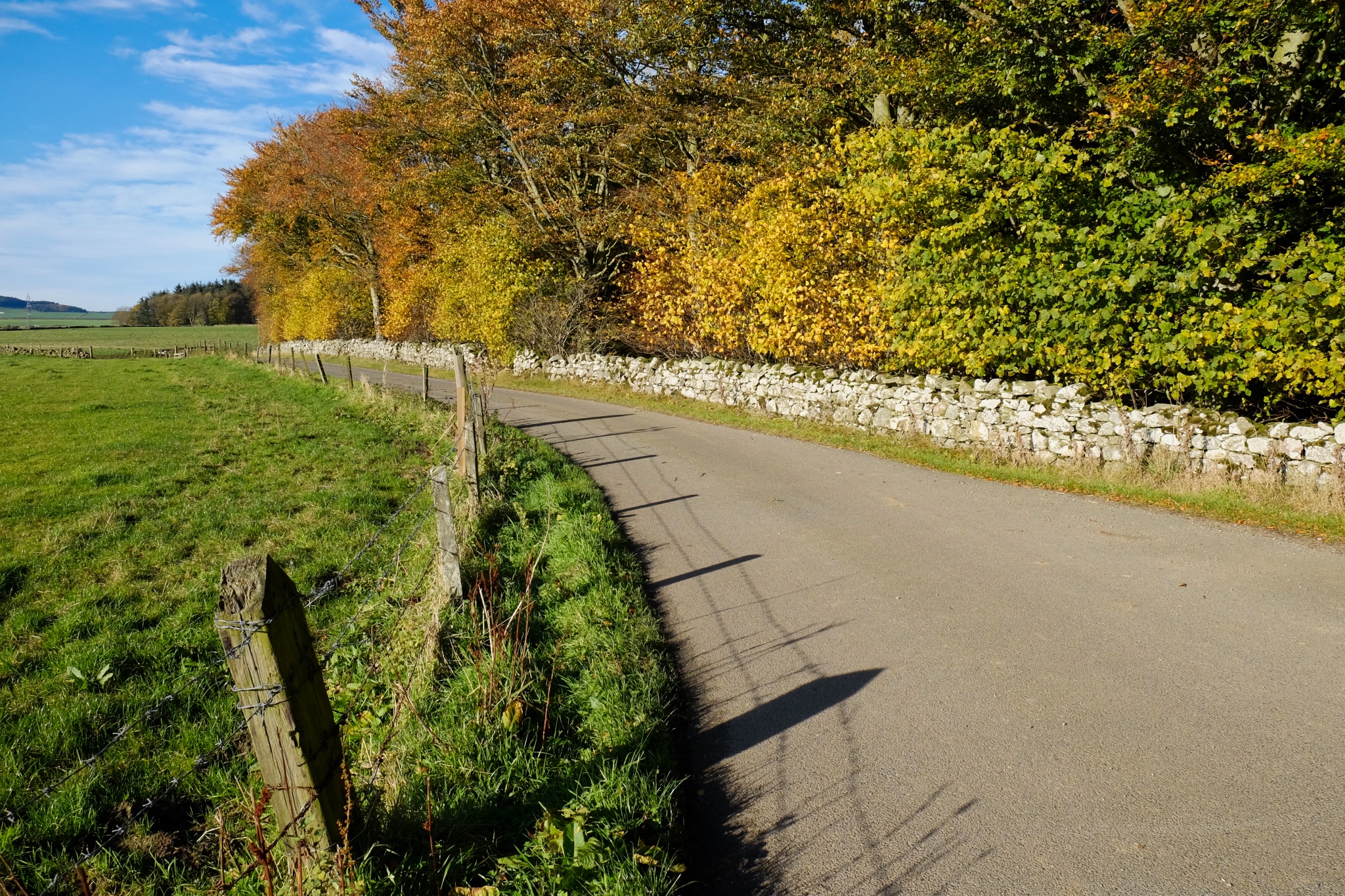 . . . and back out onto the bright, stone wall lined country roads.
. . . and back out onto the bright, stone wall lined country roads.
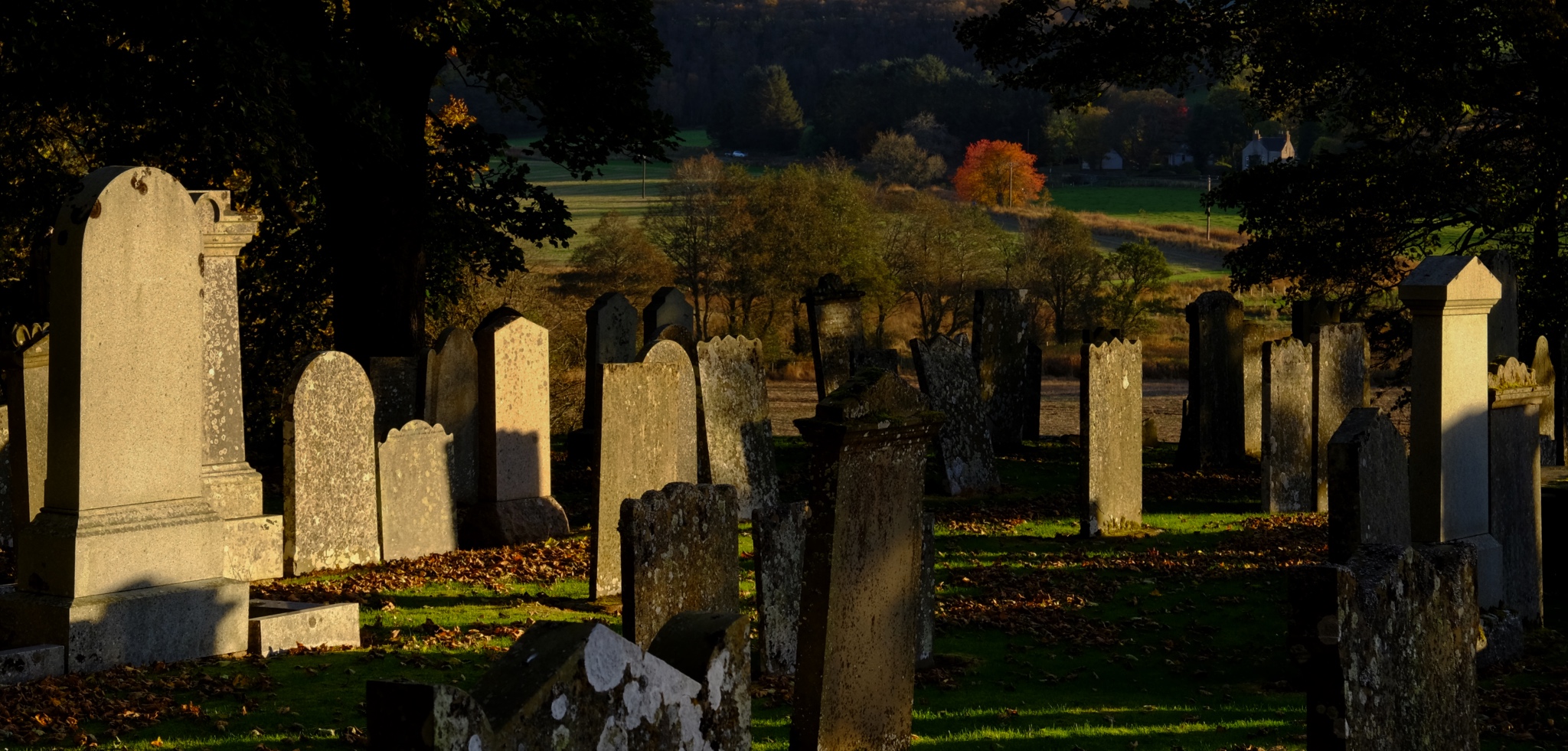 We were always up for a quick stop at an old country cemetery.
We were always up for a quick stop at an old country cemetery.
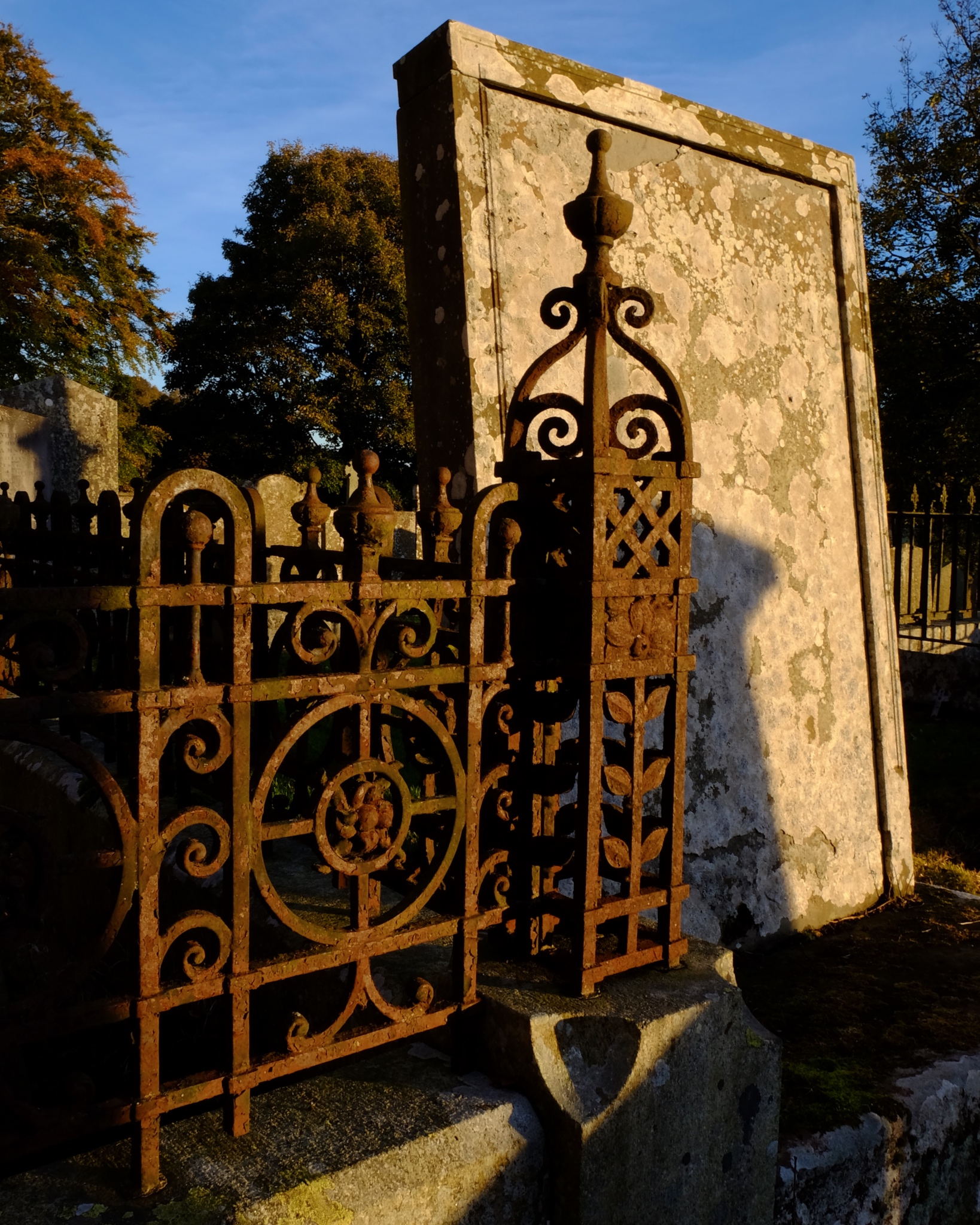 There is so much to see in the old cemeteries: colors, textures, old surfaces . . . . and . . . .
There is so much to see in the old cemeteries: colors, textures, old surfaces . . . . and . . . .
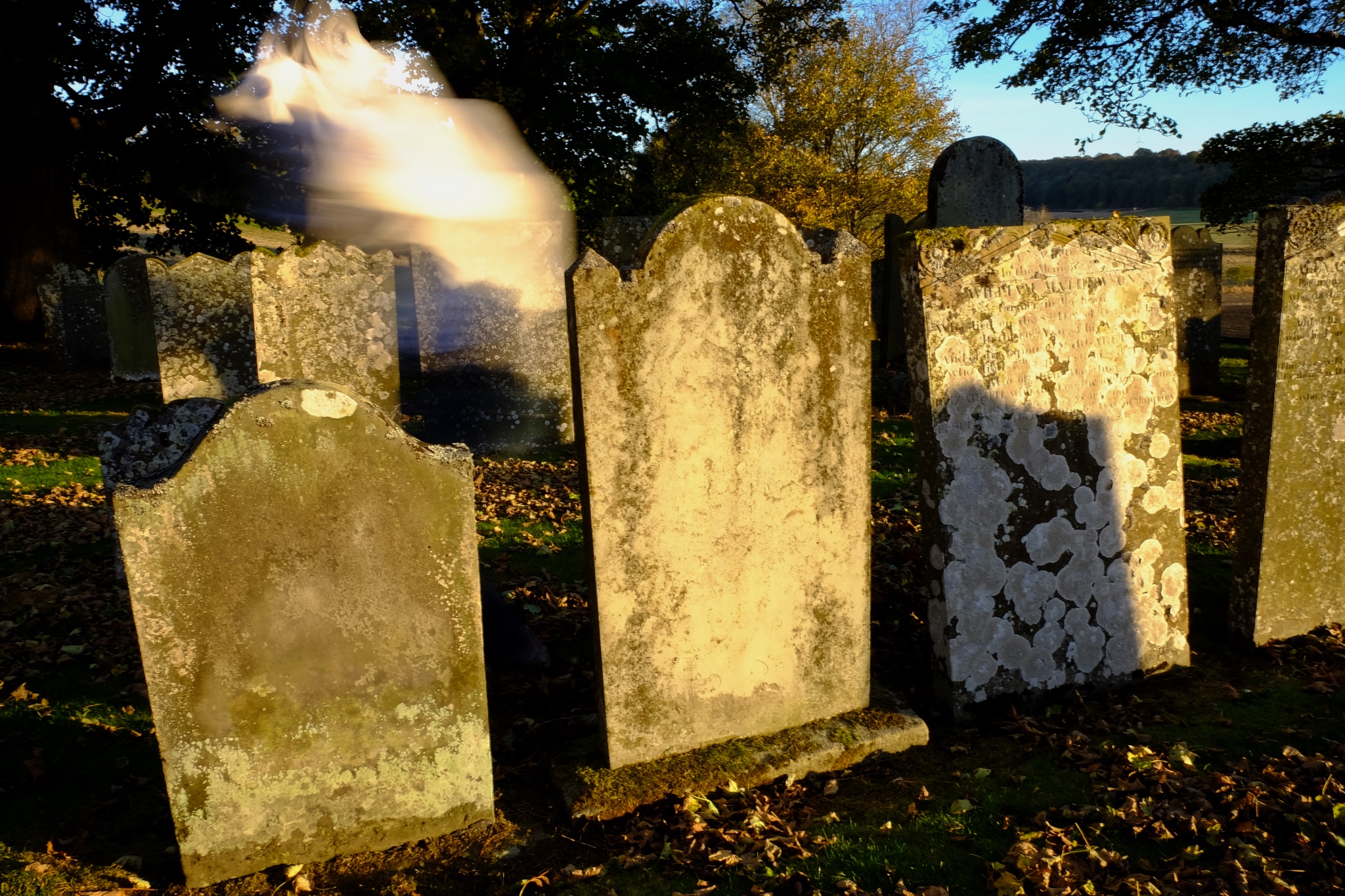 . . . and the occasional Class III freefloating spirit vapour.
. . . and the occasional Class III freefloating spirit vapour.
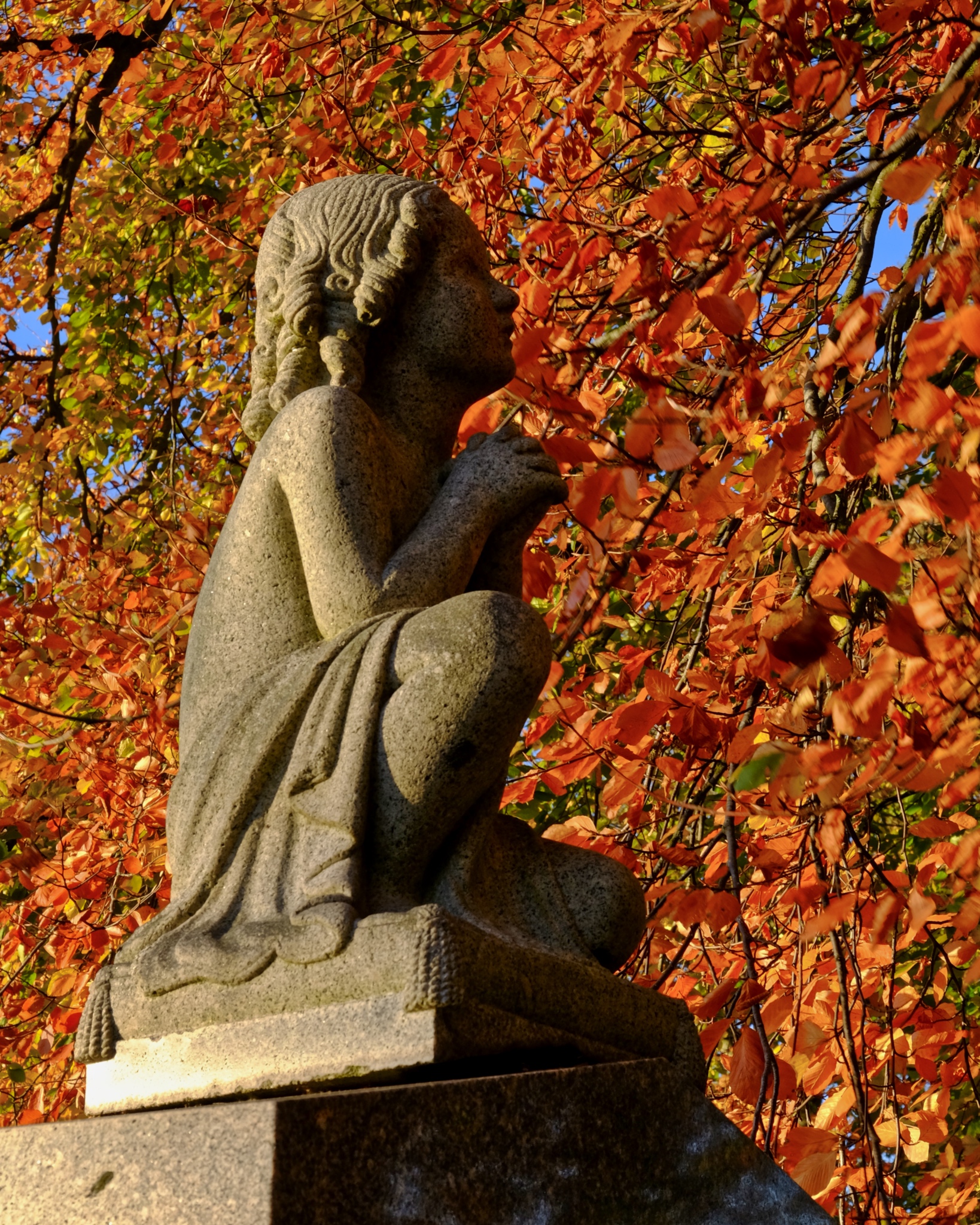 Autumn in a Scottish cemetery can be very beautiful.
Autumn in a Scottish cemetery can be very beautiful.
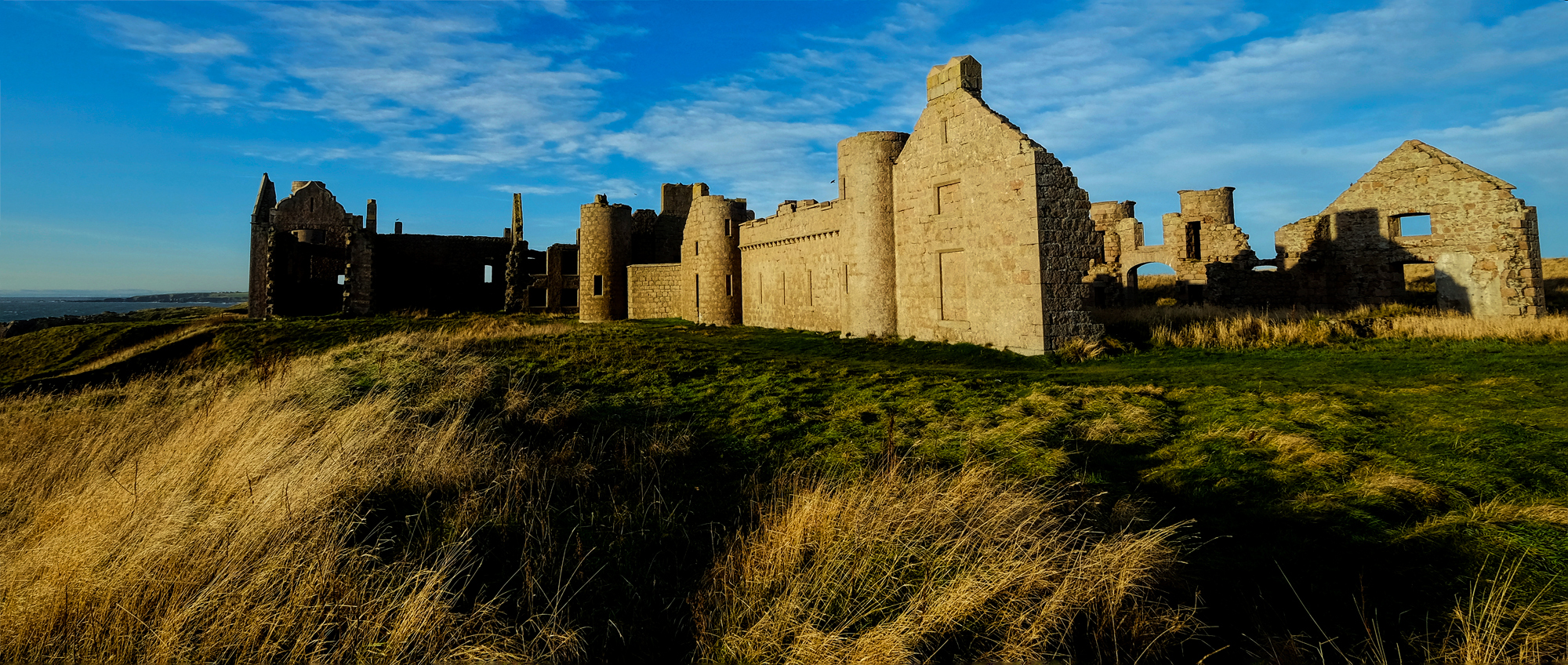 No trip to Aberdeenshire would be complete without a stop at New Slaines Castle . . . a photographer's paradise.
No trip to Aberdeenshire would be complete without a stop at New Slaines Castle . . . a photographer's paradise.
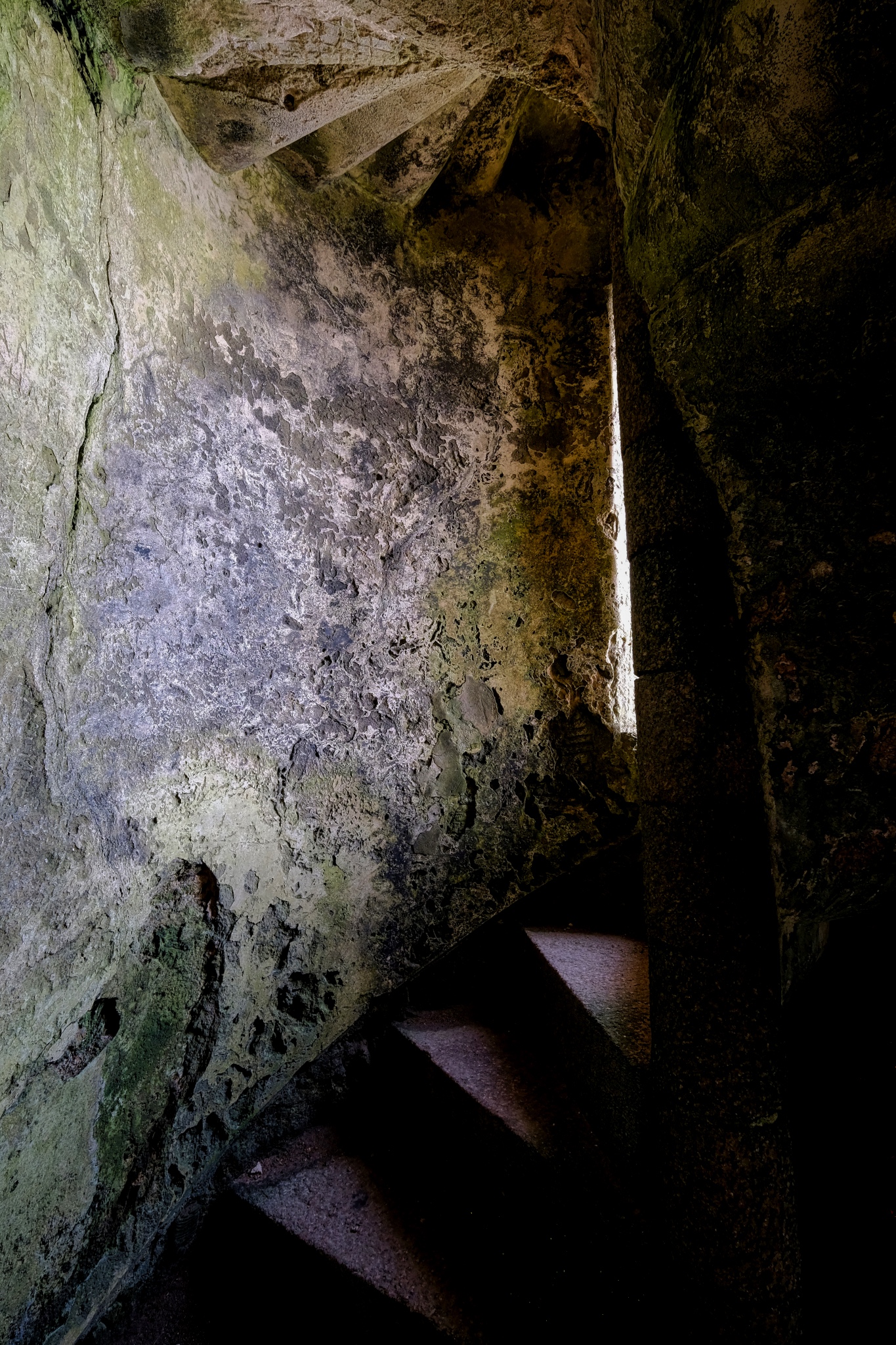 A stairwell in the ruins of New Slains Castle.
A stairwell in the ruins of New Slains Castle.
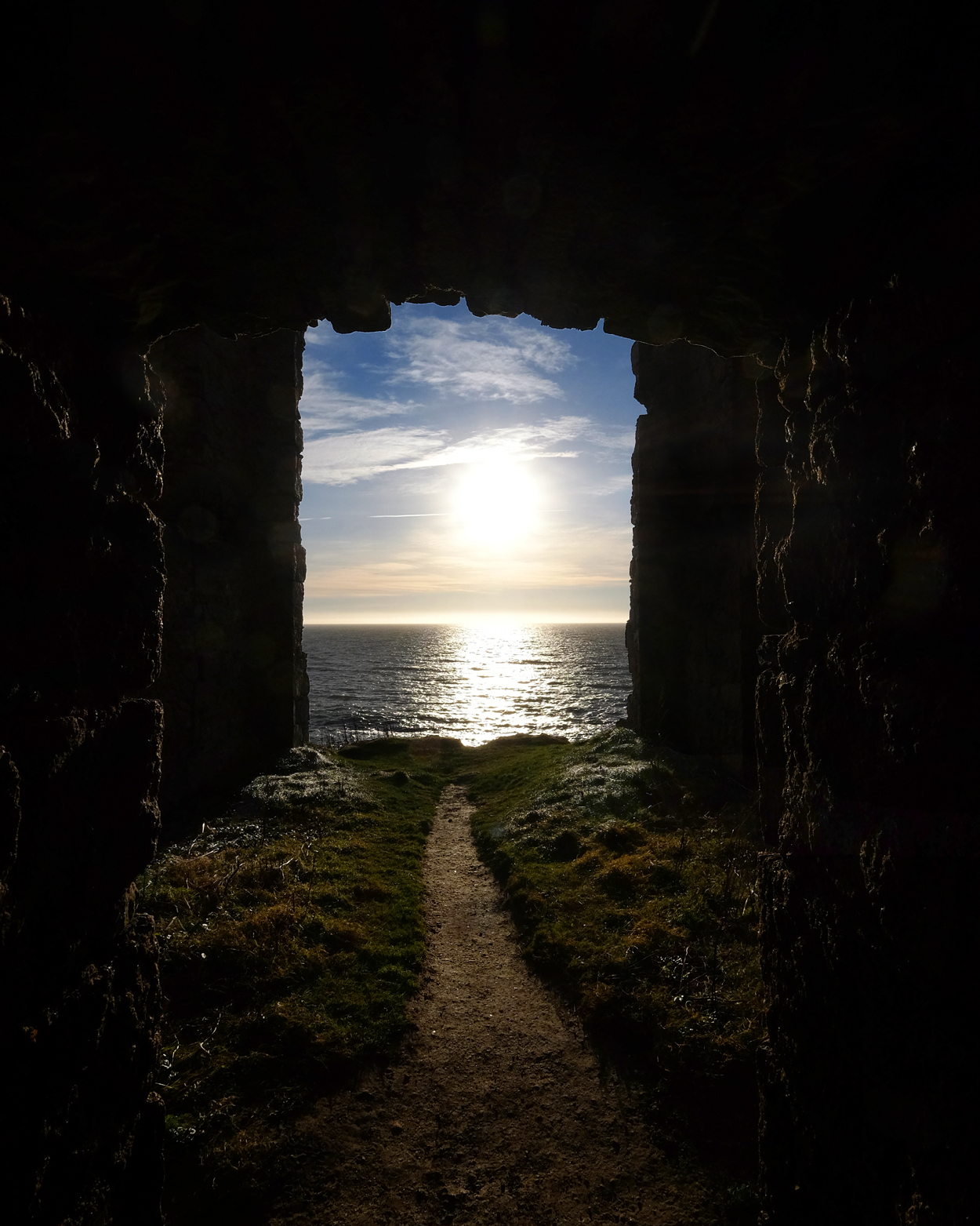 Some of the views from inside the castle ruins onto the North Sea were stunning.
Some of the views from inside the castle ruins onto the North Sea were stunning.
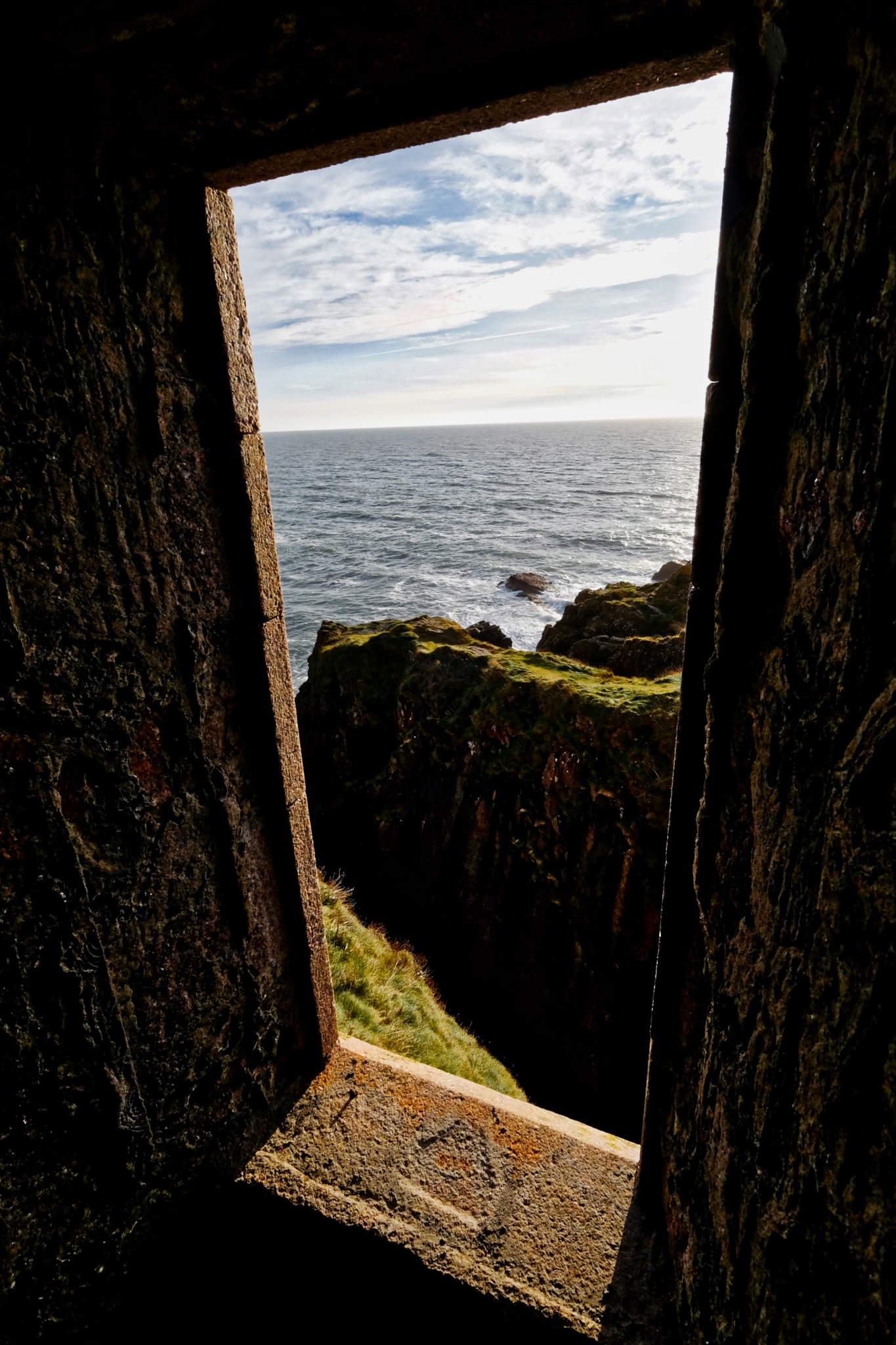 North Sea view from New Slaines Castle, Aberdeenshire, Scotland.
North Sea view from New Slaines Castle, Aberdeenshire, Scotland.
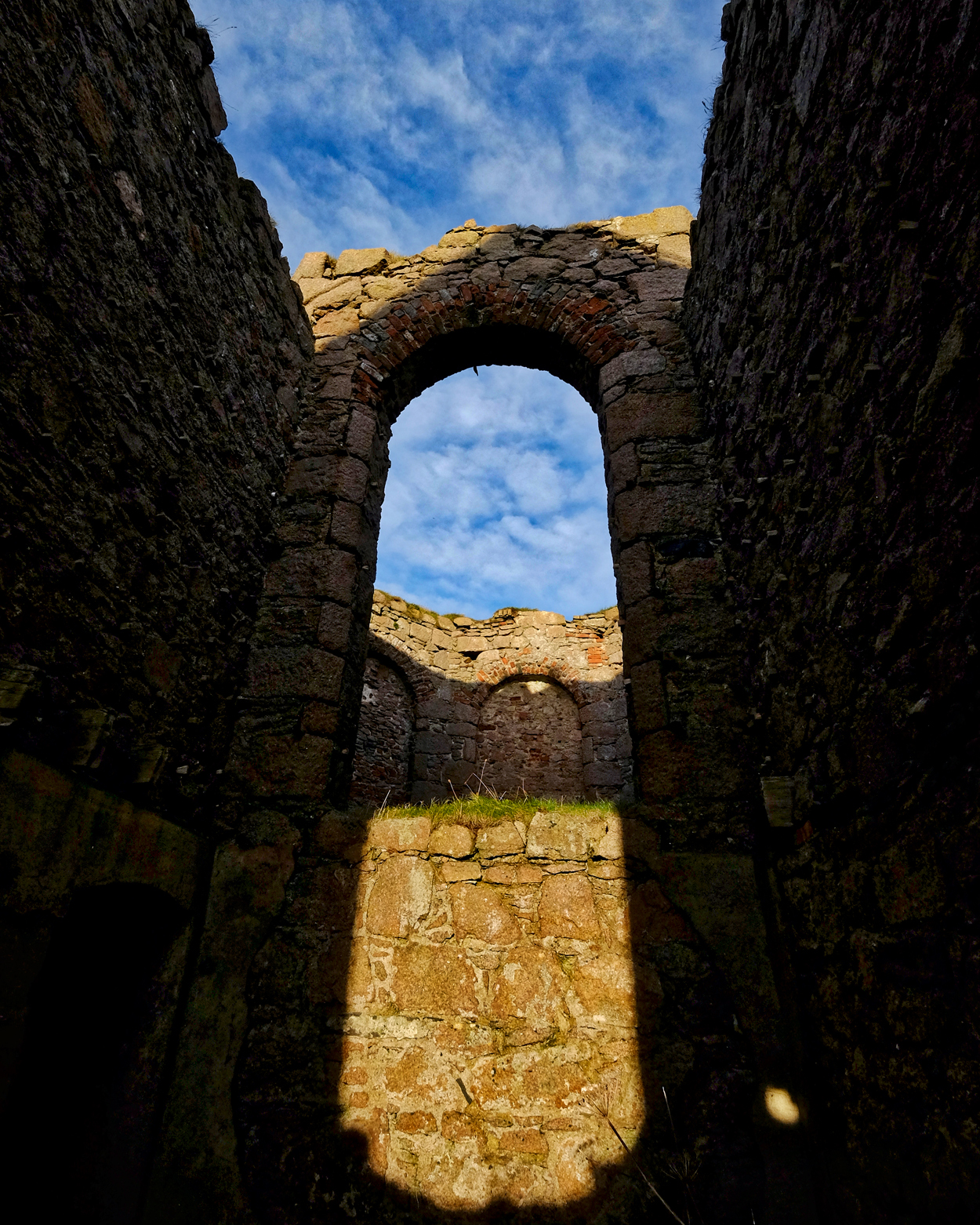 John and I spent several hours wandering around inside the ruins of New Slaines Castle enjoying the play of light and shadow on the deserted halls and rooms . . .
John and I spent several hours wandering around inside the ruins of New Slaines Castle enjoying the play of light and shadow on the deserted halls and rooms . . . 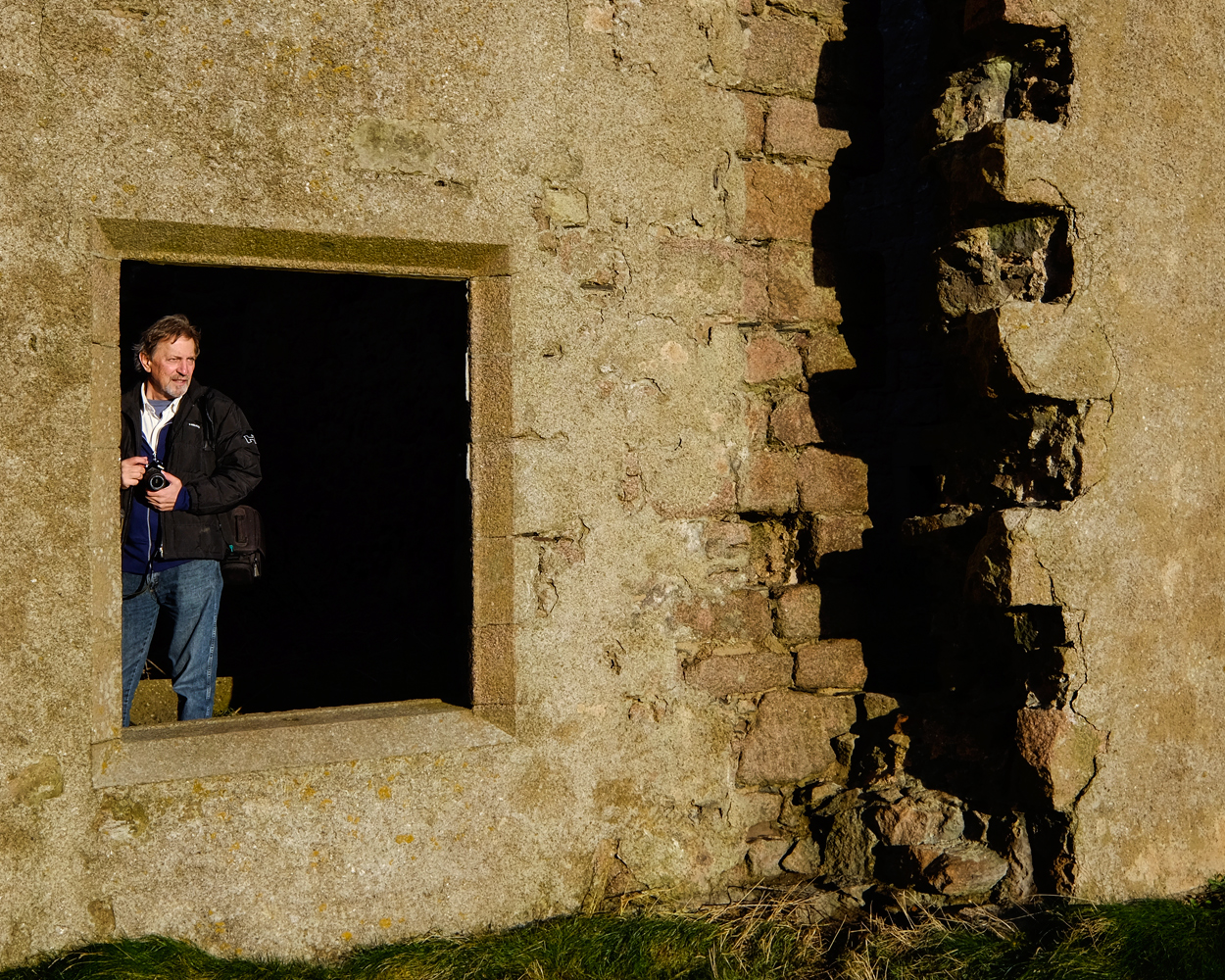 . . . as well as making portraits of each other among the ruins.
. . . as well as making portraits of each other among the ruins.
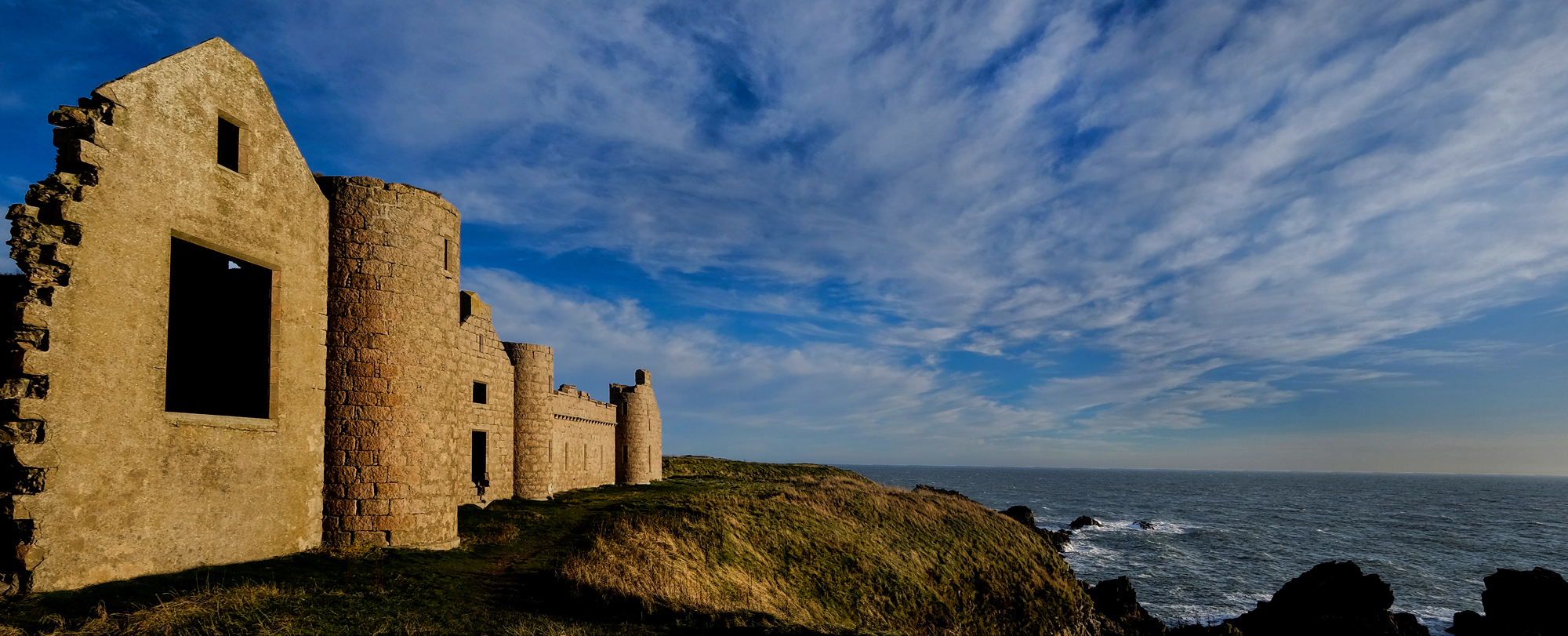 The castle on the North Sea cliffs, New Slaines.
The castle on the North Sea cliffs, New Slaines.
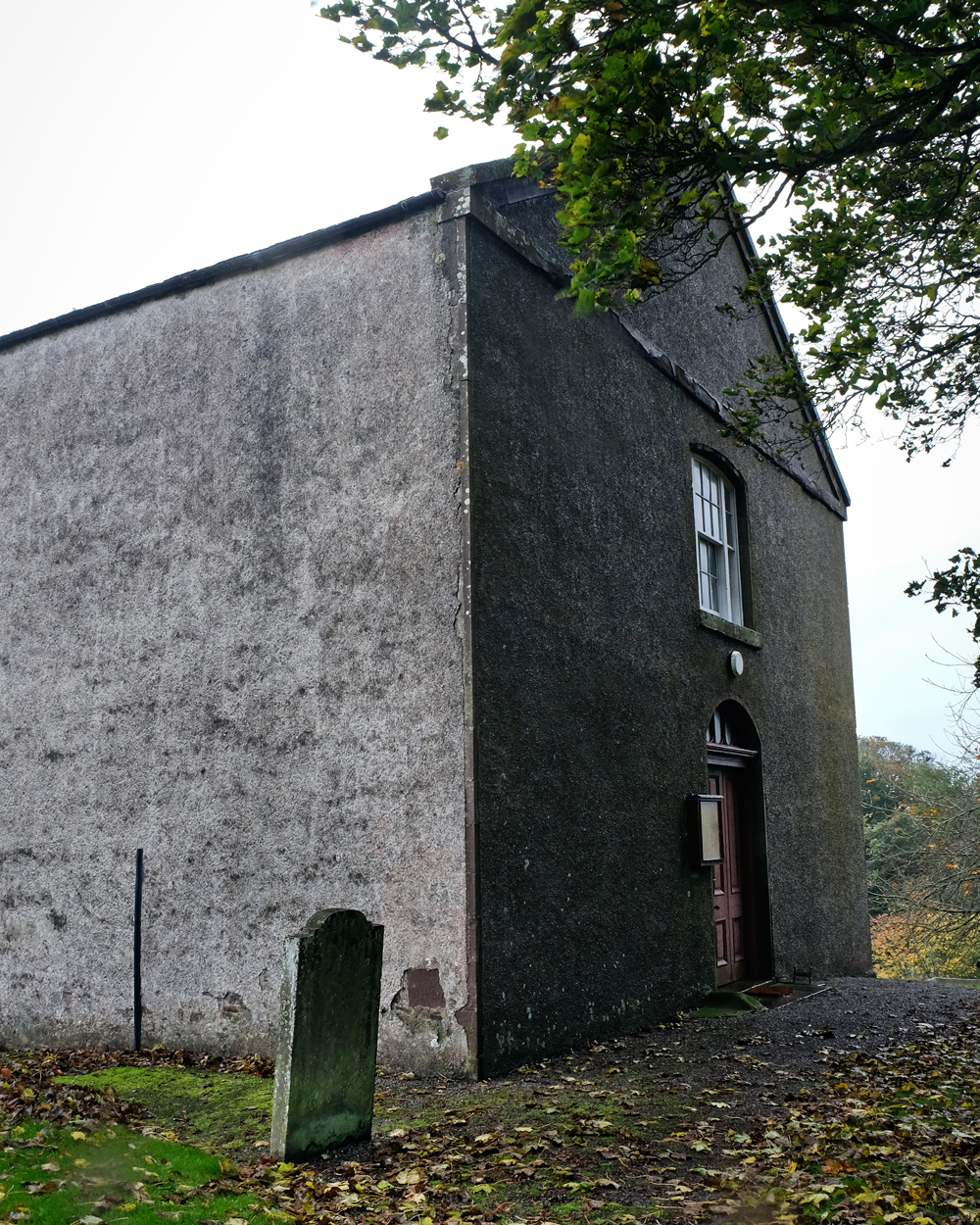 The Benholme Kirke, built on the site of a 9th century hermitage.
The Benholme Kirke, built on the site of a 9th century hermitage.
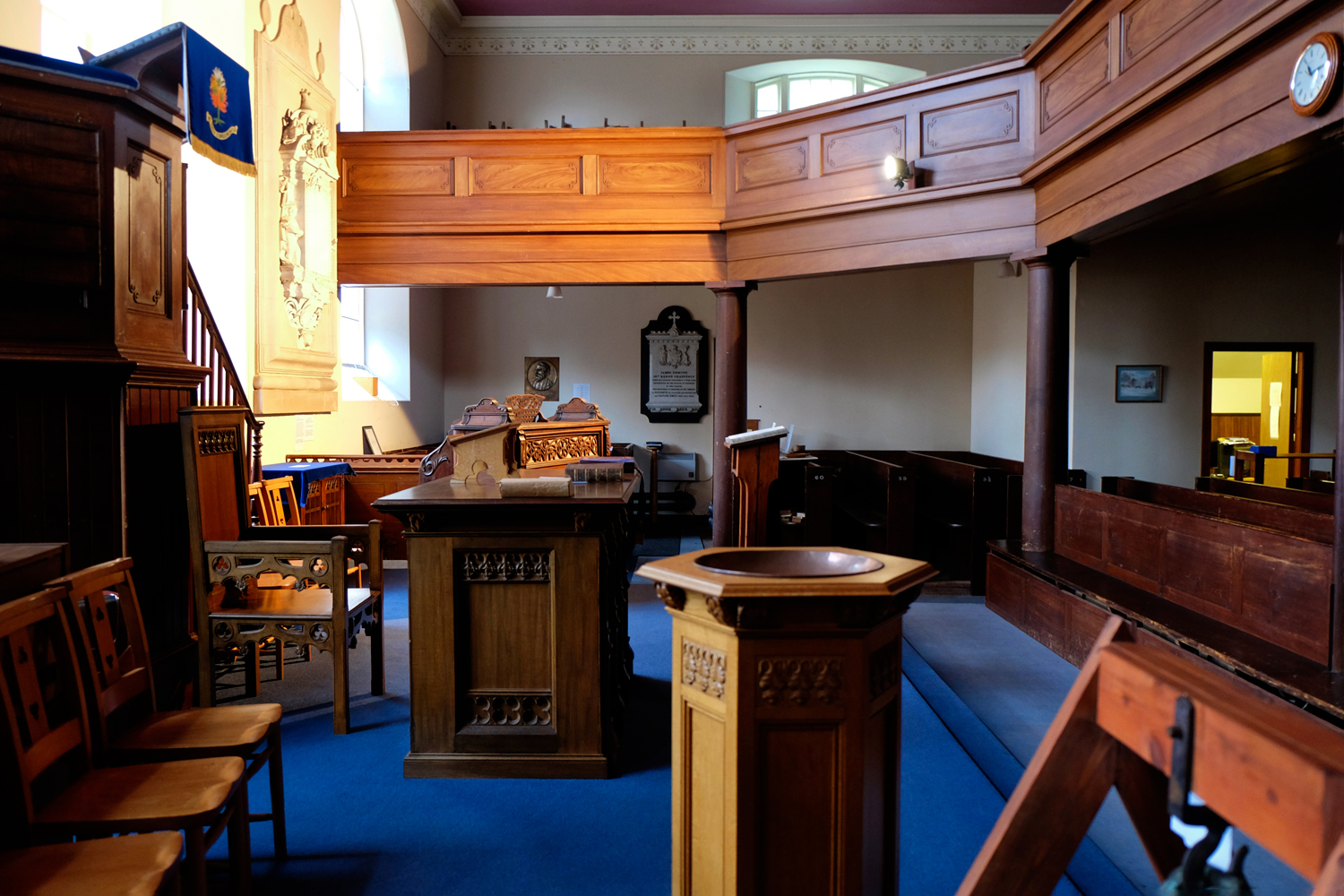 Although we interrupted the Benholm Kirke bookkeeper . . . but he obliged with a tour and short history of this interesting place.
Although we interrupted the Benholm Kirke bookkeeper . . . but he obliged with a tour and short history of this interesting place.
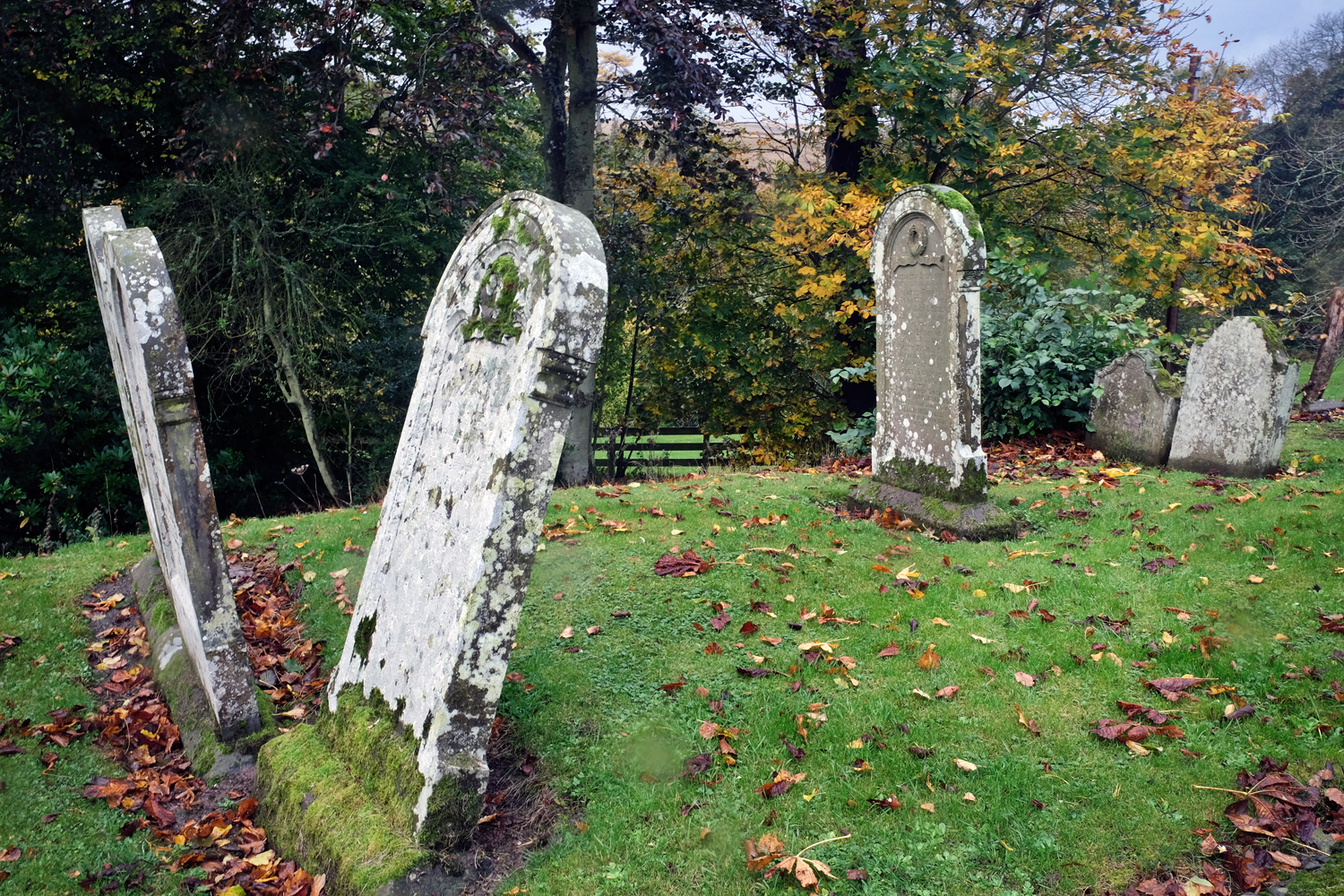 Benholm Kirke had a fine old 'kirkegaard' as well.
Benholm Kirke had a fine old 'kirkegaard' as well.
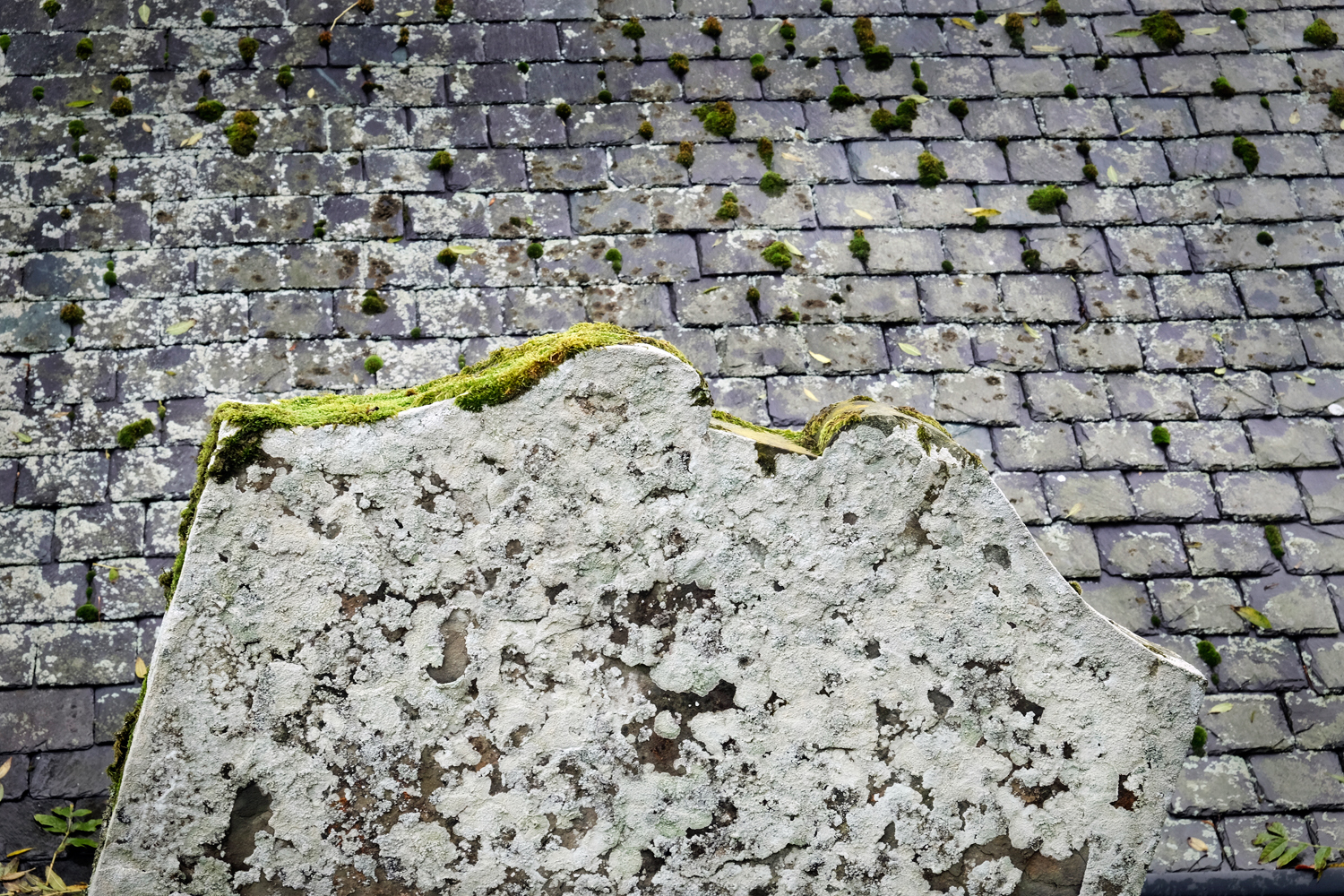 Moss and lichen-covered grave stone and ancient cottage slate roof . . .
Moss and lichen-covered grave stone and ancient cottage slate roof . . .
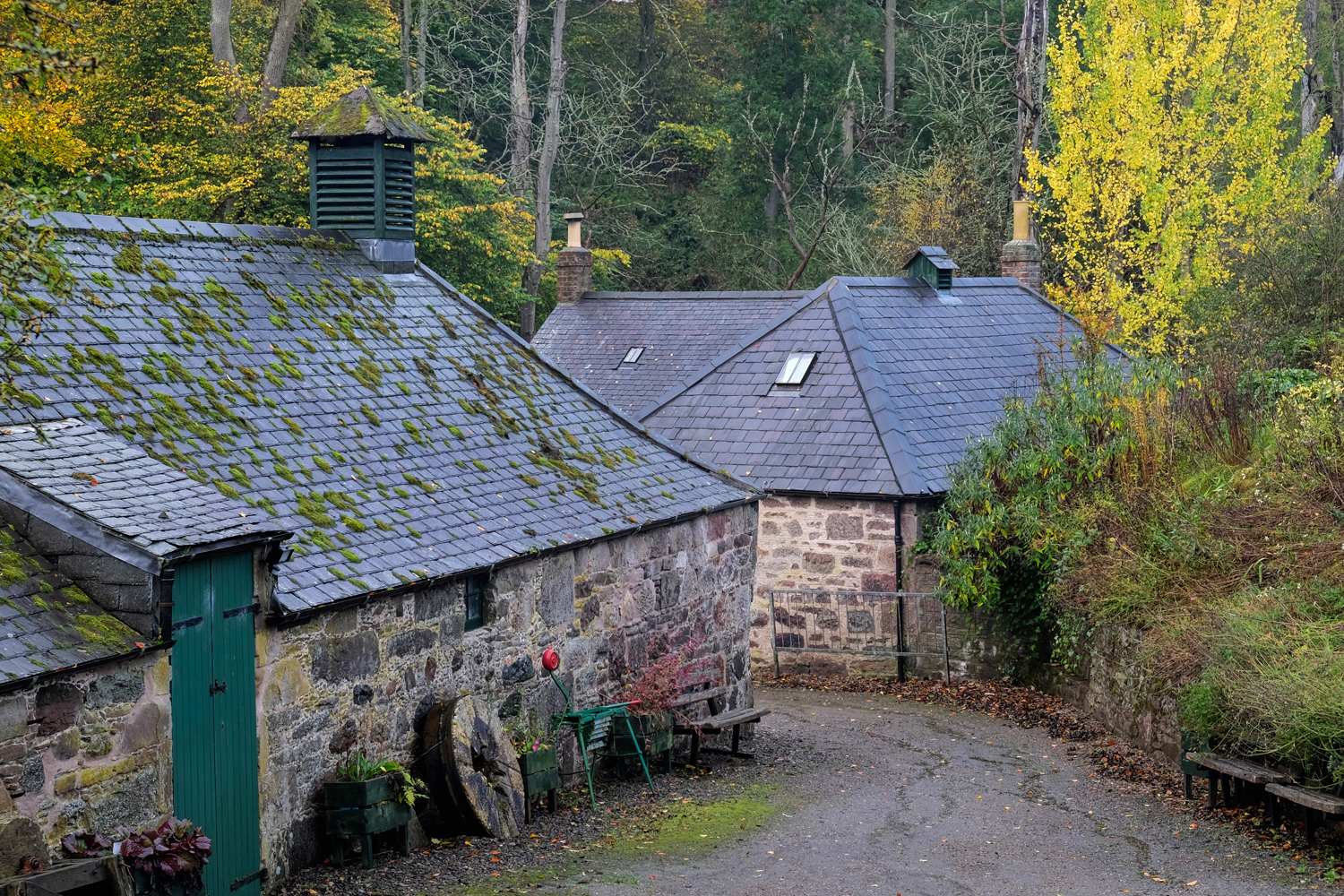 We sometimes consulted the GPS as to any 'points of interest' . . . and discovered this old mill.
We sometimes consulted the GPS as to any 'points of interest' . . . and discovered this old mill.
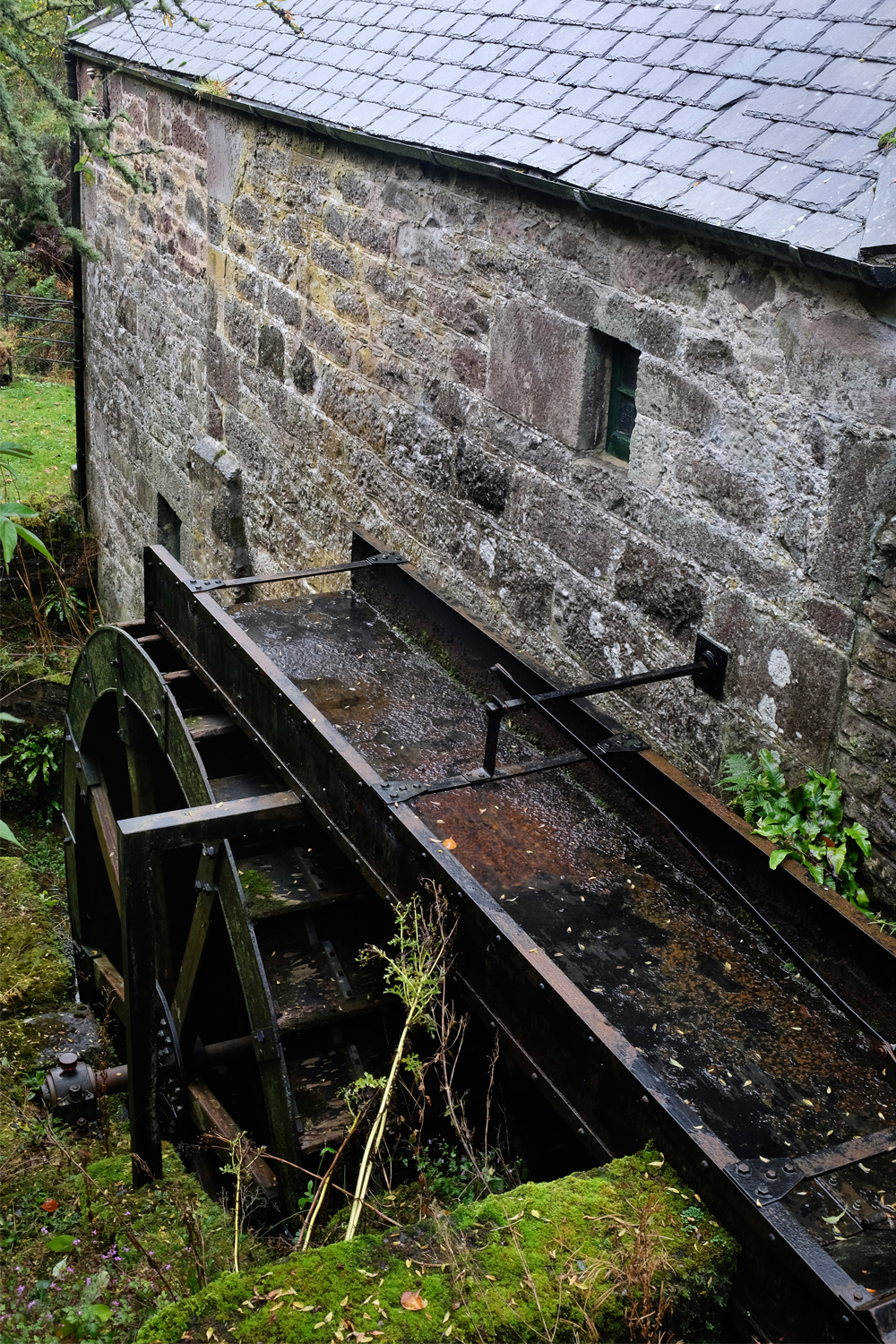 The sluice and water wheel were still there and still intact.
The sluice and water wheel were still there and still intact.
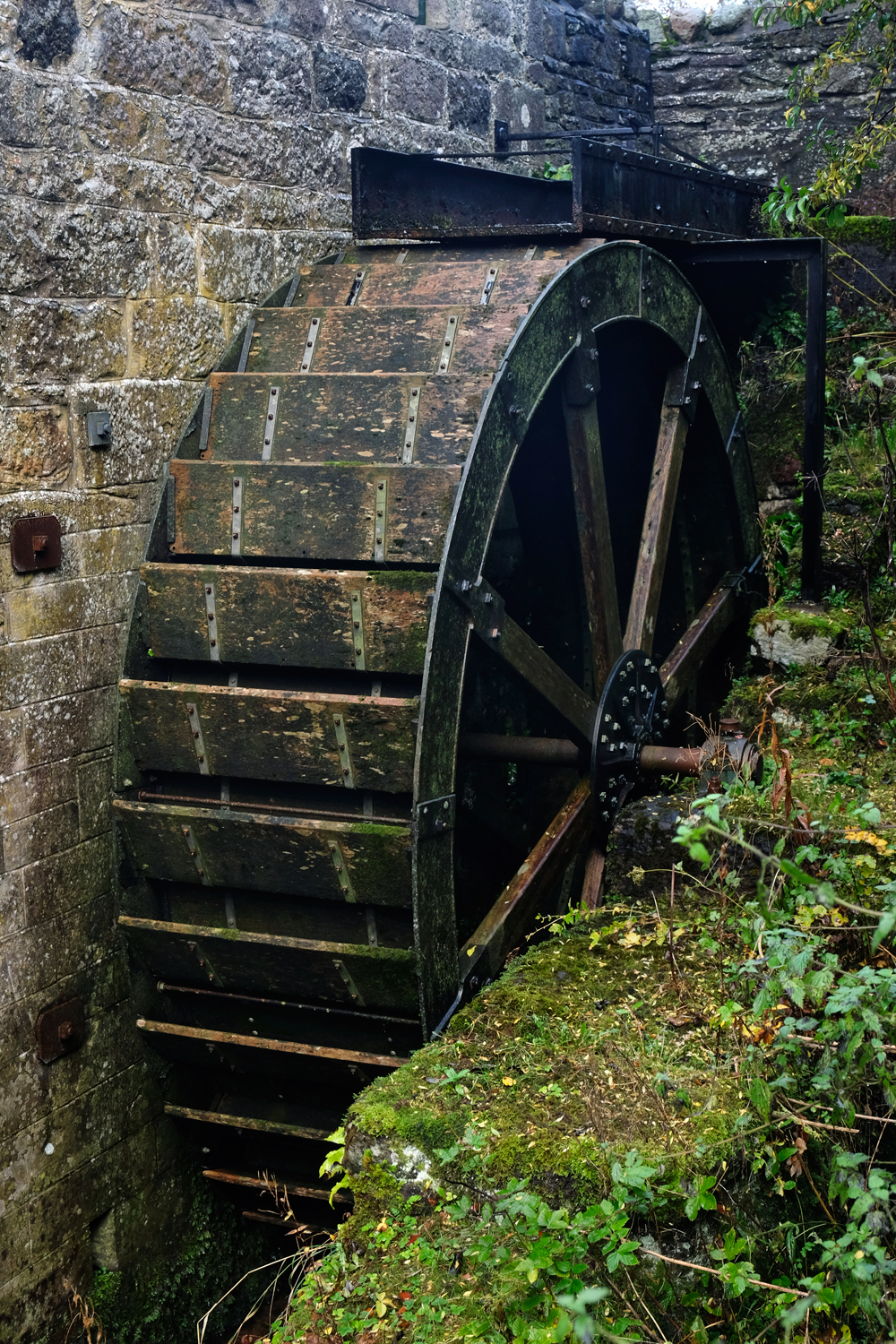 Down by the Old Mill Stream . . . A photographer's dream!
Down by the Old Mill Stream . . . A photographer's dream!
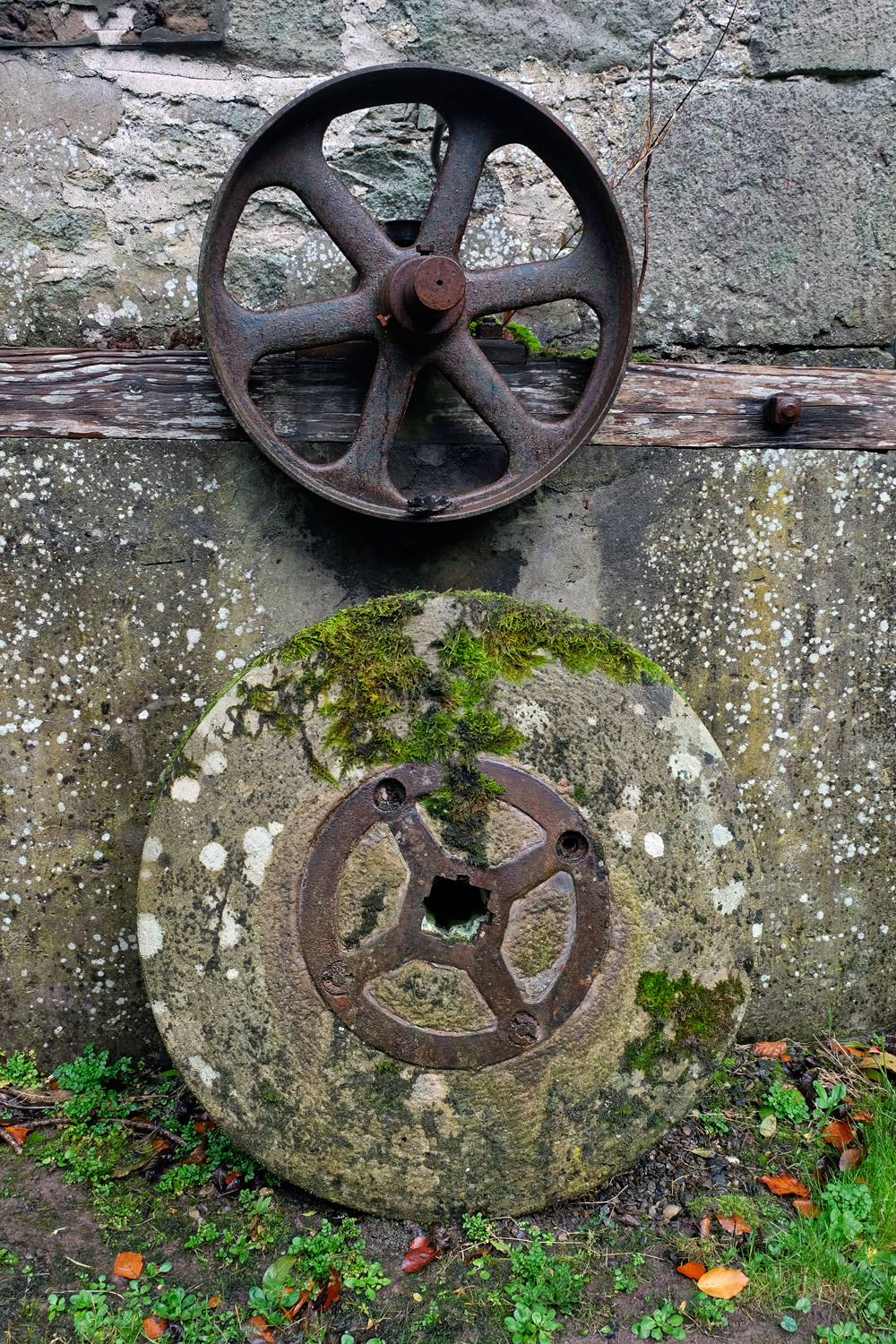 The opportunities for still life studies of mill paraphernalia was incredible. I enter only a few of the many beautiful photographs I took here.
The opportunities for still life studies of mill paraphernalia was incredible. I enter only a few of the many beautiful photographs I took here.
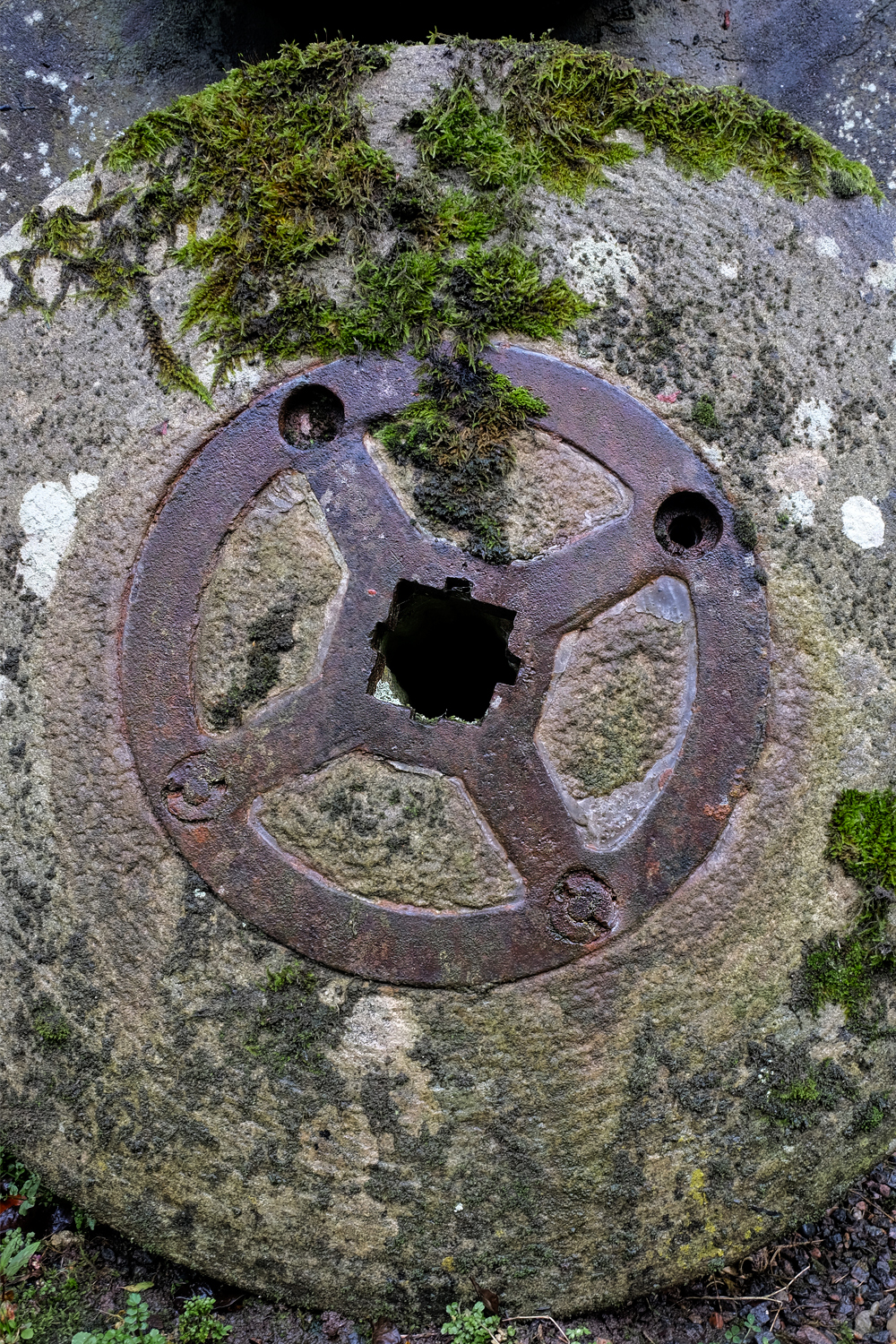 An old mill stone.
An old mill stone.
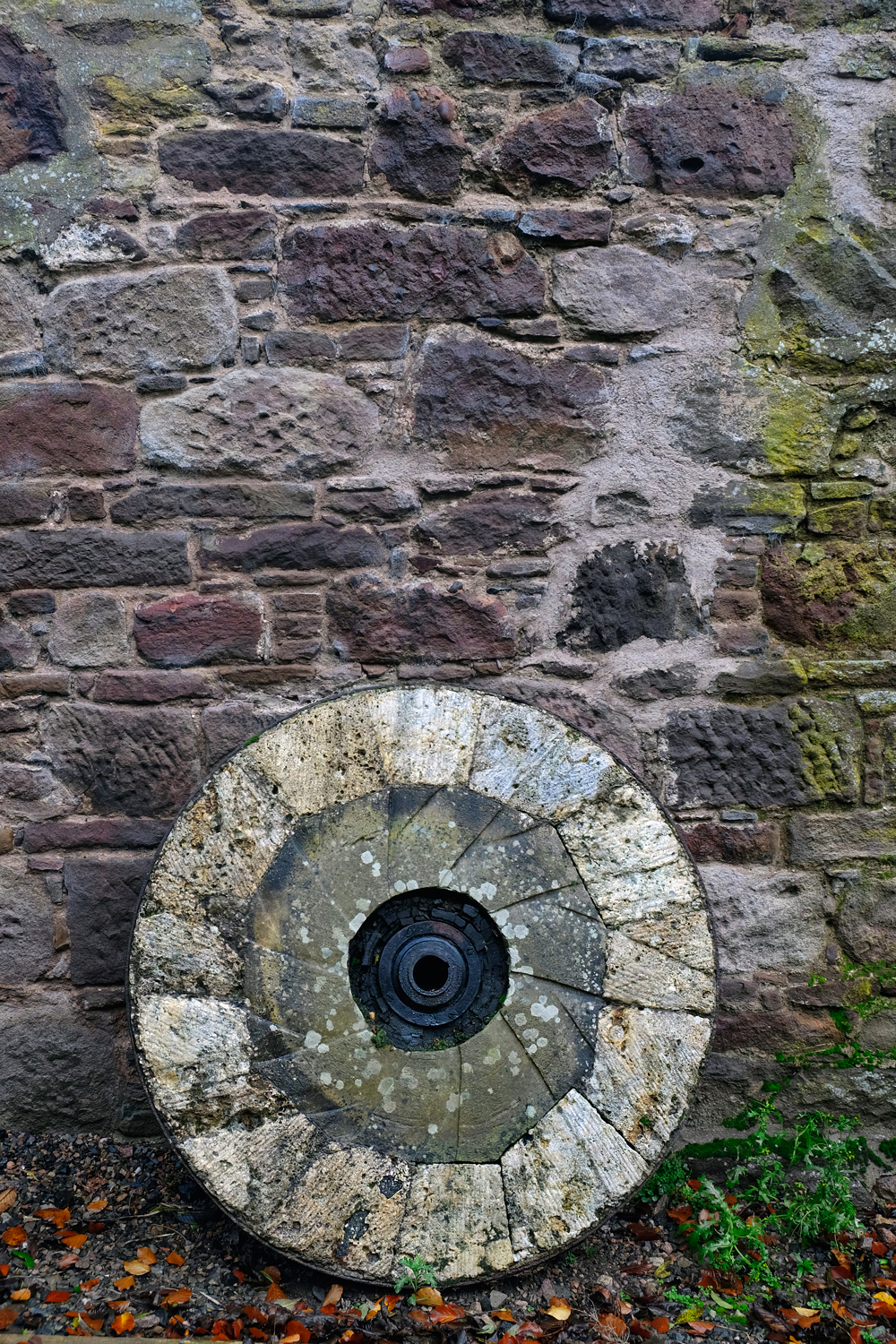 An old mill stone made of several stone segments.
An old mill stone made of several stone segments.
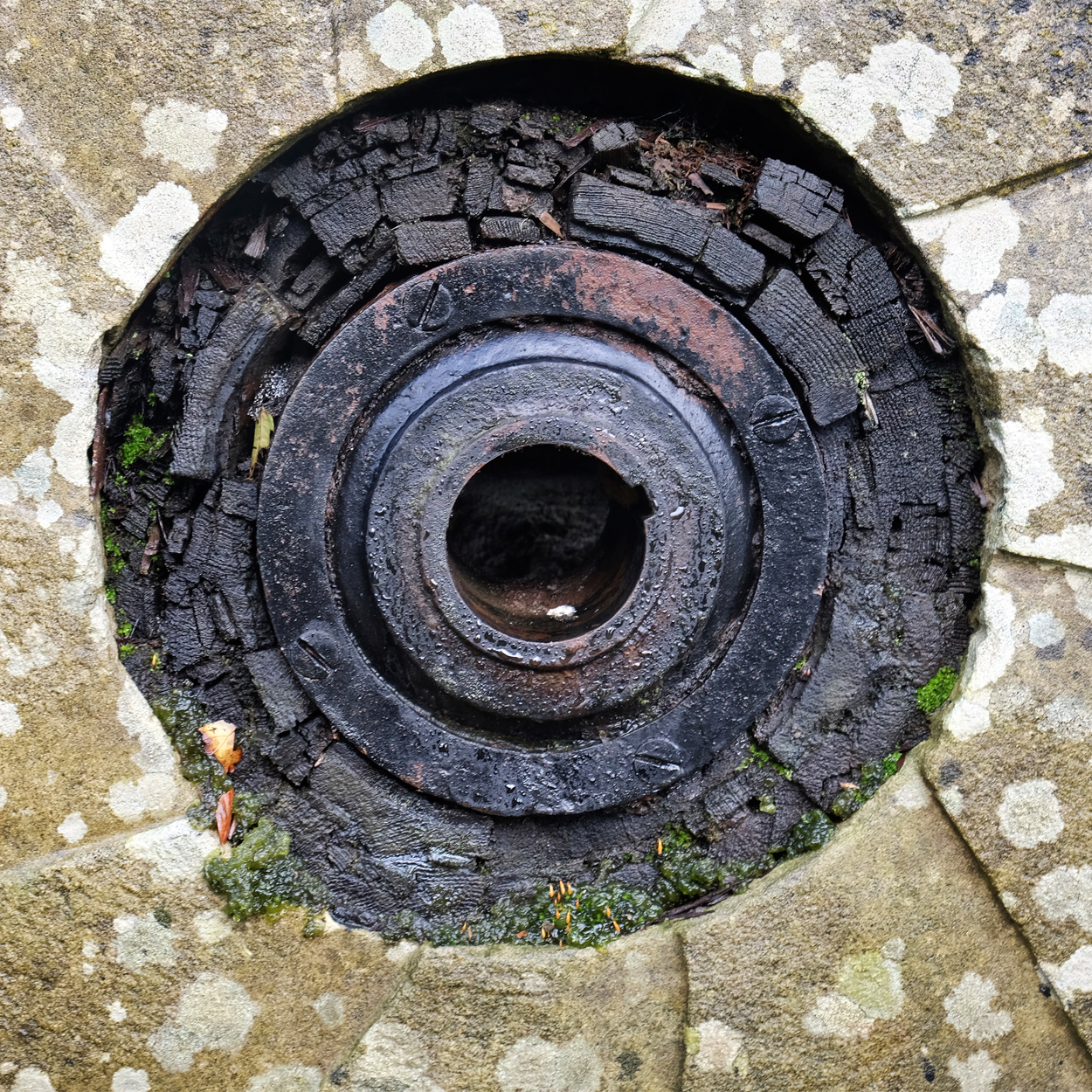 The wood-shimed center bearing of an old mill stone.
The wood-shimed center bearing of an old mill stone.
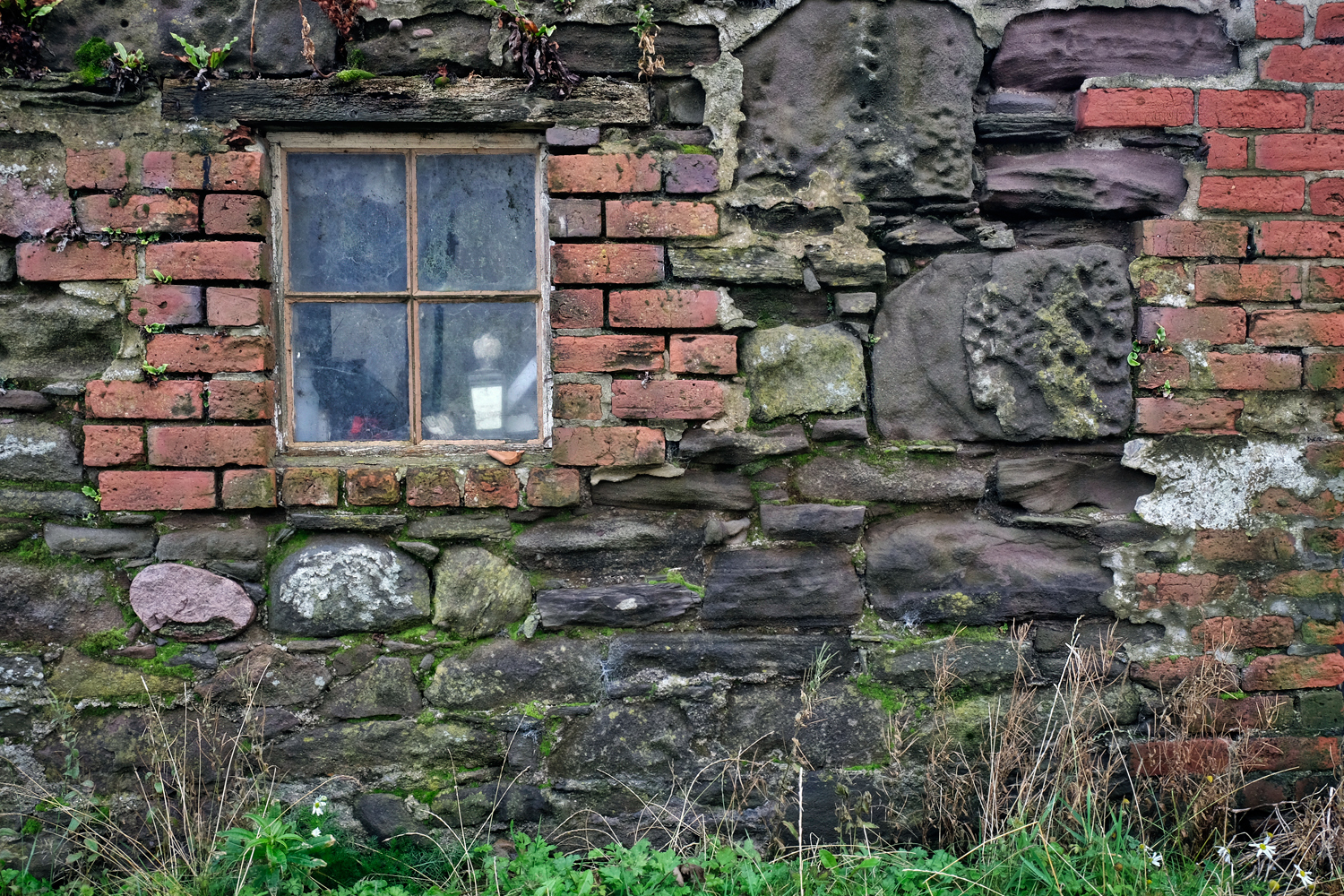 One morning we drove south on the old coastal road to the fishing village of Johnshaven.
One morning we drove south on the old coastal road to the fishing village of Johnshaven.
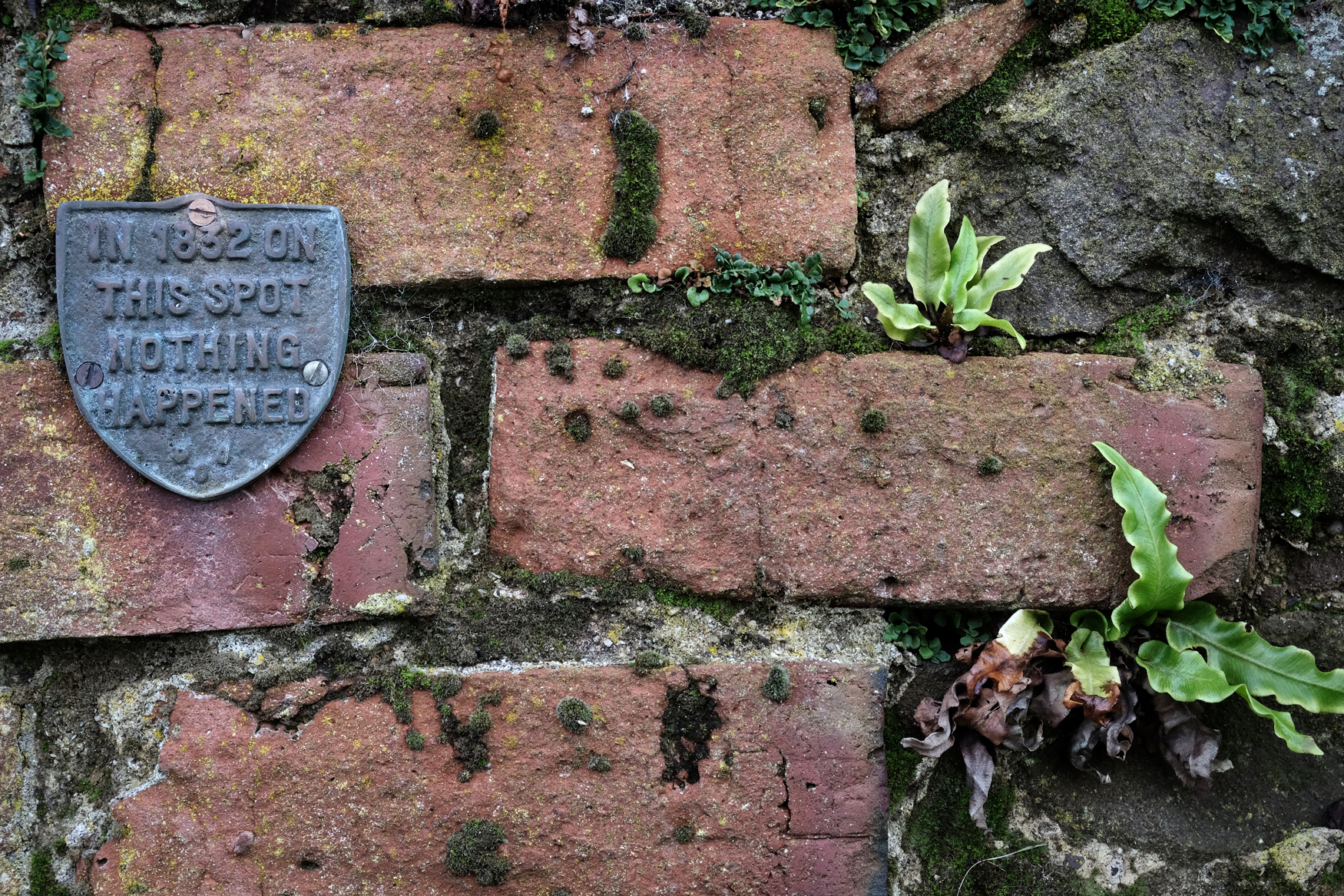 The Johnshaven townsfolk had quite the sense of humor!
The Johnshaven townsfolk had quite the sense of humor!
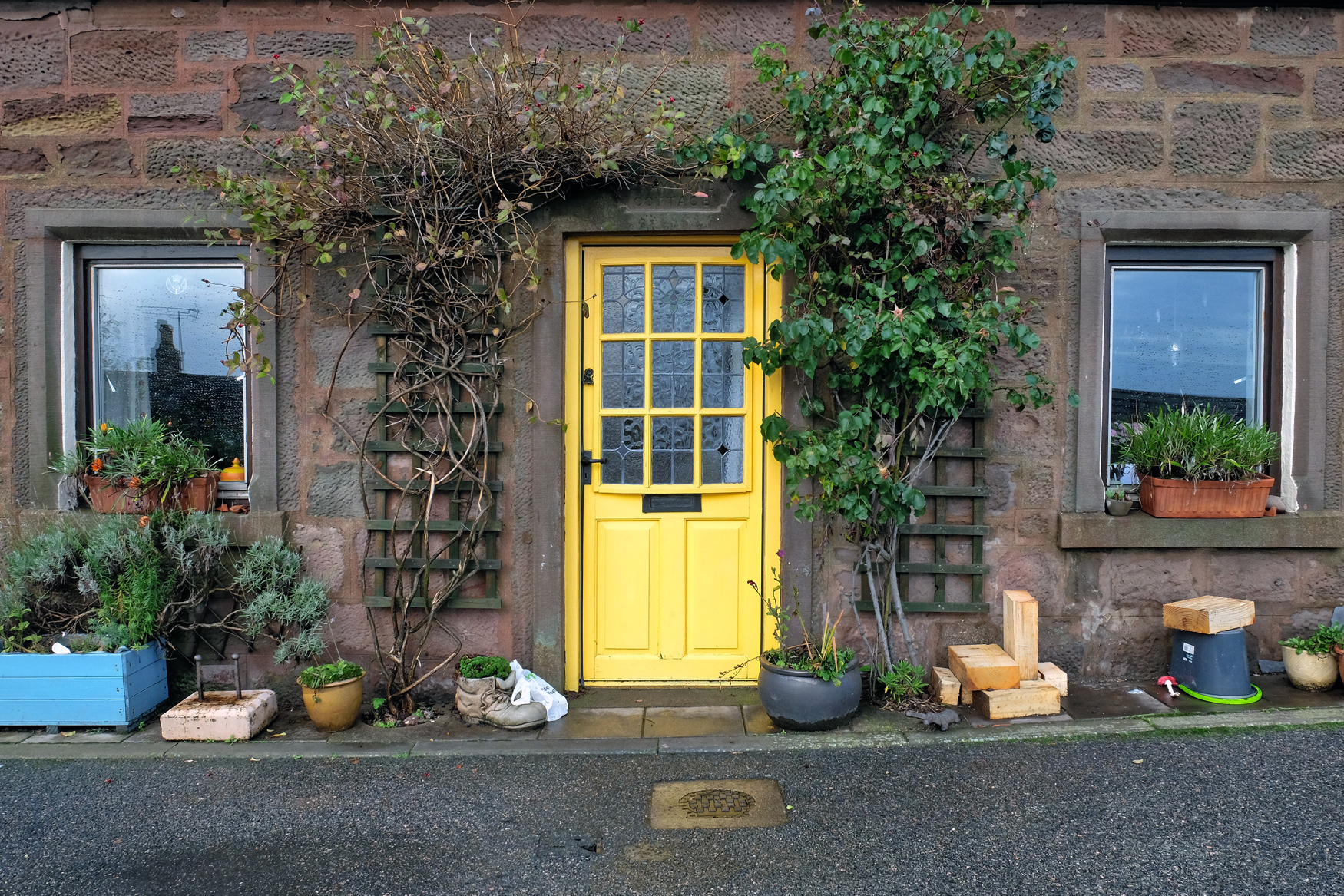 Johnshaven was a grey and austere village (like many Scottish villages) but with a splash of color here and there.
Johnshaven was a grey and austere village (like many Scottish villages) but with a splash of color here and there.
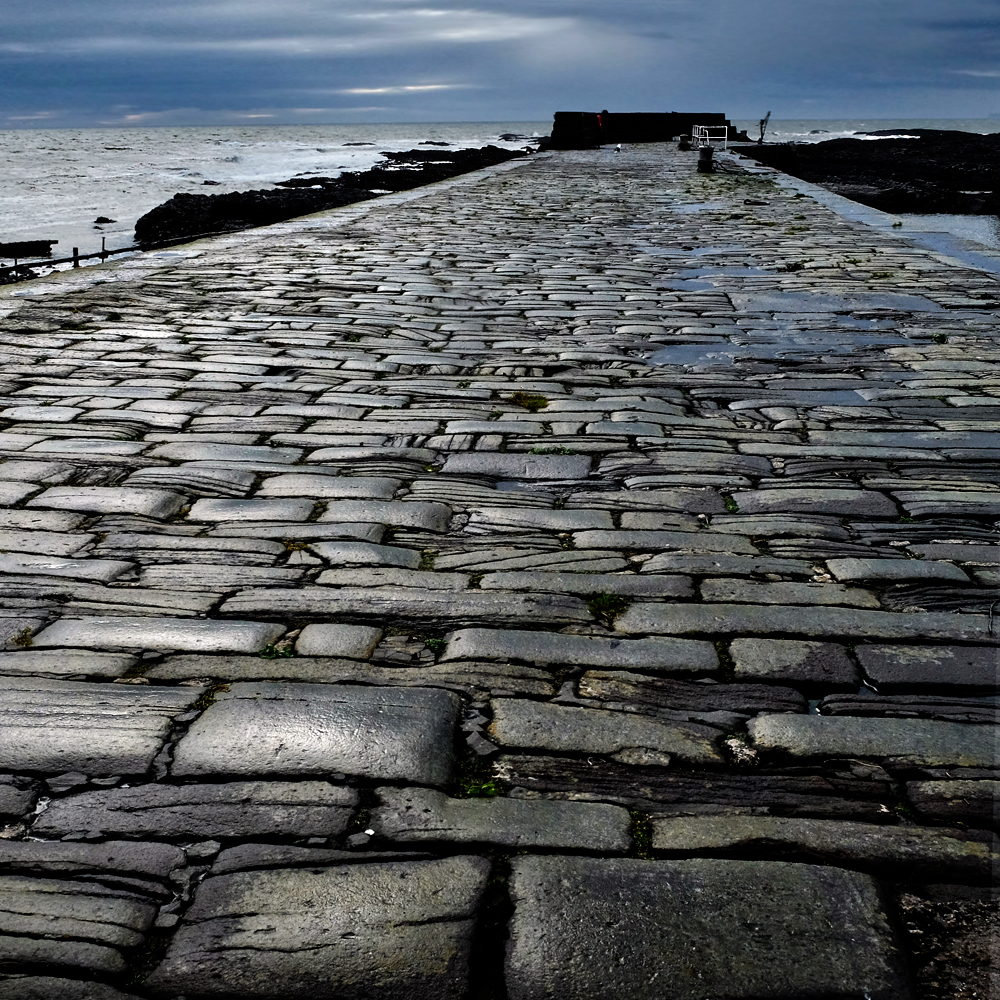 The fine old stone harbour jetty of Johnshaven.
The fine old stone harbour jetty of Johnshaven.
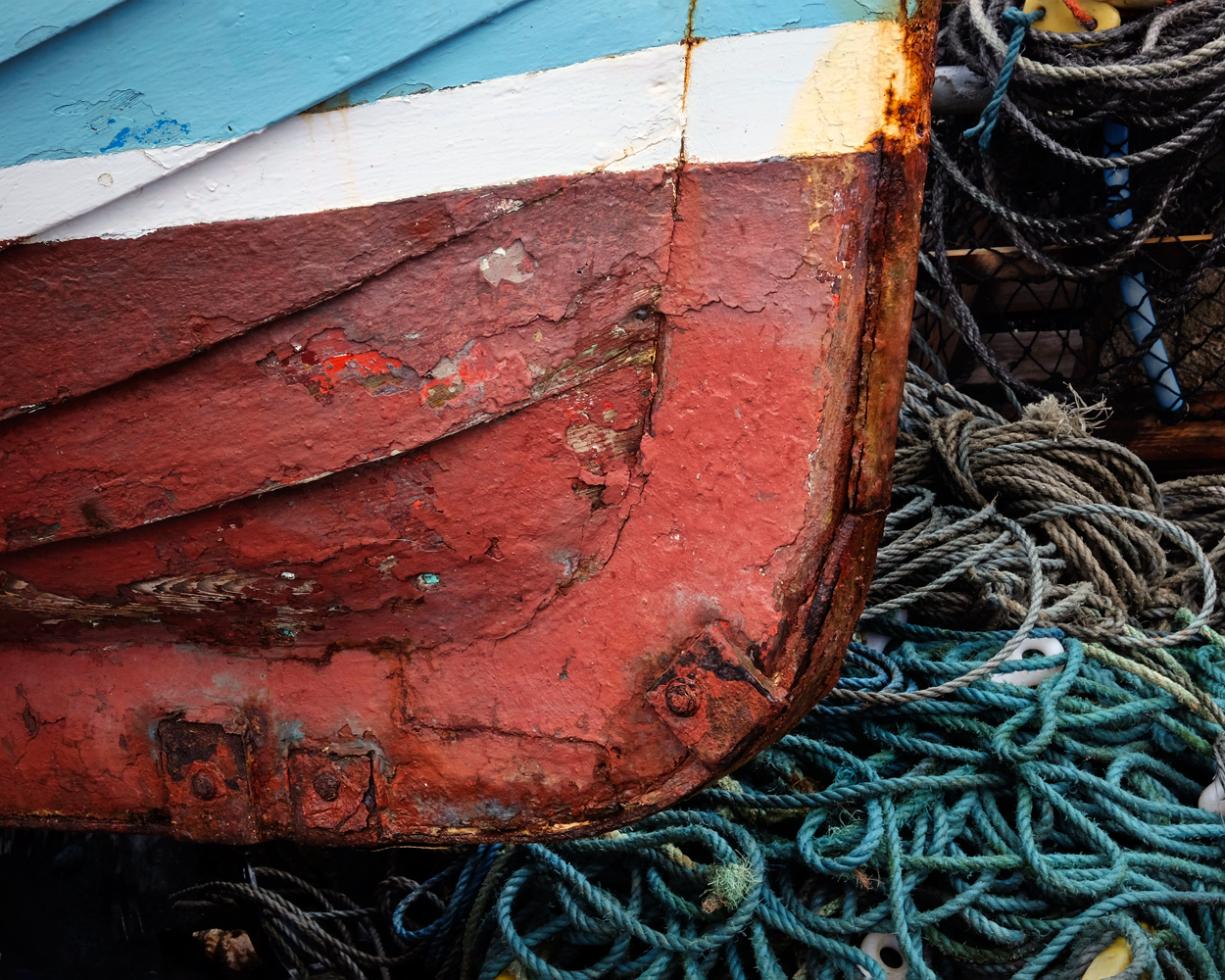 Johnshaven is a fishing village with many great nautical-themed photos to be had.
Johnshaven is a fishing village with many great nautical-themed photos to be had.
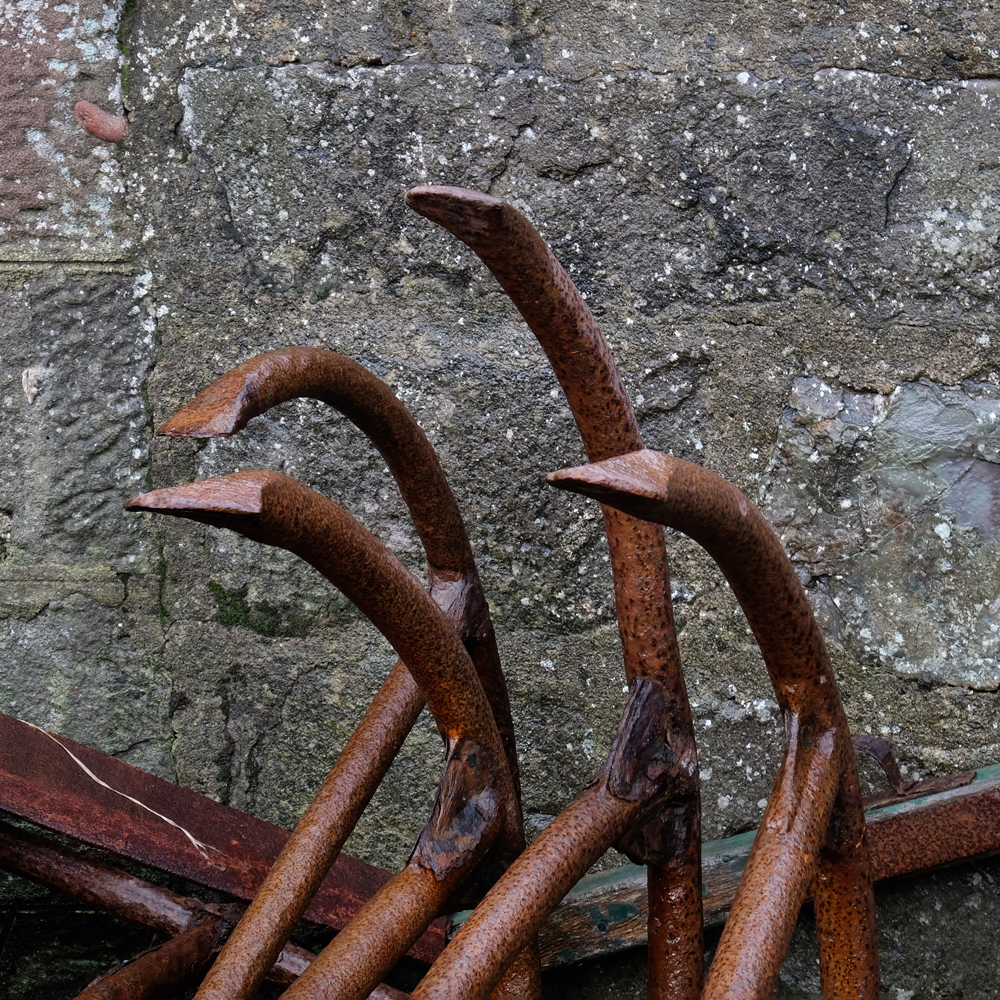 Old anchors in the boatyards.
Old anchors in the boatyards.
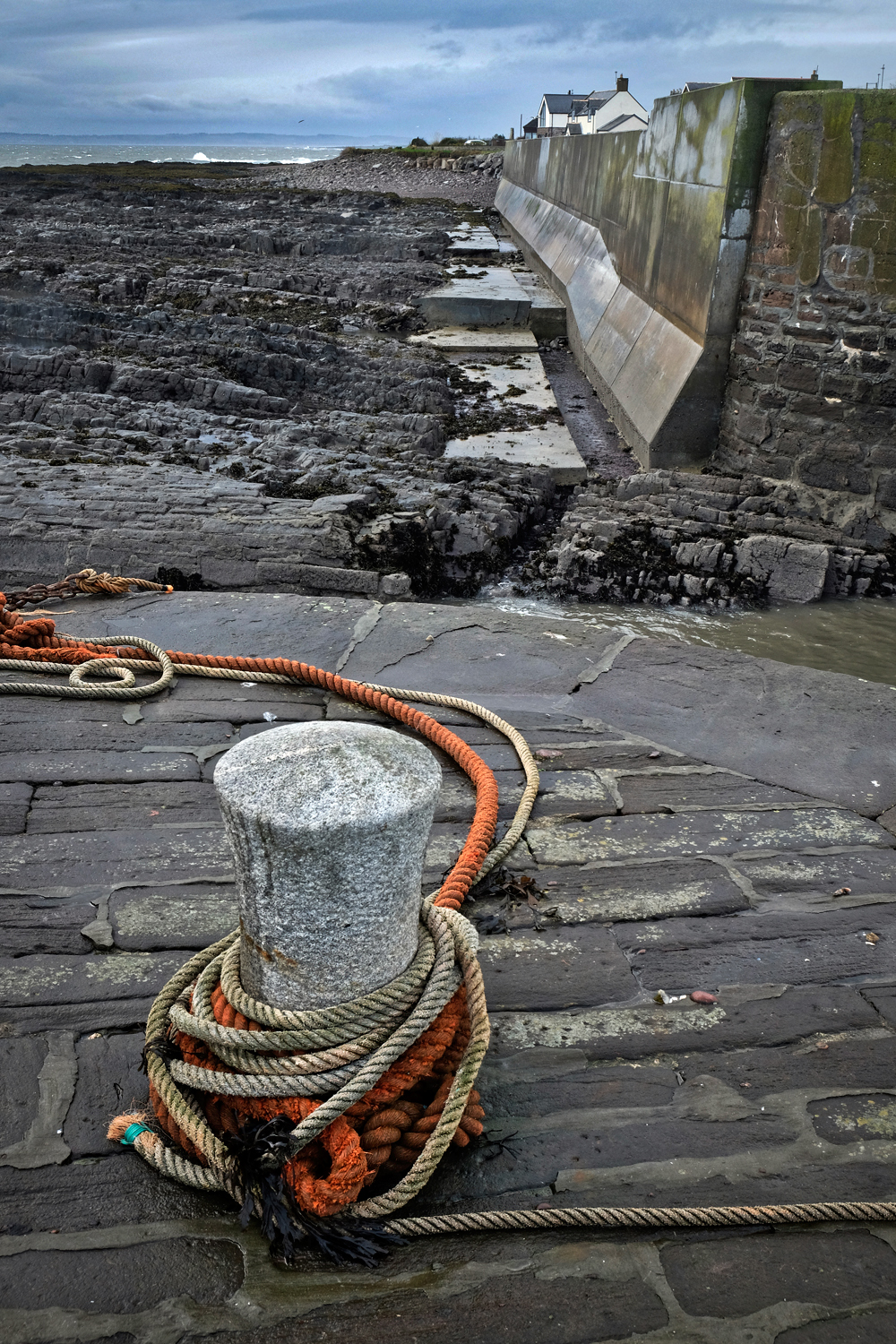 Low tide along the Johnshaven sea wall.
Low tide along the Johnshaven sea wall.
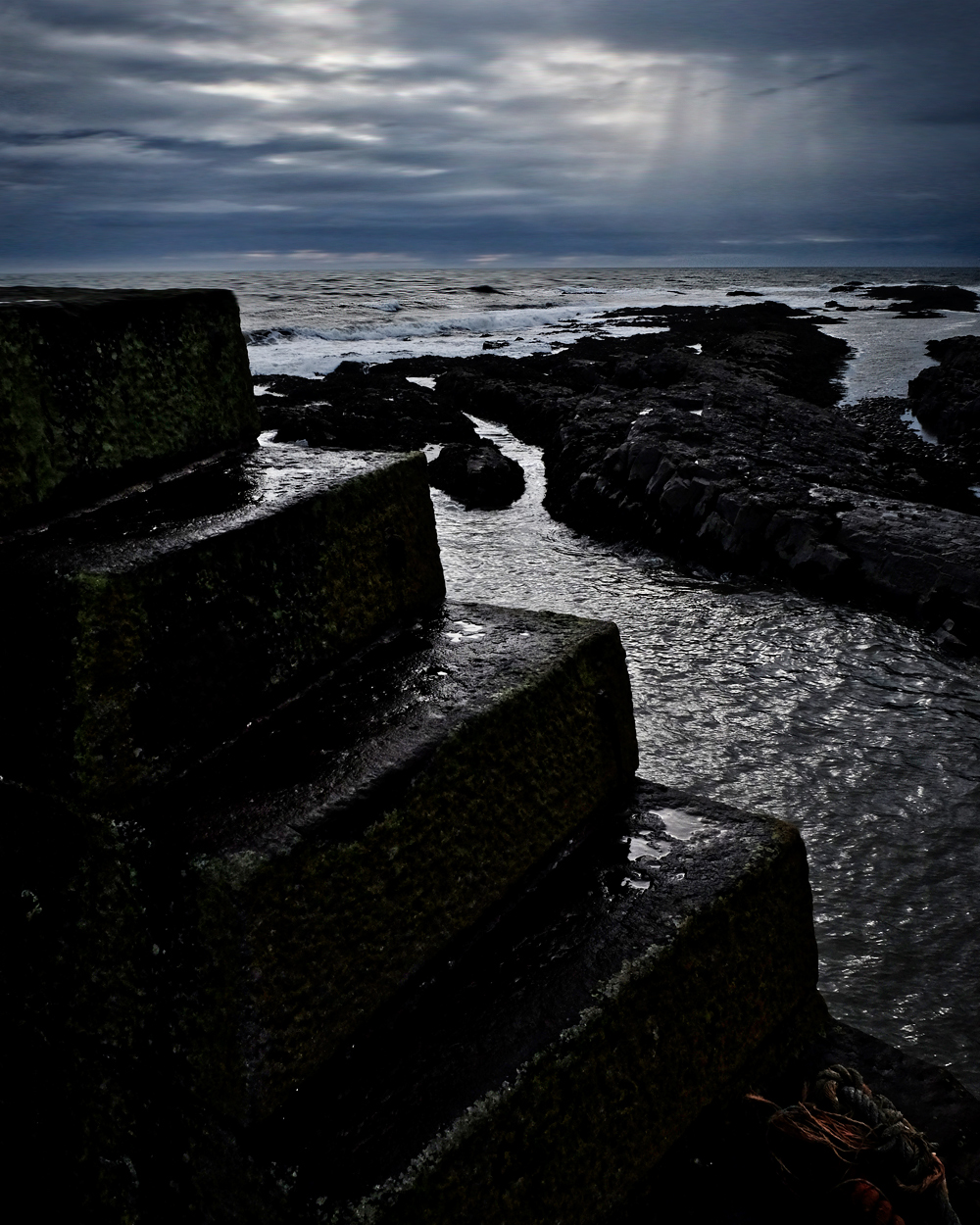 The only bad weather we saw during three days. A stormy North Sea.
The only bad weather we saw during three days. A stormy North Sea.
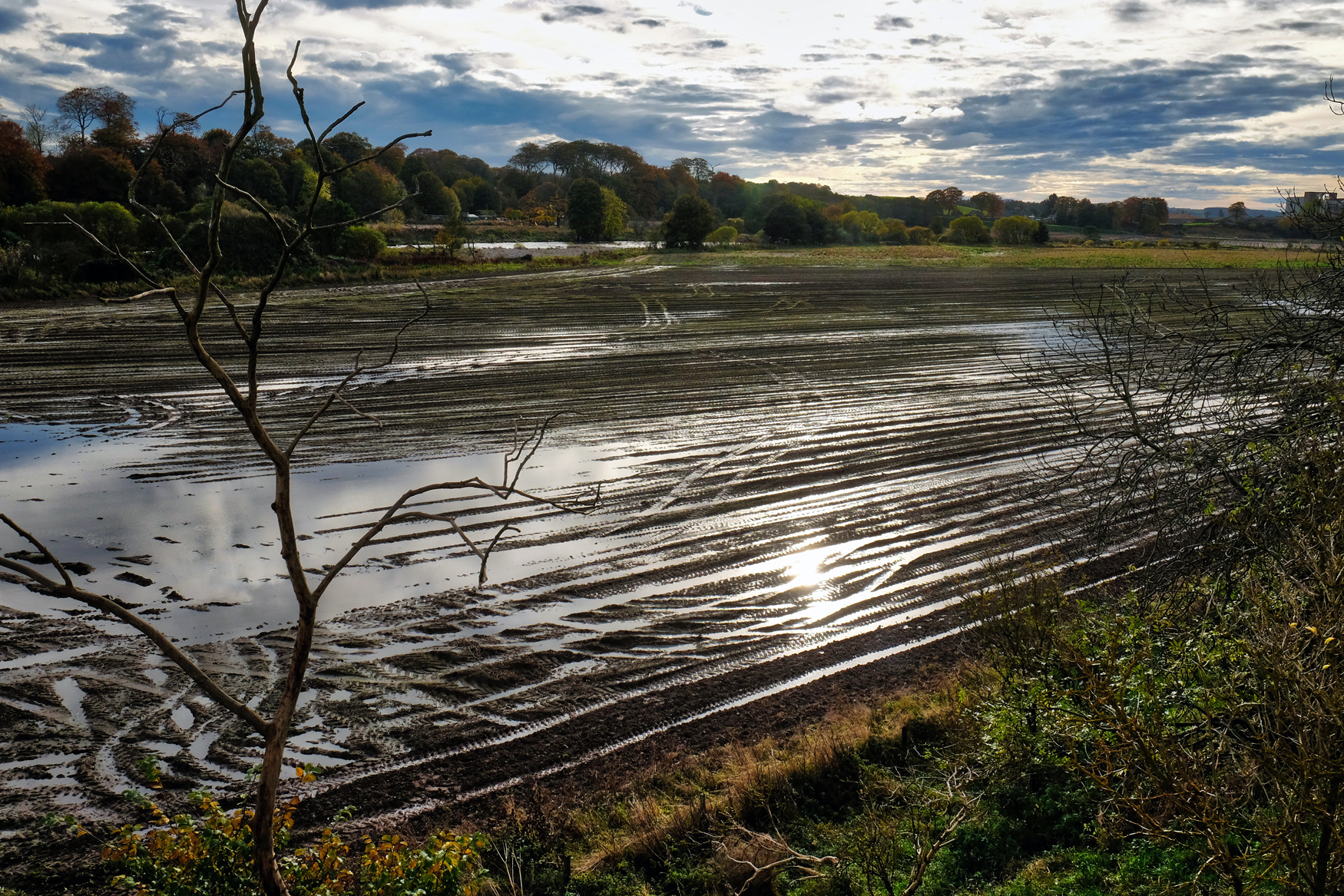 Near Montrose there were signs of a recent flood of the River Esk.
Near Montrose there were signs of a recent flood of the River Esk.
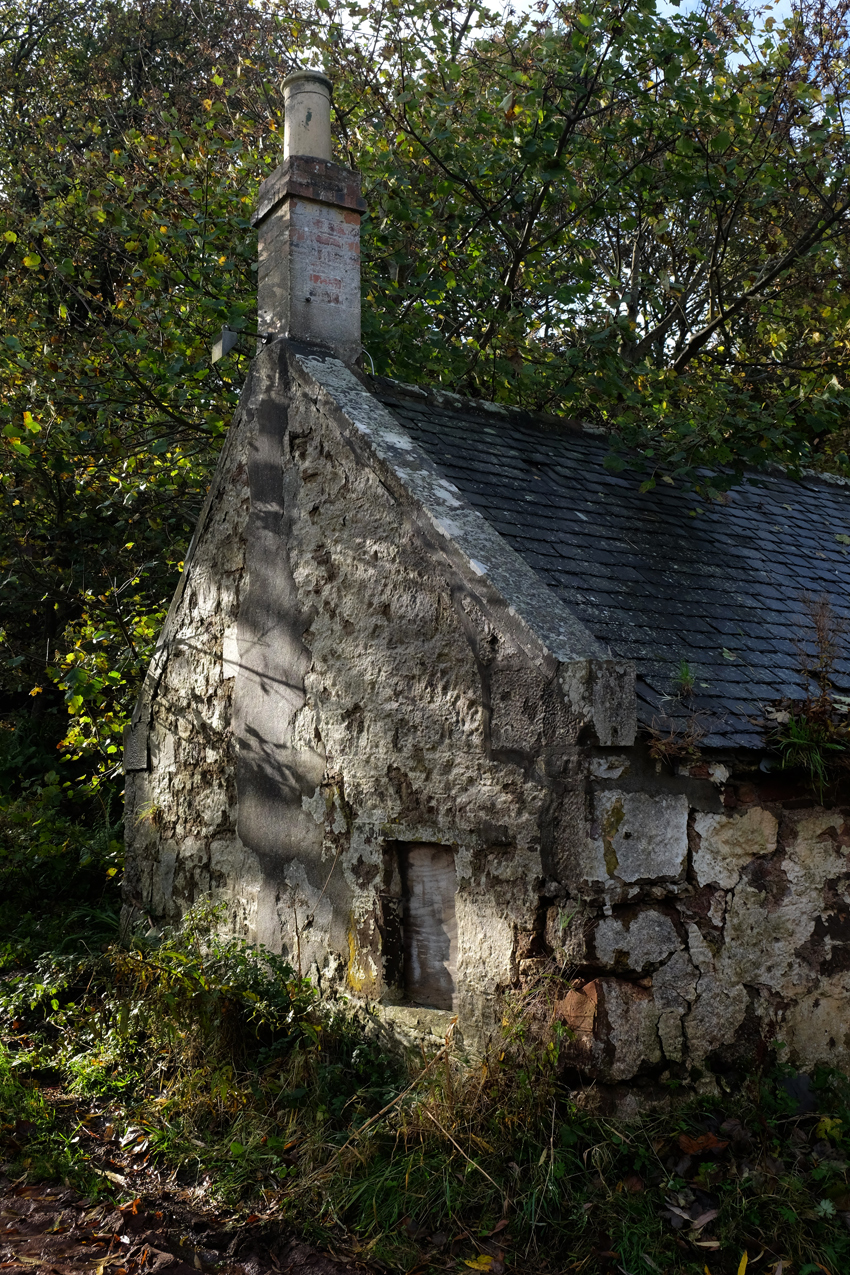 Whenever we would see magic light on an old stone building we would stop and take photographs.
Whenever we would see magic light on an old stone building we would stop and take photographs.
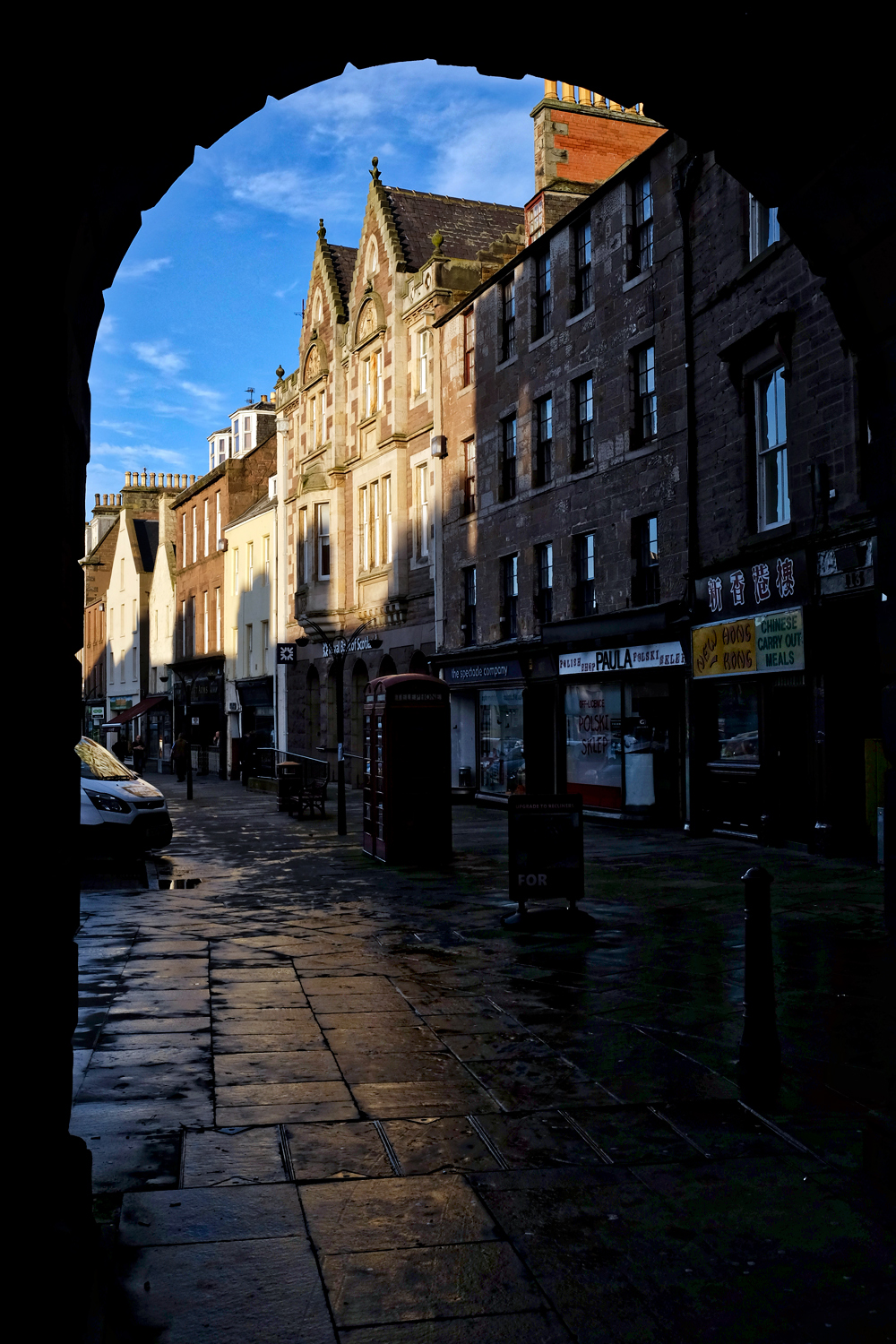 We stopped for coffee one late afternoon in the old market town of Montrose.
We stopped for coffee one late afternoon in the old market town of Montrose.
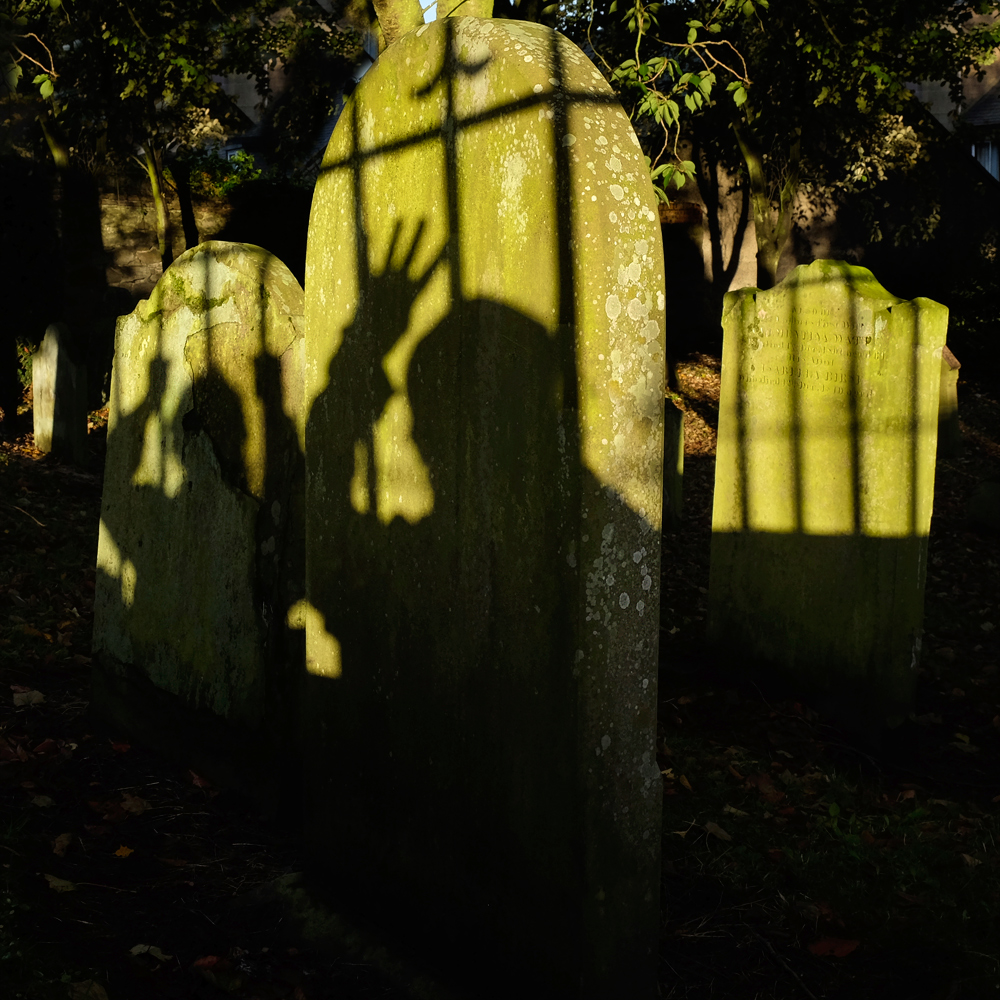 Yes, more ghoulish fun . . . in the Montrose Cemetery.
Yes, more ghoulish fun . . . in the Montrose Cemetery.
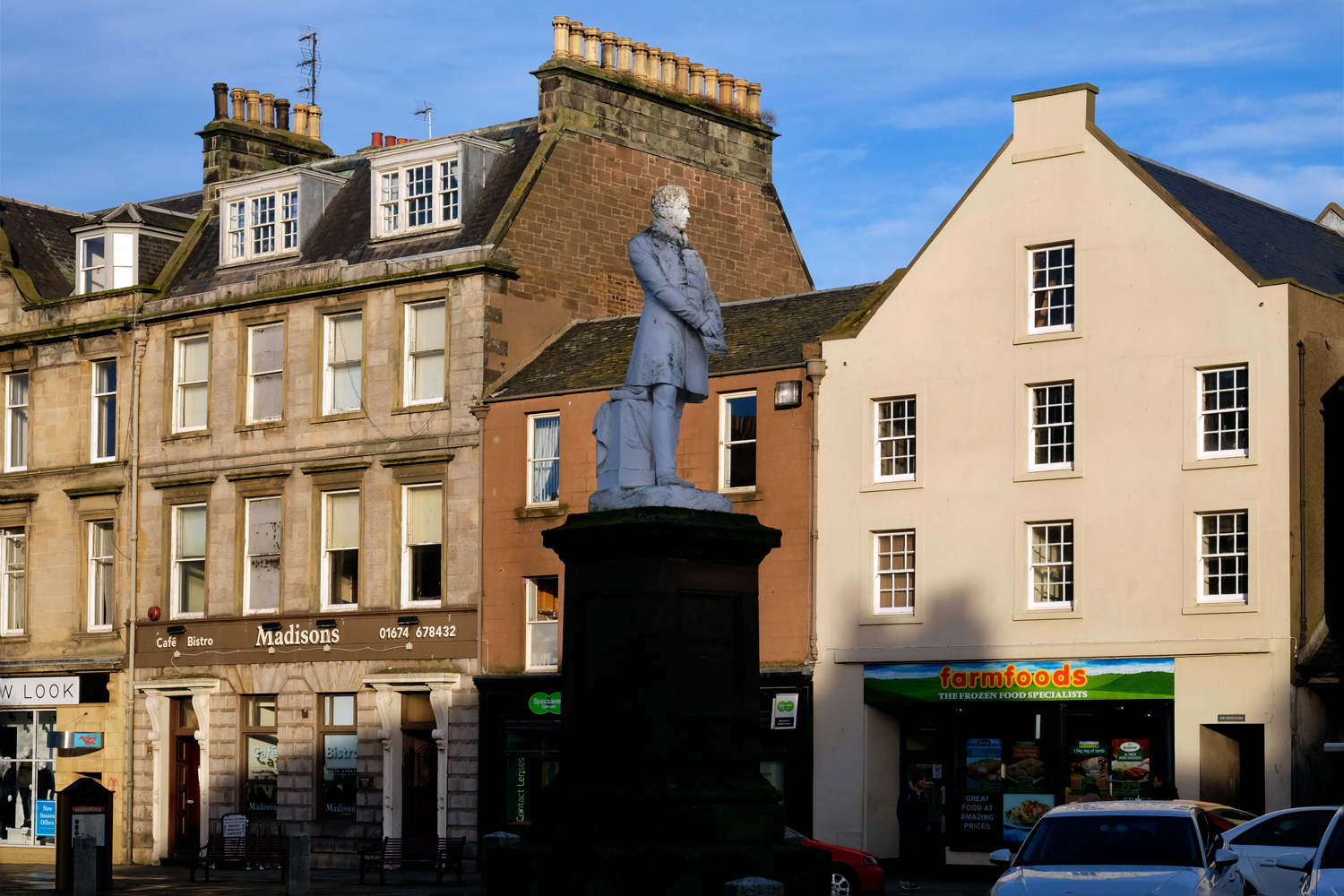 Montrose had some fine statues in the town square . . . here a good Samaritan was honored.
Montrose had some fine statues in the town square . . . here a good Samaritan was honored.
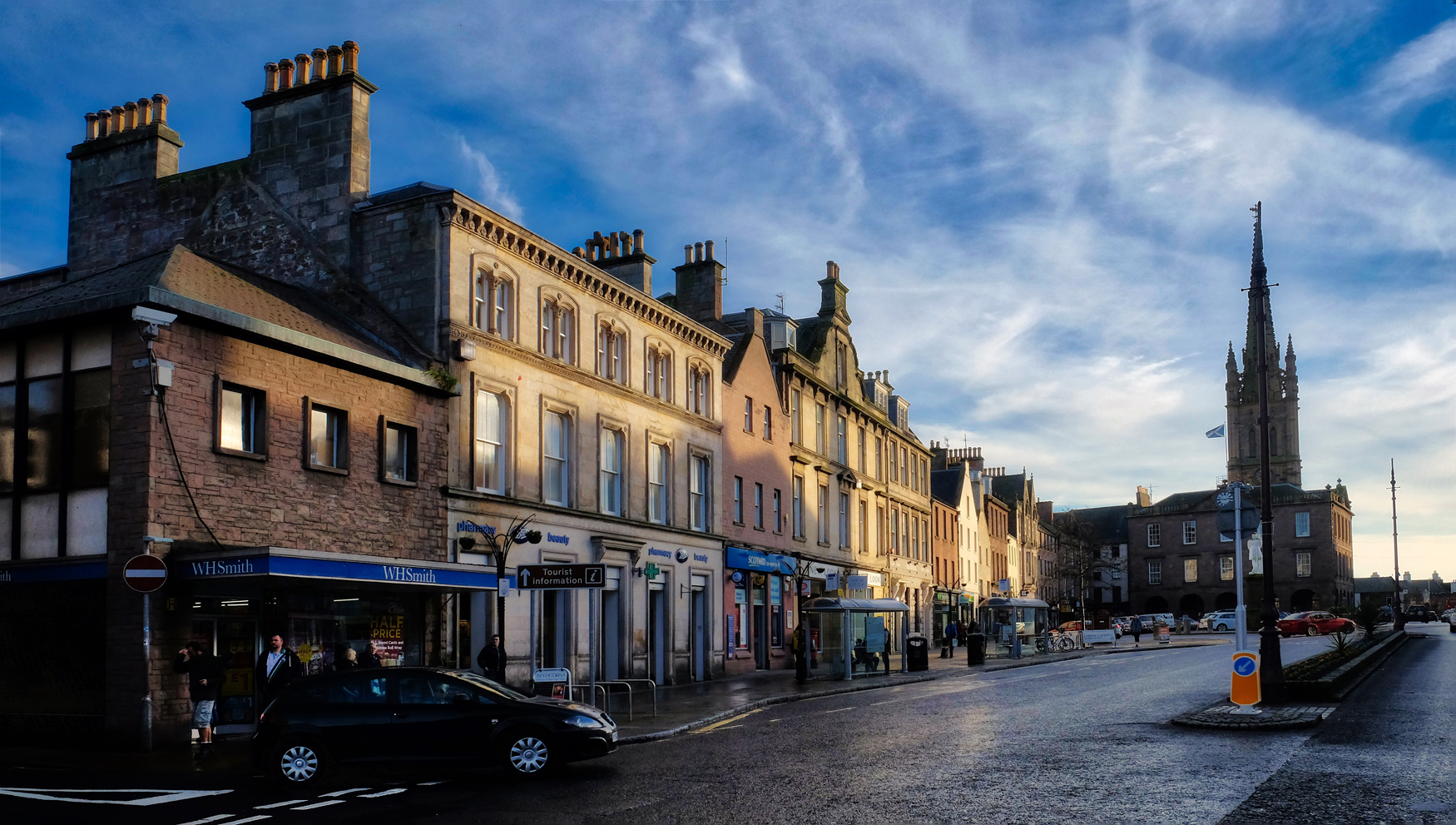 Montrose is typical of many Scottish towns.
Montrose is typical of many Scottish towns.
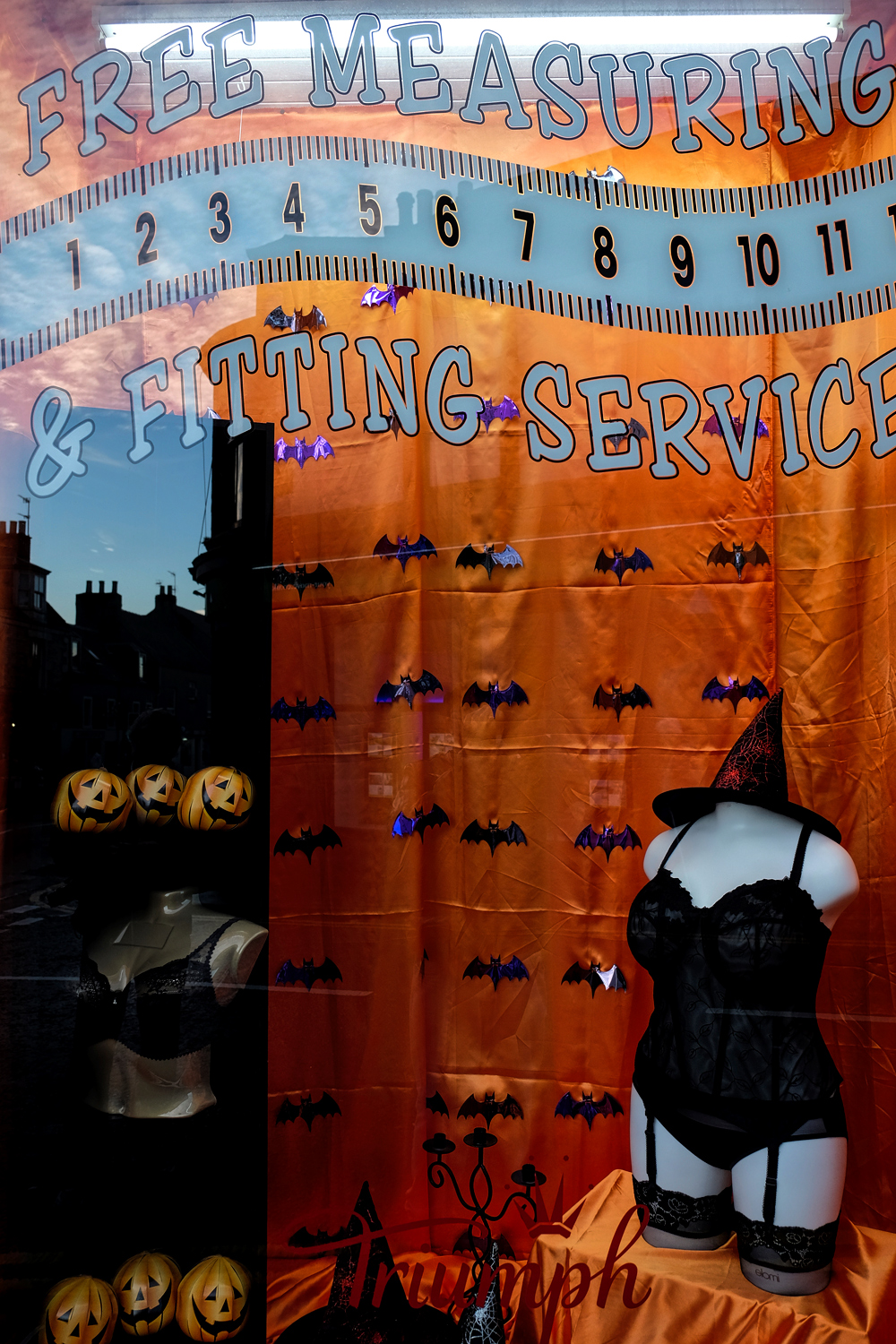 OK, maybe Montrose is not so typical after all.
OK, maybe Montrose is not so typical after all.
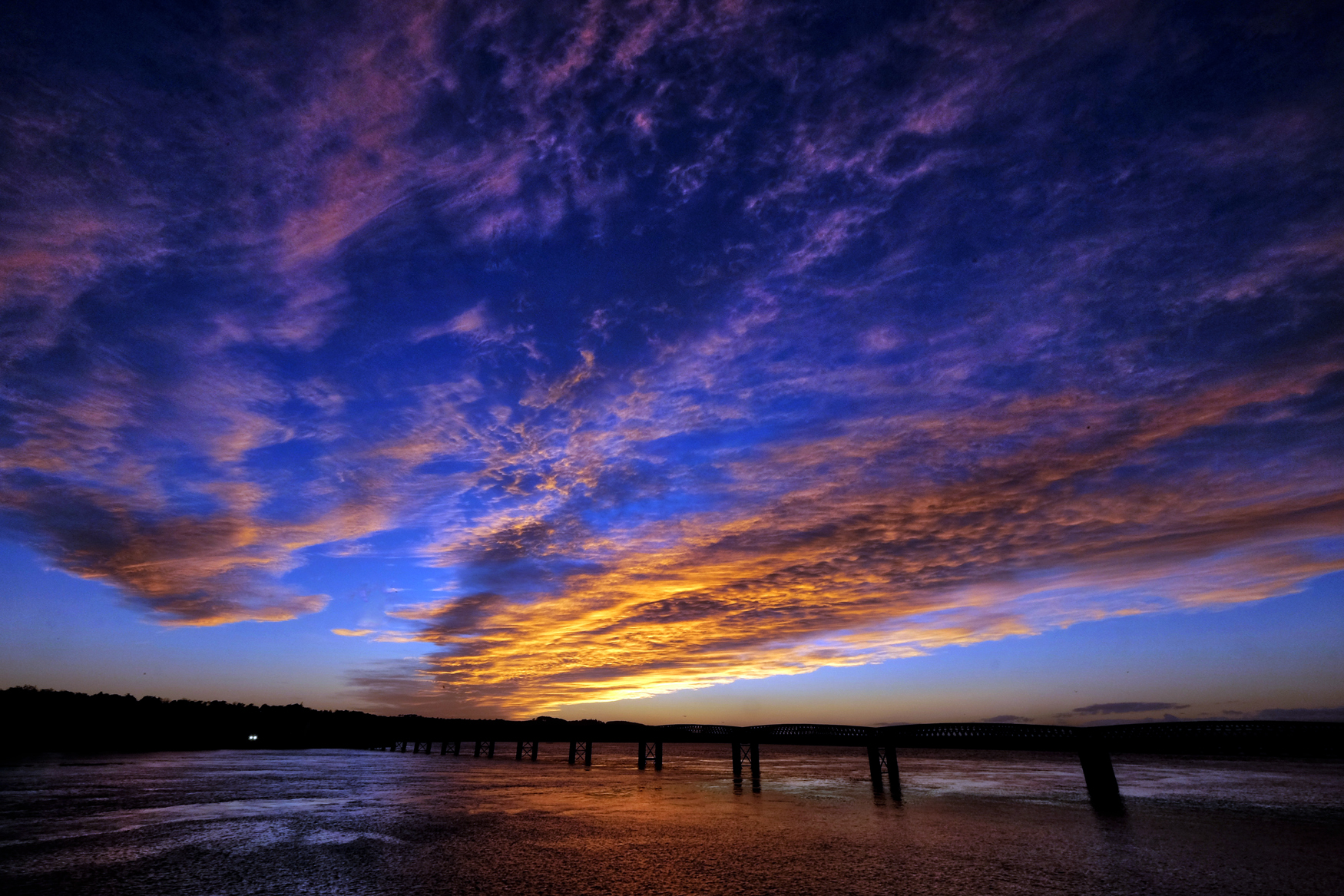 But what I will remember most about Montrose was the most incredible sunset of my life playing over us across the estuary bridge!
But what I will remember most about Montrose was the most incredible sunset of my life playing over us across the estuary bridge!
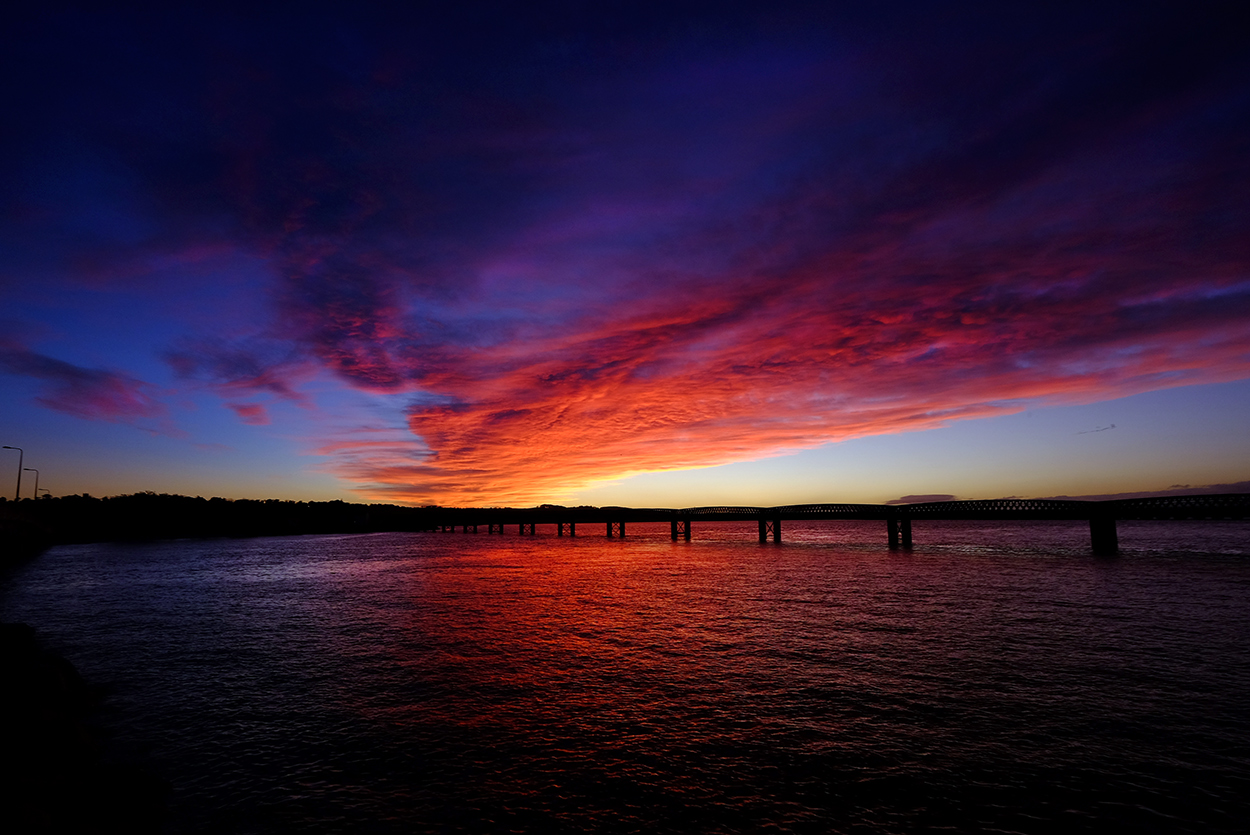 From beginning to end . . . we were completely enthralled.
From beginning to end . . . we were completely enthralled.
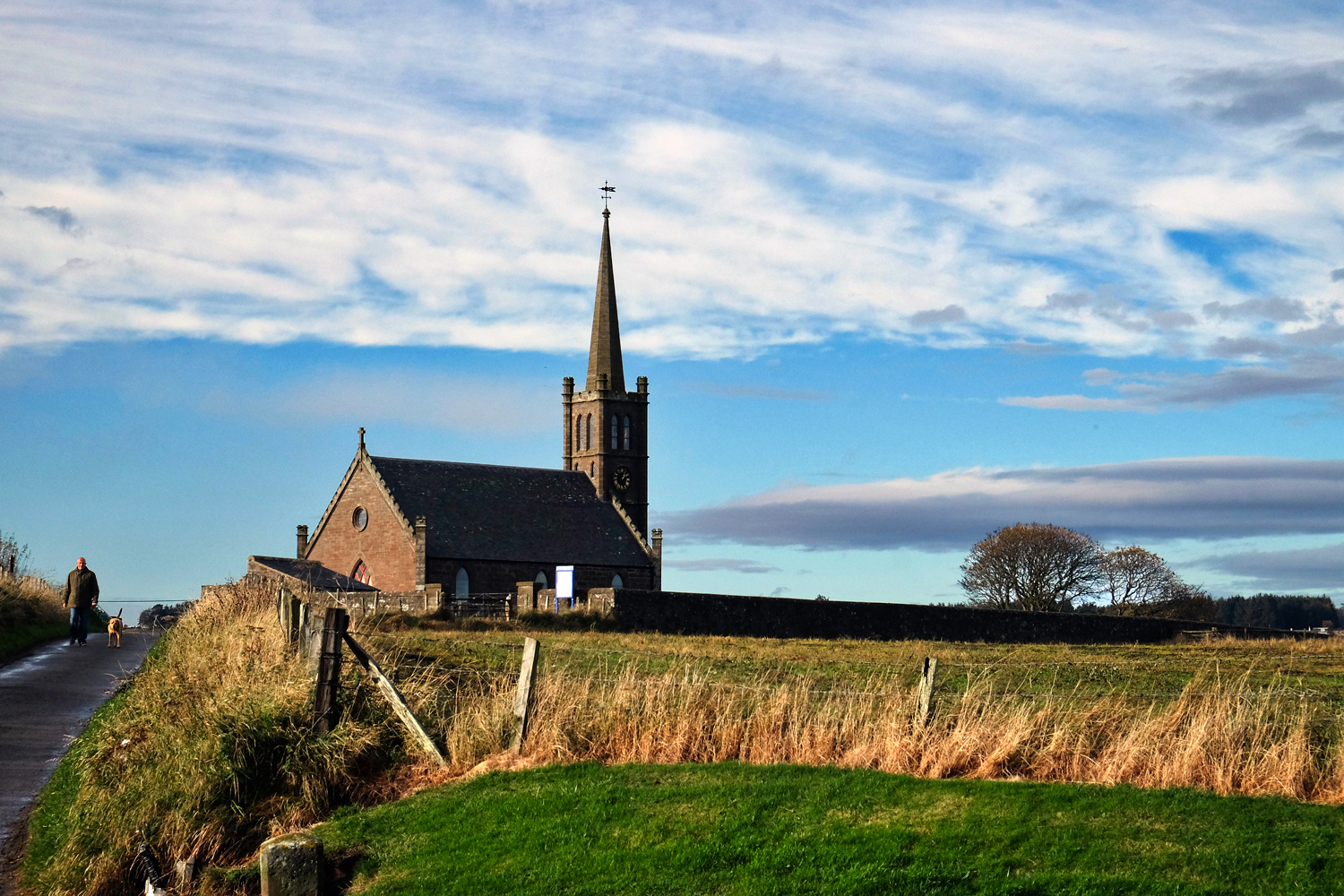 Another day along the small country lanes above the North Sea.
Another day along the small country lanes above the North Sea.
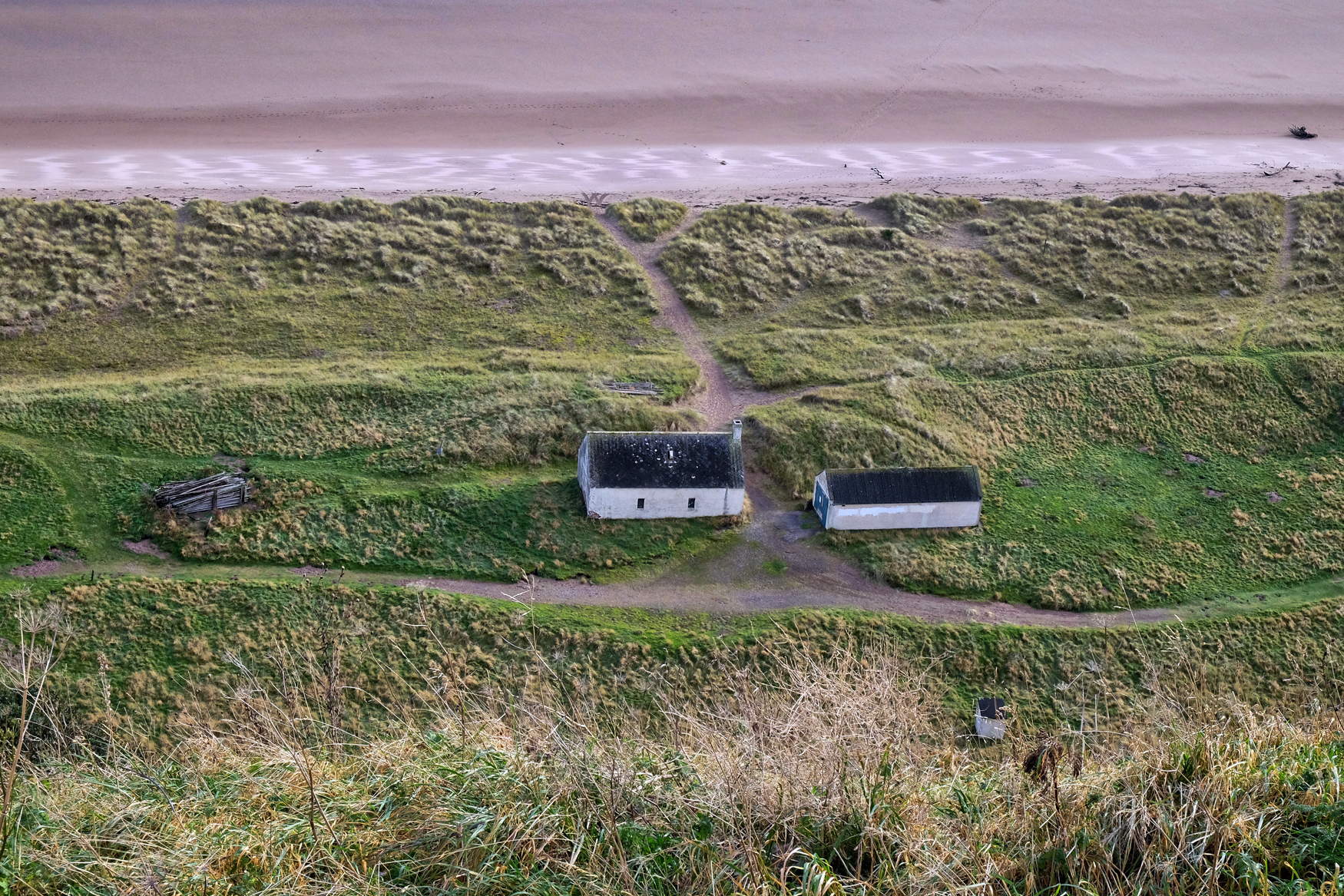 Old farm houses along a strand of the North Sea.
Old farm houses along a strand of the North Sea.
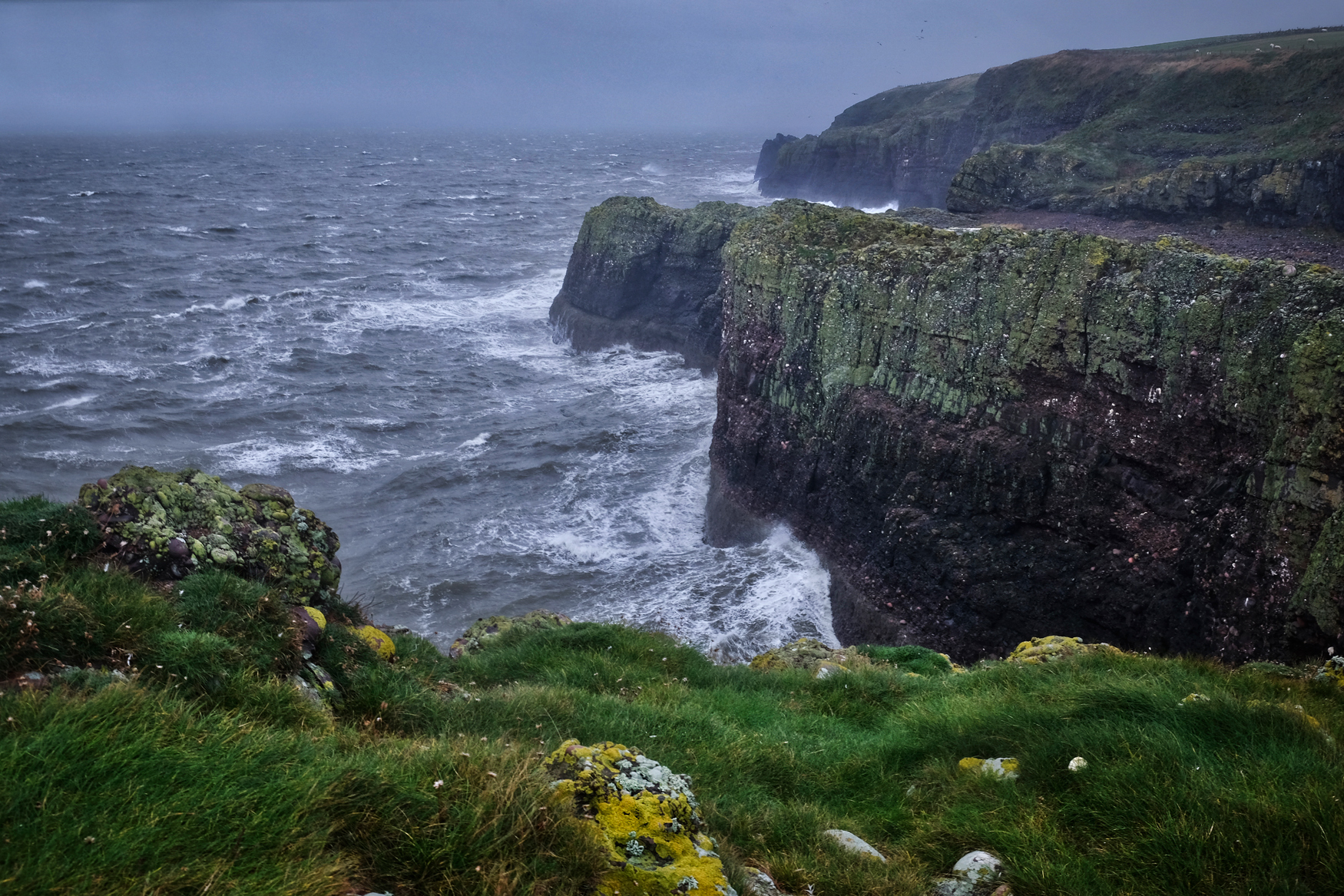 A wild North Sea below the cliffs of Aberdeenshire.
A wild North Sea below the cliffs of Aberdeenshire.
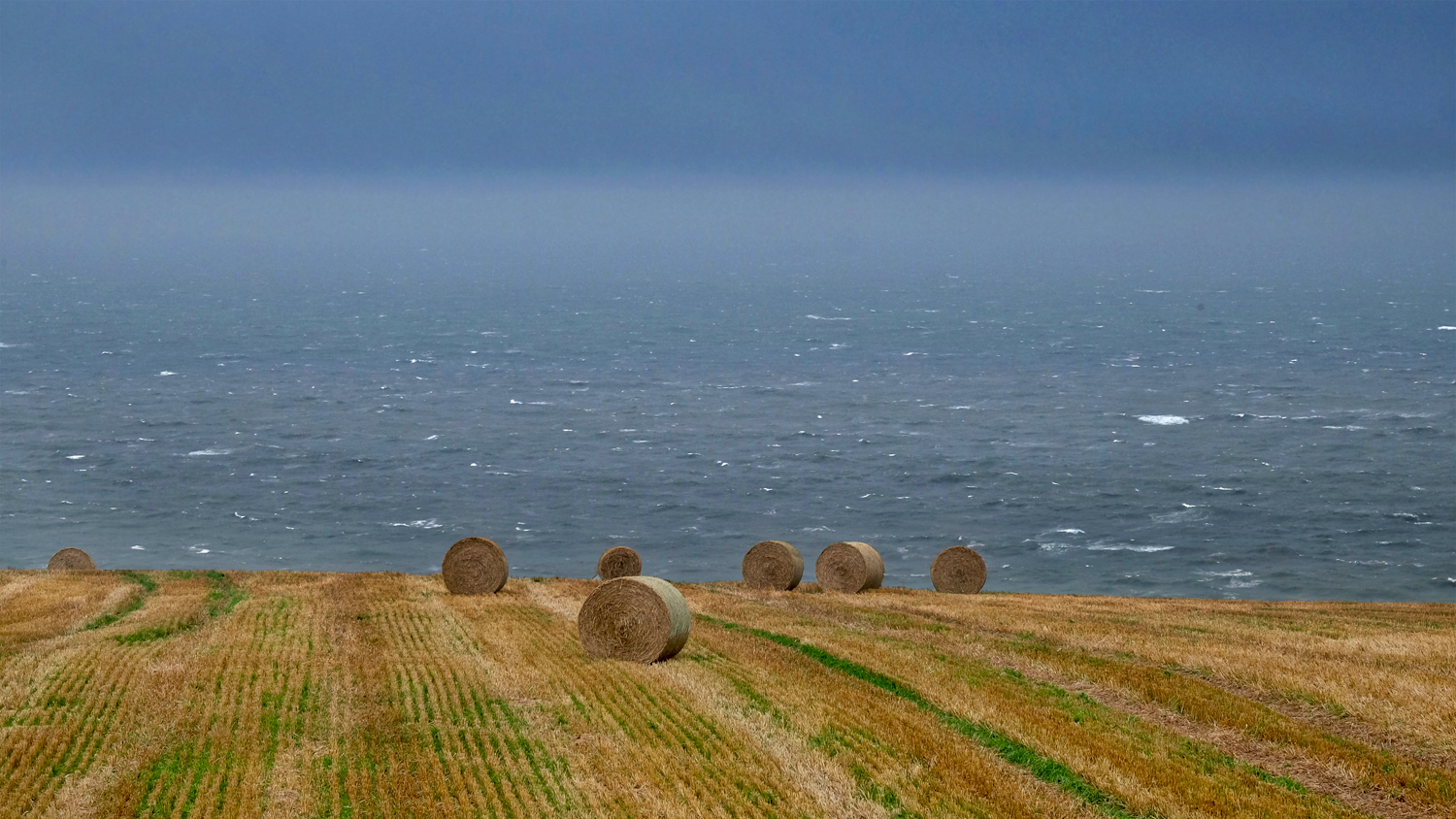 North Sea hay bales.
North Sea hay bales.
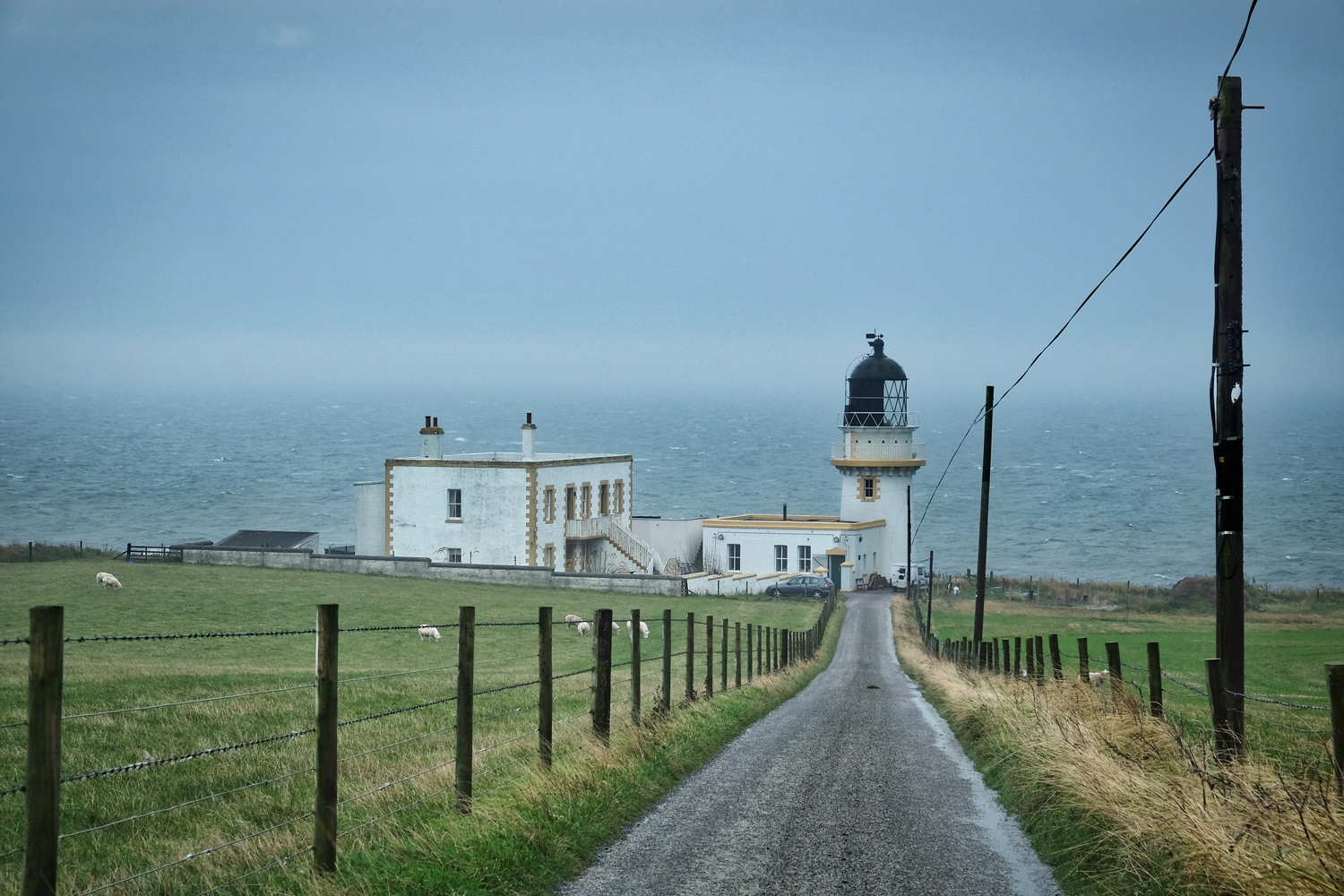 We saw so much and did so much in those short three days . . . and this blog entry represents only a small part of it all. I may elaborate more on this entry at a later date, but for now, that is all.
We saw so much and did so much in those short three days . . . and this blog entry represents only a small part of it all. I may elaborate more on this entry at a later date, but for now, that is all.
Suphanburi Province: A Day Trip Northwest Of Bangkok
 Wednesday, March 14, 2018 at 9:25AM
Wednesday, March 14, 2018 at 9:25AM A RAMBLE IN FOUR PARTS
Part Four: A Field of Buddha Crypts and a Hell Garden - Wat Phai Rong Wua
My friend John Stiles and I set off in my old truck up the road to the rural province of Suphanburi, to the northwest of Bangkok. As usual, we had a vague idea, from a tertiary Google search, of what we wanted to see, but no particular plan: we would ramble. We would eventually see several amazing Buddhist temple complexes, a Buffalo park, and a Farm Museum. We never 'found' the actual town of Suphanburi, but we didn't care: we had a grand adventure rambling about the rural Thai countryside.
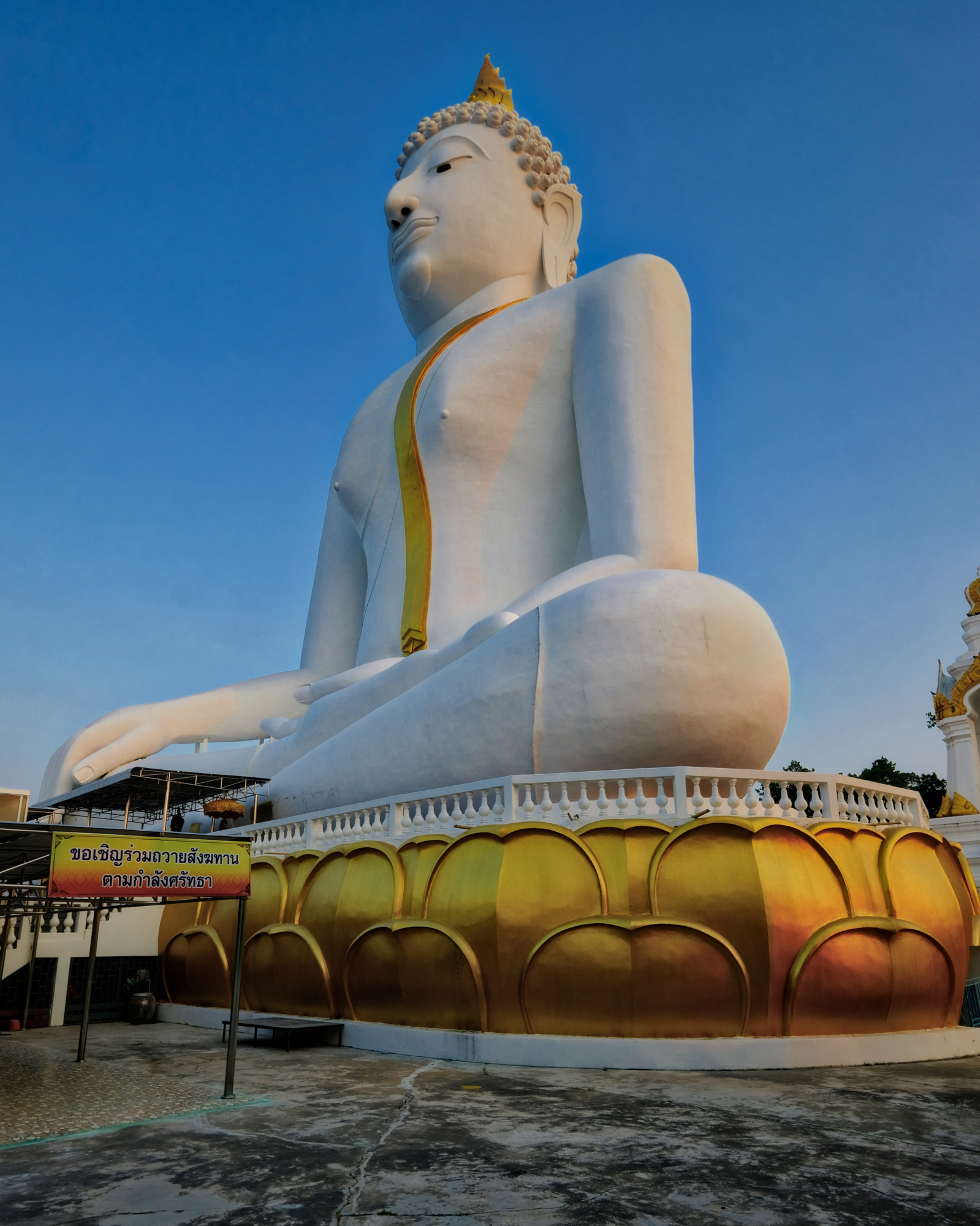
We found Wat Phai Rong Wua on the GPS and noticed it was on the road back to Bangkok. Good. There was suppose to be a giant Buddha image and something called a Hell Garden. OK, Lets take a look. The Buddha colossus was remarkable!
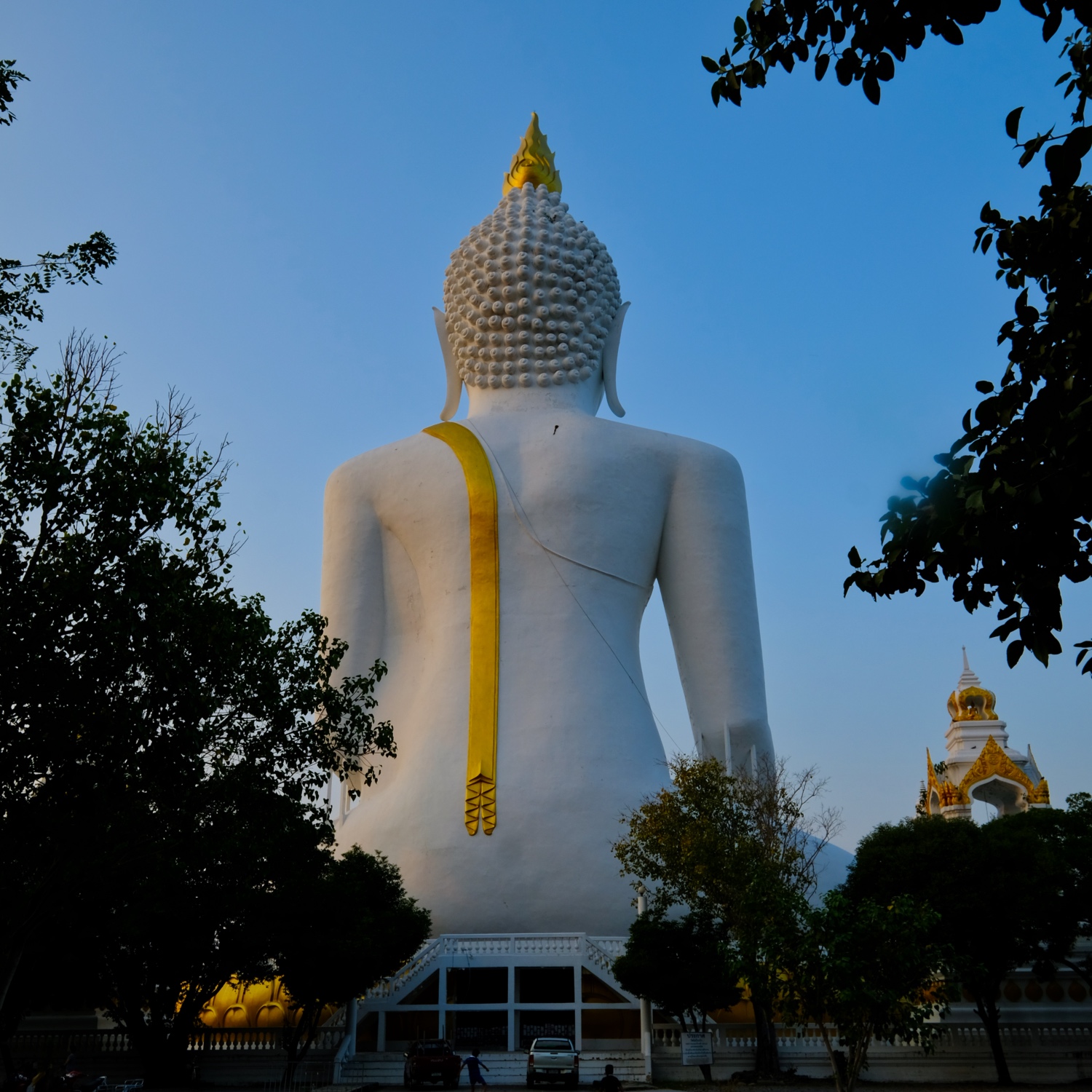 Just to give perspective . . . notice the size of this Buddha image compared to the truck parked below it!!!
Just to give perspective . . . notice the size of this Buddha image compared to the truck parked below it!!!
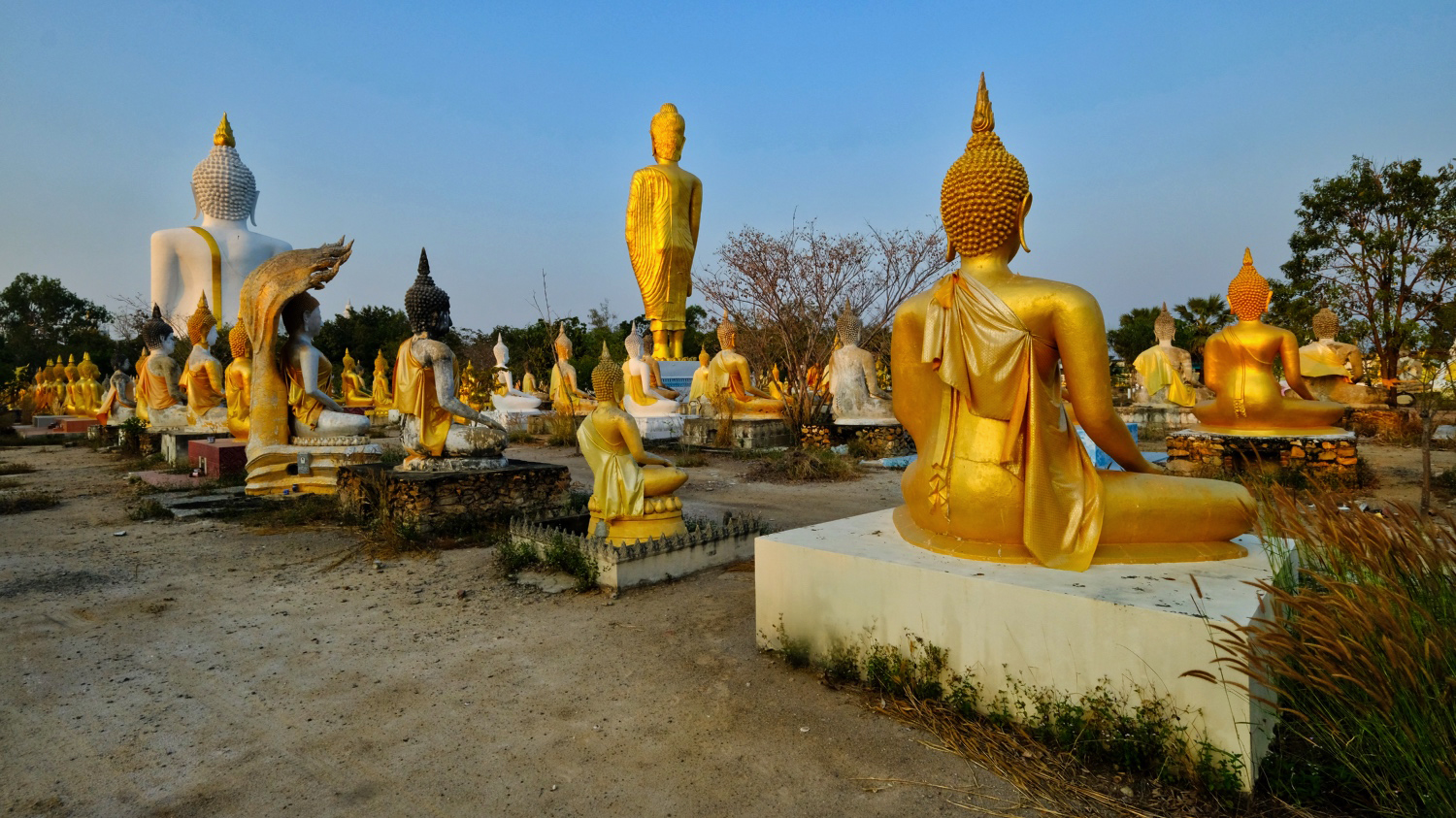 We arrived at Wat Phai Ron Wua as the sun was beginning to set. We knew we would only have about an hour of light left, and only about 20 minutes of good light. We dashed across the street from the parking area and were immediately overwhelmed with the sight of hundreds of Buddha images!
We arrived at Wat Phai Ron Wua as the sun was beginning to set. We knew we would only have about an hour of light left, and only about 20 minutes of good light. We dashed across the street from the parking area and were immediately overwhelmed with the sight of hundreds of Buddha images!
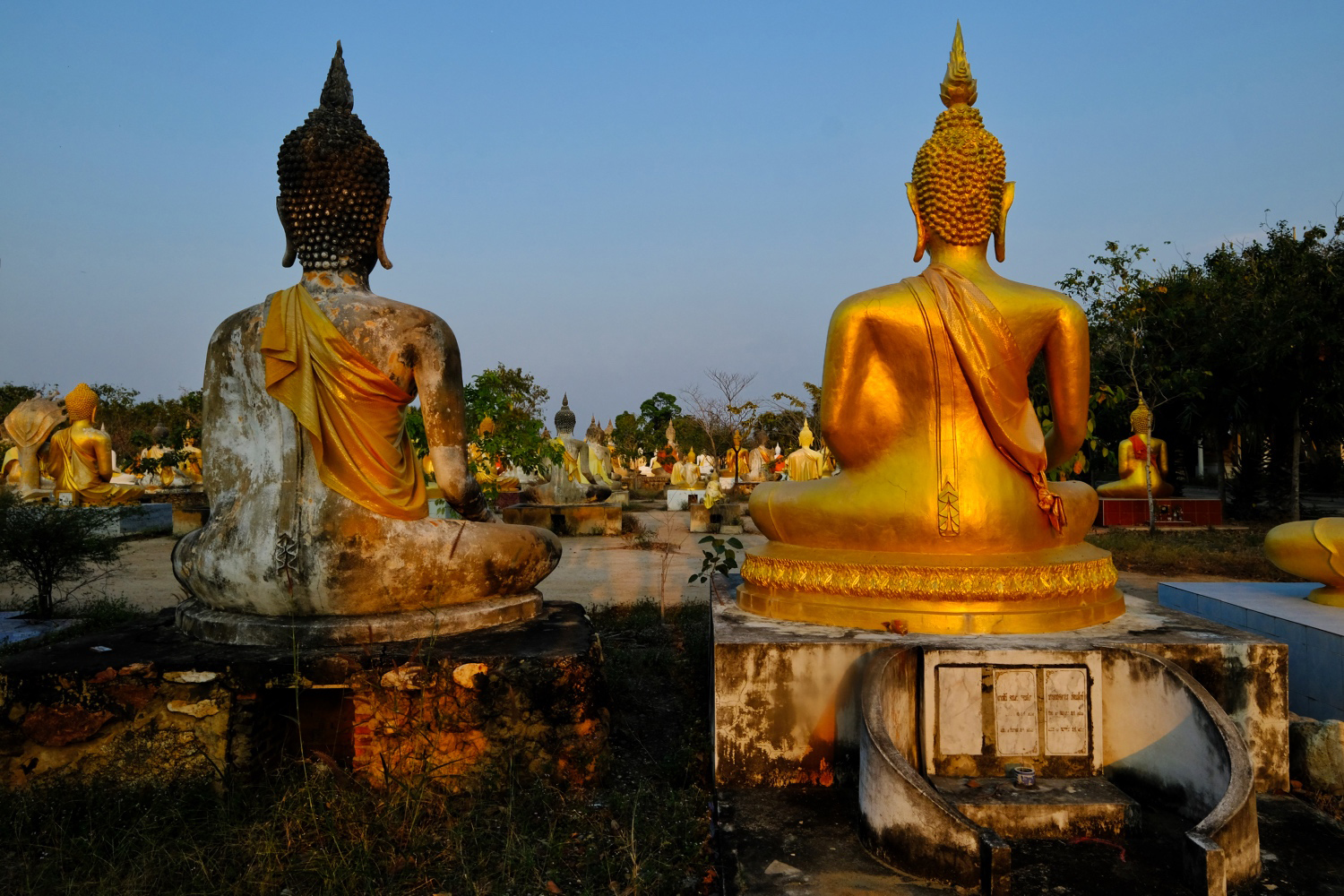 The Buddhas were actually crypts, no doubt of the wealthy people who built the larger wat complex.
The Buddhas were actually crypts, no doubt of the wealthy people who built the larger wat complex.
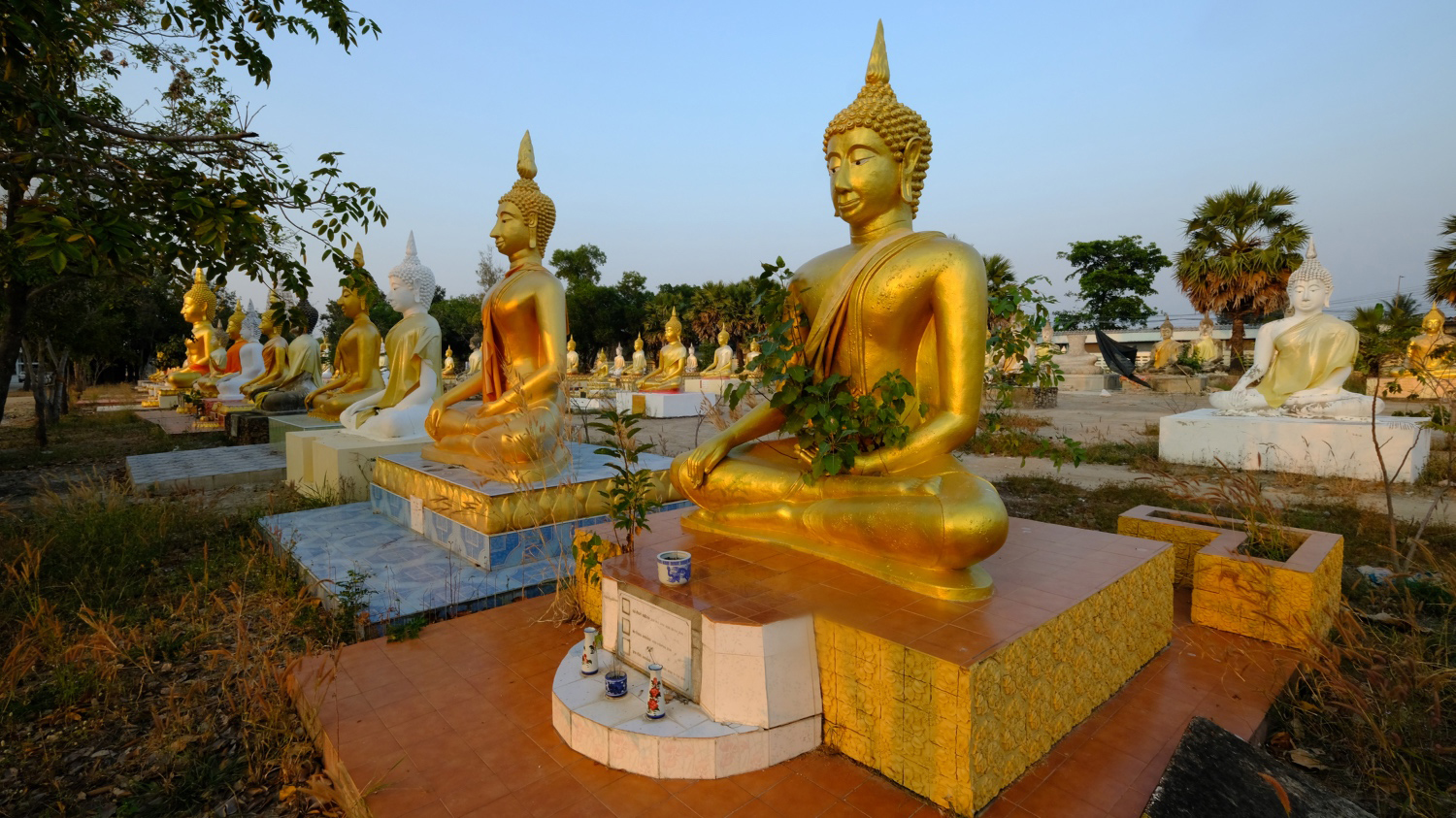 The Buddha images were all unique and many had been tended recently.
The Buddha images were all unique and many had been tended recently.
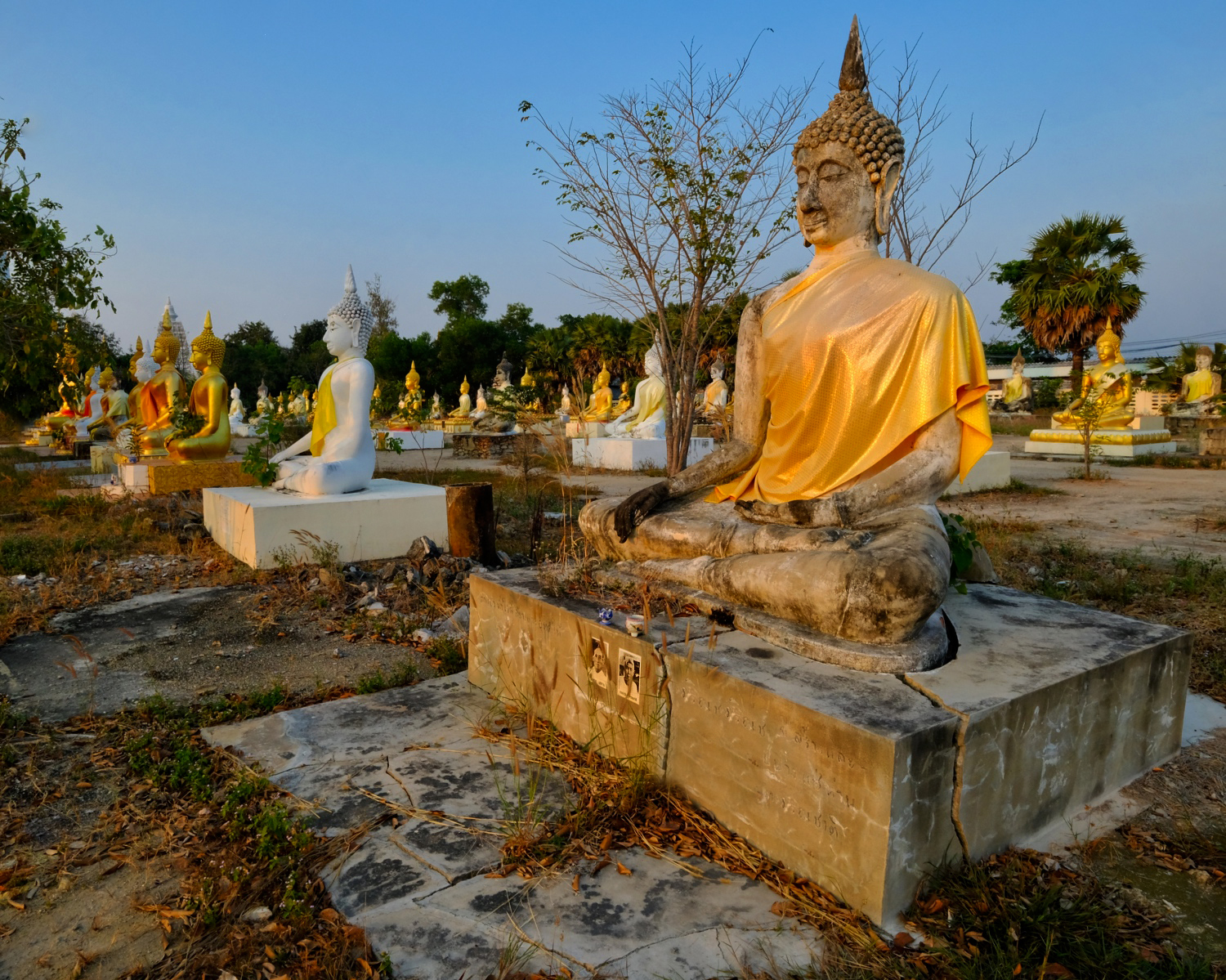 The last of the golden light of sun shone on the field of Buddhas. I just started clicking away with my camera.
The last of the golden light of sun shone on the field of Buddhas. I just started clicking away with my camera.
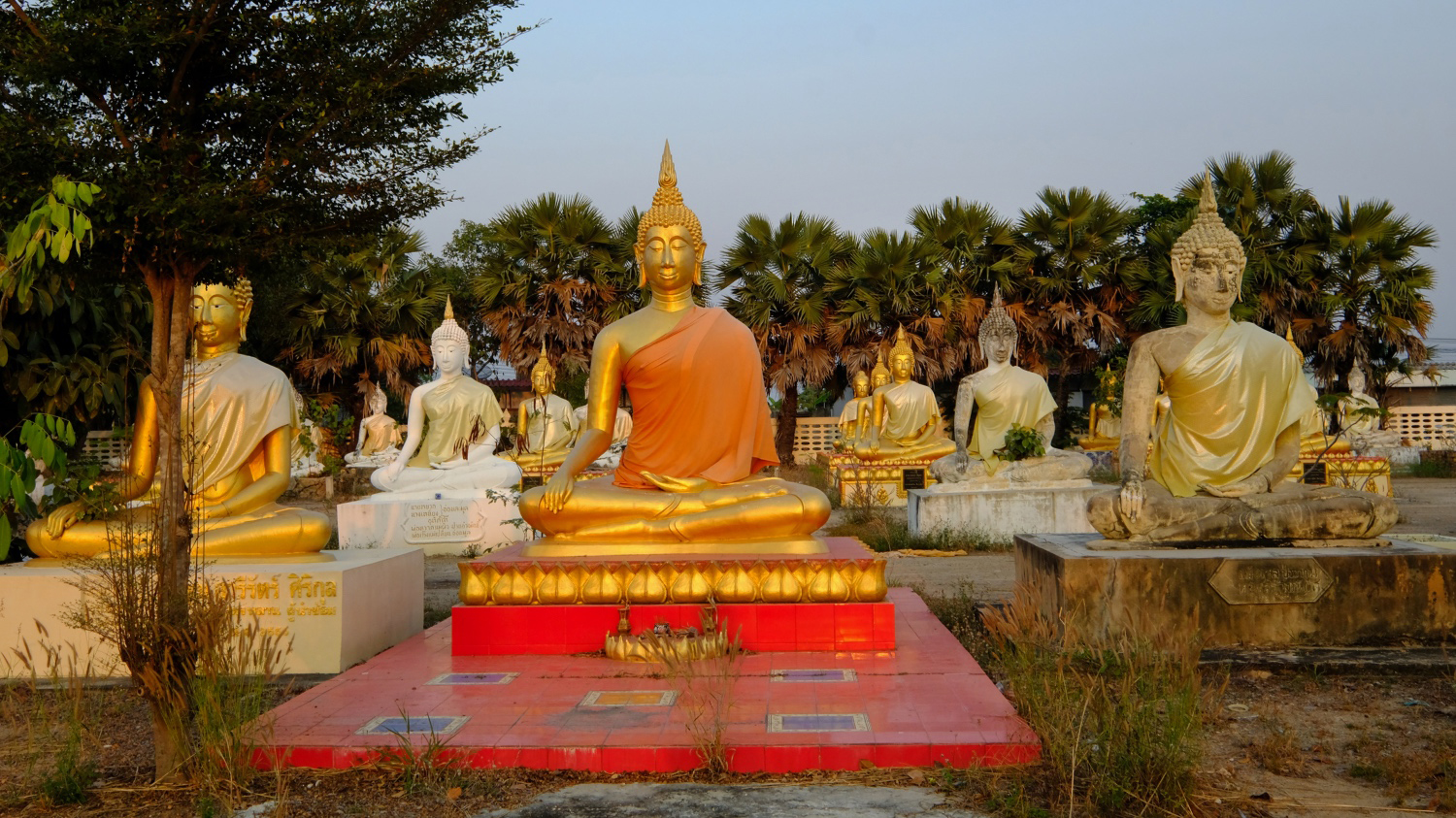 One of the most remarkable sights I have ever seen in my life!
One of the most remarkable sights I have ever seen in my life!
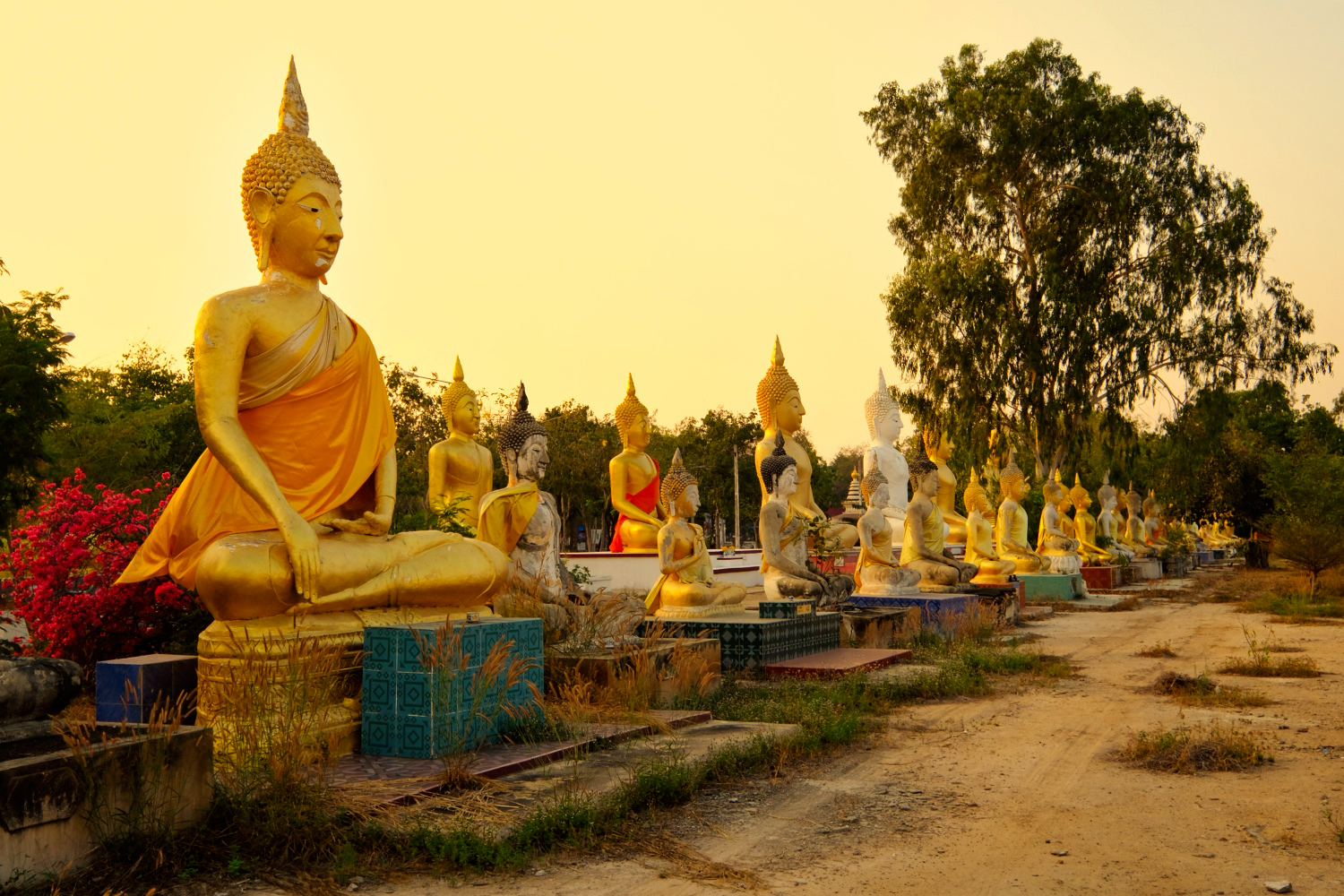 Looking back into the golden sunset . . .
Looking back into the golden sunset . . .
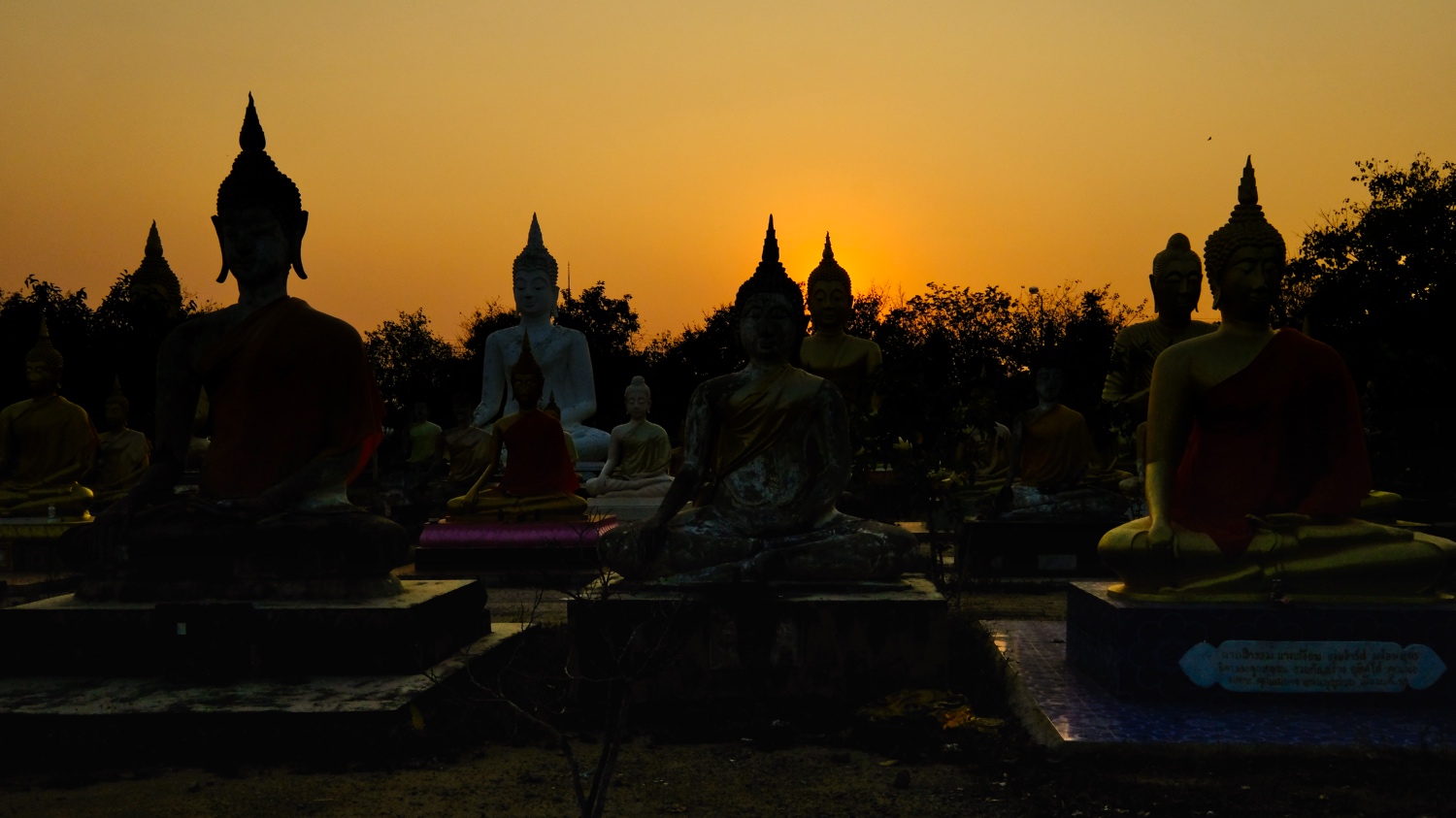 The tropical sun setting behind a field of Buddhas . . . Ah! Thailand!
The tropical sun setting behind a field of Buddhas . . . Ah! Thailand!
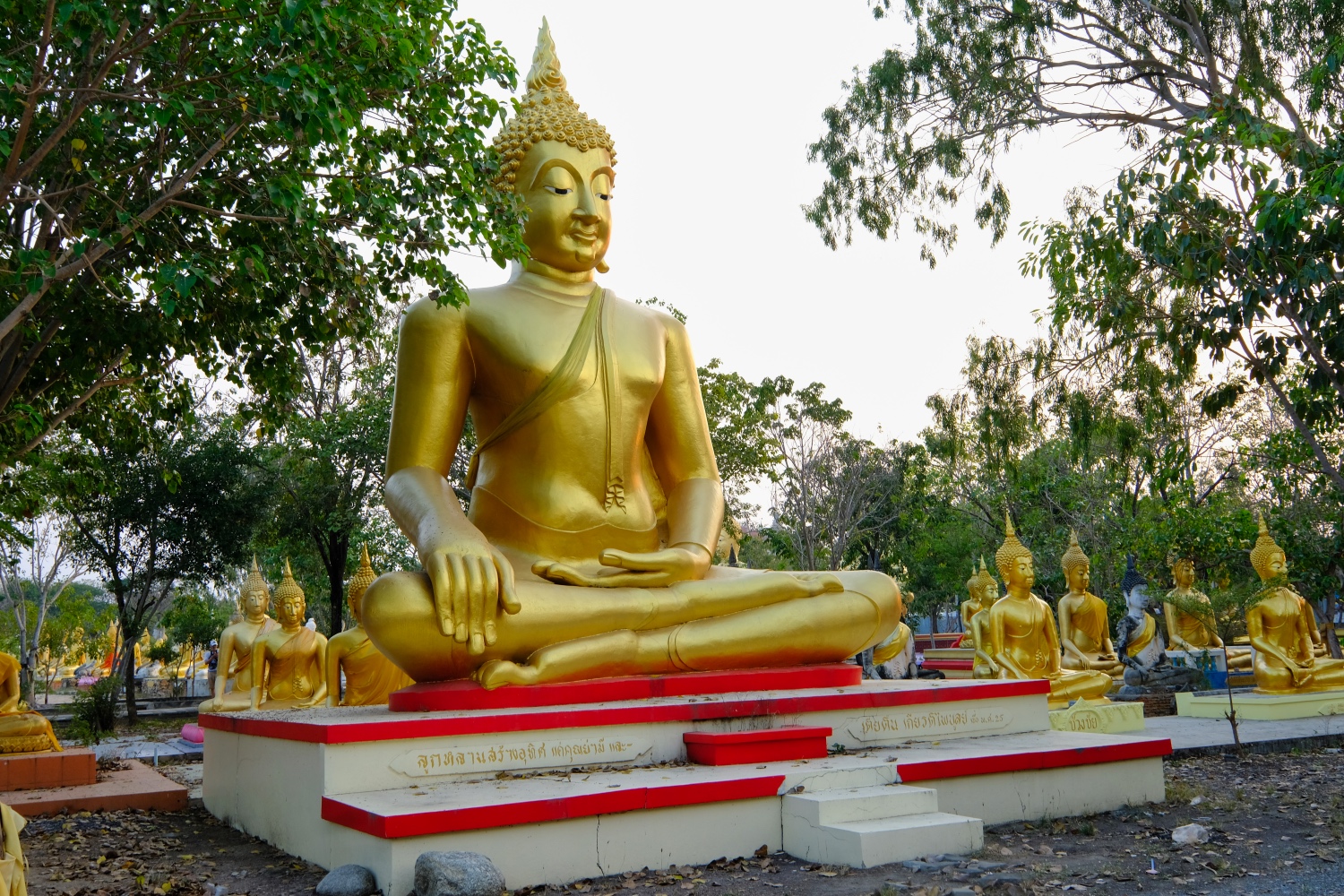 There were a few exceptionally large Buddhas in the field.
There were a few exceptionally large Buddhas in the field.
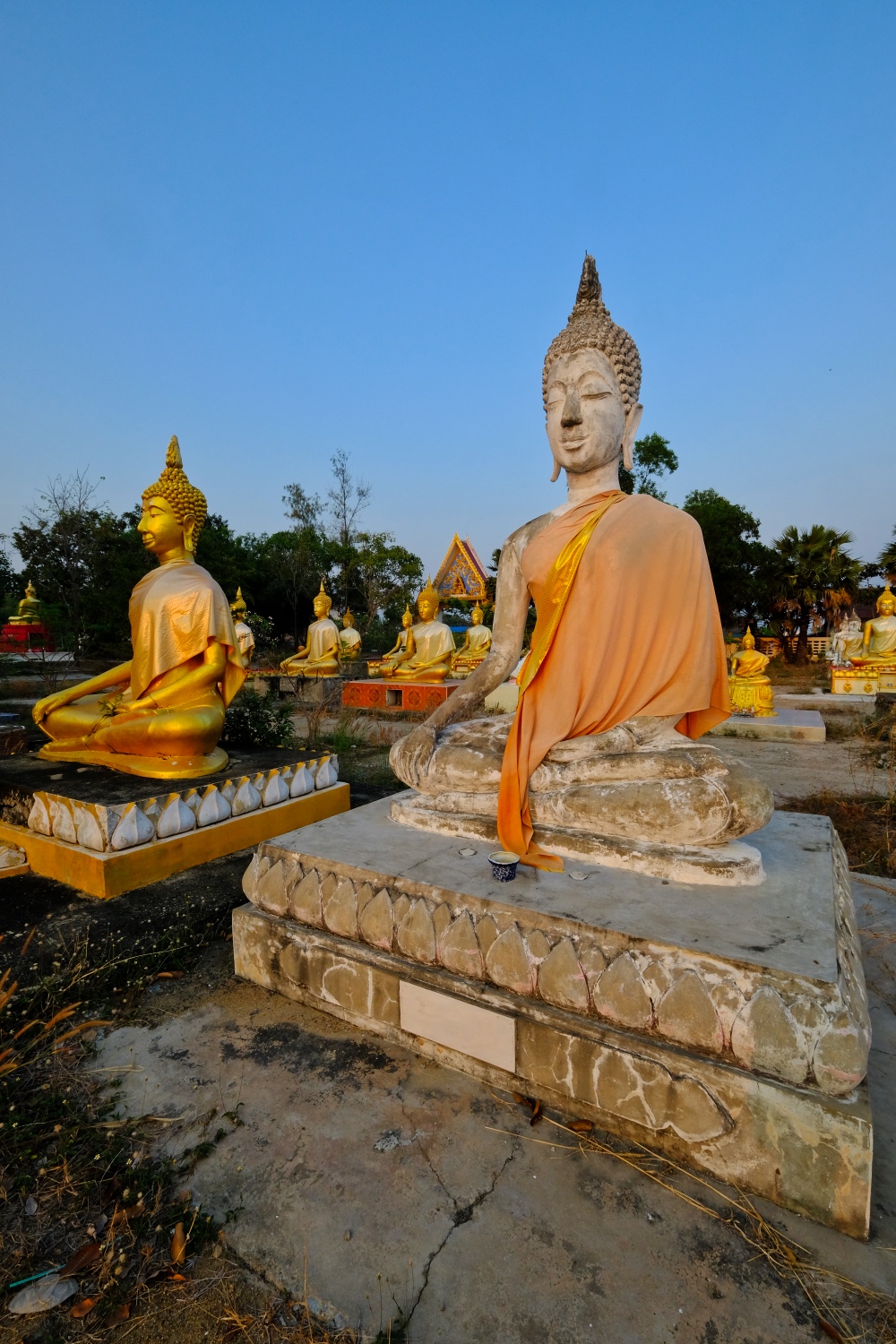 Some of the Buddhas had been draped with cloth. We knew we were losing the light, so we moved on. I must have taken hundreds of photos in this field of Buddhas!
Some of the Buddhas had been draped with cloth. We knew we were losing the light, so we moved on. I must have taken hundreds of photos in this field of Buddhas!
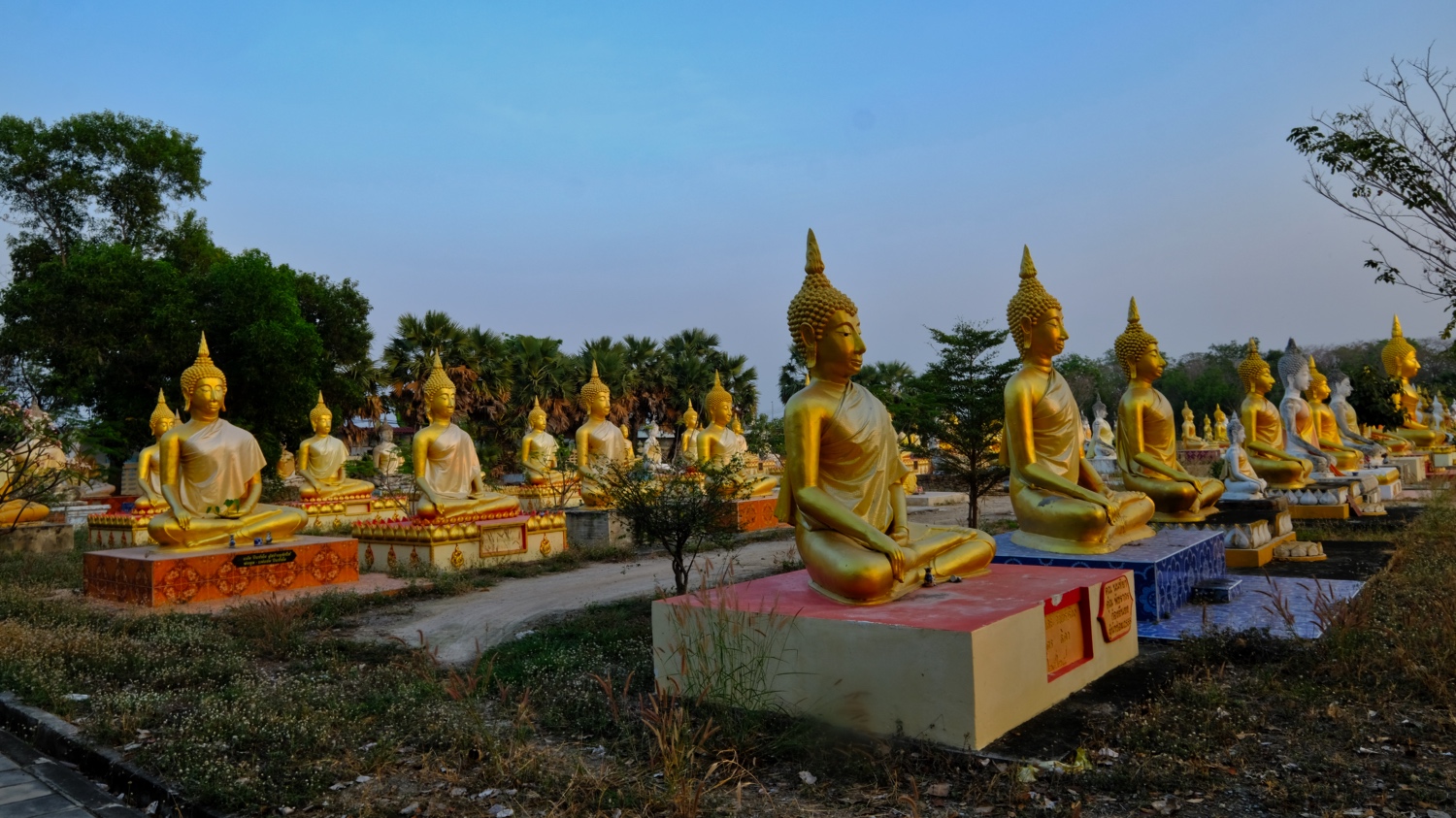 A field of Buddhas in the last of day.
A field of Buddhas in the last of day.
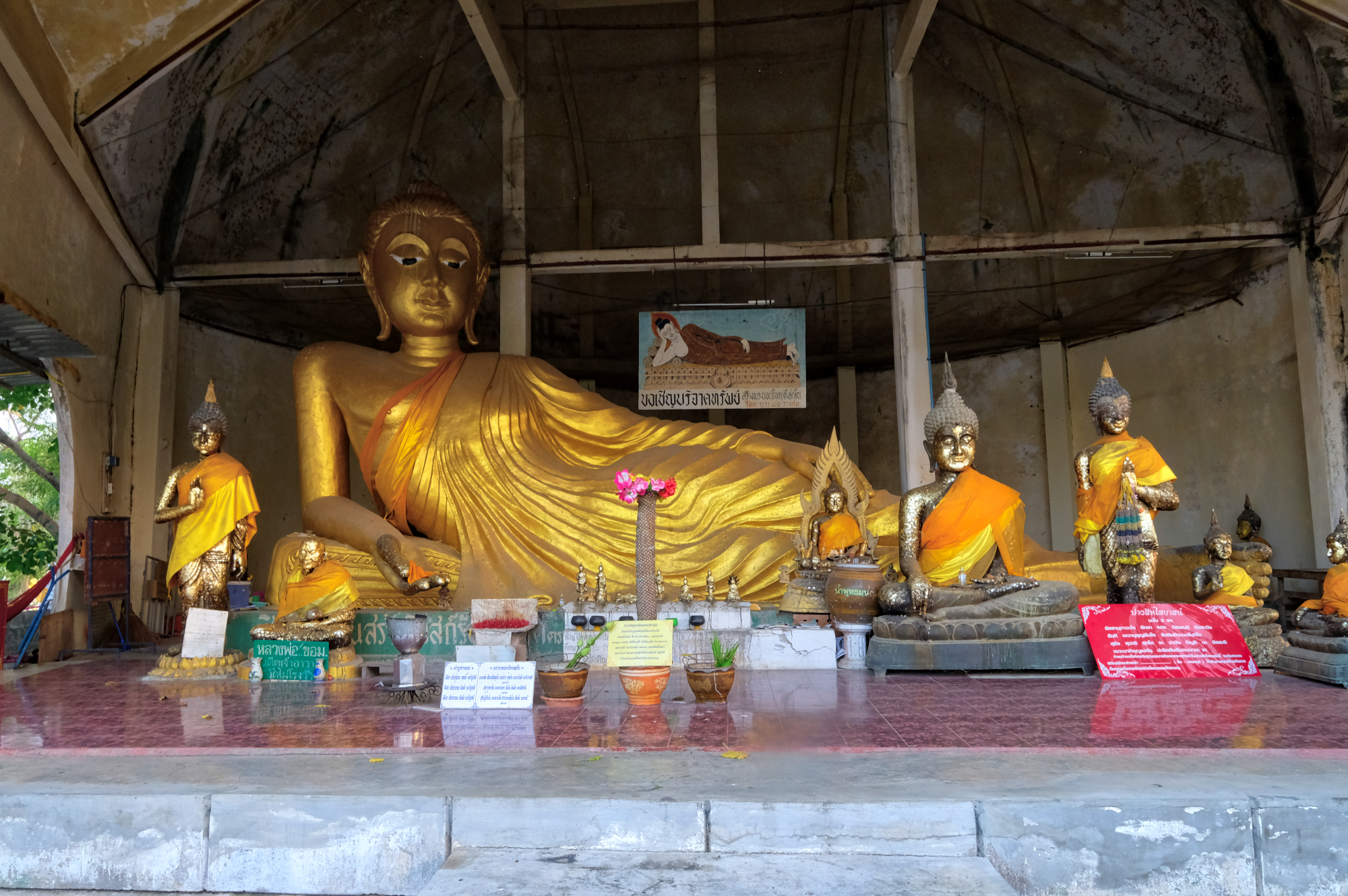 Next to the Colossus was this charming reclining Buddha shrine.
Next to the Colossus was this charming reclining Buddha shrine.
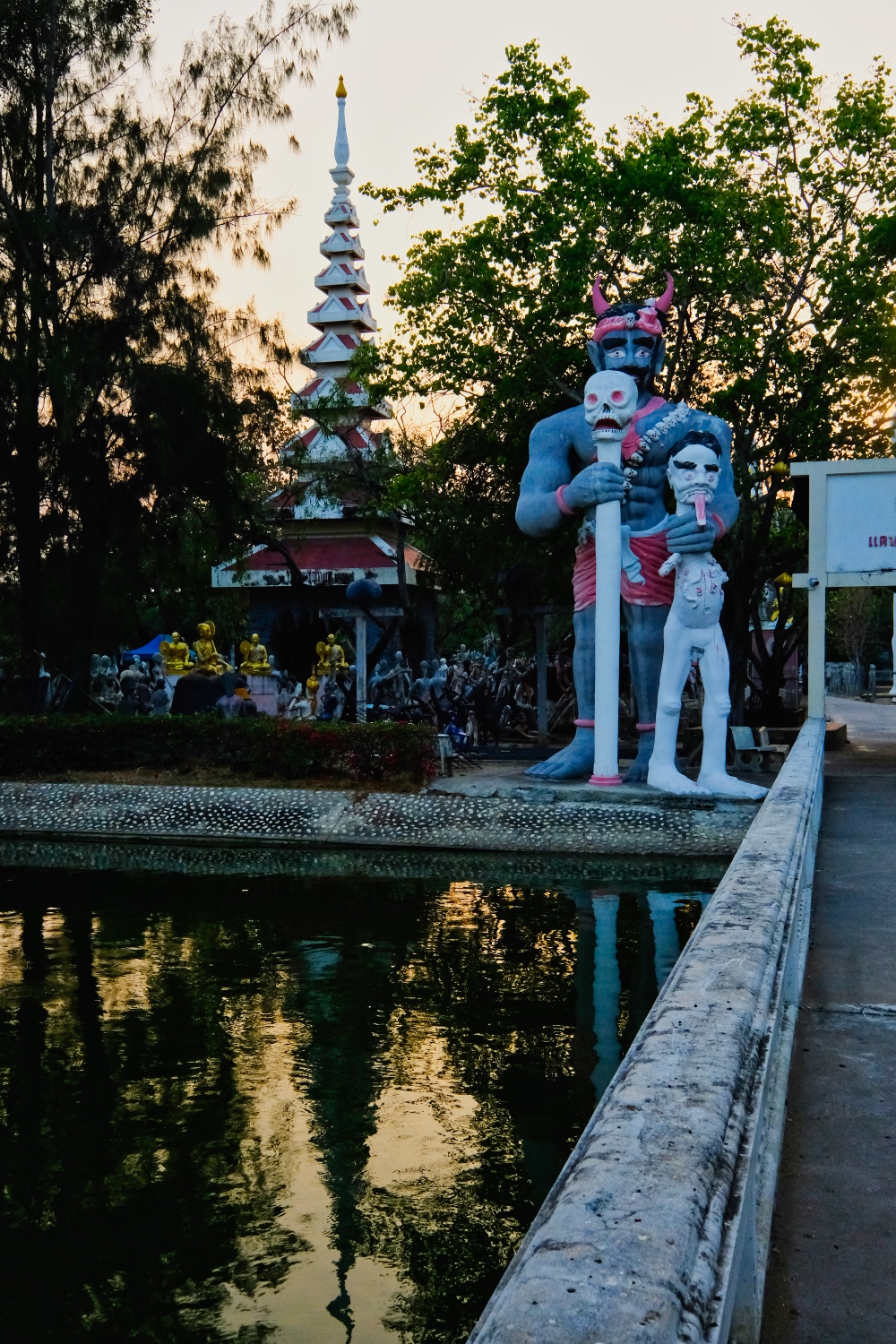 And then, quite by accident, we saw a gate across from the big Buddha . . . The Gate of the Hell Garden!
And then, quite by accident, we saw a gate across from the big Buddha . . . The Gate of the Hell Garden!
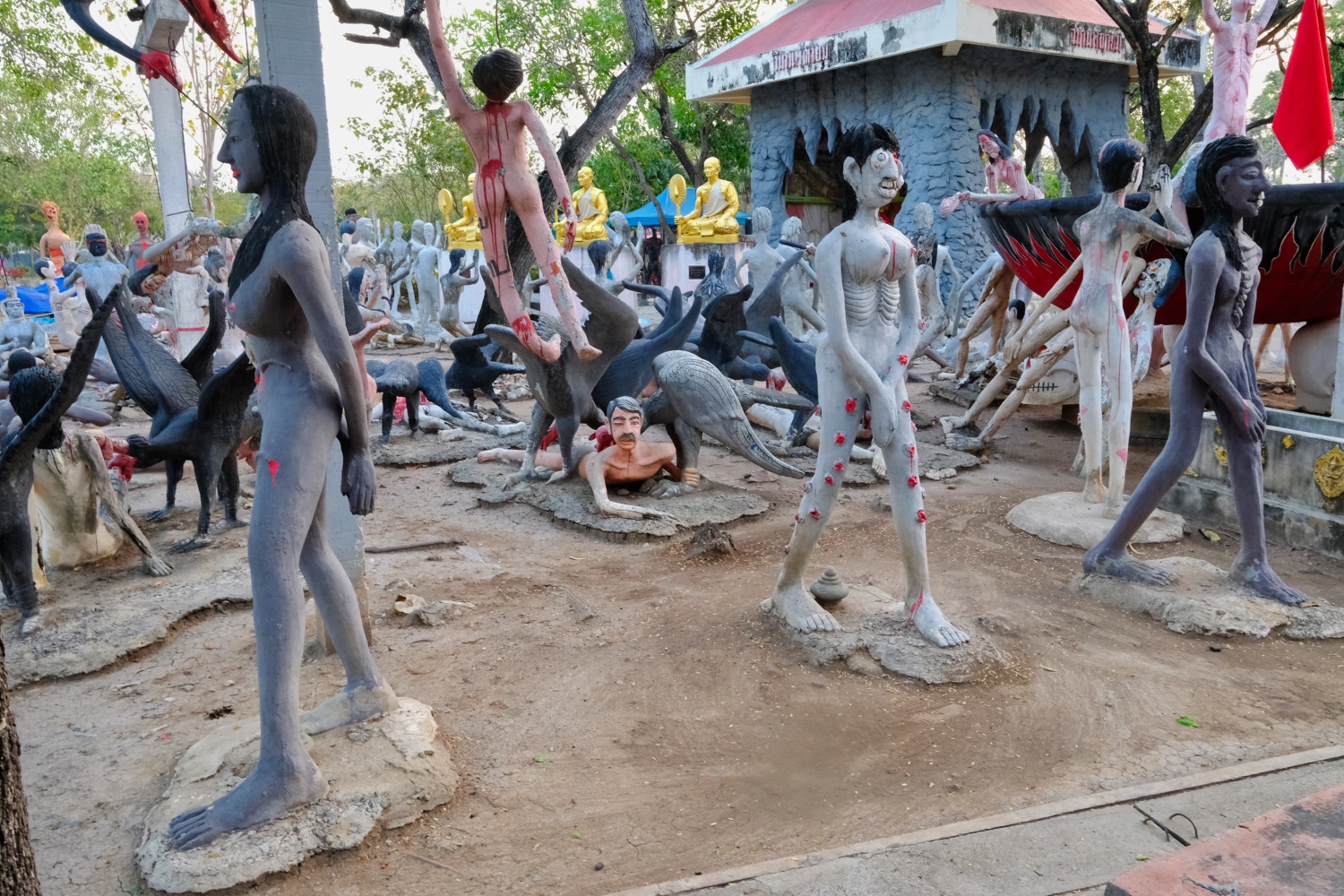 And by Hell Garden, I mean a garden of Hellish statuary!
And by Hell Garden, I mean a garden of Hellish statuary!
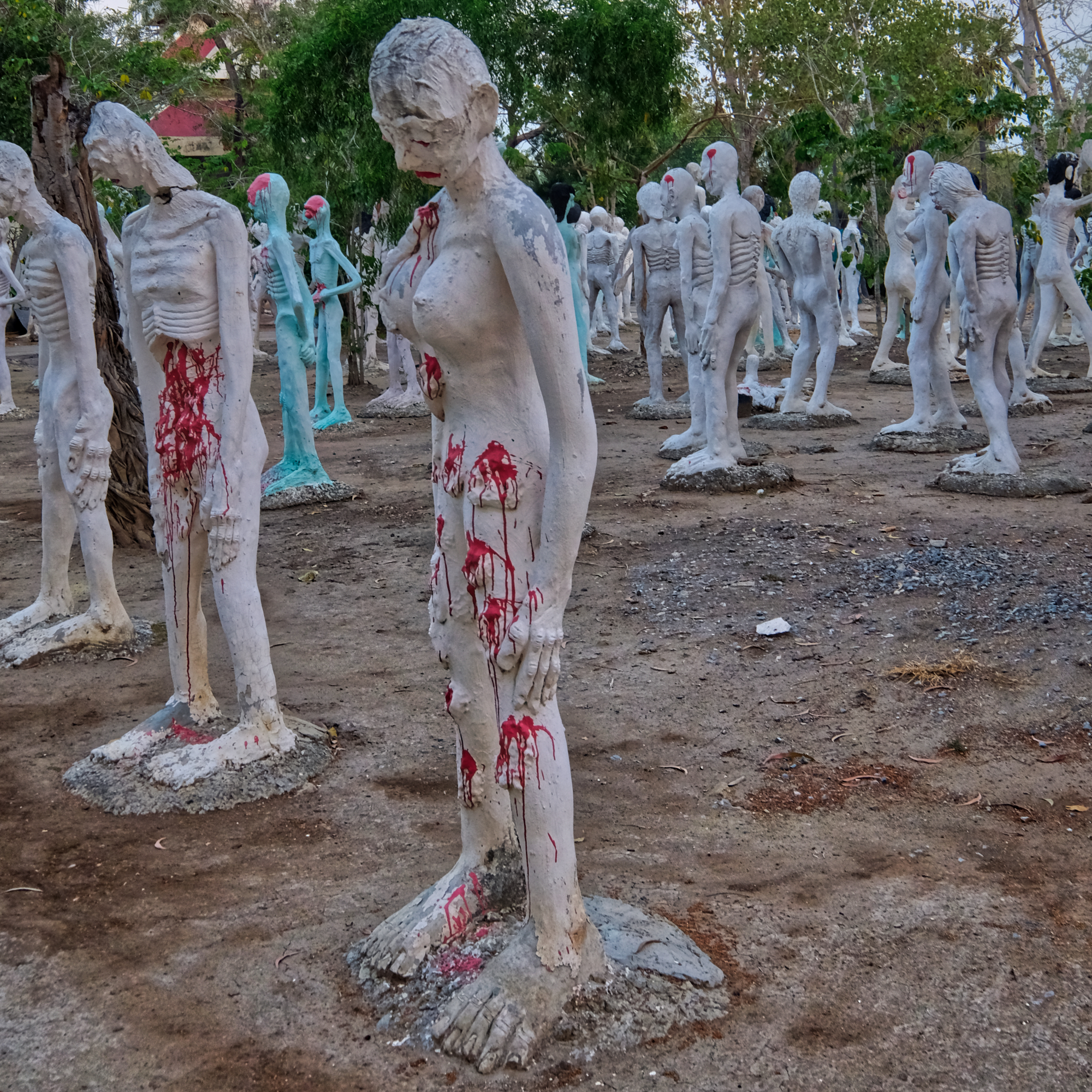 There were many sections of the Hell Garden, each held stylistically different depictions of all the horrific things humans do to themselves and each other.
There were many sections of the Hell Garden, each held stylistically different depictions of all the horrific things humans do to themselves and each other.
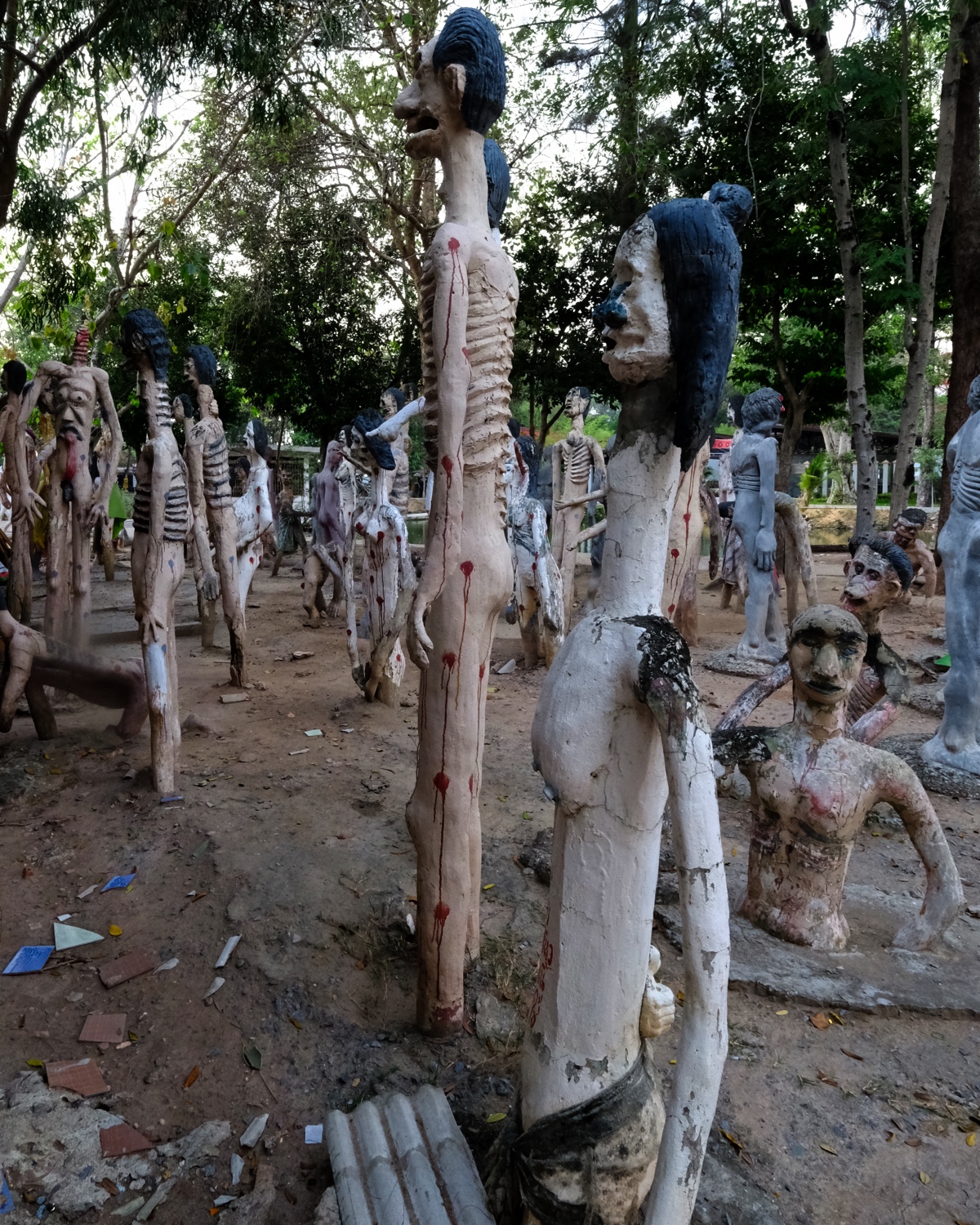 Some of the statuary were very amateurishly made.
Some of the statuary were very amateurishly made.
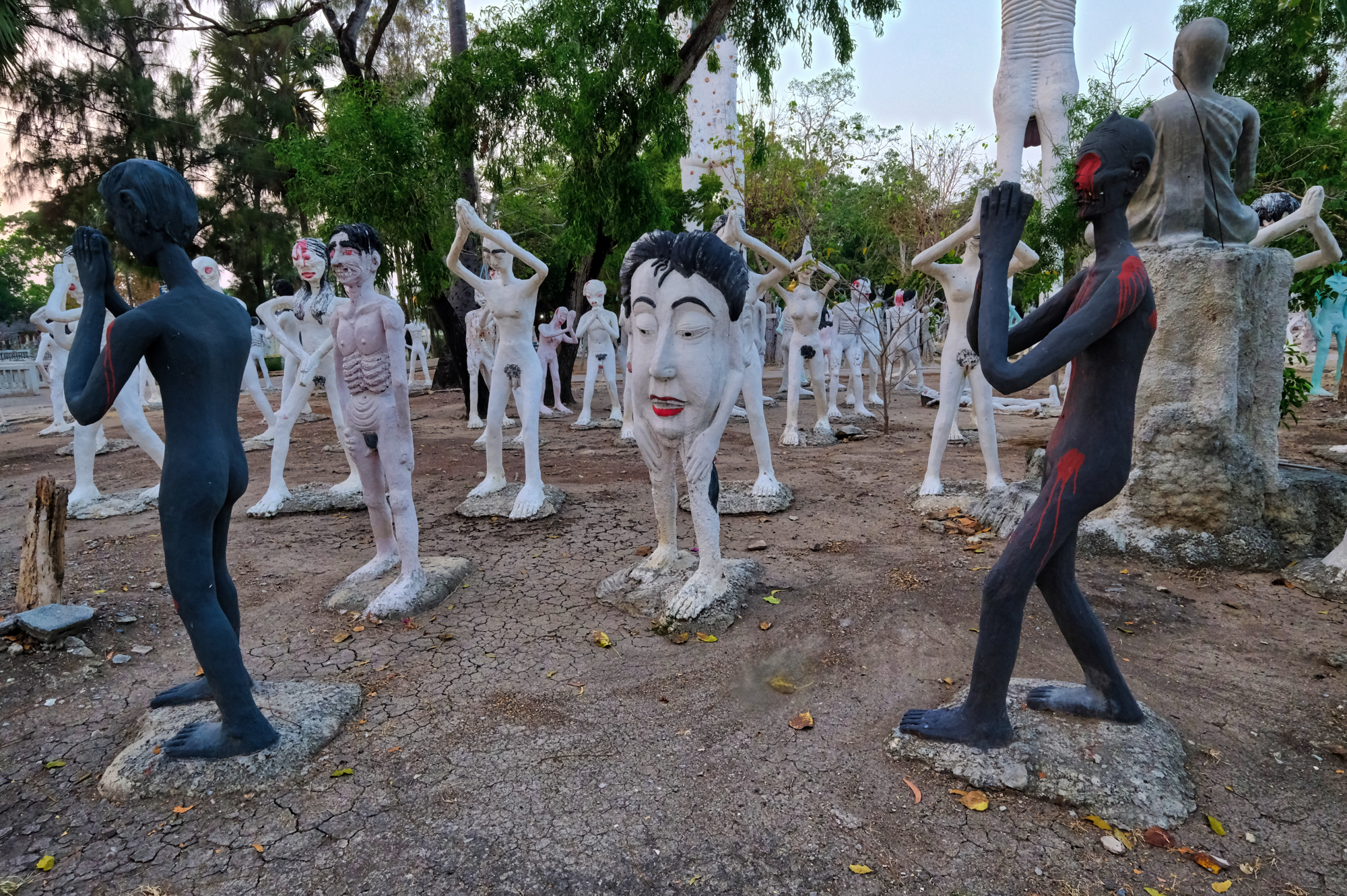 There were places where it looked like whoever made these awful beings had run out of ideas and were just being nutty. I guess making a Hell Garden can have that effect on a person.
There were places where it looked like whoever made these awful beings had run out of ideas and were just being nutty. I guess making a Hell Garden can have that effect on a person.
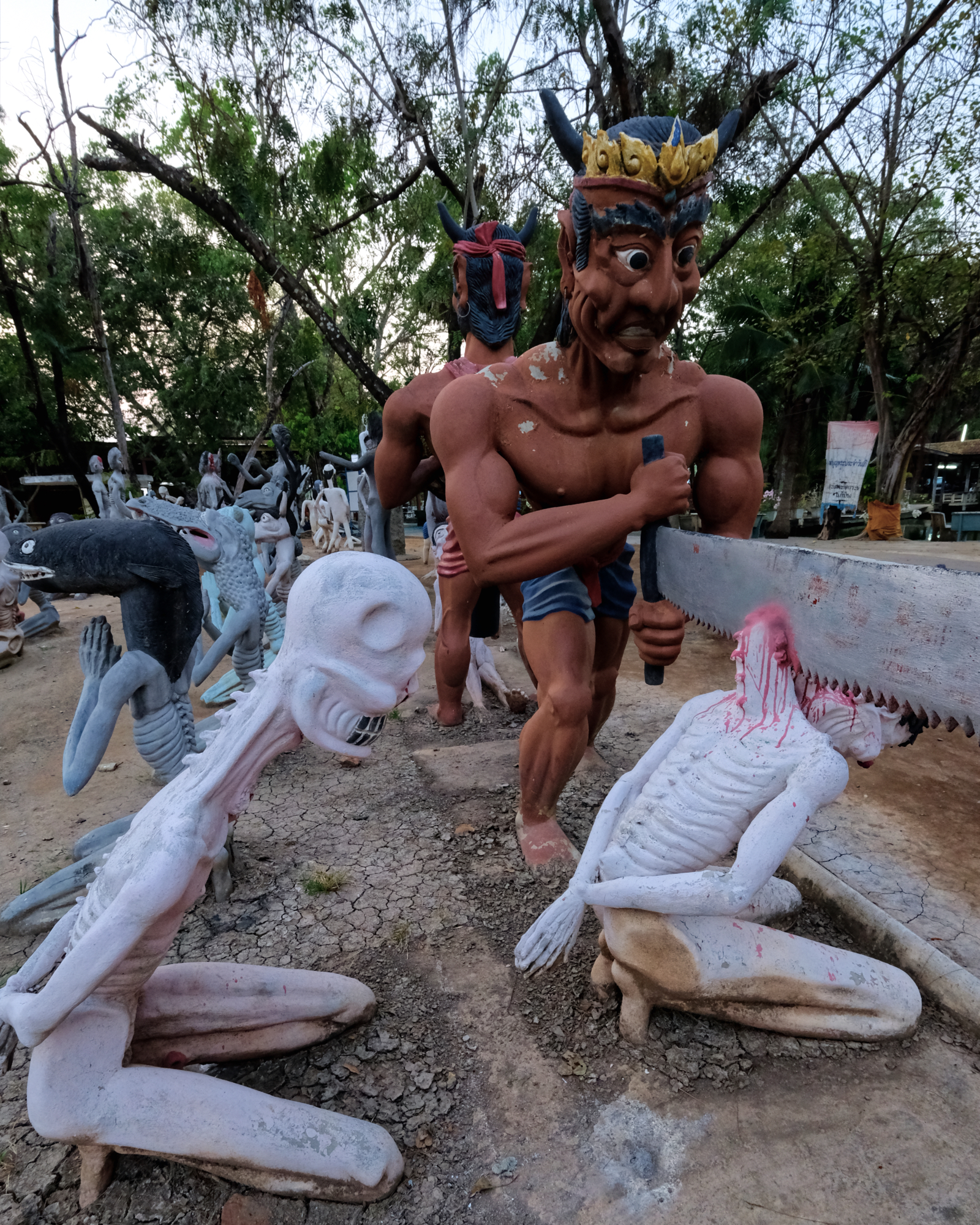 I hate it when this happens. [You KNEW I was going to have to say that!]
I hate it when this happens. [You KNEW I was going to have to say that!]
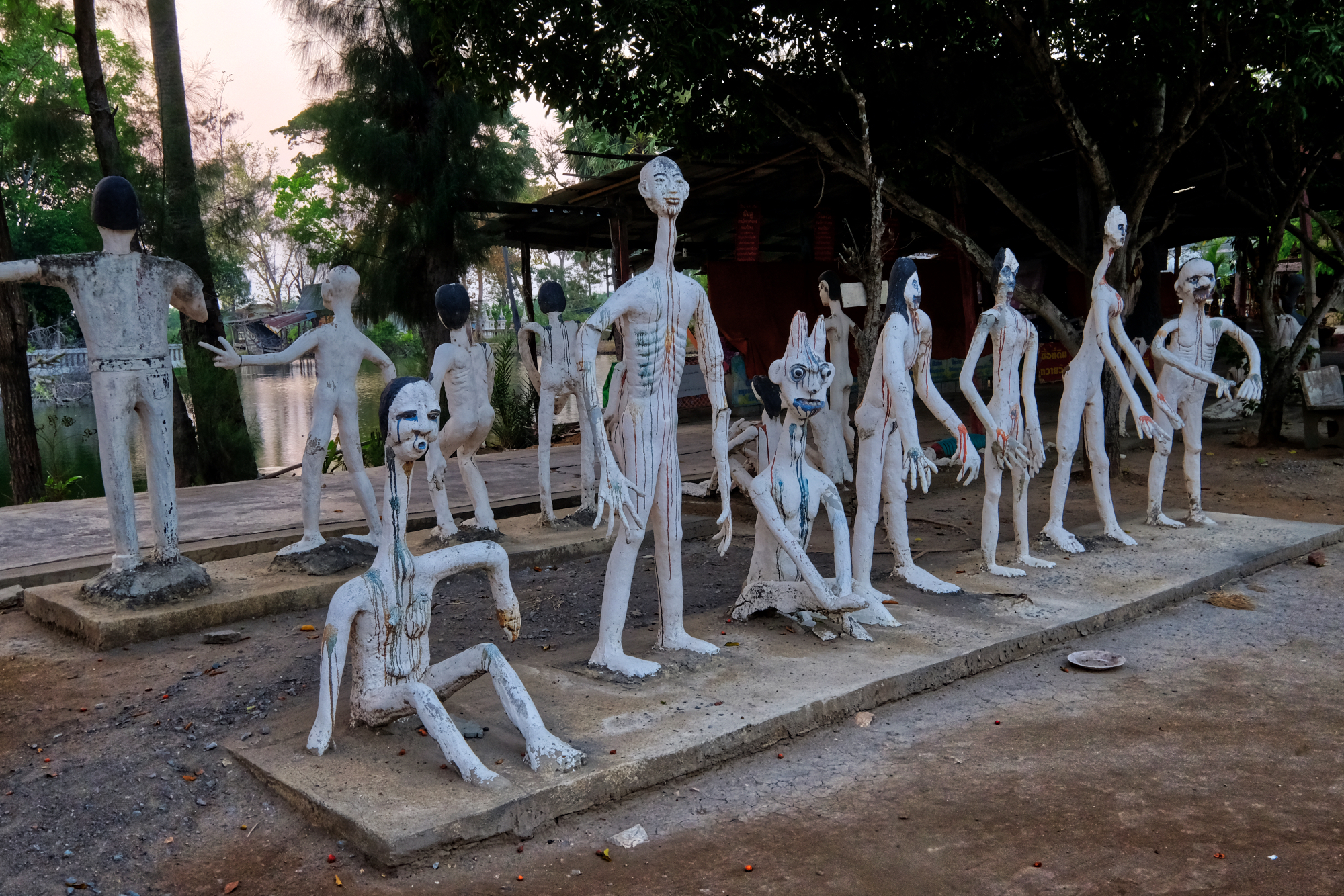 Another style variation on the theme of suffering.
Another style variation on the theme of suffering.
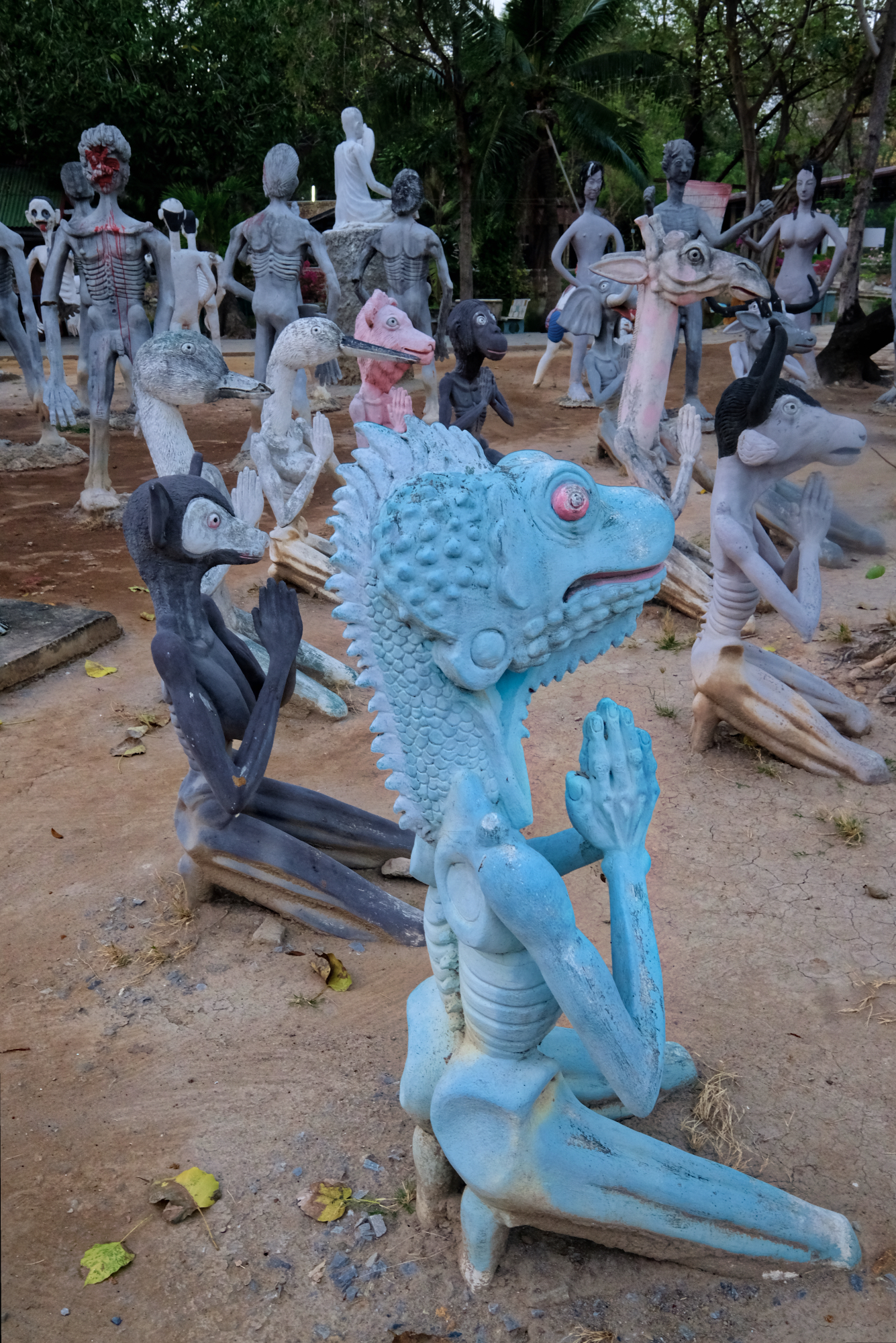 I'm not sure what kind of bad gamma you must have earned to reappear in the Hell Garden as a lizardhead.
I'm not sure what kind of bad gamma you must have earned to reappear in the Hell Garden as a lizardhead.
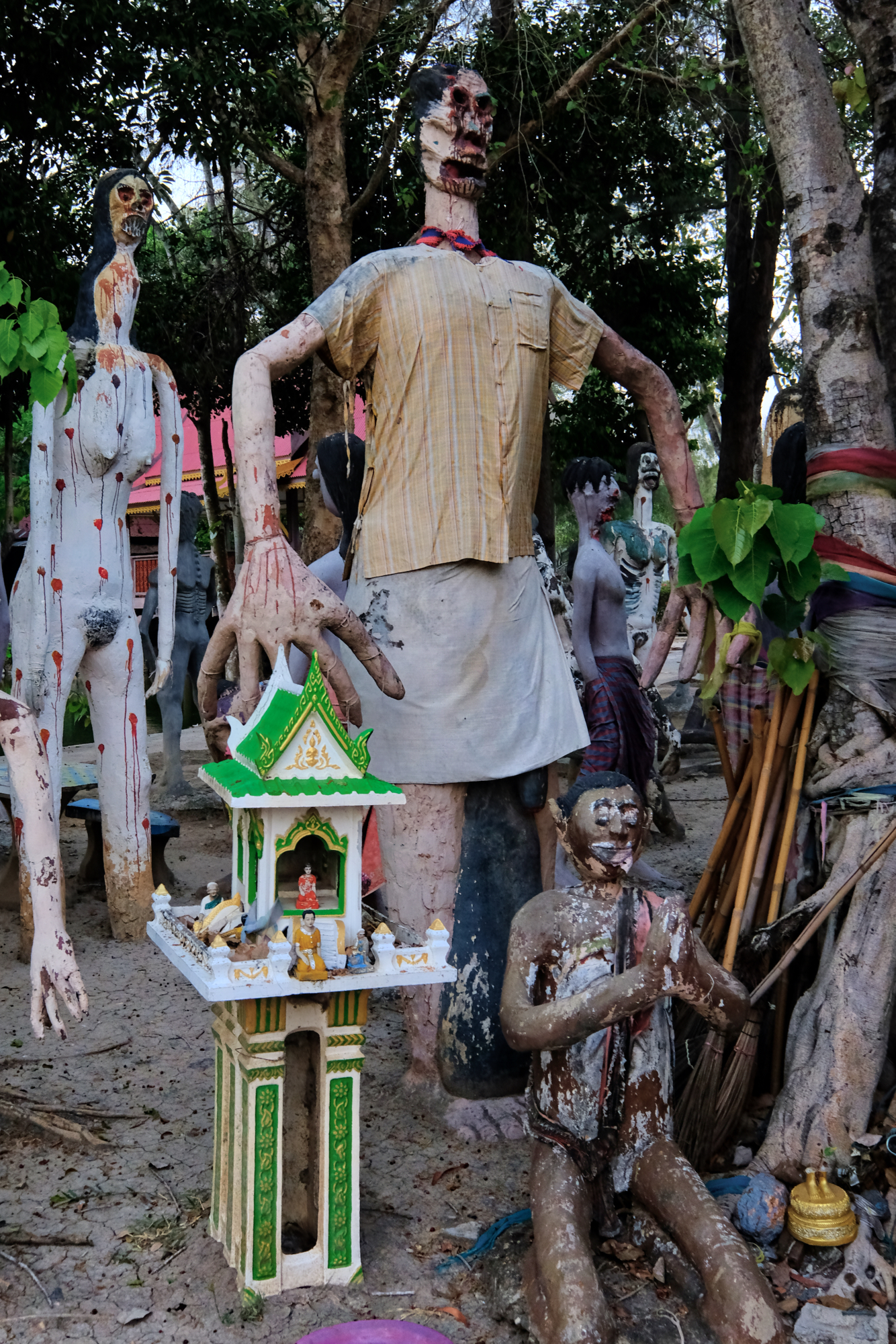 I don't know if it means anything, but I own the exact same shirt.
I don't know if it means anything, but I own the exact same shirt.
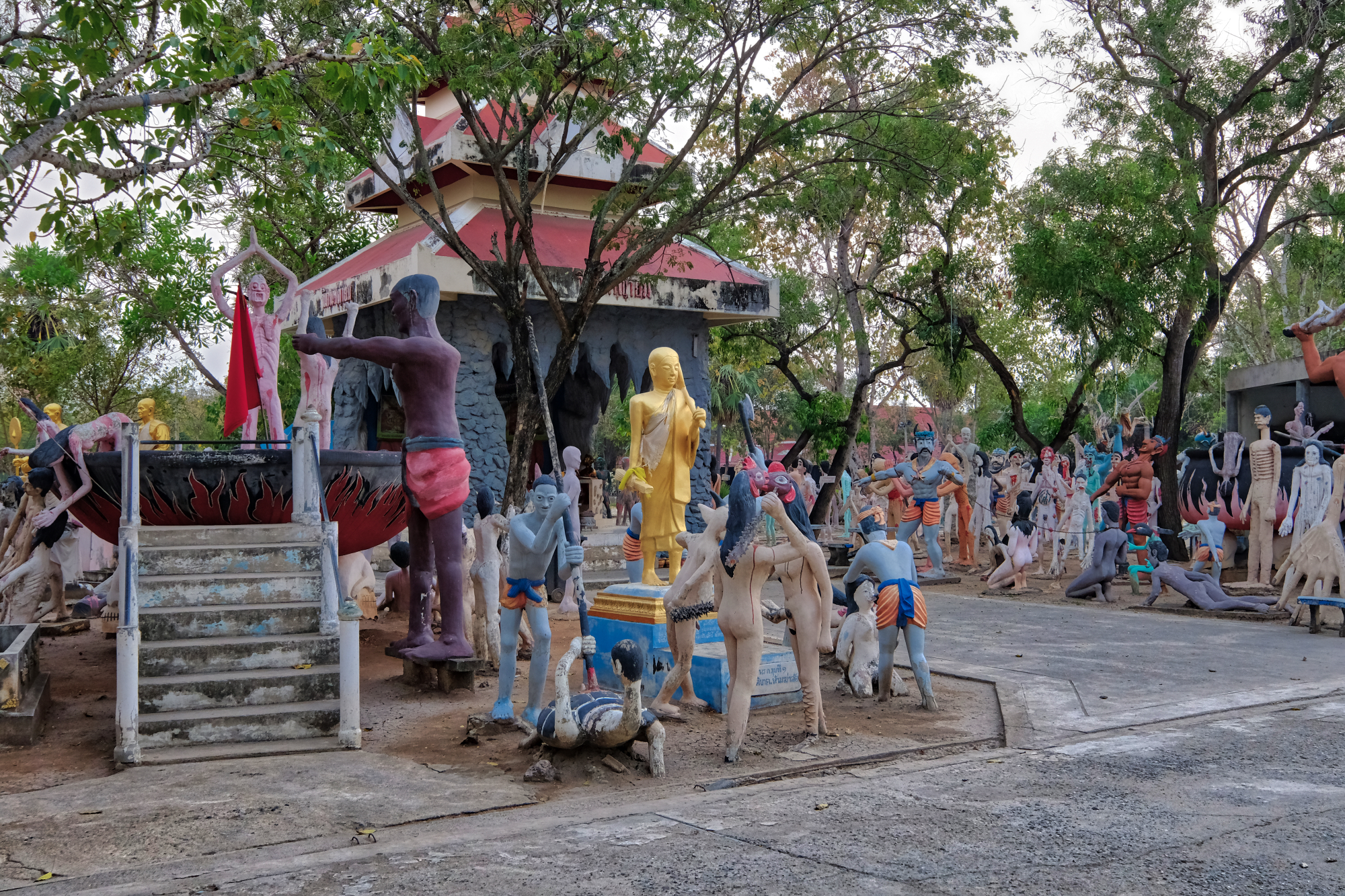 The Hell Garden covered a very large area. A group of Buddhist monks walked through pointing and laughing . . . I was so fascinated with their jovial attitude that I completely forgot to take their photo!
The Hell Garden covered a very large area. A group of Buddhist monks walked through pointing and laughing . . . I was so fascinated with their jovial attitude that I completely forgot to take their photo!
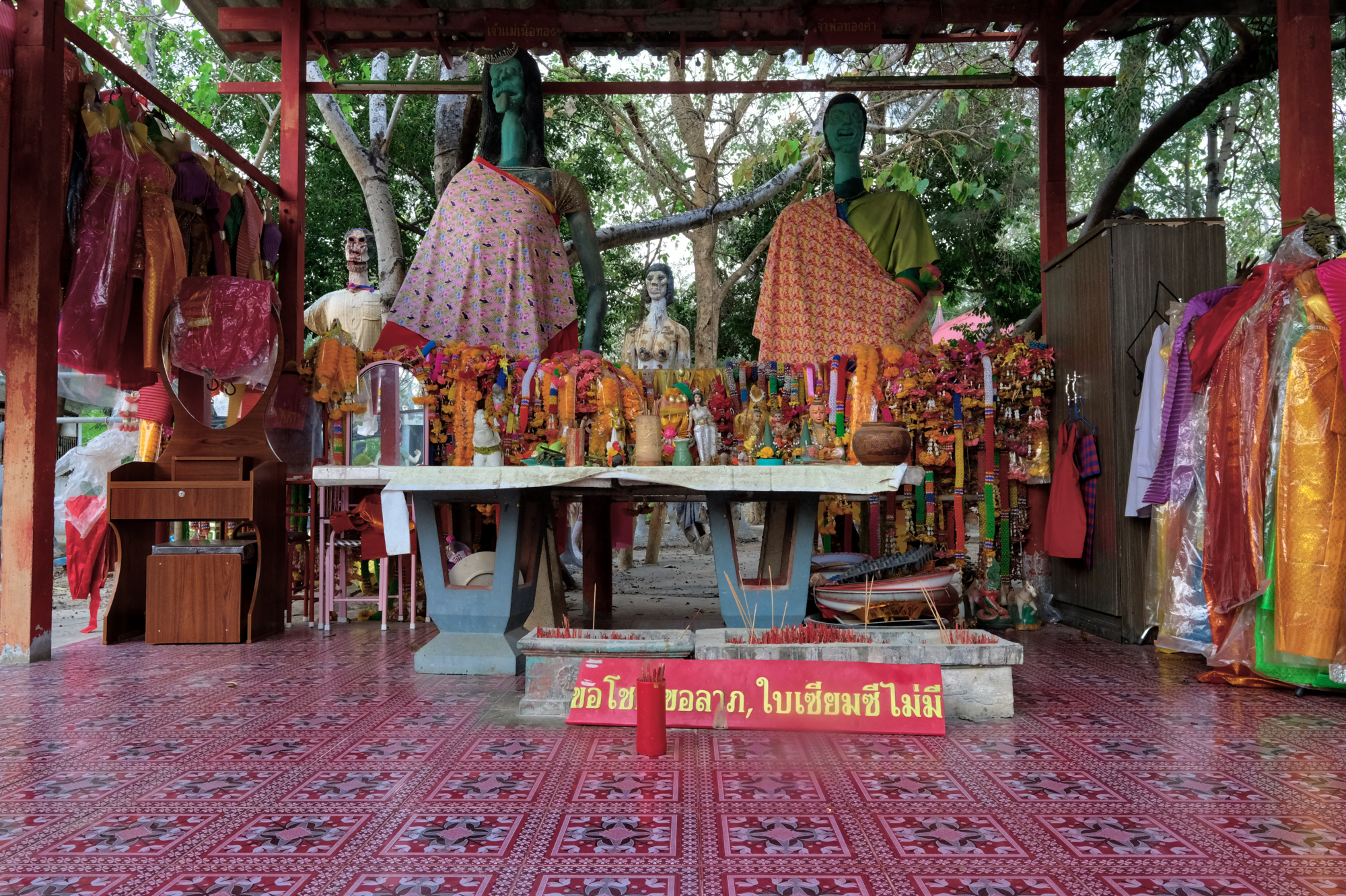 There was a small structure within the Hell Garden that held what seemed like offerings.
There was a small structure within the Hell Garden that held what seemed like offerings.
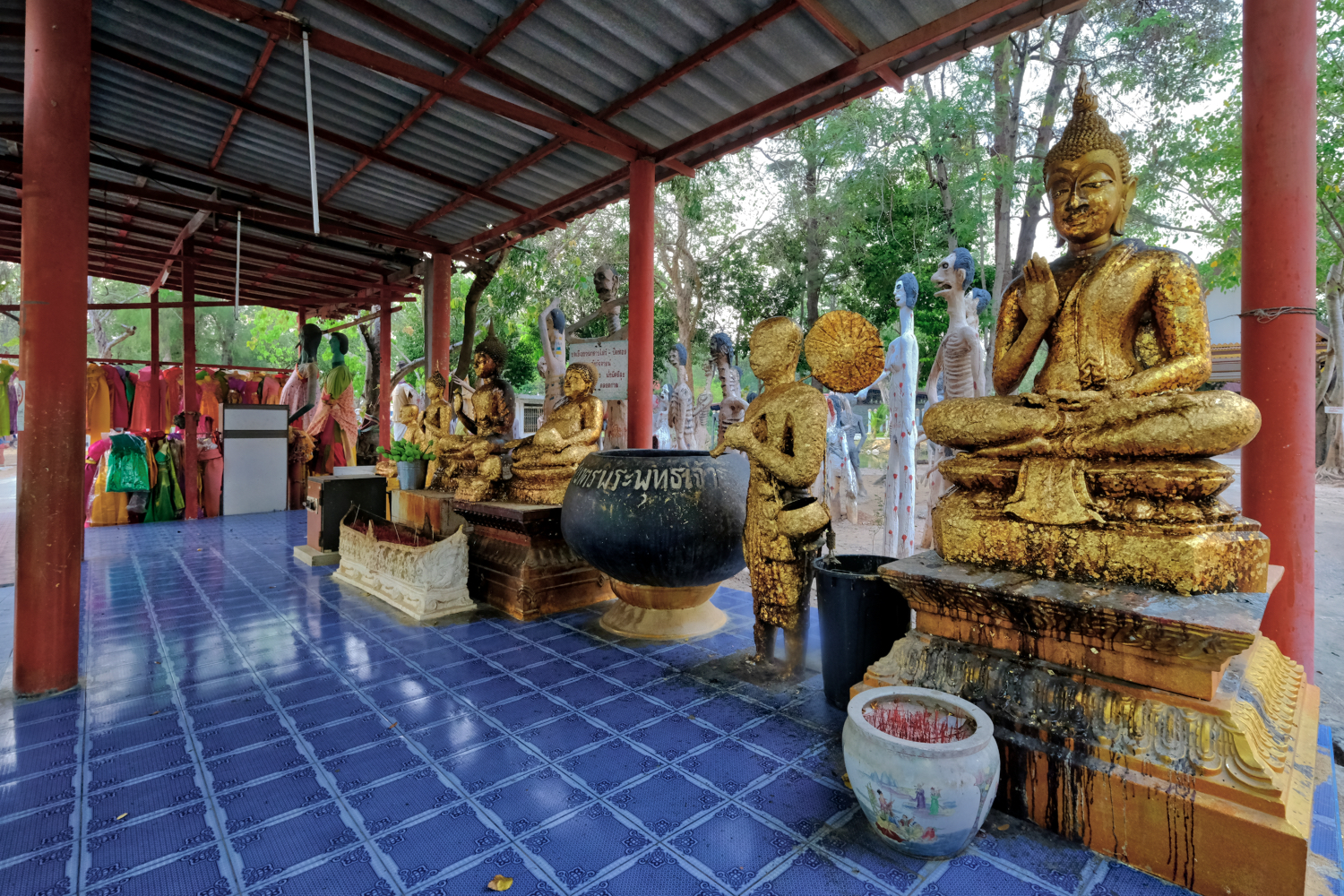 There was even a row of Buddha images . . . but it was hard to tell if these weren't depictions of 'fallen' Buddhas . . .
There was even a row of Buddha images . . . but it was hard to tell if these weren't depictions of 'fallen' Buddhas . . .
 When we had seen enough human suffering we left over the bridge we came over.
When we had seen enough human suffering we left over the bridge we came over.
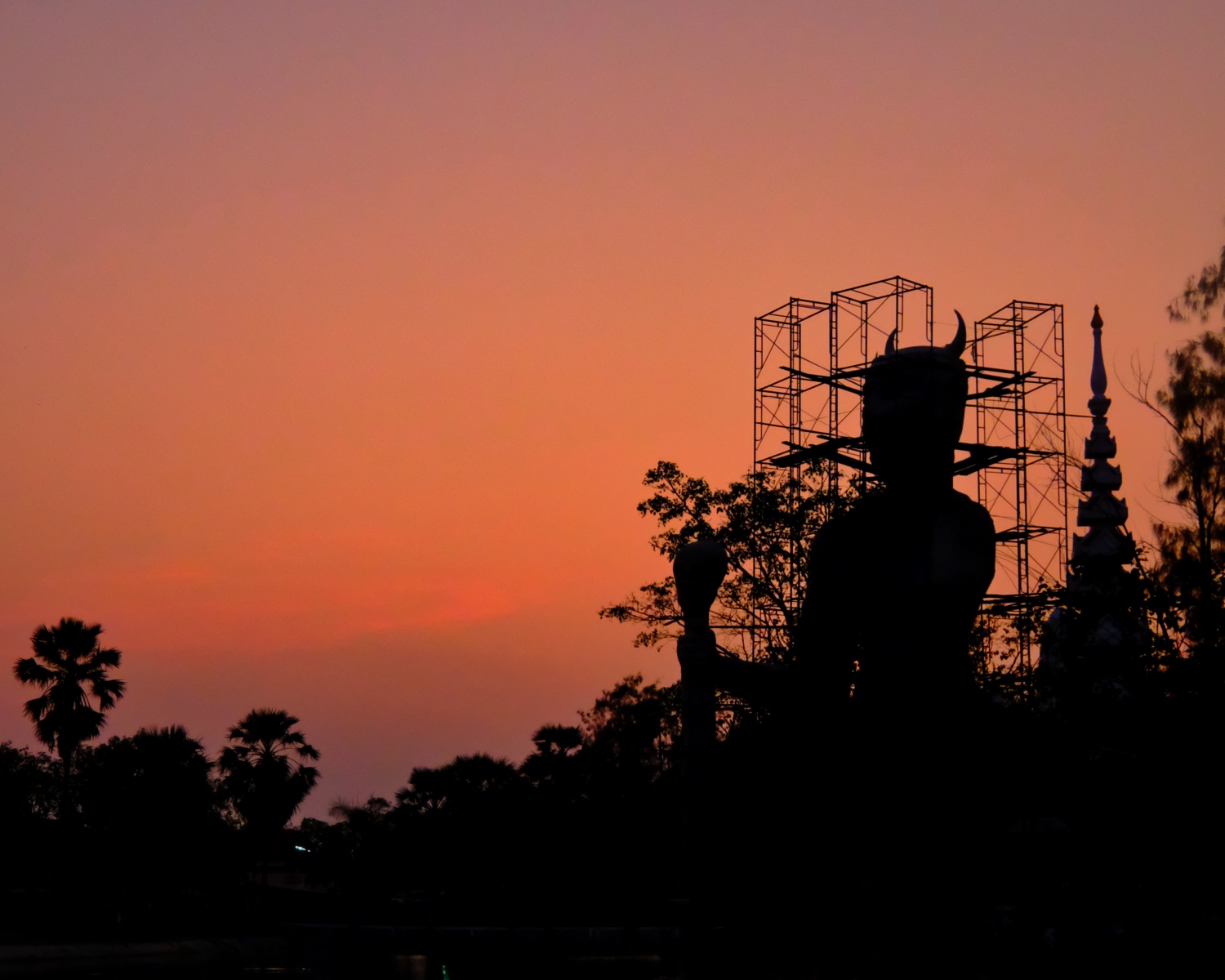 It had been a wonderful day that left us with fabulous images running around our heads (and on our storage cards!) . . . and many questions left unanswered.
It had been a wonderful day that left us with fabulous images running around our heads (and on our storage cards!) . . . and many questions left unanswered.
Suphanburi Province: A Day Trip Northwest Of Bangkok
 Wednesday, March 14, 2018 at 8:31AM
Wednesday, March 14, 2018 at 8:31AM A RAMBLE IN FOUR PARTS
Part Three: Thai Farm Museum and Lemon Temple
My friend John Stiles and I set off in my old truck up the road to the rural province of Suphanburi, to the northwest of Bangkok. As usual, we had a vague idea, from a tertiary Google search, of what we wanted to see, but no particular plan: we would ramble. We would eventually see several amazing Buddhist temple complexes, a Buffalo park, and a Farm Museum. We never 'found' the actual town of Suphanburi, but we didn't care: we had a grand adventure rambling about the rural Thai countryside.
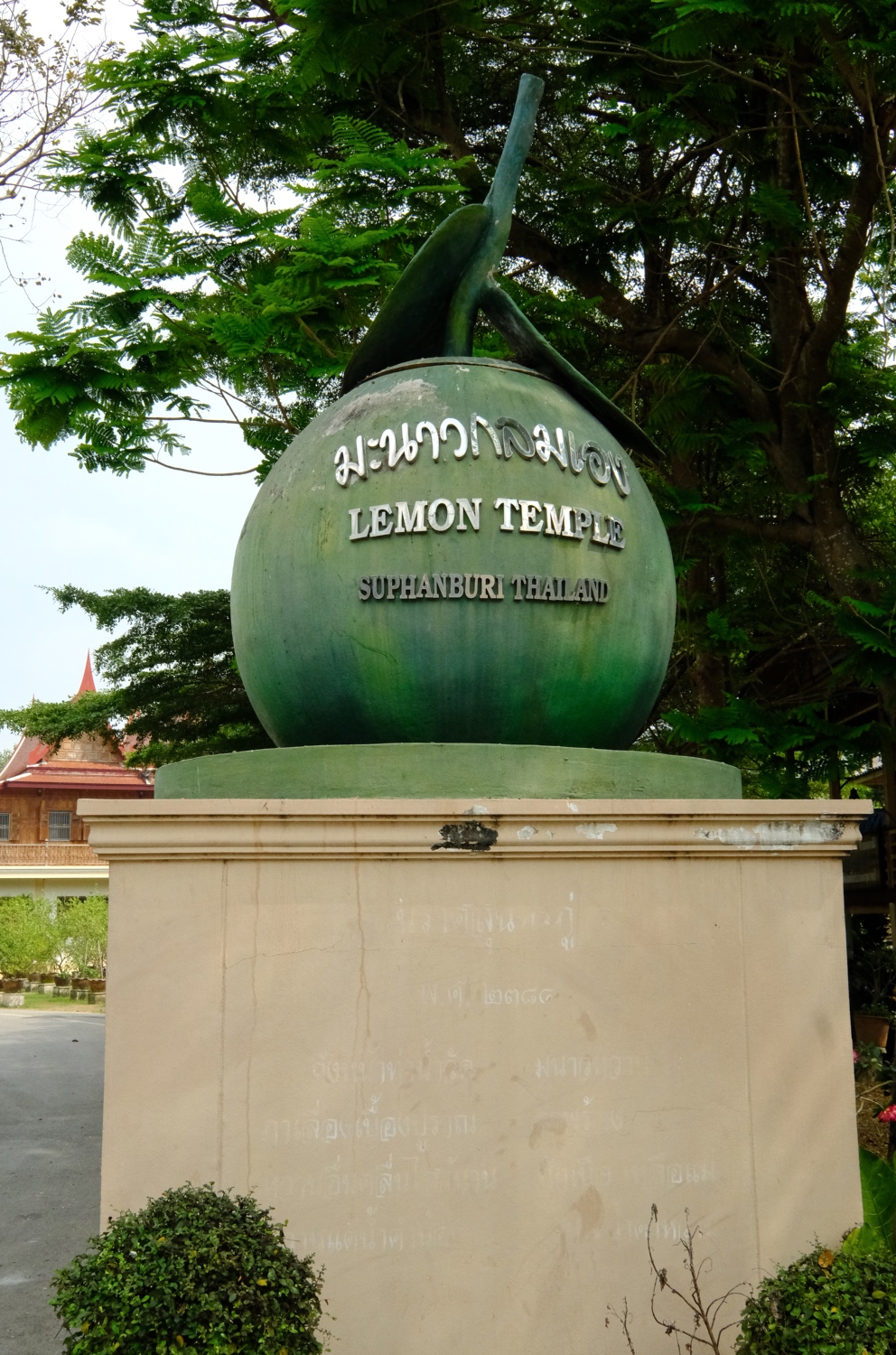 Never trust your GPS completely. After a wonderful stop at a river Wat we decided we wanted to see the Farm Museum, so we punched it into the GPS and took off. 20 minutes later we arrived at the spot on the GPS map and found the Lemon Temple instead. Where is the Farm Museum, we thought?
Never trust your GPS completely. After a wonderful stop at a river Wat we decided we wanted to see the Farm Museum, so we punched it into the GPS and took off. 20 minutes later we arrived at the spot on the GPS map and found the Lemon Temple instead. Where is the Farm Museum, we thought?
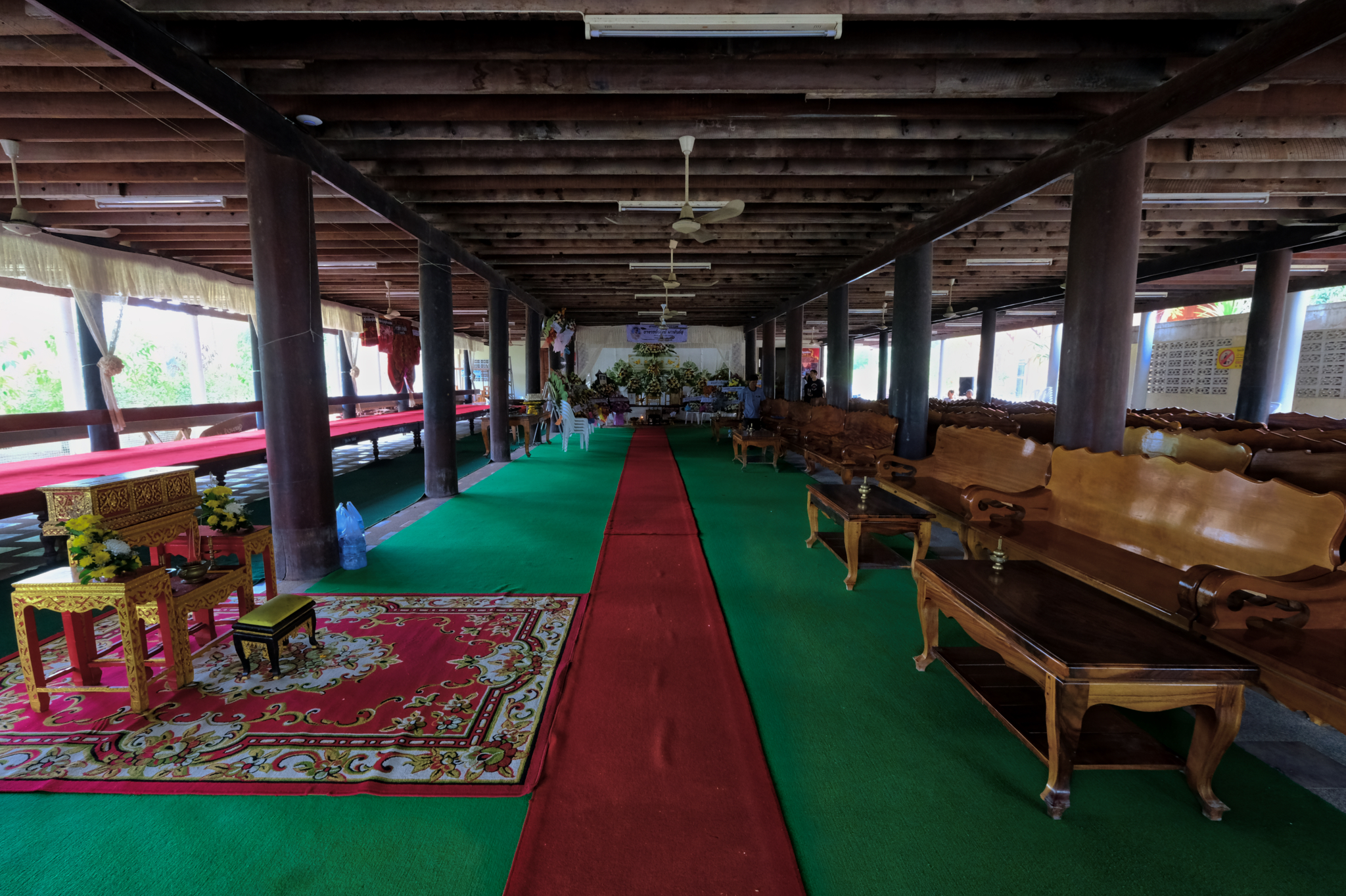 We walked around a little and could not find anything like a Farm Museum. Instead we found an interesting 'spiritual center' - a kind of Buddhist temple - and walked in to ask where the Farm Museum was.
We walked around a little and could not find anything like a Farm Museum. Instead we found an interesting 'spiritual center' - a kind of Buddhist temple - and walked in to ask where the Farm Museum was.
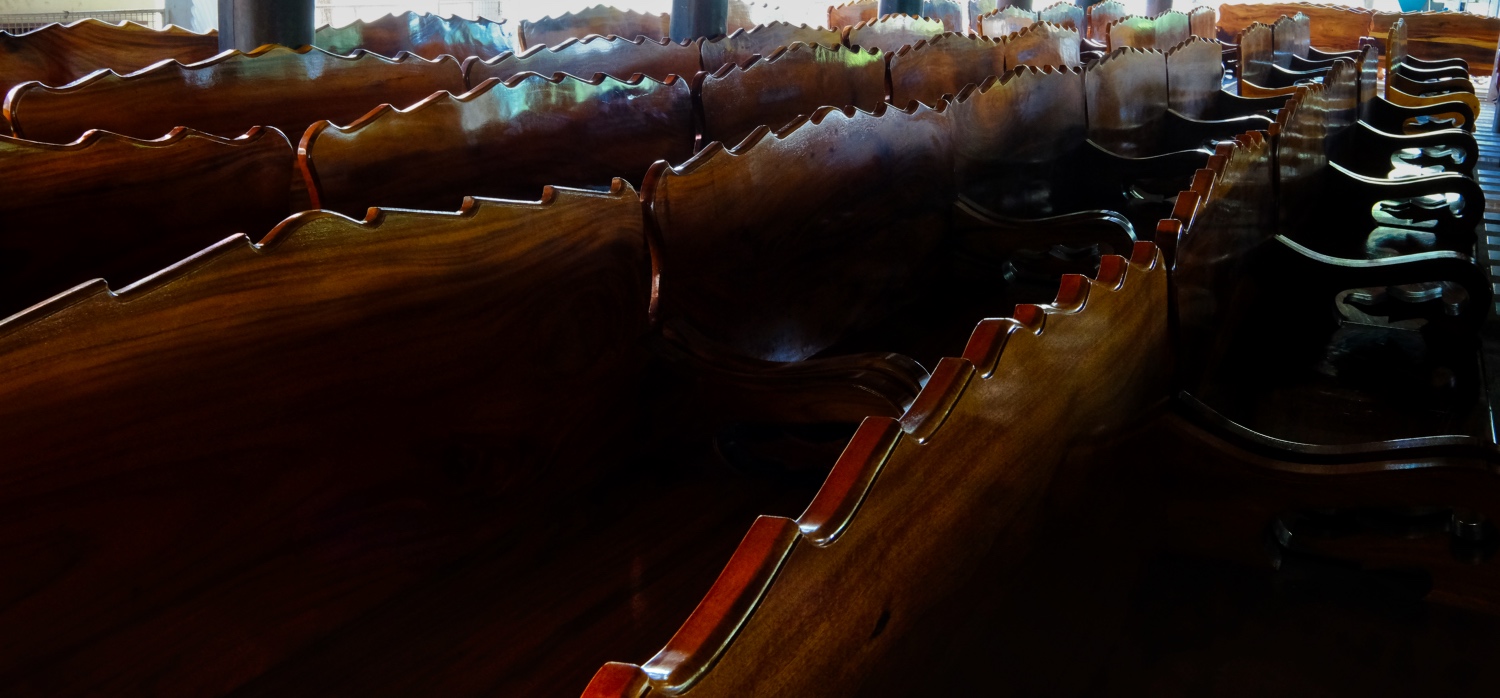 Whoever is making donations to this temple must be expecting large crowds. Beautiful wooden pews. John found someone to ask . . . they said we were about 20K from the Farm Museum. Oops! Wrong place . . . but still interesting.
Whoever is making donations to this temple must be expecting large crowds. Beautiful wooden pews. John found someone to ask . . . they said we were about 20K from the Farm Museum. Oops! Wrong place . . . but still interesting.
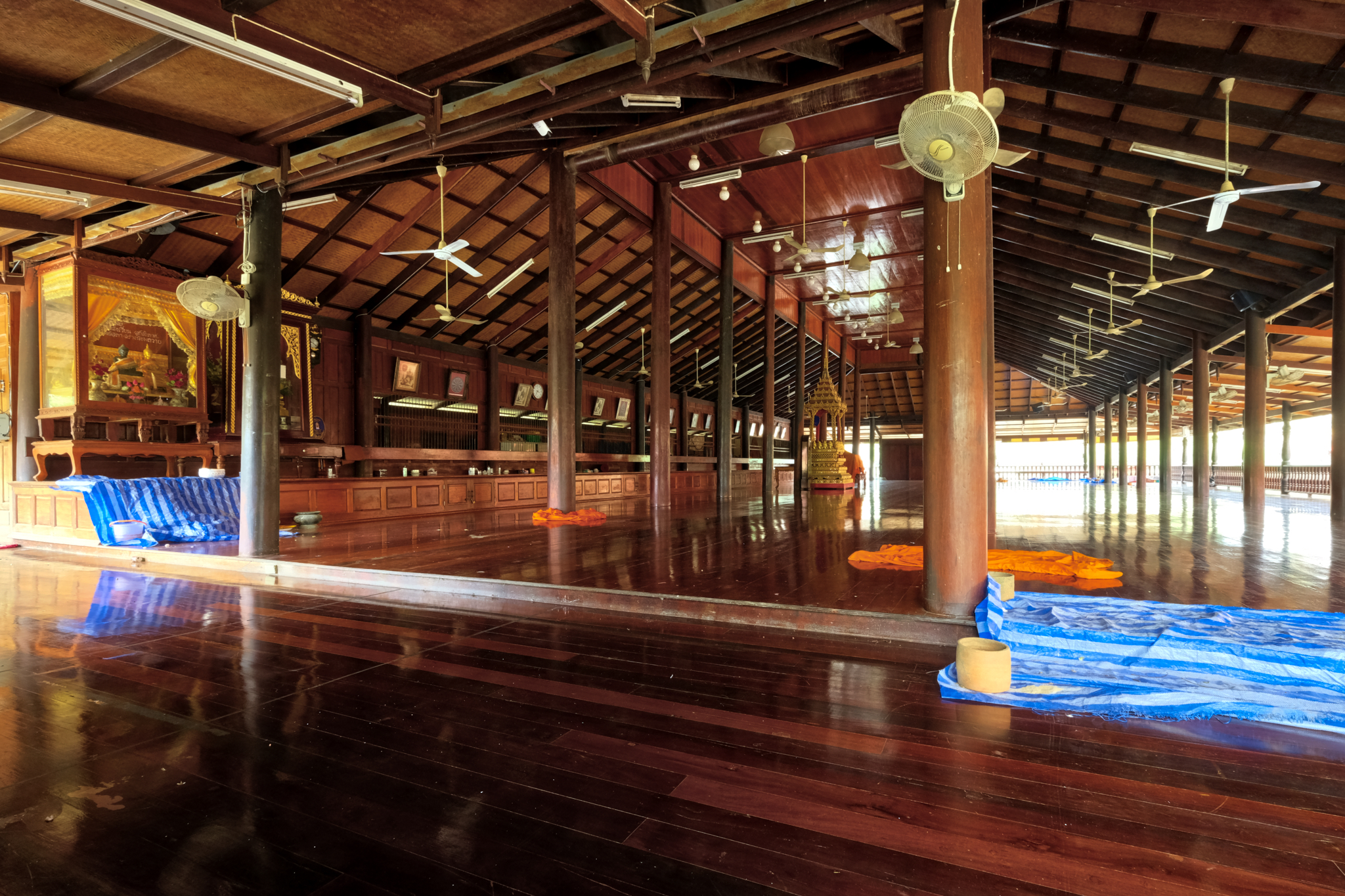 I walked around a bit and went up some stairs to find a locked door. Fortunately there was a window I could rest my camera on to take this HDR shot of the temple upper floor. The raised platform to the left is where the monks would sit and chant.
I walked around a bit and went up some stairs to find a locked door. Fortunately there was a window I could rest my camera on to take this HDR shot of the temple upper floor. The raised platform to the left is where the monks would sit and chant.
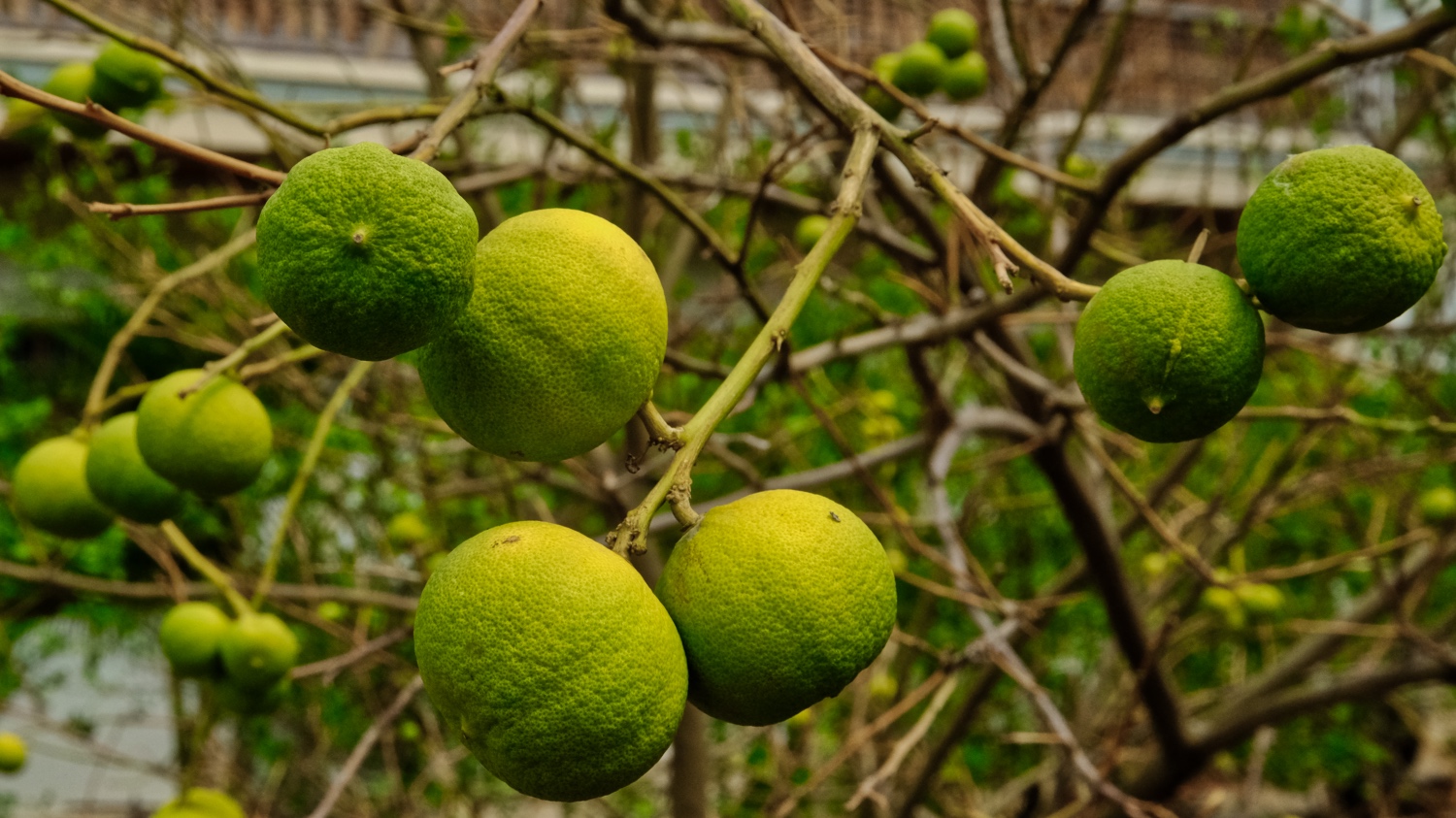 We spent 10 minutes at the Lemon Temple, found the lemon bushes, and left for Farm Museum.
We spent 10 minutes at the Lemon Temple, found the lemon bushes, and left for Farm Museum.
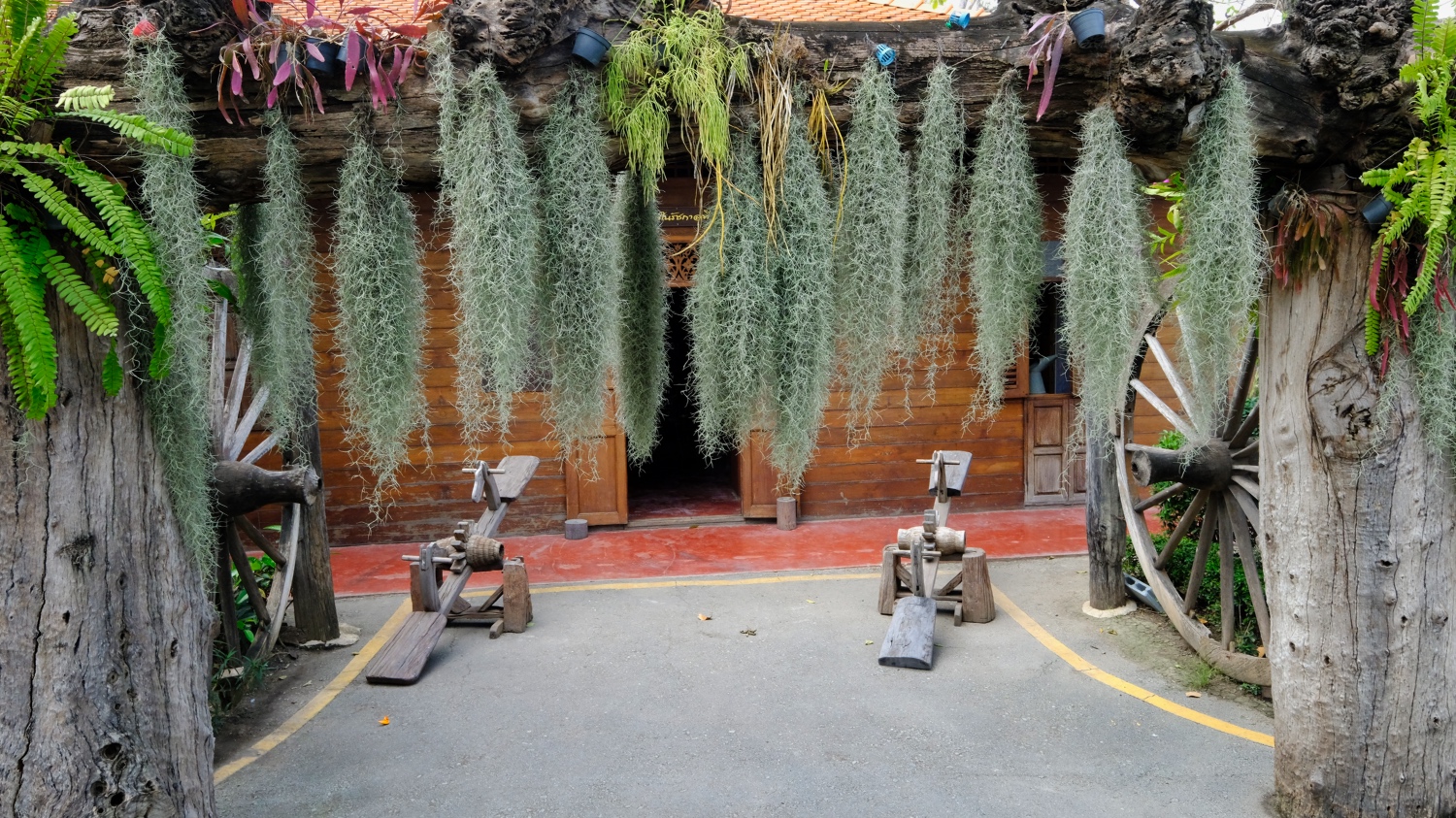 The entrance to the Lifestyle and Spirit of Thai Farmers Learning Center looked promising. And we were hungry.
The entrance to the Lifestyle and Spirit of Thai Farmers Learning Center looked promising. And we were hungry.
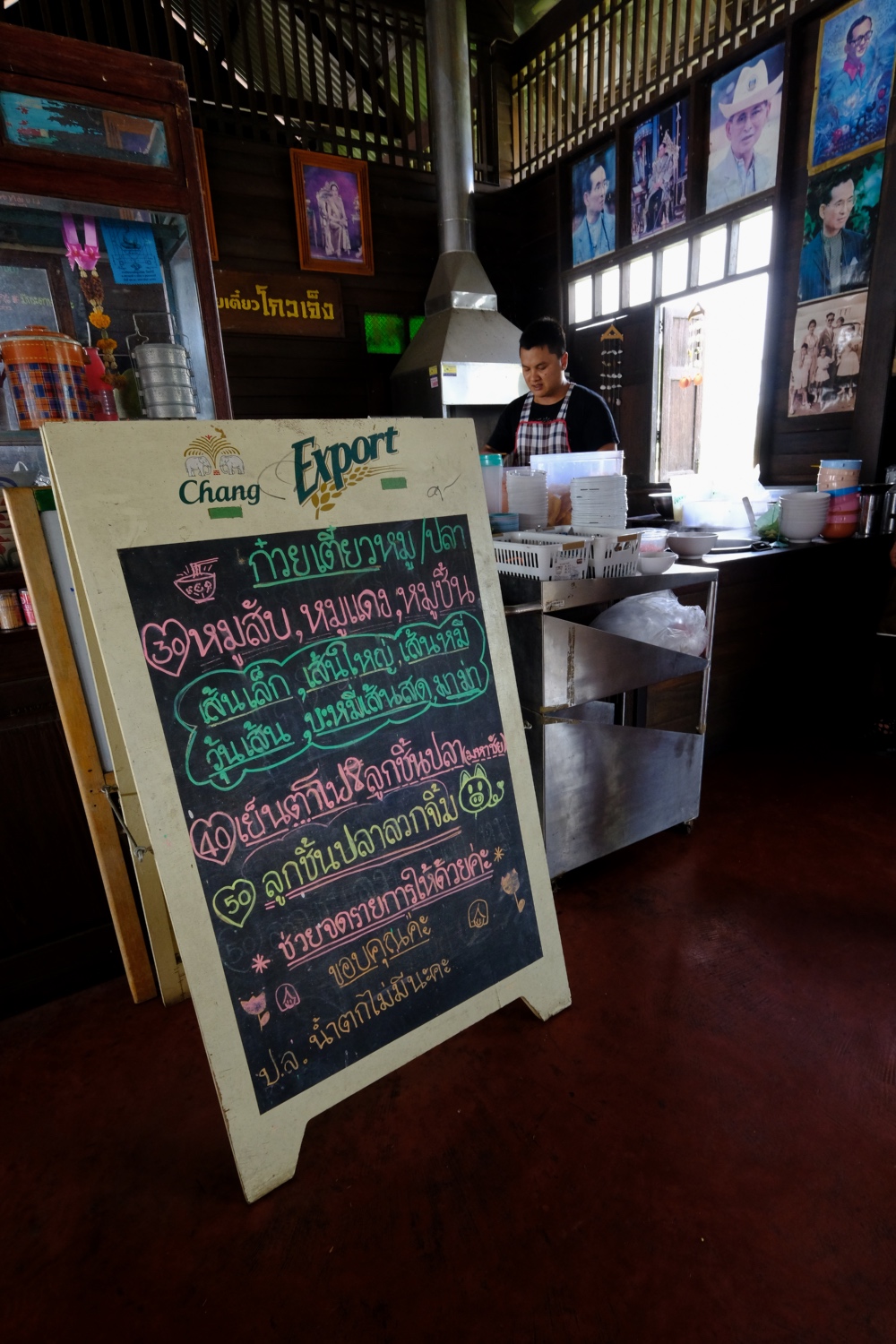 Fortunately they had an eatery where we could get a bowl of noodle soup. They also had a cafe where we had a fine cup of coffee.
Fortunately they had an eatery where we could get a bowl of noodle soup. They also had a cafe where we had a fine cup of coffee.
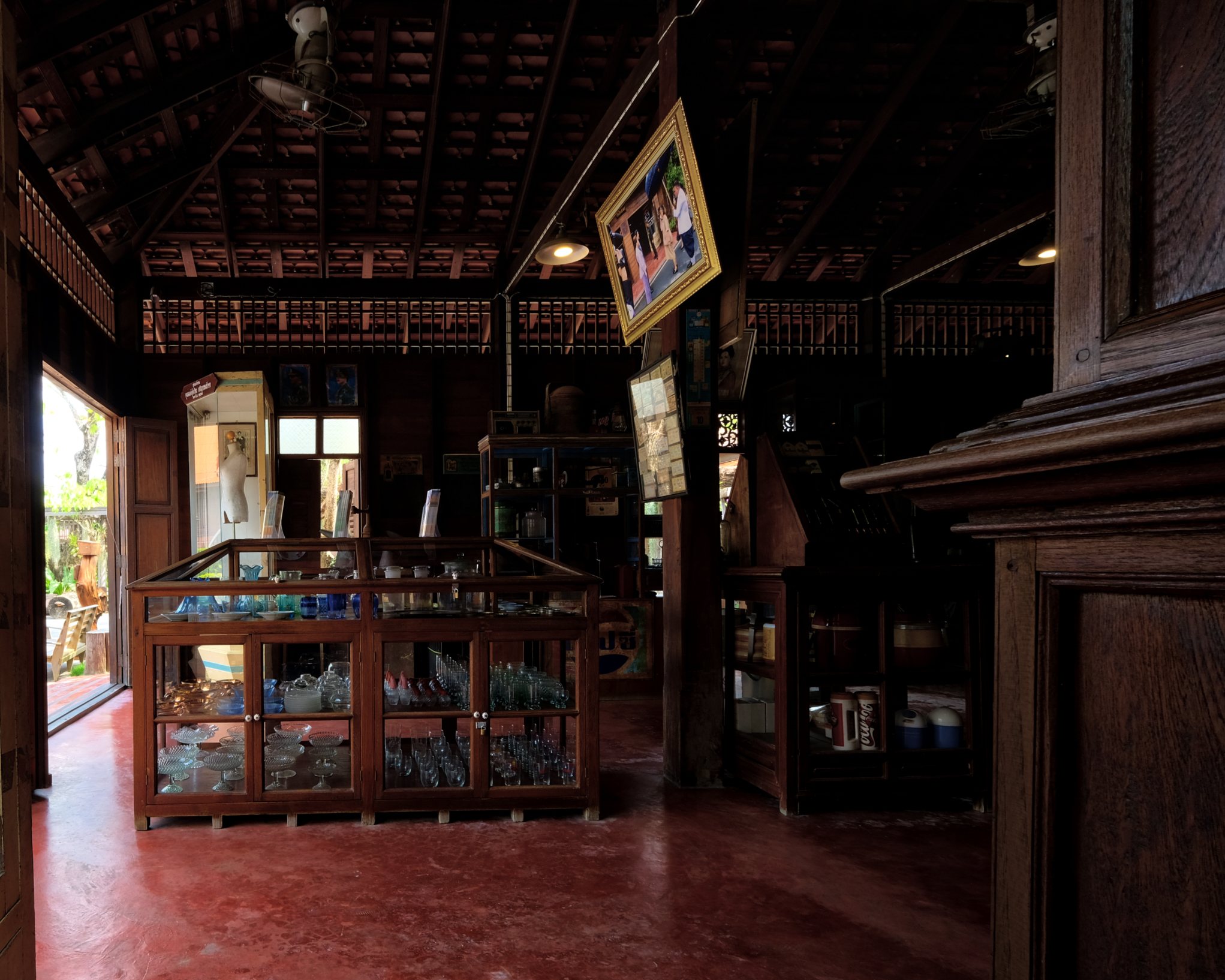 The museum had a fine recreated historical rural shop.
The museum had a fine recreated historical rural shop.
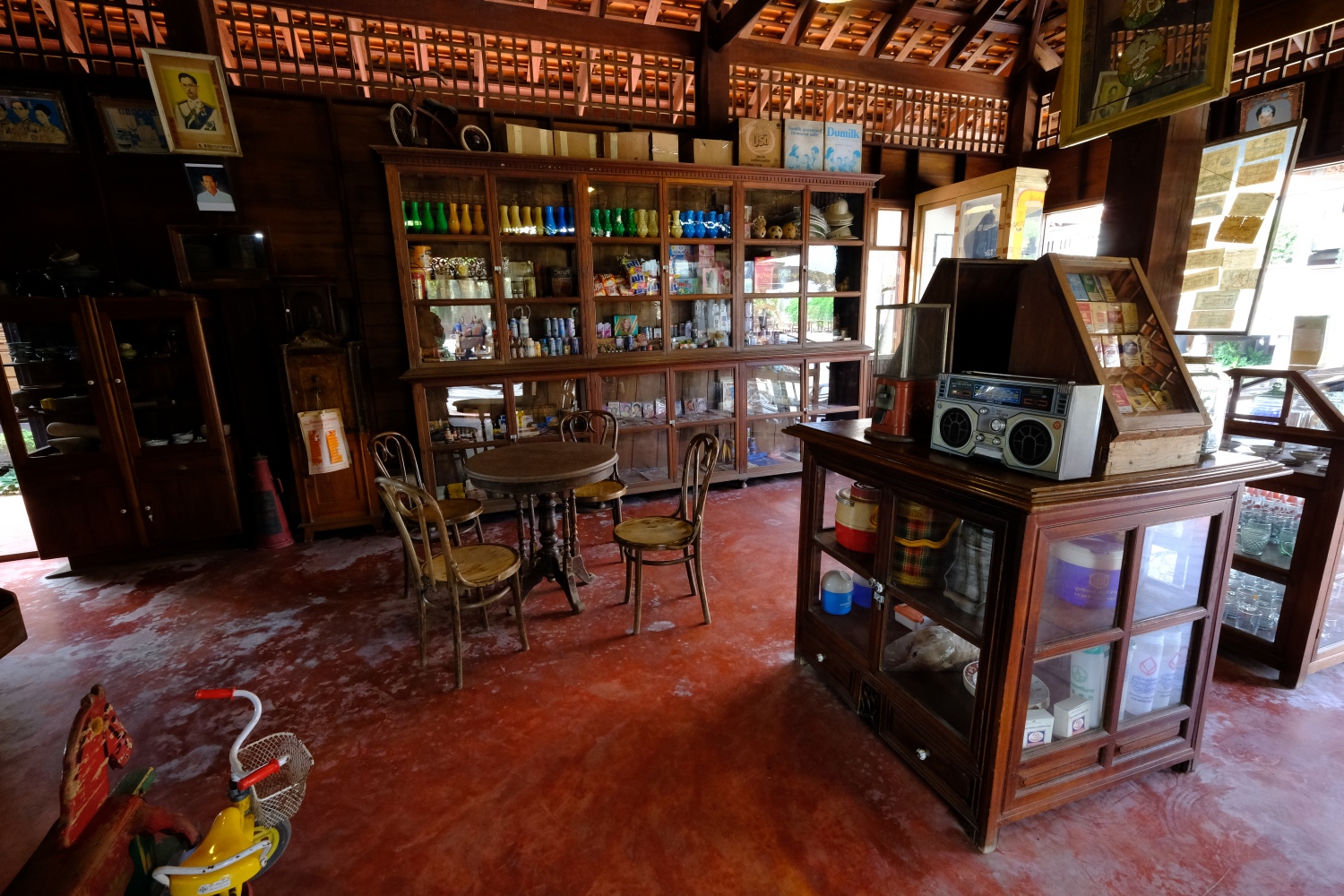 Historical store.
Historical store.
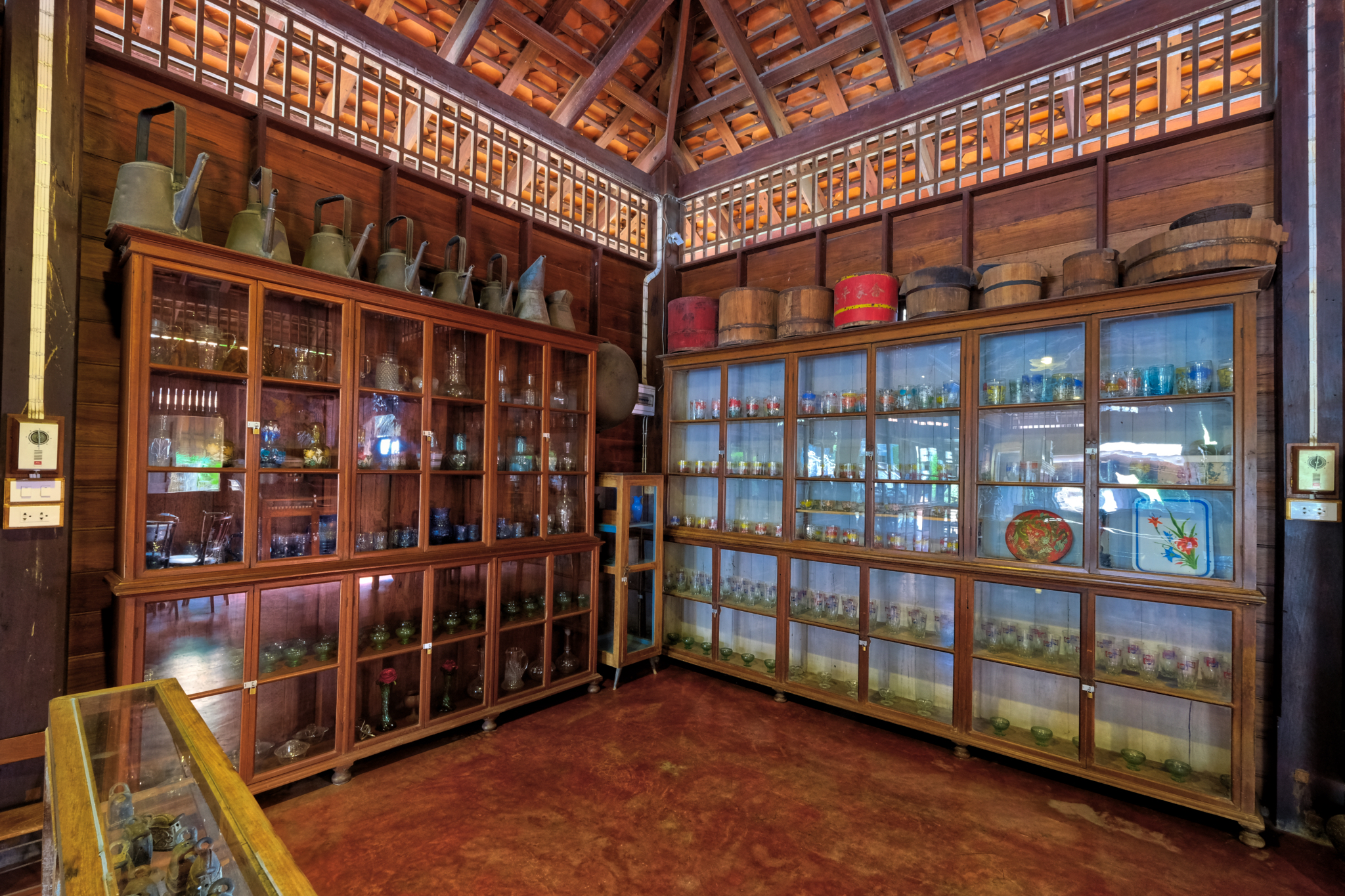 A very beautiful space.
A very beautiful space.
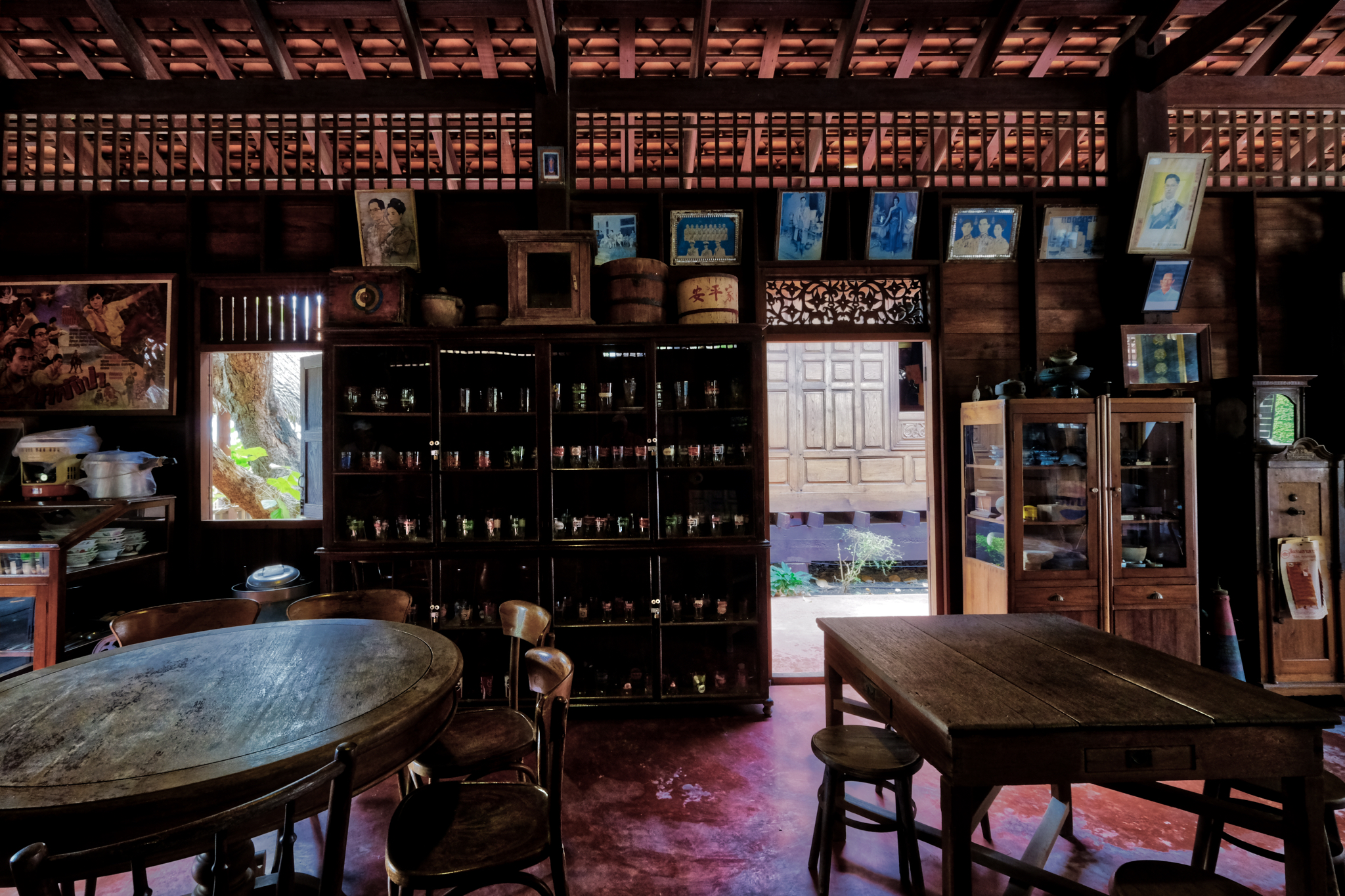 Strangely, not all the items on the display shelves were old and antique.
Strangely, not all the items on the display shelves were old and antique.
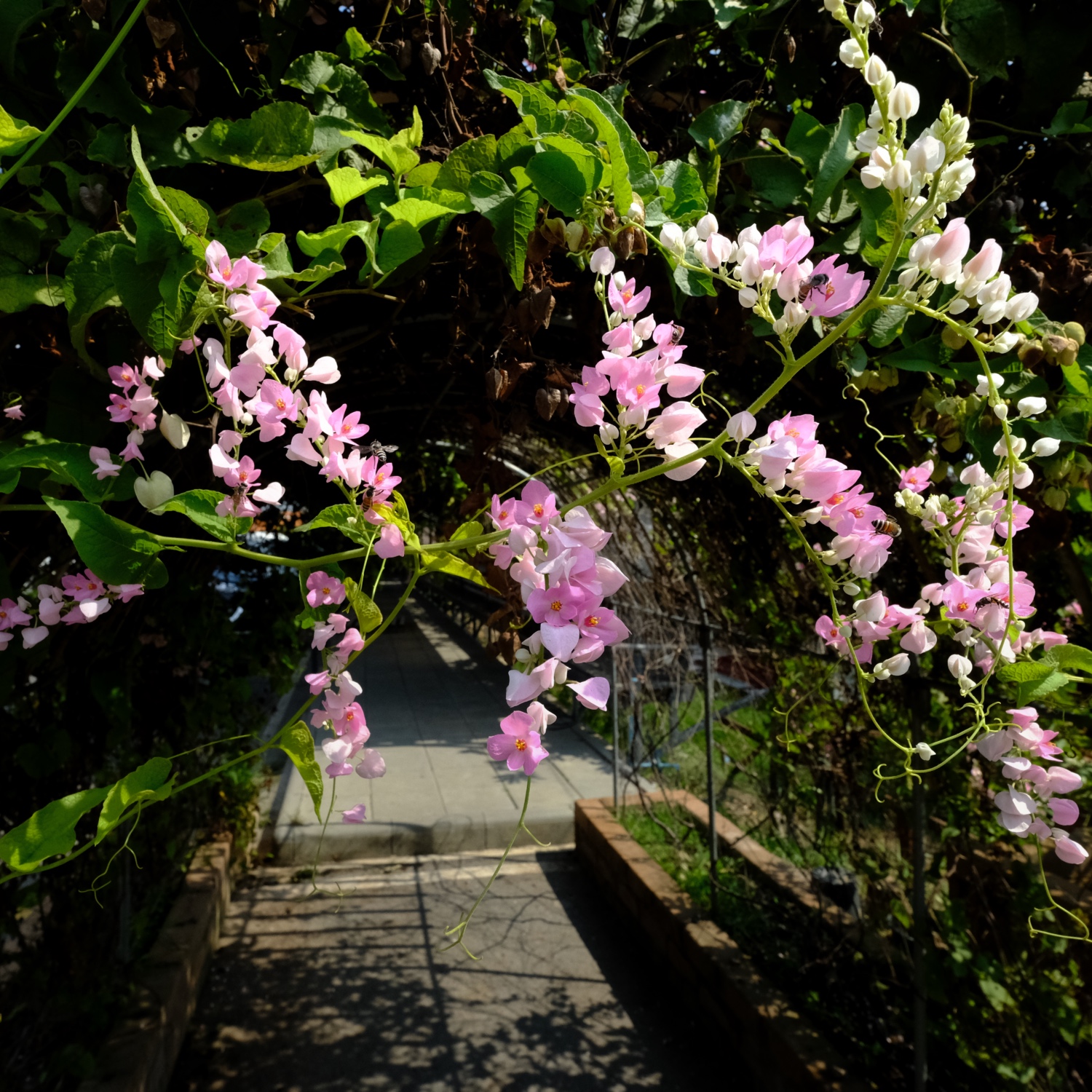 It was a very beautiful place with covered walkways.
It was a very beautiful place with covered walkways.
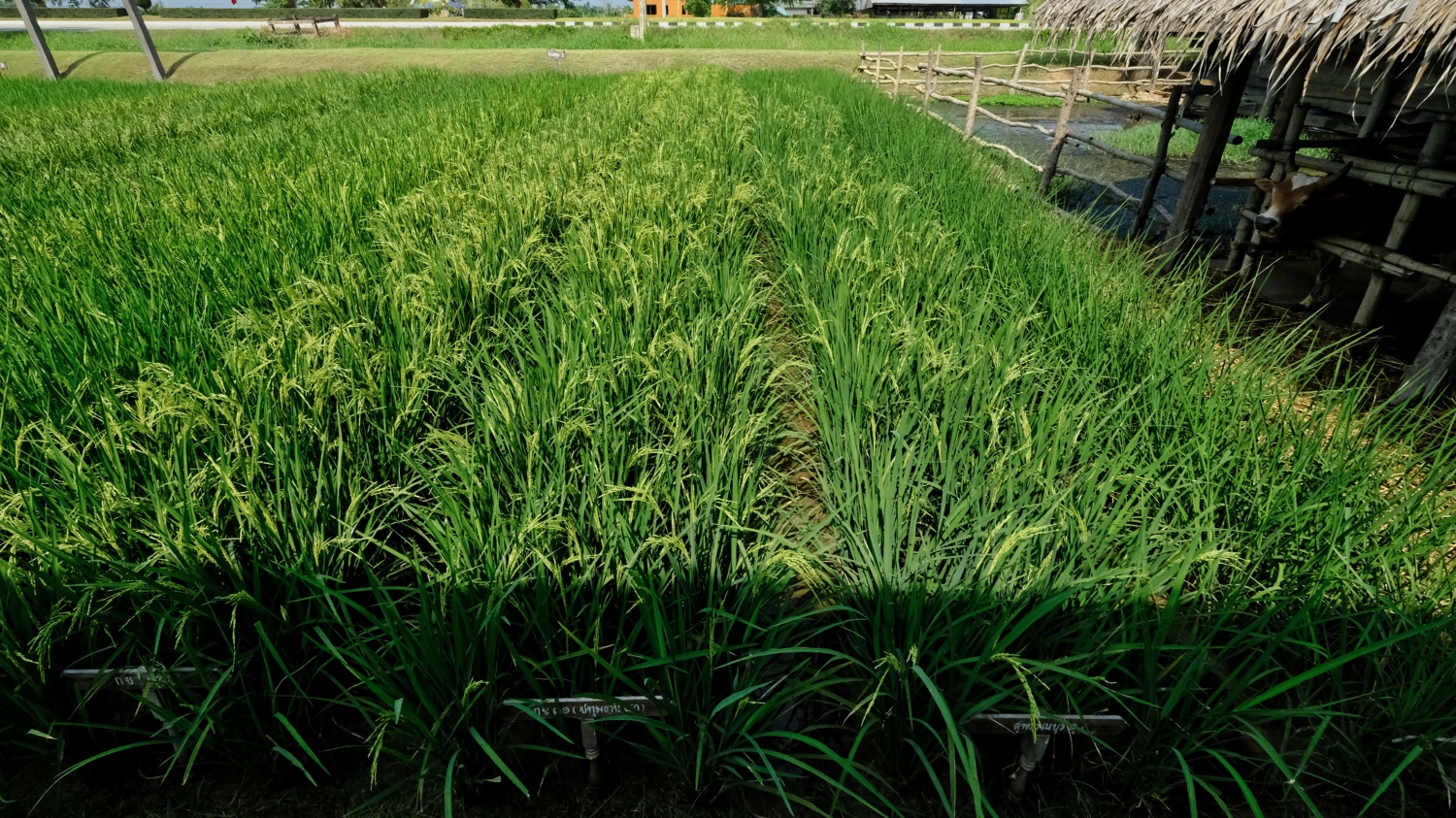 There were fields to show different types of rice.
There were fields to show different types of rice.
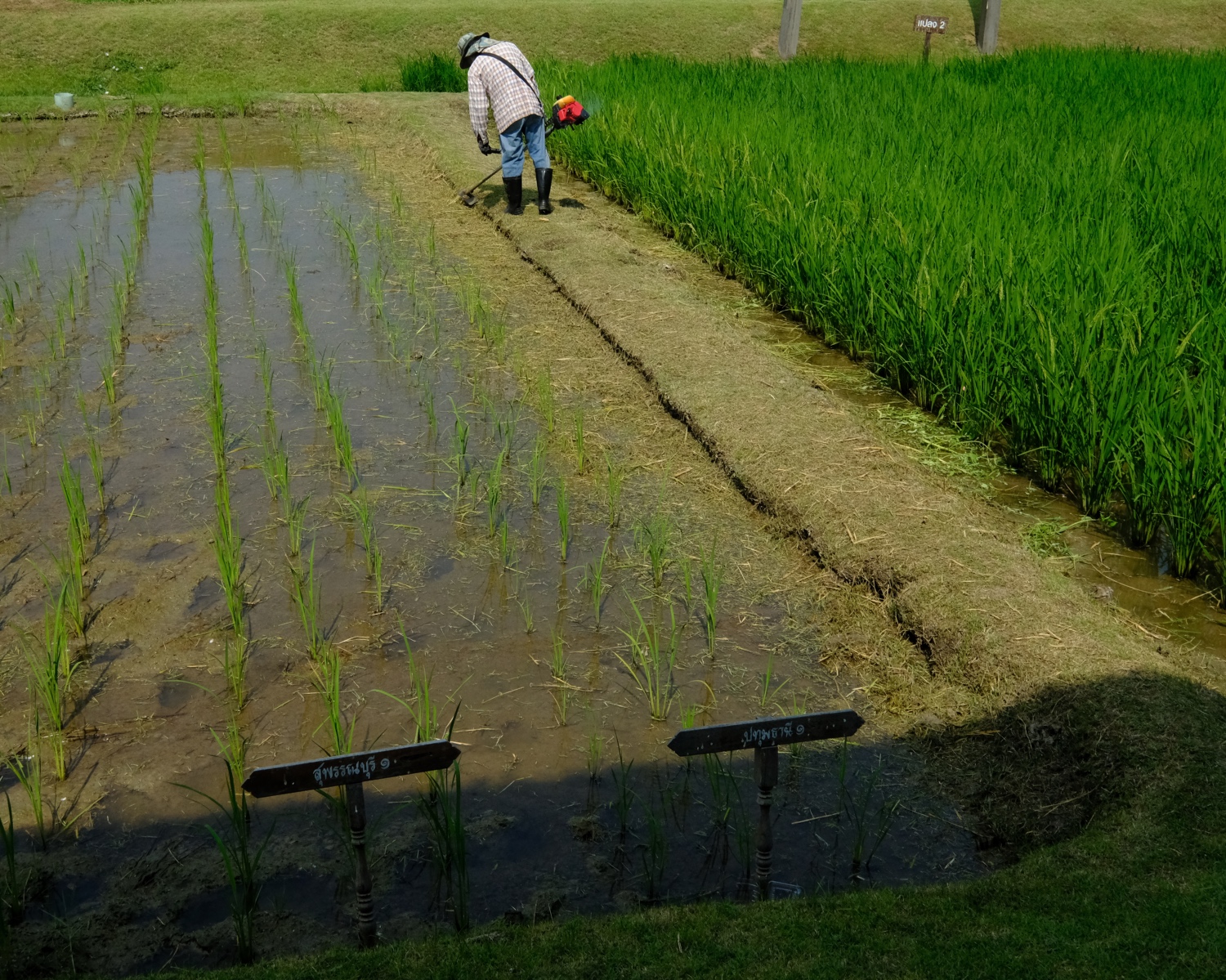 Trimming the rice fields . . . only at the museum.
Trimming the rice fields . . . only at the museum.
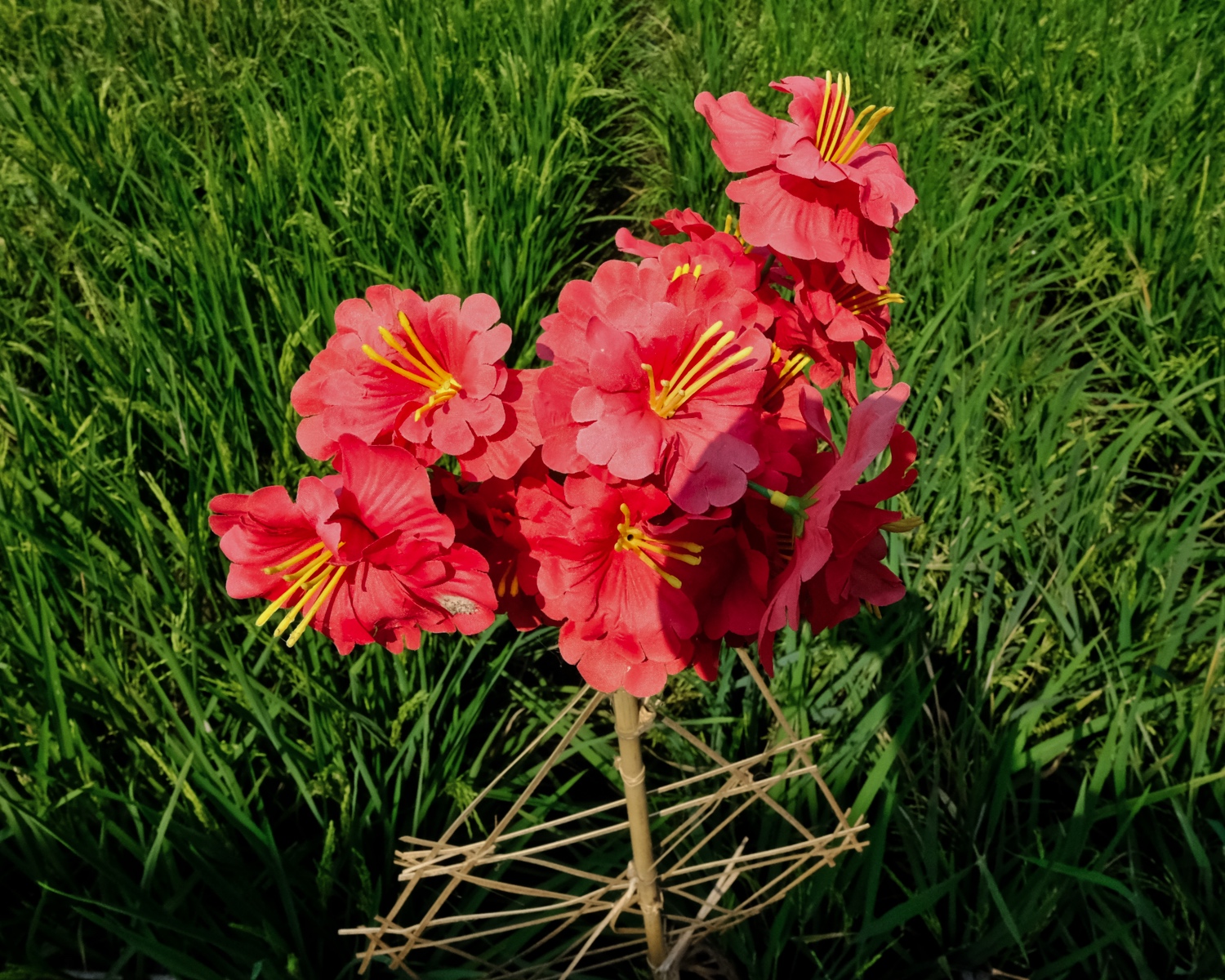 Flowers in the rice fields.
Flowers in the rice fields.
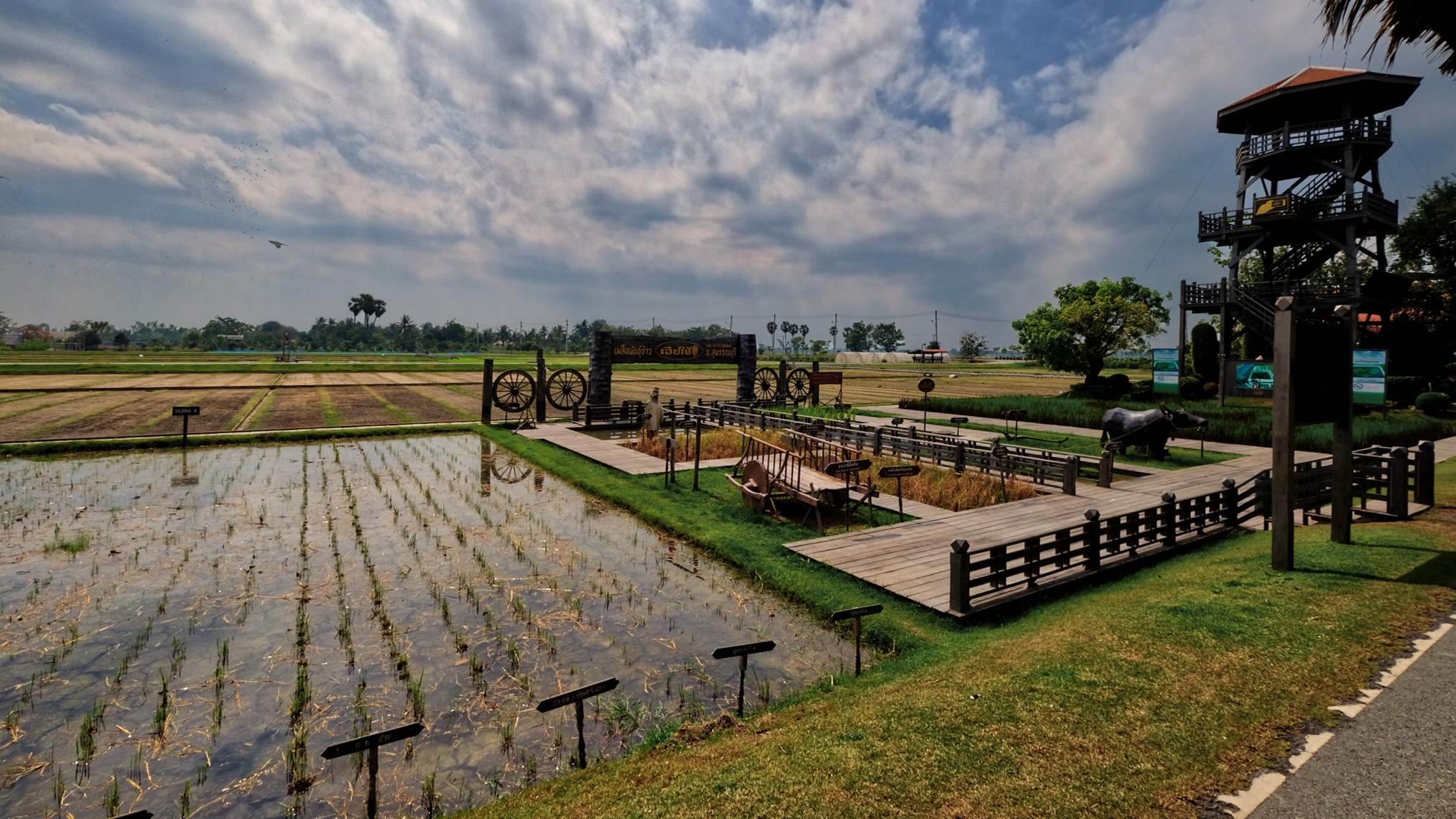 The center is designed to educate farmers about farming methods, and to educate the public about farming in general. None of the visitors we saw looked like farmers.
The center is designed to educate farmers about farming methods, and to educate the public about farming in general. None of the visitors we saw looked like farmers.
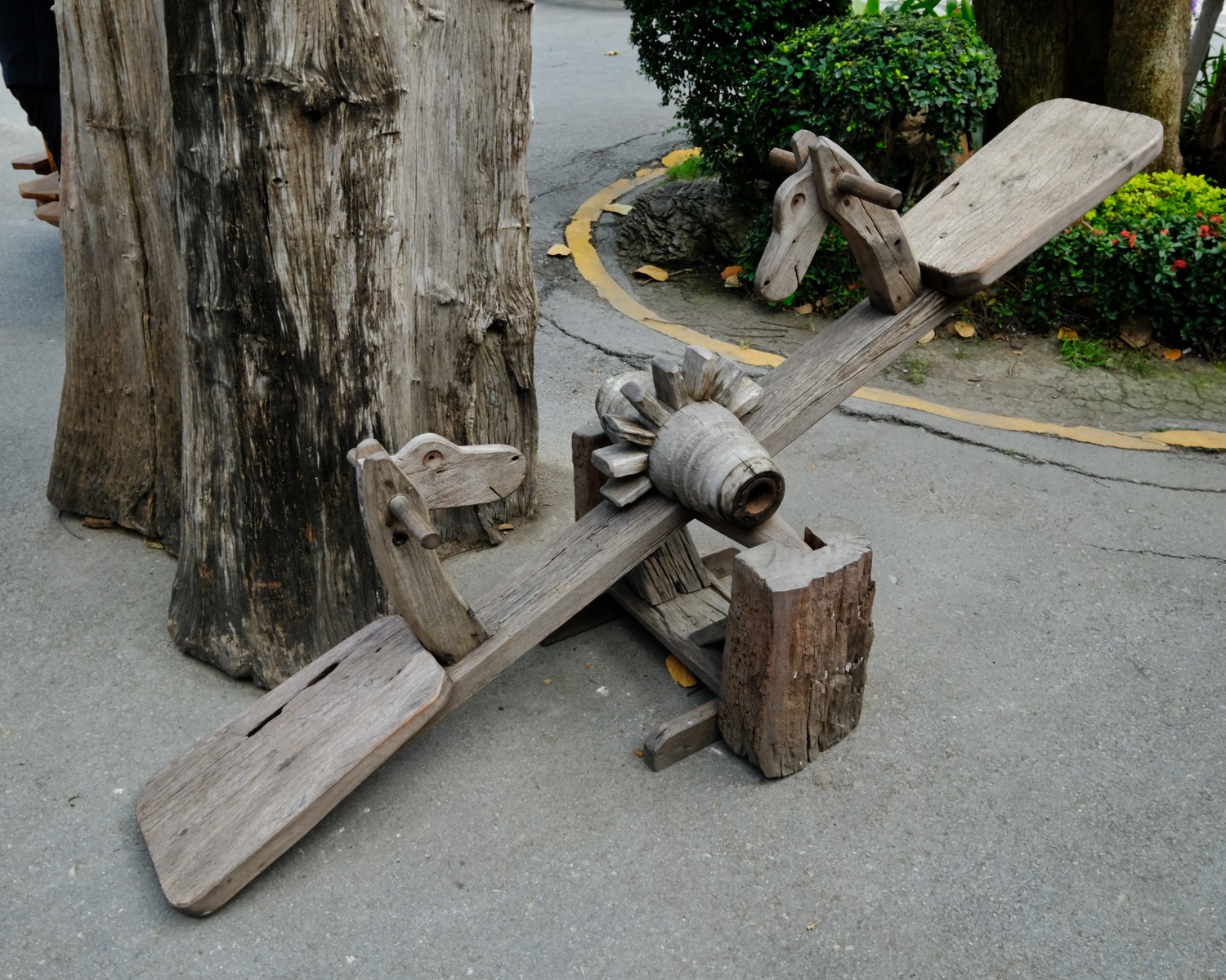 A child's teeter-totter made of parts from an old buffalo farm cart. You hate to see these old items repurposed this way.
A child's teeter-totter made of parts from an old buffalo farm cart. You hate to see these old items repurposed this way.
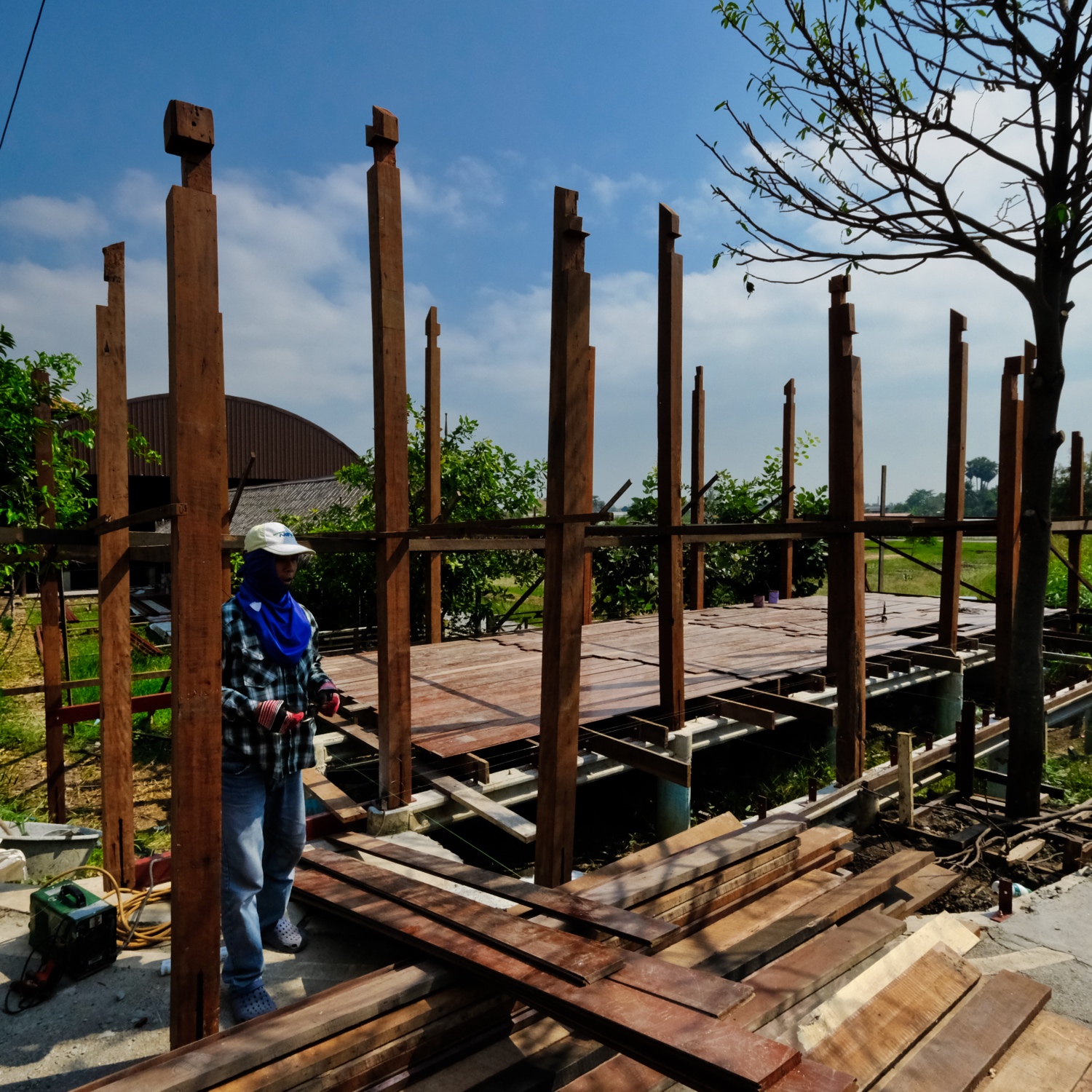 It was interesting to watch workers reassemble an old Thai style teak house.
It was interesting to watch workers reassemble an old Thai style teak house.
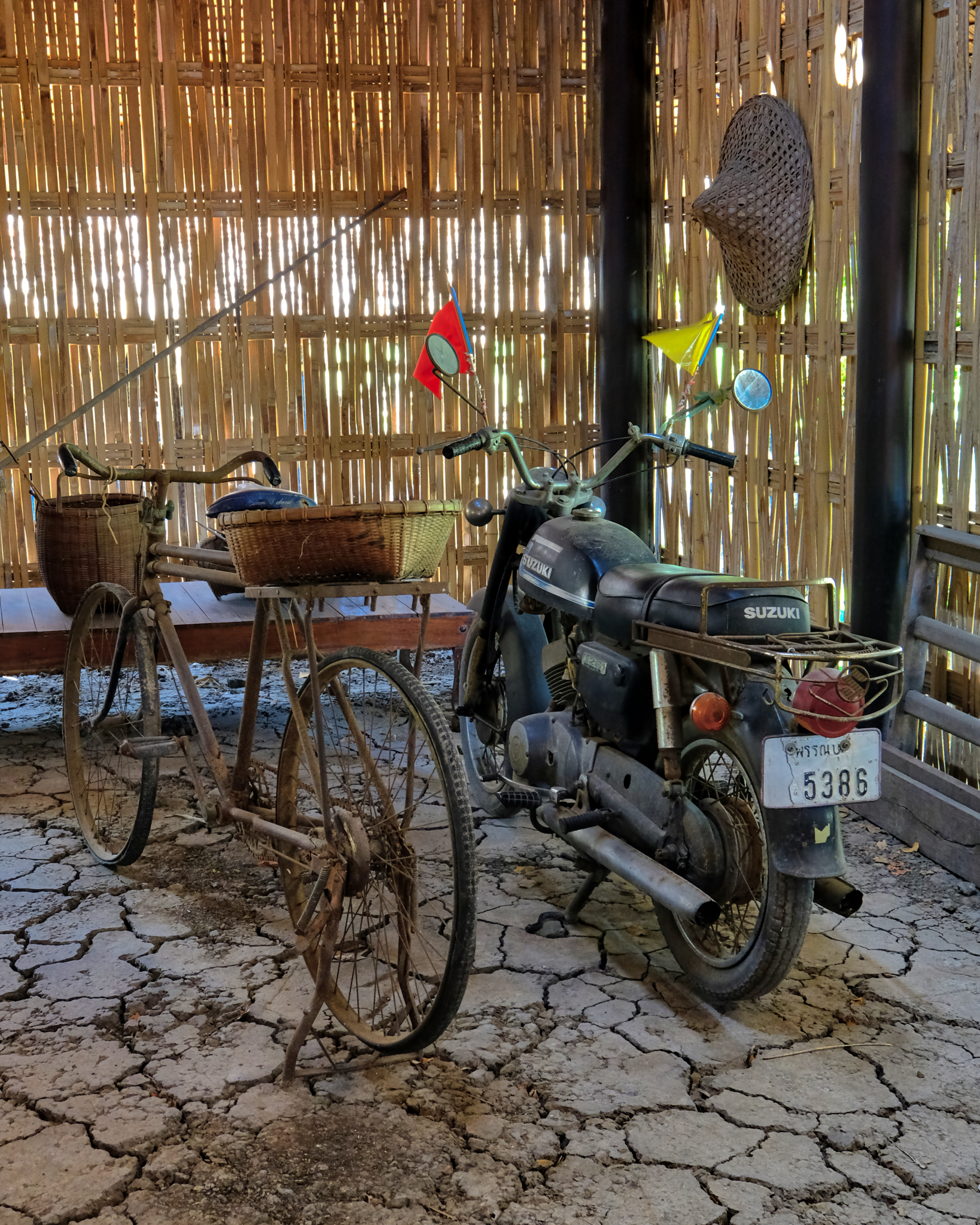 There were a few small exhibits of random 'old stuff.' This old Suzuki and bicycle in a grass shack was particularly beautiful. We headed on to our next destination: The Hell Garden (Wat Phai Rong Wua) of Suphanburi.
There were a few small exhibits of random 'old stuff.' This old Suzuki and bicycle in a grass shack was particularly beautiful. We headed on to our next destination: The Hell Garden (Wat Phai Rong Wua) of Suphanburi.
Suphanburi Province: A Day Trip Northwest Of Bangkok
 Tuesday, March 13, 2018 at 12:08PM
Tuesday, March 13, 2018 at 12:08PM A RAMBLE IN FOUR PARTS
Part Two: A Rural Suphanburi [Water] Buffalo Park
My friend John Stiles and I set off in my old truck up the road to the rural province of Suphanburi, to the northwest of Bangkok. As usual, we had a vague idea, from a tertiary Google search, of what we wanted to see, but no particular plan: we would ramble. We would eventually see several amazing Buddhist temple complexes, a Buffalo park, and a Farm Museum. We never 'found' the actual town of Suphanburi, but we didn't care: we had a grand adventure rambling about the rural Thai countryside.
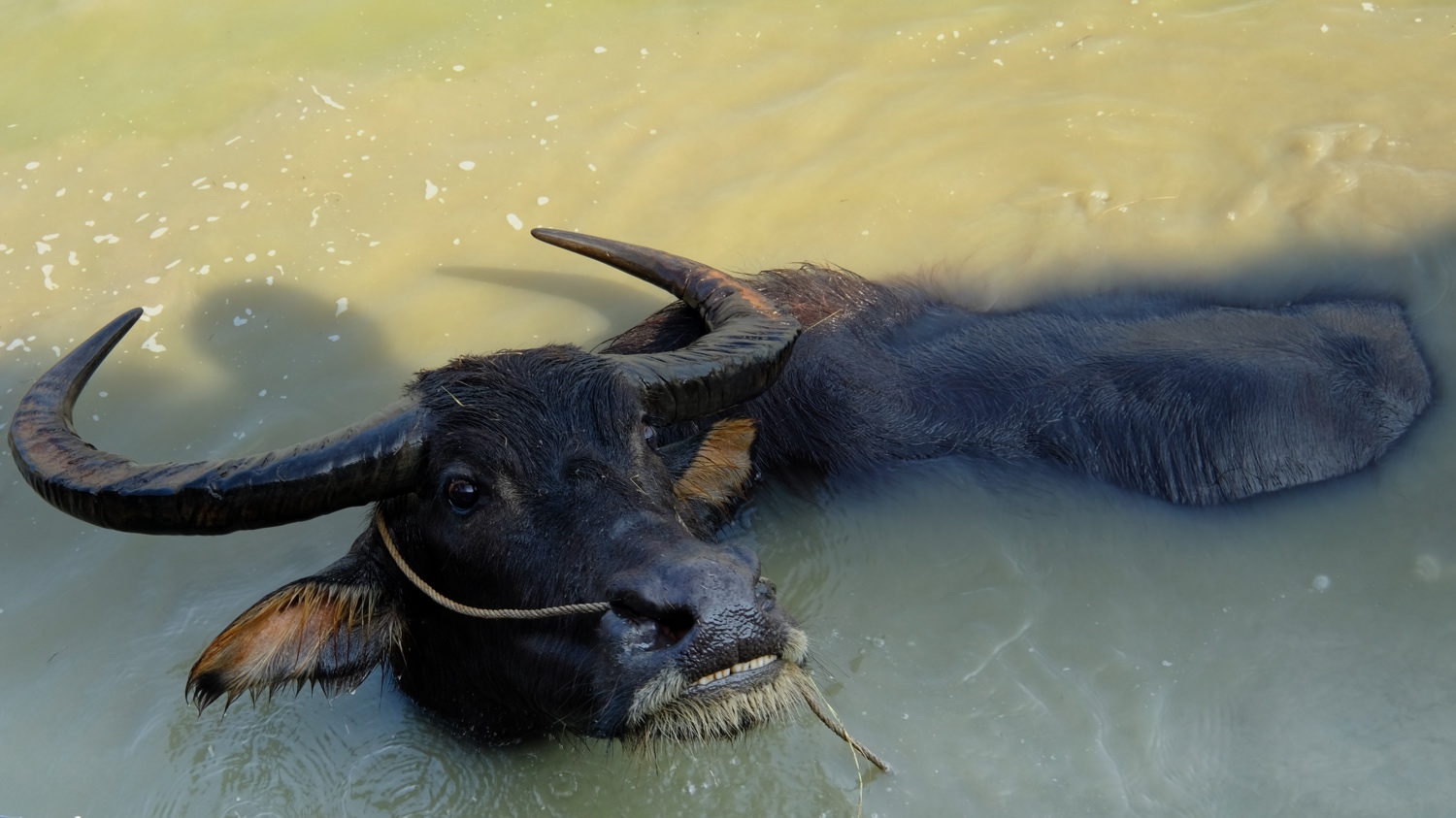 As there is only one kind of buffalo in Thailand, they are referred to as Buffalo . . . not Water Buffalo!
As there is only one kind of buffalo in Thailand, they are referred to as Buffalo . . . not Water Buffalo!
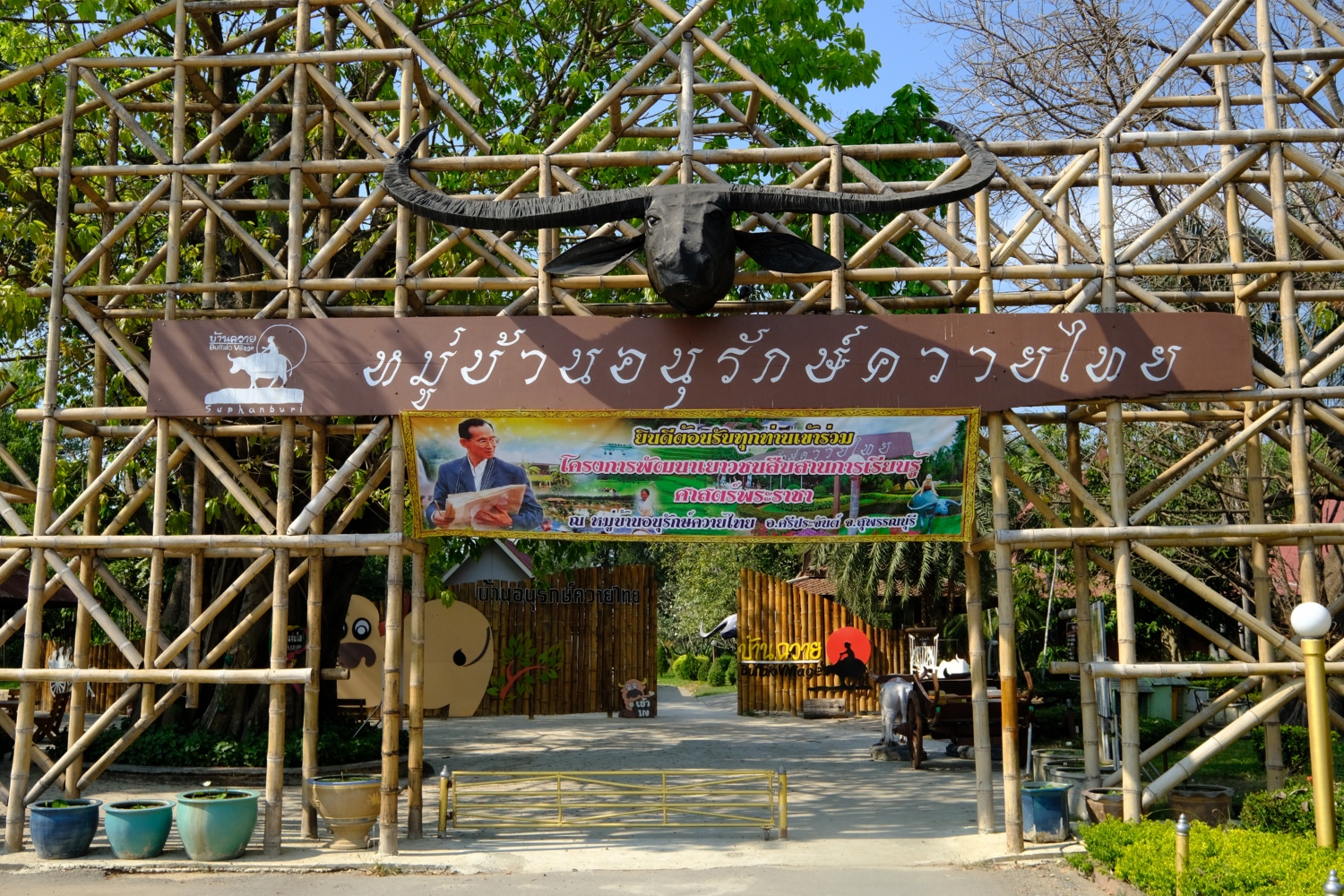 Baan Kwai (Buffalo Village) in rural Si Prachan, Suphanburi Province a delightful 17 acres of ponds, buffalos, old Thai houses reassembled in tidy gardens, buffalo, intended to educate the public about . . . buffalo.
Baan Kwai (Buffalo Village) in rural Si Prachan, Suphanburi Province a delightful 17 acres of ponds, buffalos, old Thai houses reassembled in tidy gardens, buffalo, intended to educate the public about . . . buffalo.
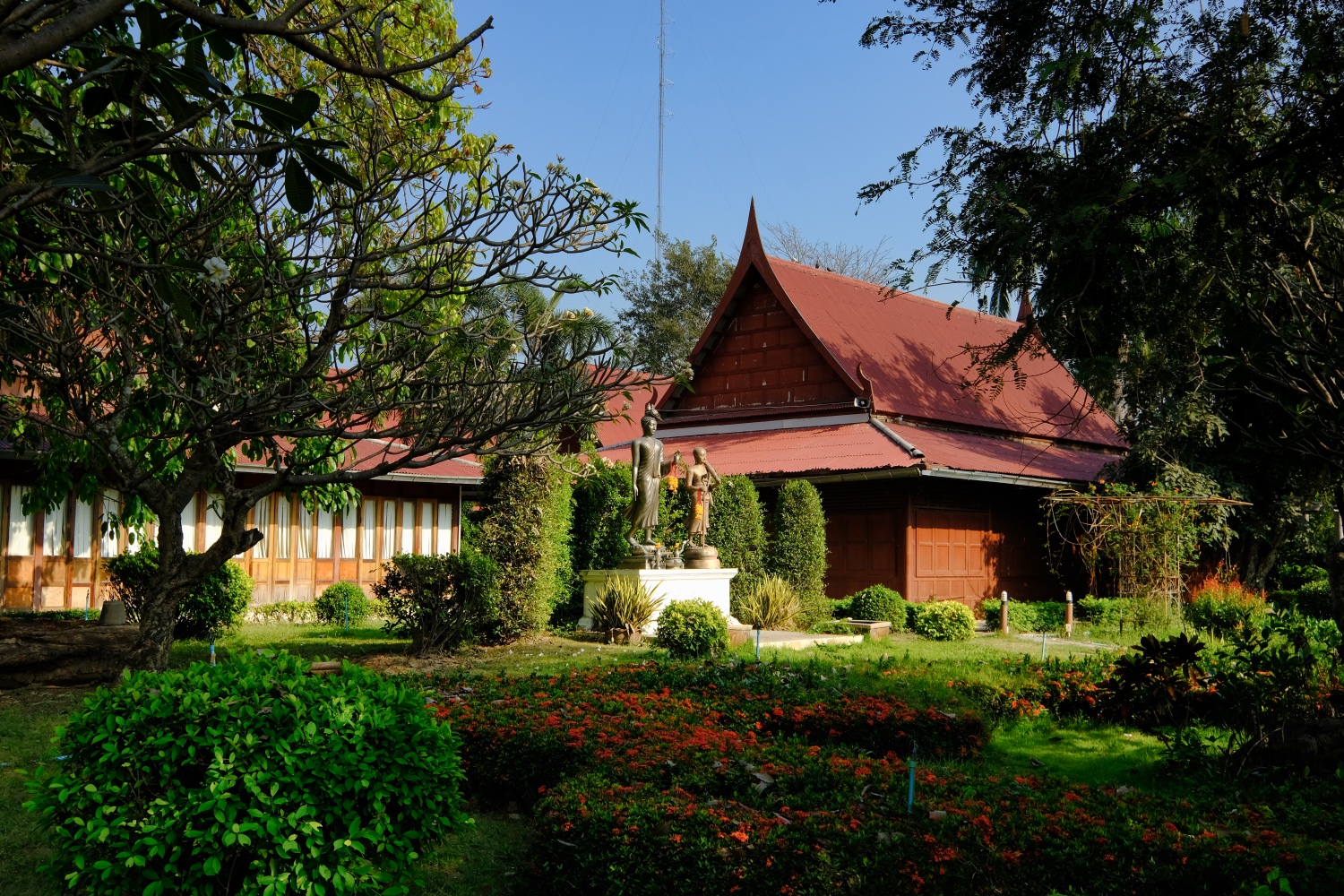 The grounds of Baan Kwai are very nicely tended and the old Thai houses are beautifully restored and maintained. This is the ideal of old Thai culture.
The grounds of Baan Kwai are very nicely tended and the old Thai houses are beautifully restored and maintained. This is the ideal of old Thai culture.
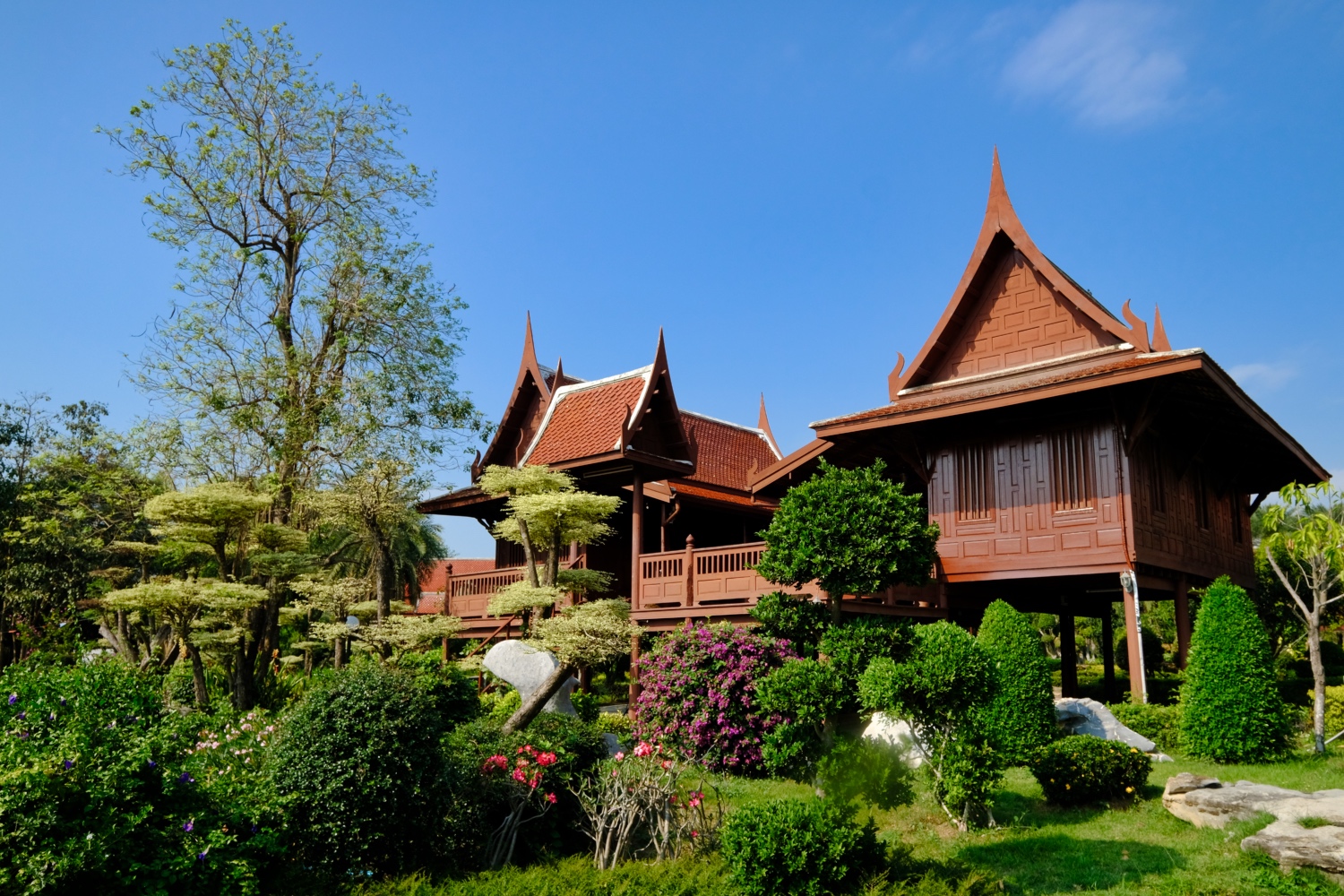 I love these old Thai style houses . . . normally made of teak wood.
I love these old Thai style houses . . . normally made of teak wood.
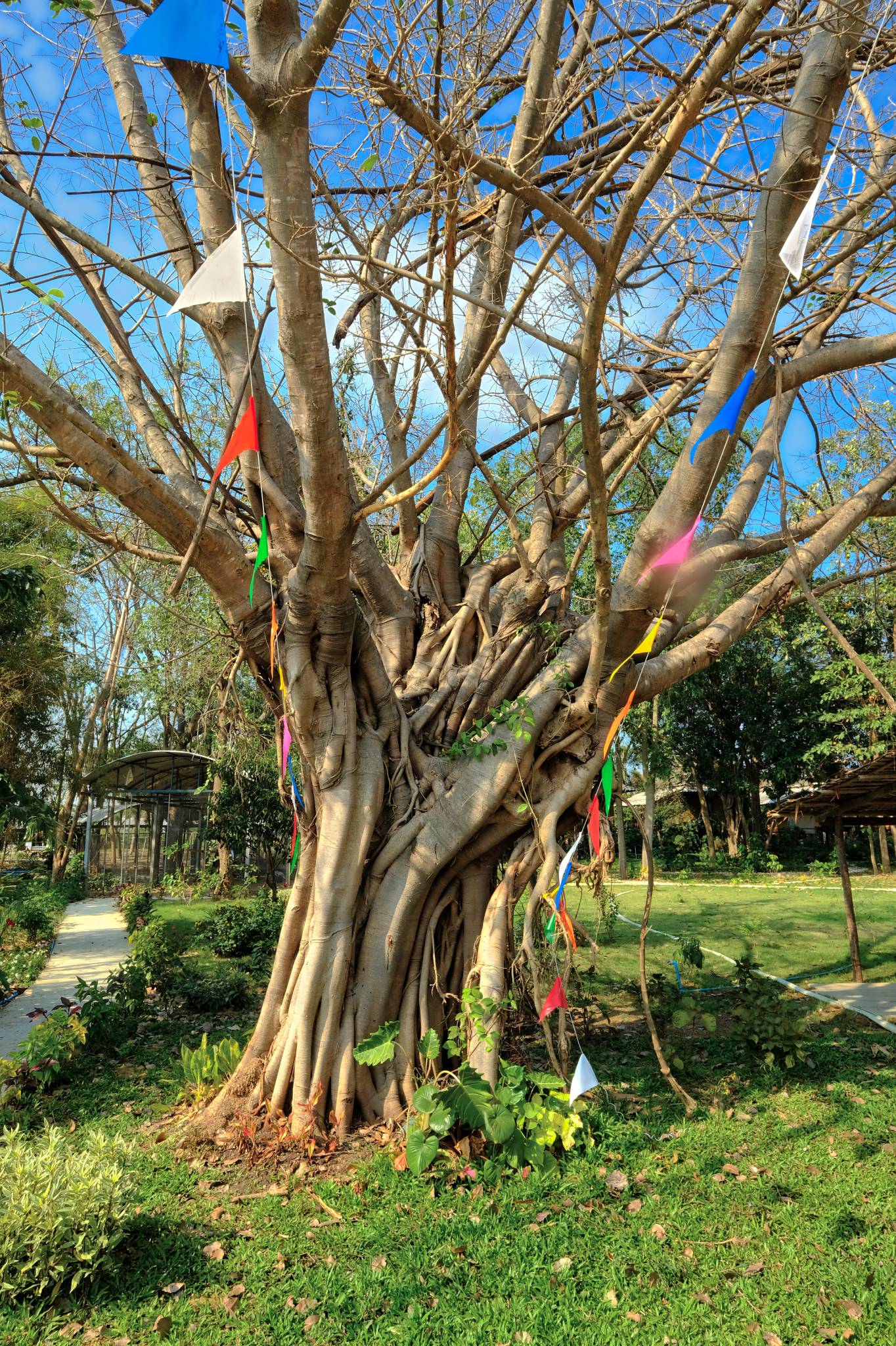 Beautiful old trees threw their shade throughout the park.
Beautiful old trees threw their shade throughout the park.
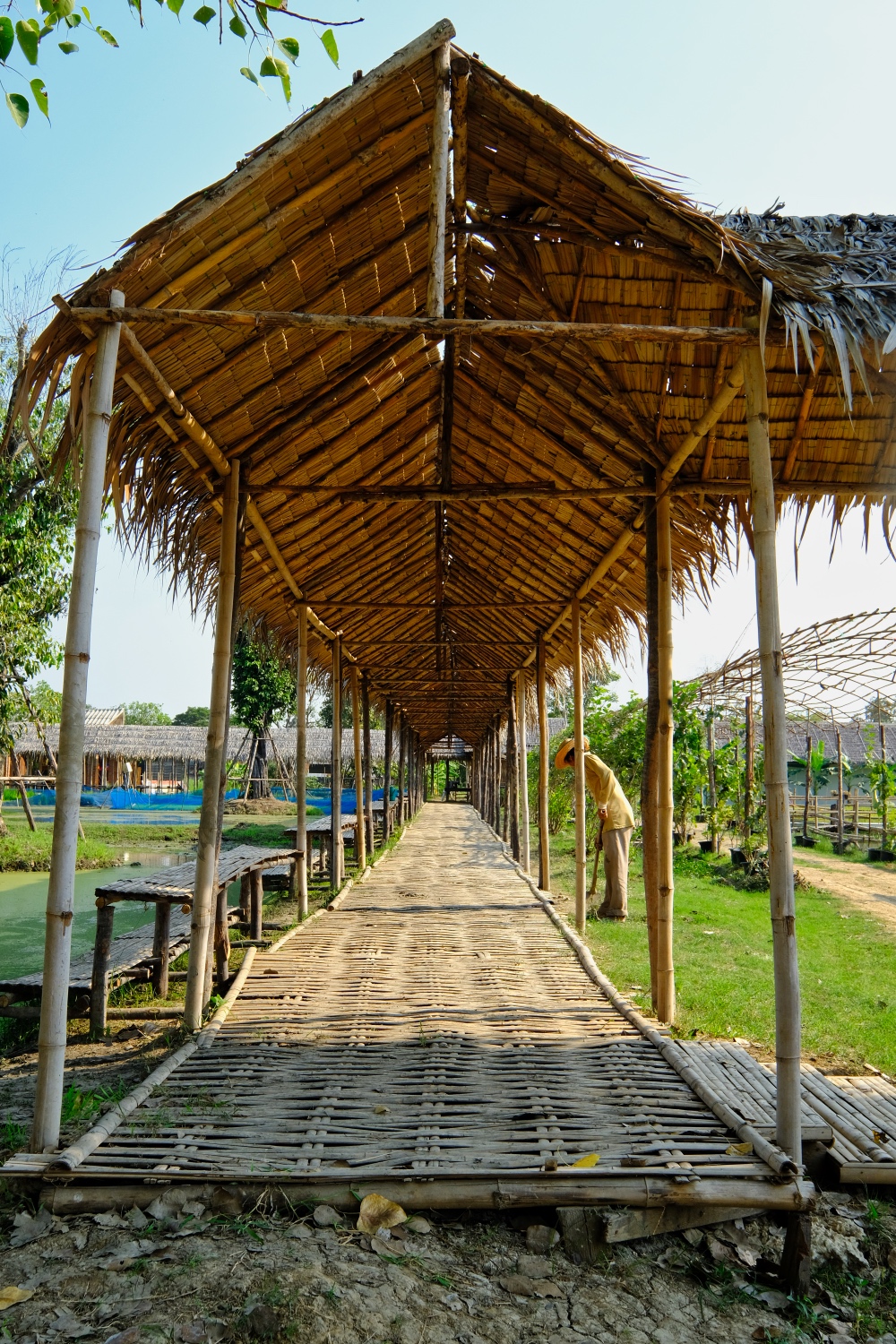 They made a nice effort to create an 'old time' rural feel to the place.
They made a nice effort to create an 'old time' rural feel to the place.
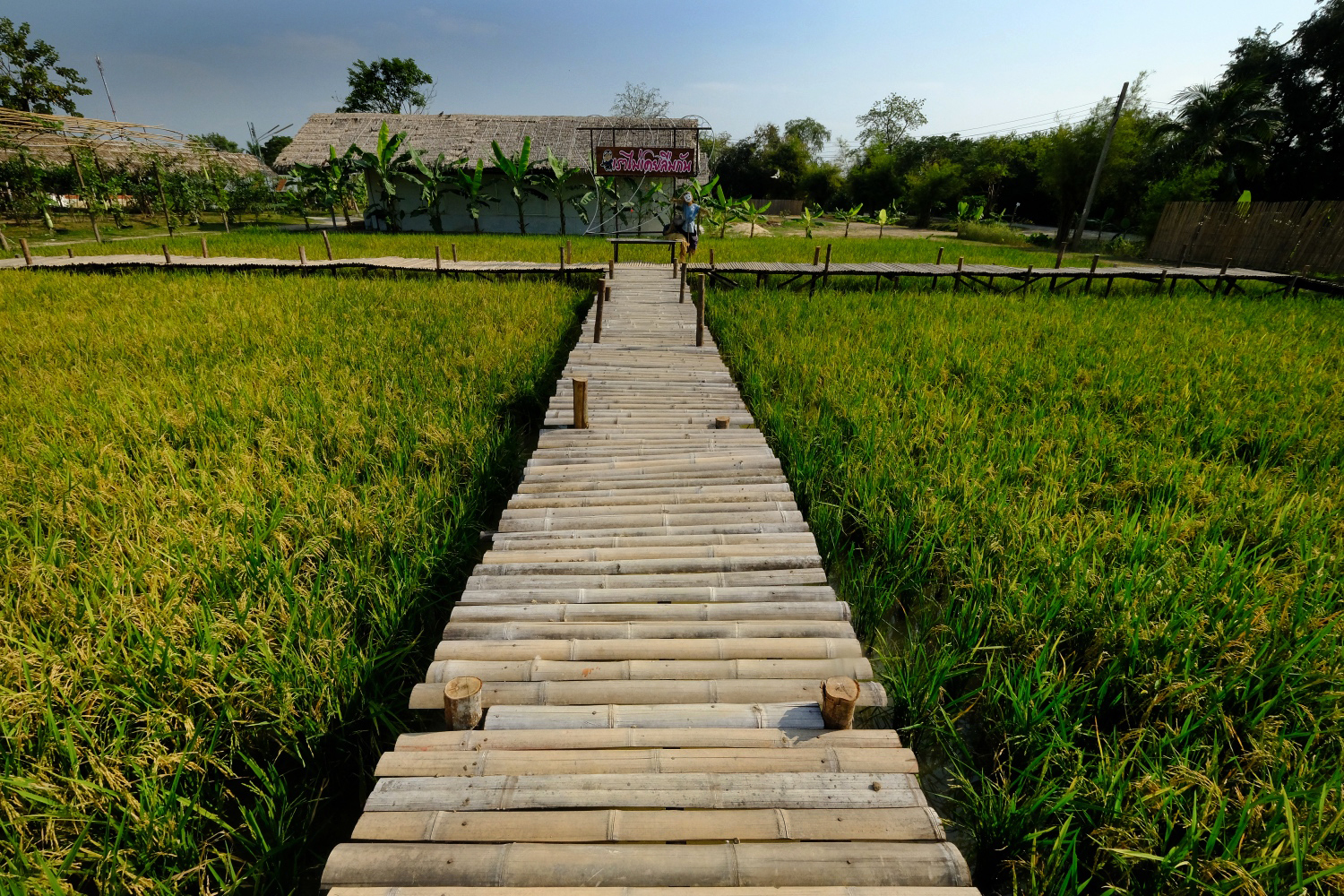 There was an area set aside for a exhibit of rice cultivation.
There was an area set aside for a exhibit of rice cultivation.
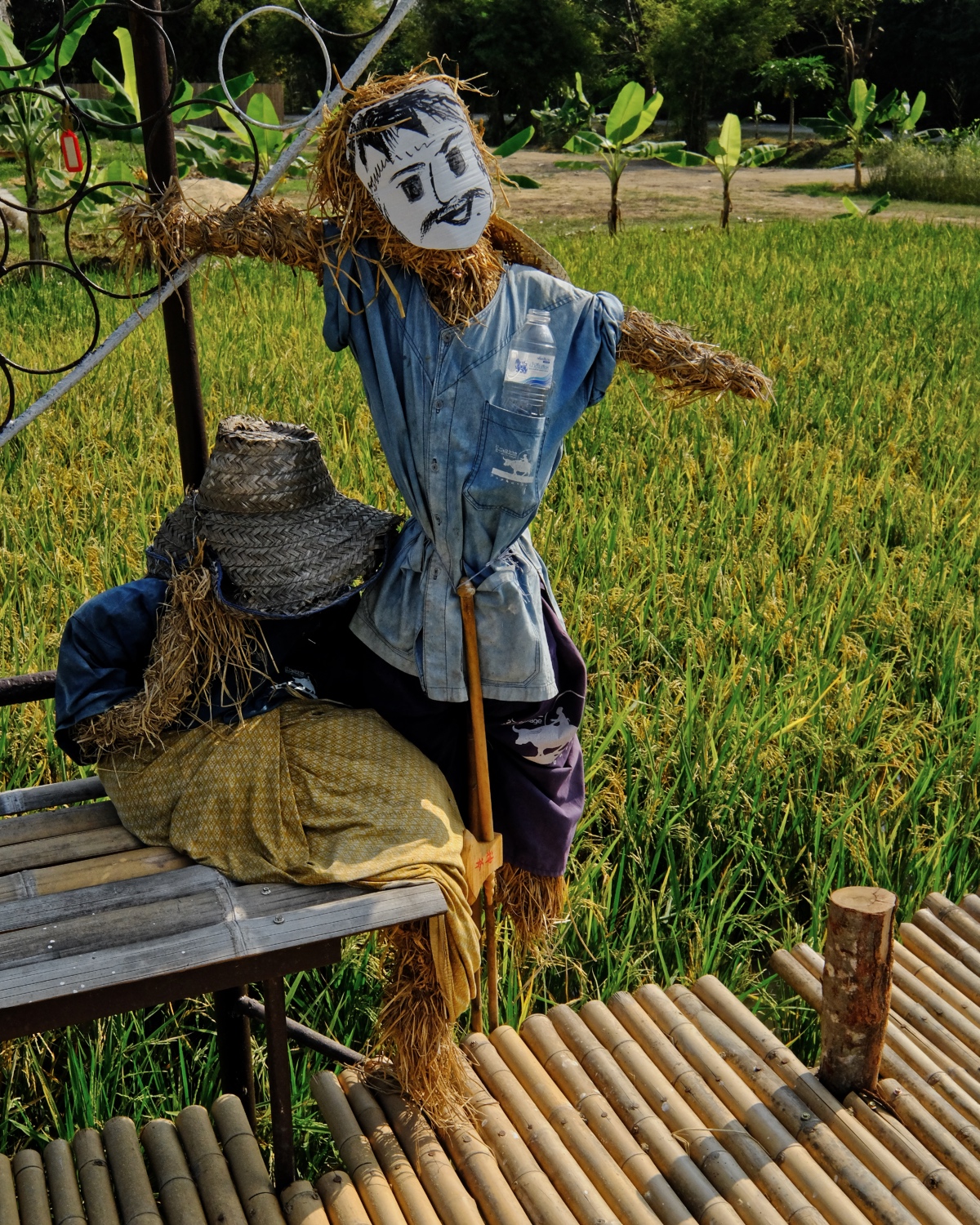 A Thai scarecrow. We saw many of these in the fields all across Suphanburi Province.
A Thai scarecrow. We saw many of these in the fields all across Suphanburi Province.
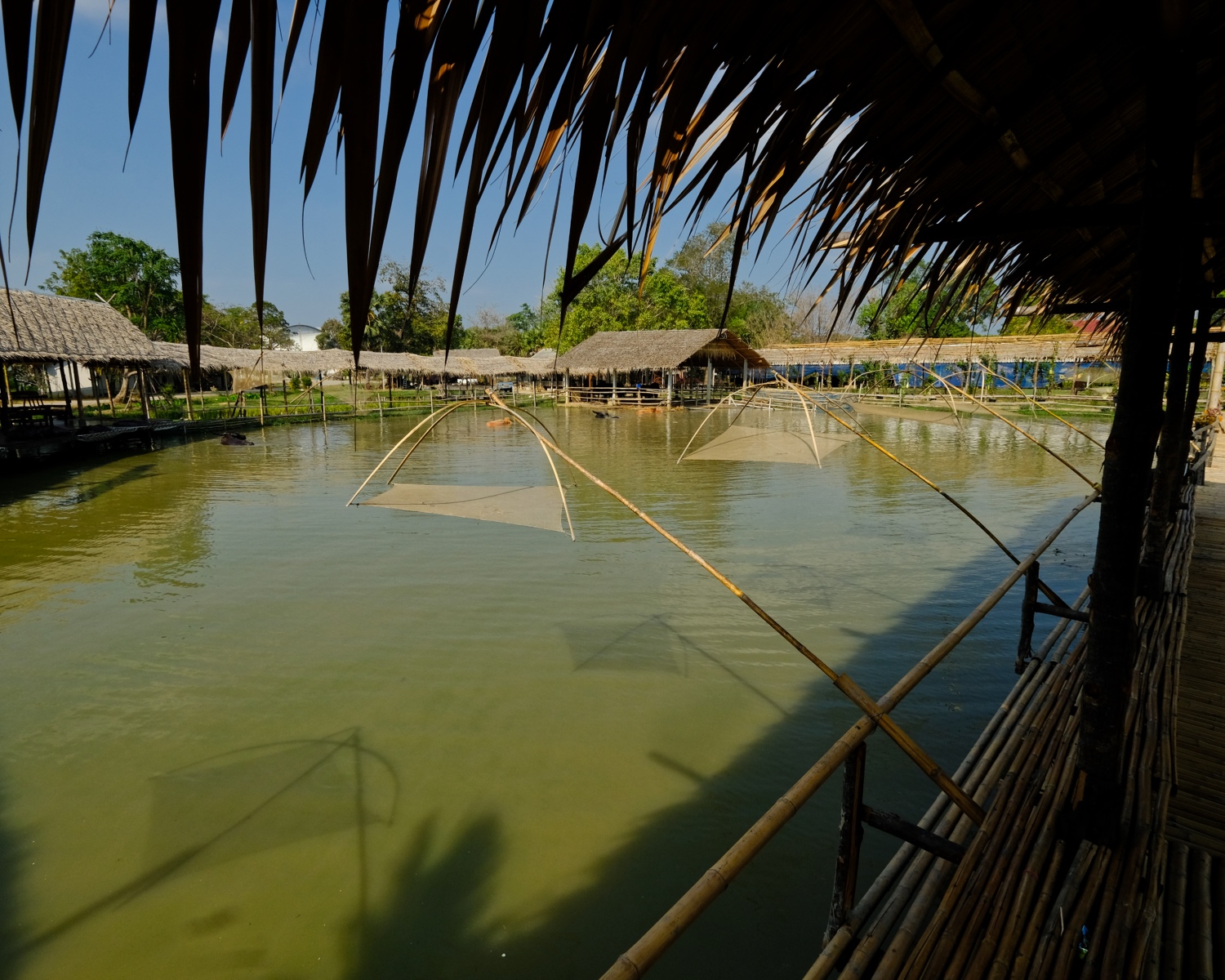 There were several ponds for the buffalo and ducks and geese. Those are fish traps . . . although I do not believe they used them . . . they are for the visitors to look at.
There were several ponds for the buffalo and ducks and geese. Those are fish traps . . . although I do not believe they used them . . . they are for the visitors to look at.
 The ducks came near . . . expecting a hand out.
The ducks came near . . . expecting a hand out.
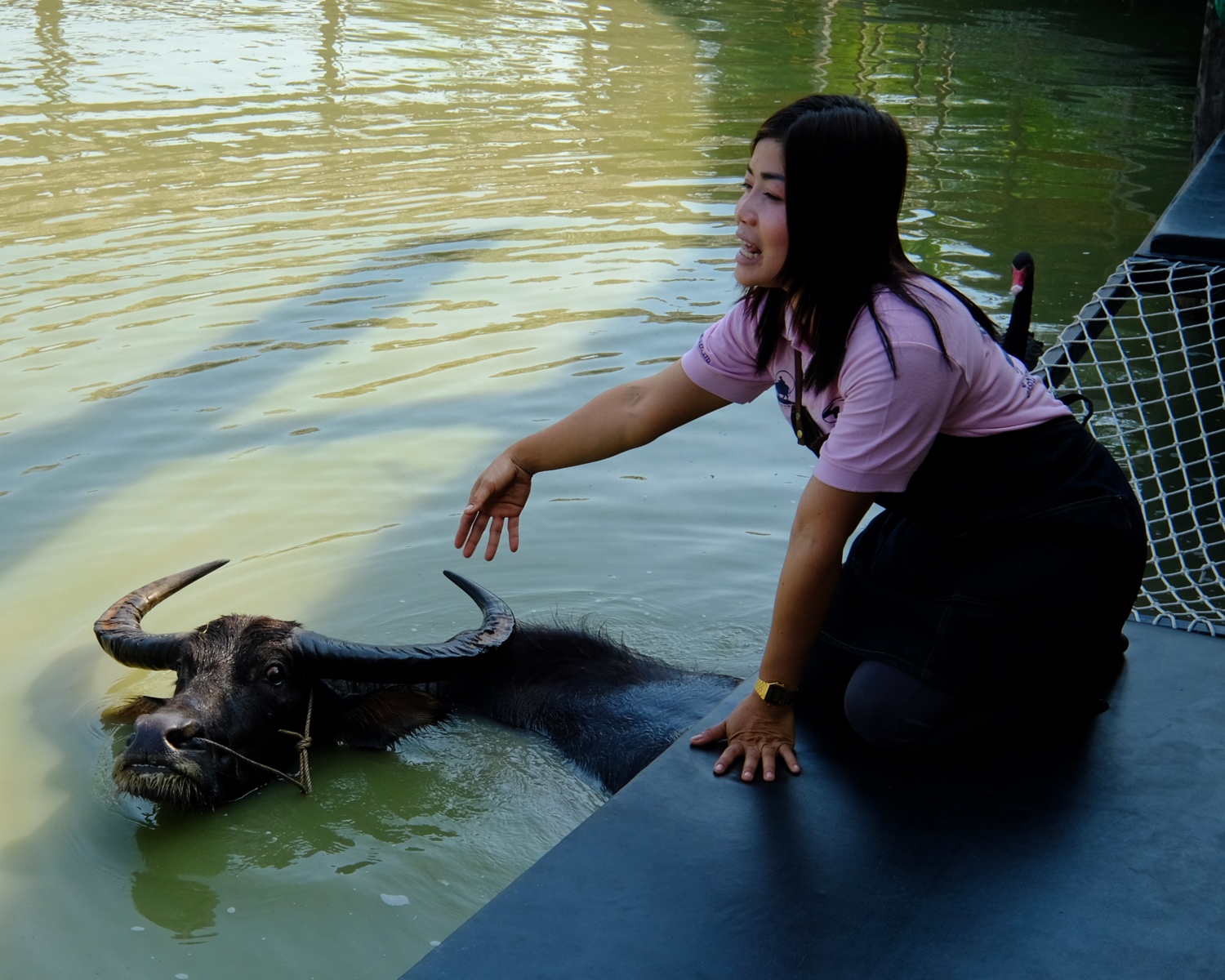 A park employee called the buffalo over . . . so she could sell us some buffalo feed to hand-feed them.
A park employee called the buffalo over . . . so she could sell us some buffalo feed to hand-feed them.
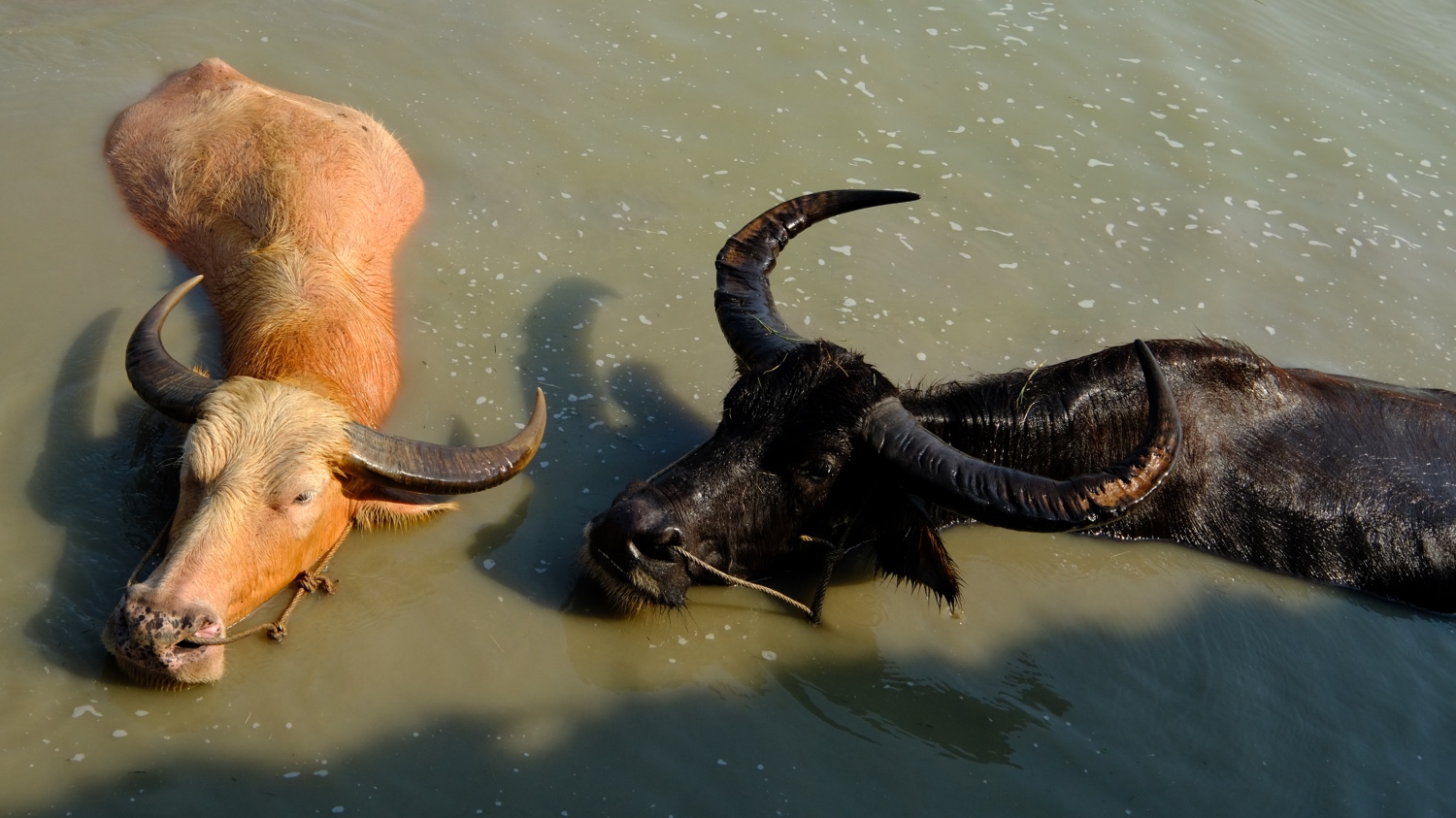 The buffalo in the water happily obliged and came over to be fed.
The buffalo in the water happily obliged and came over to be fed.
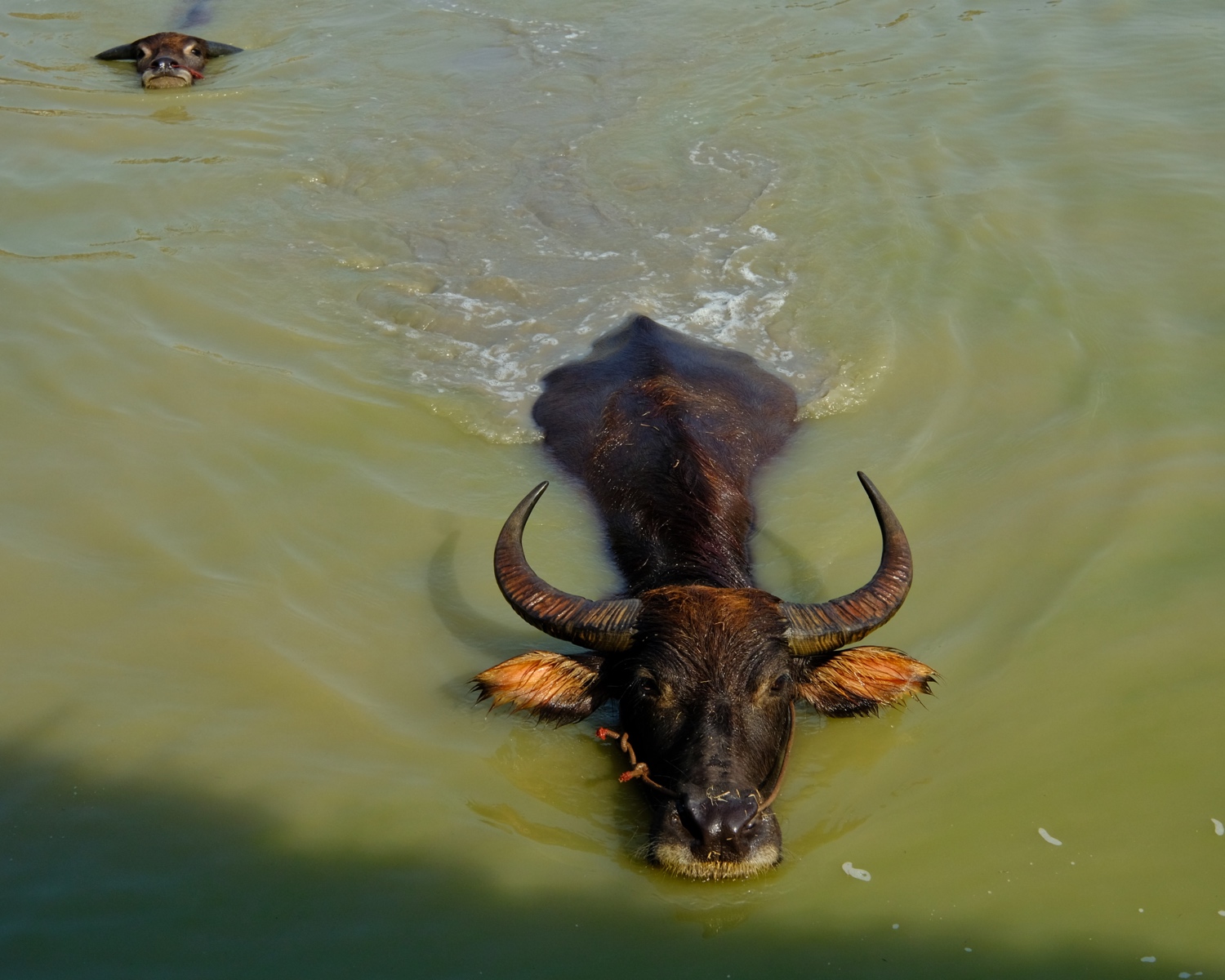 A mother buffalo and her baby swam over too.
A mother buffalo and her baby swam over too.
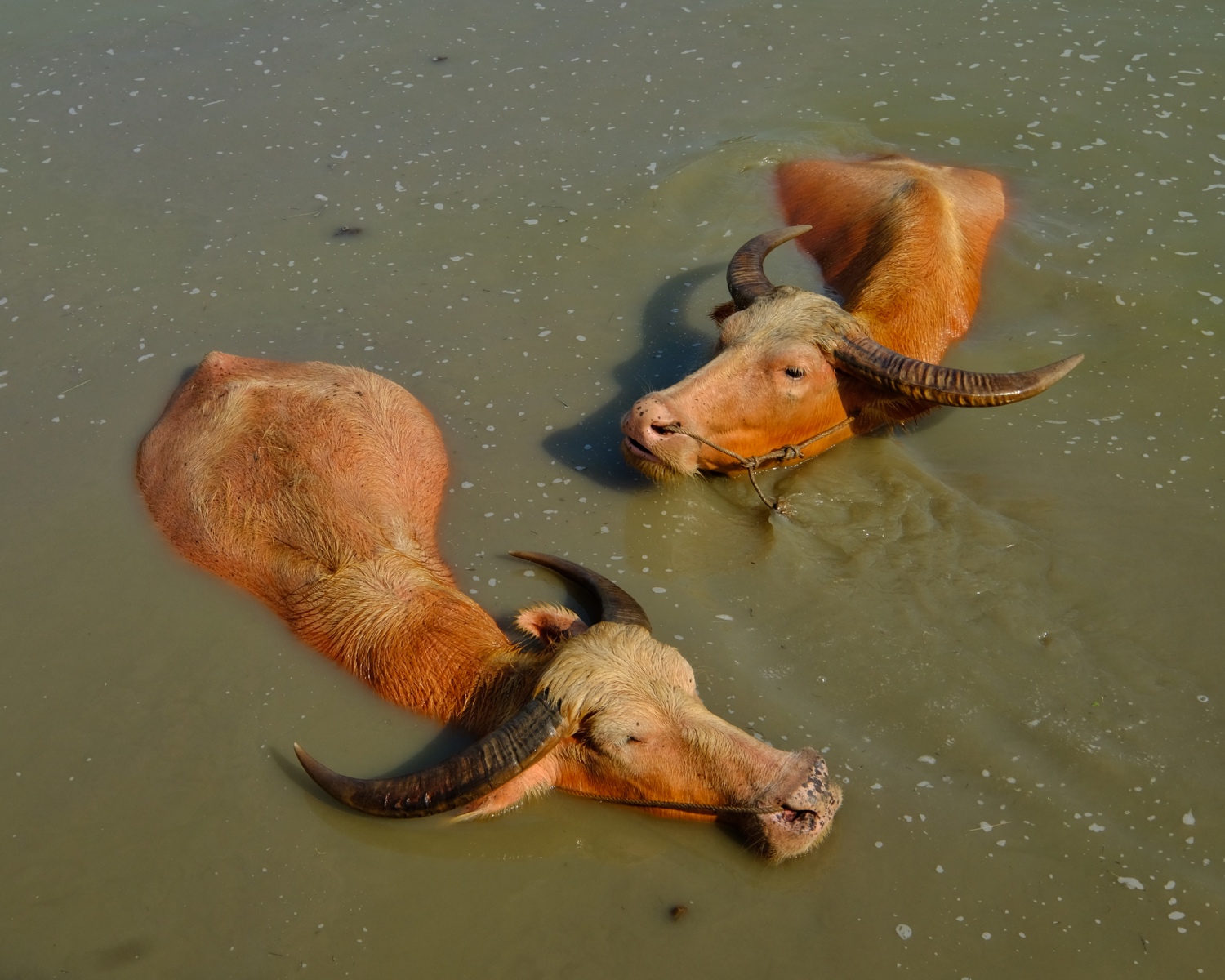 These buffalo were a pleasing color . . . and moved with such slow grace in the water.
These buffalo were a pleasing color . . . and moved with such slow grace in the water.
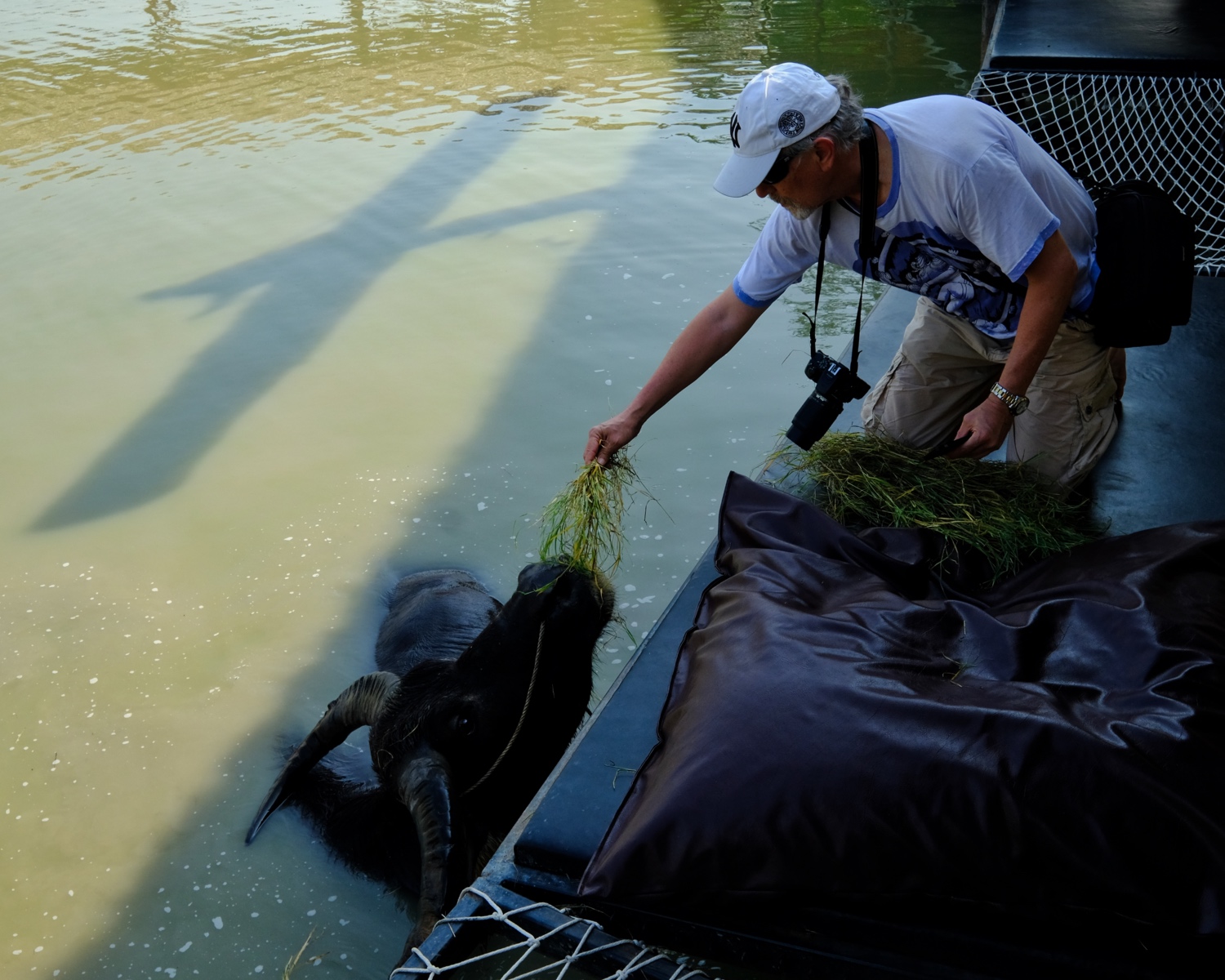 Feeding time!
Feeding time!
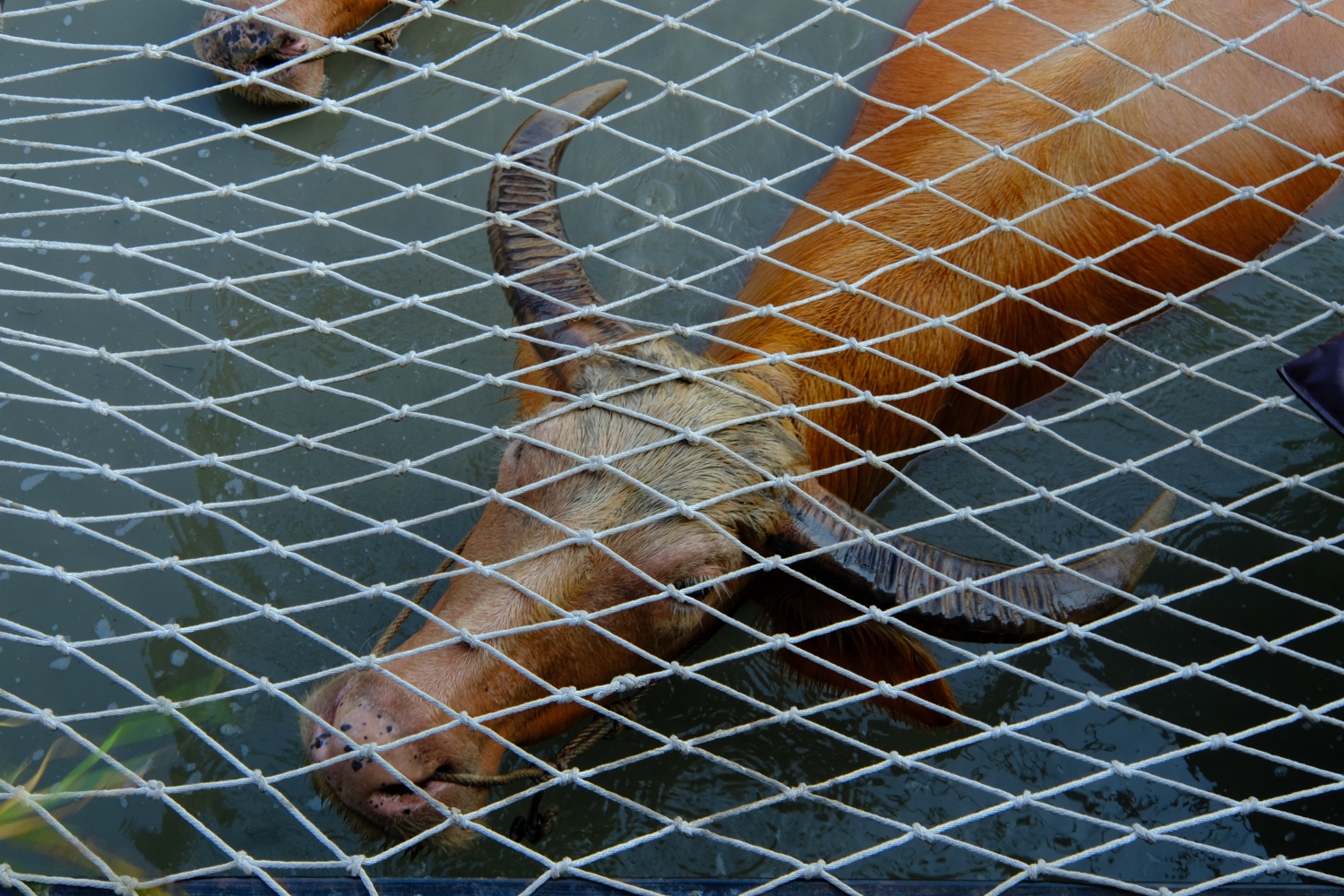 This one came right up and under the netting we were sitting on while feeding them . . . making for an interesting photo, no?
This one came right up and under the netting we were sitting on while feeding them . . . making for an interesting photo, no?
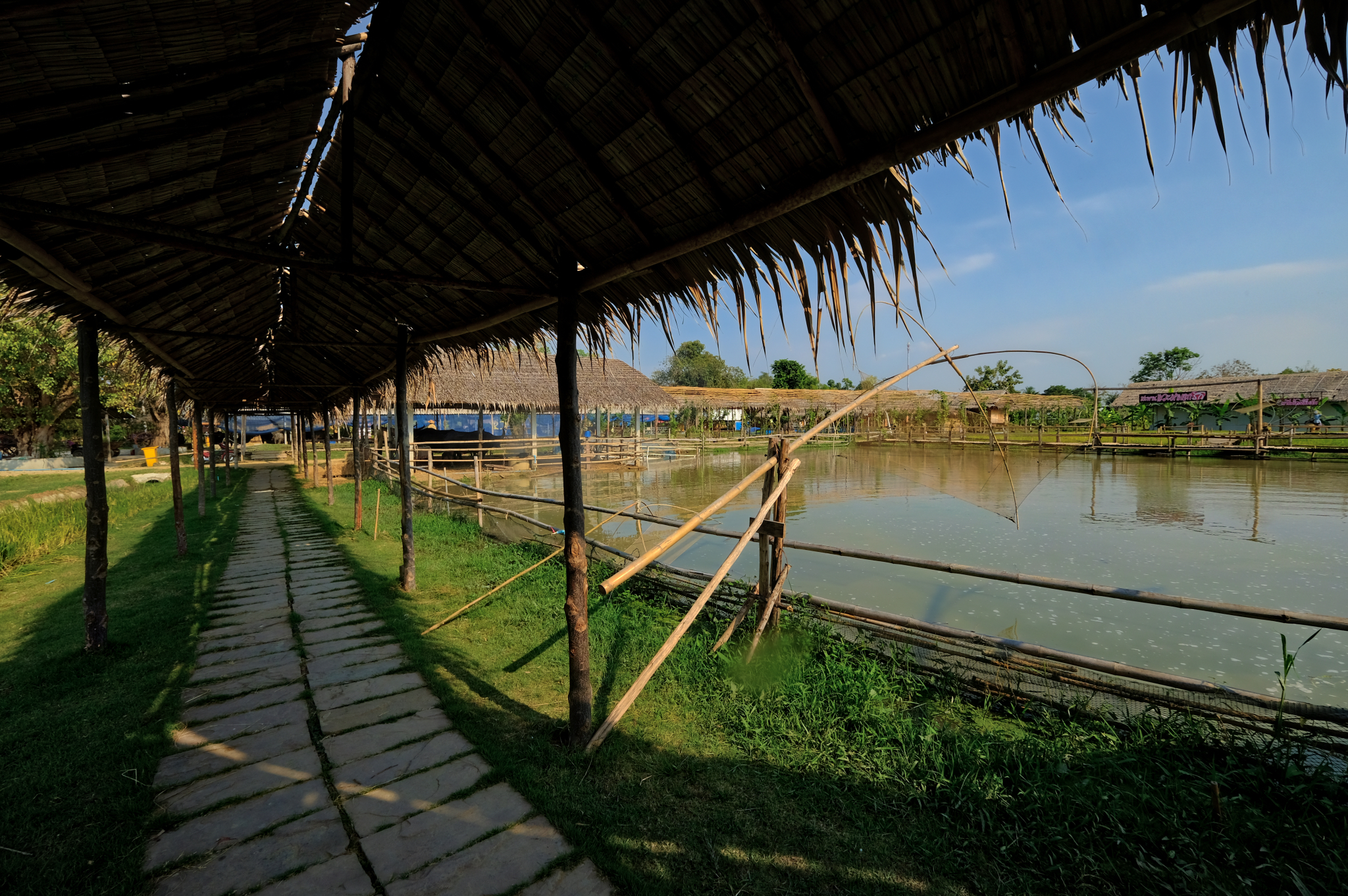 There was a lot more to see here than we anticipated.
There was a lot more to see here than we anticipated.
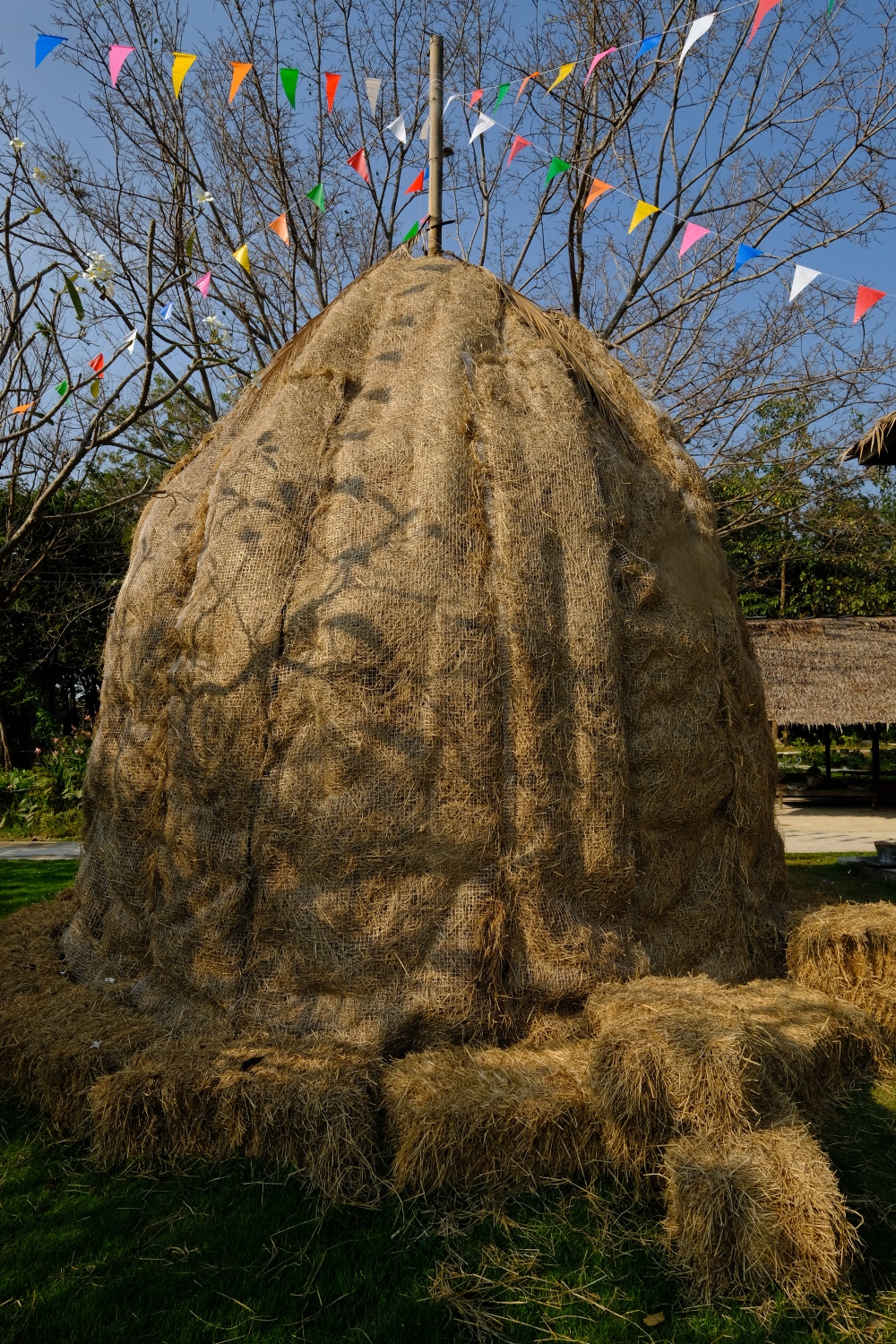 The buffalo village also served as a kind of agriculture museum as well. What a wonderful haystack!
The buffalo village also served as a kind of agriculture museum as well. What a wonderful haystack!
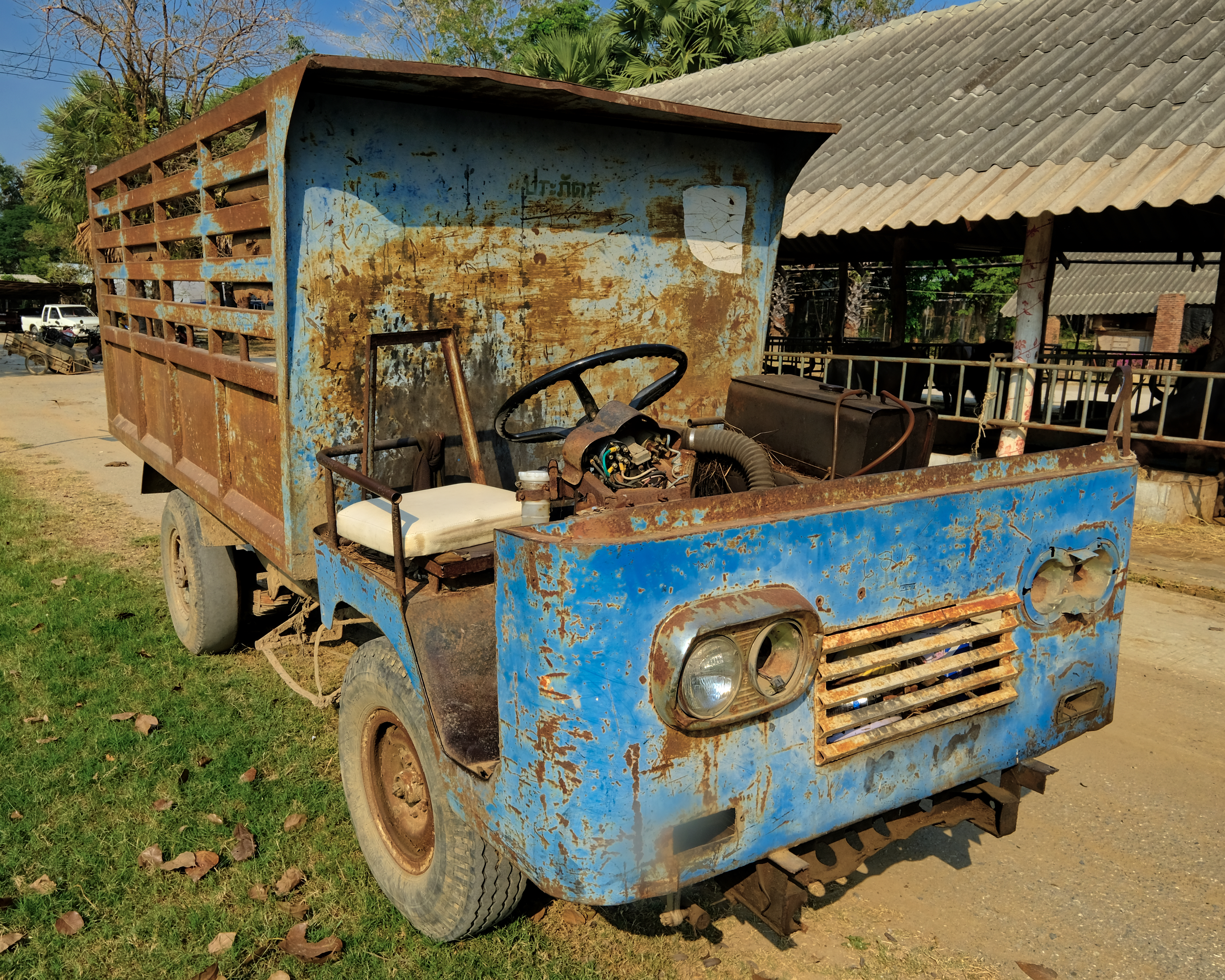 I fell in love with this old agricultural work truck. Each of those scratches and dents came with a story . . .
I fell in love with this old agricultural work truck. Each of those scratches and dents came with a story . . .
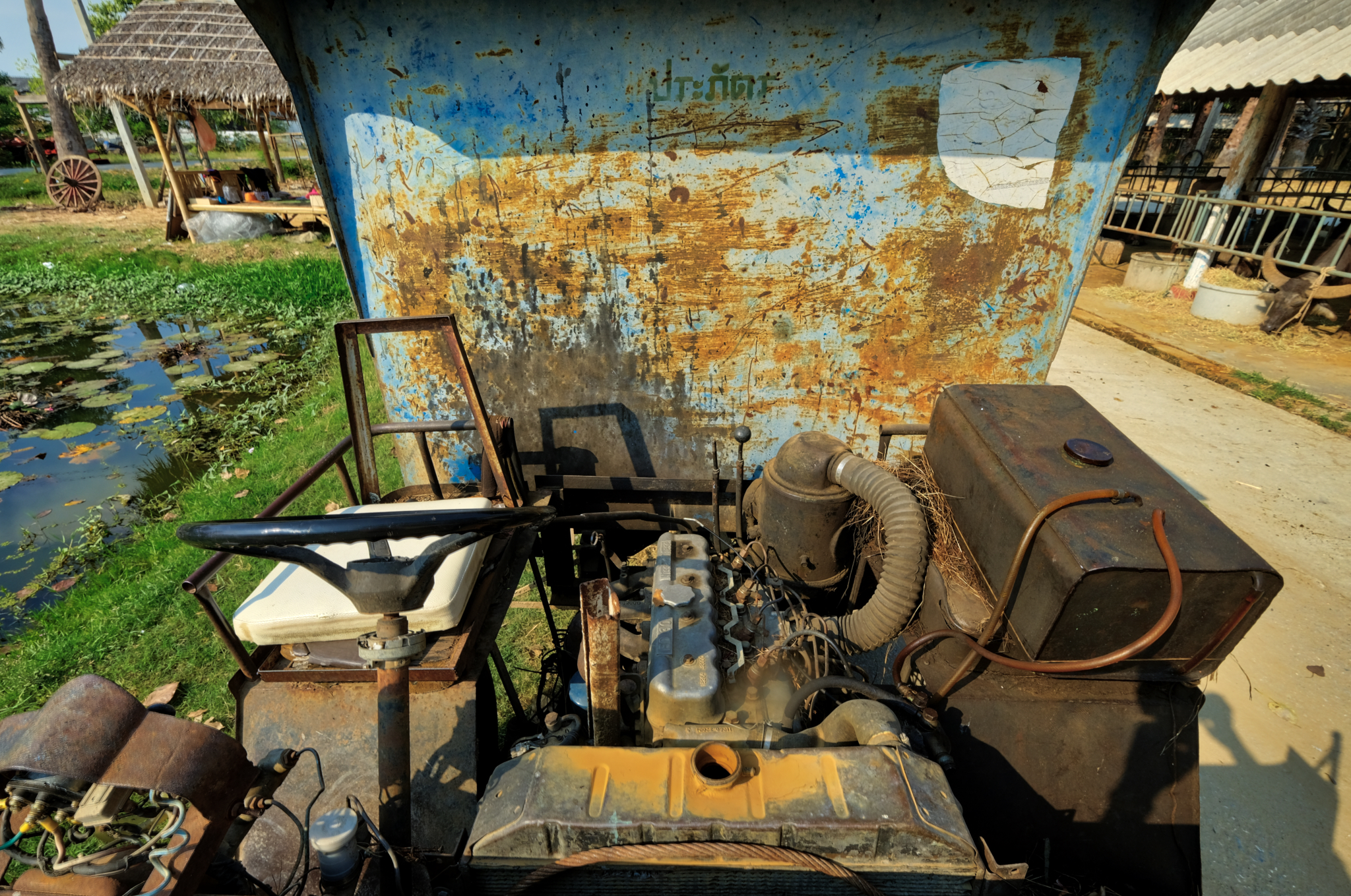 The extreme of utilitarian equipment.
The extreme of utilitarian equipment.
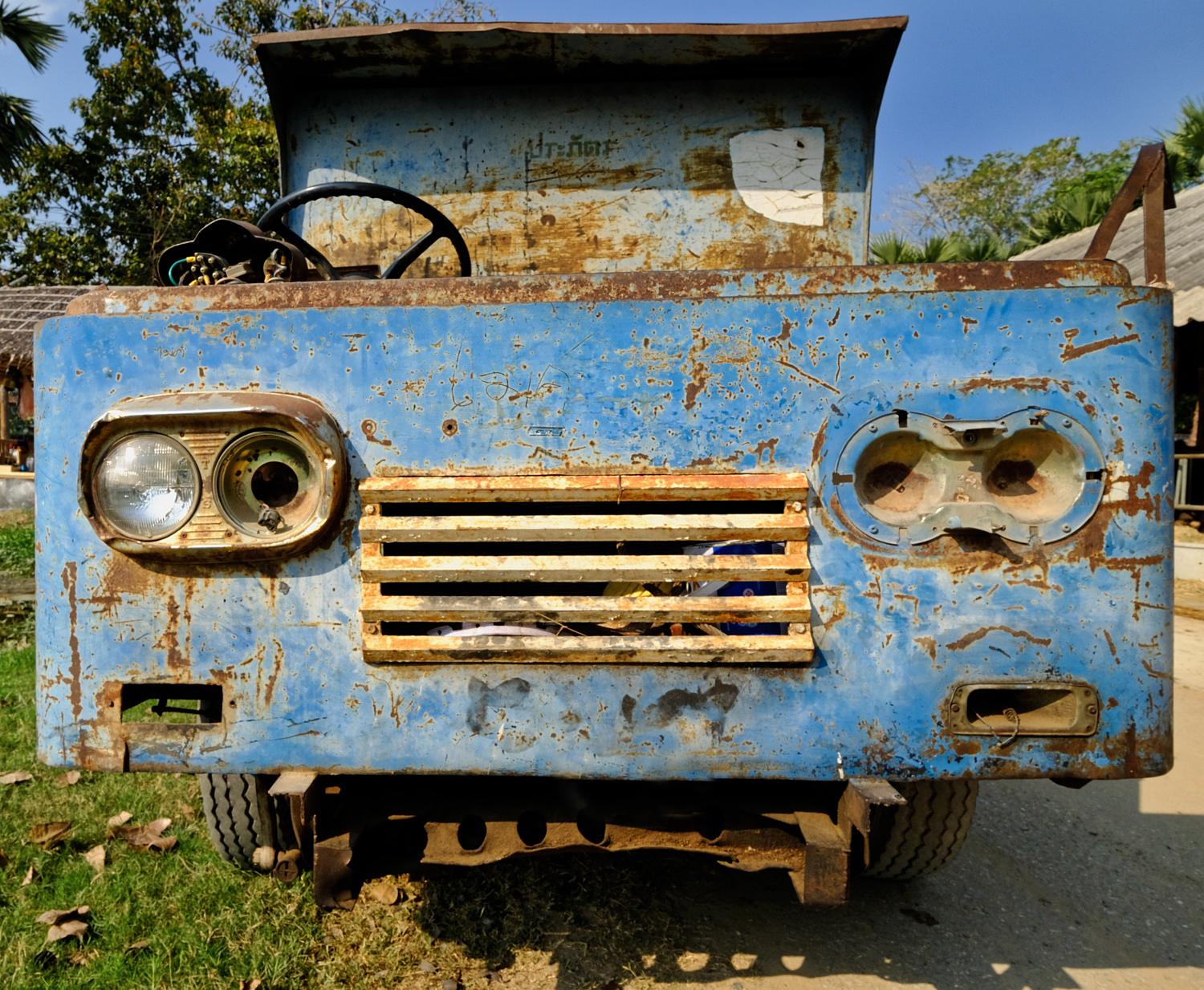 Classic.
Classic.
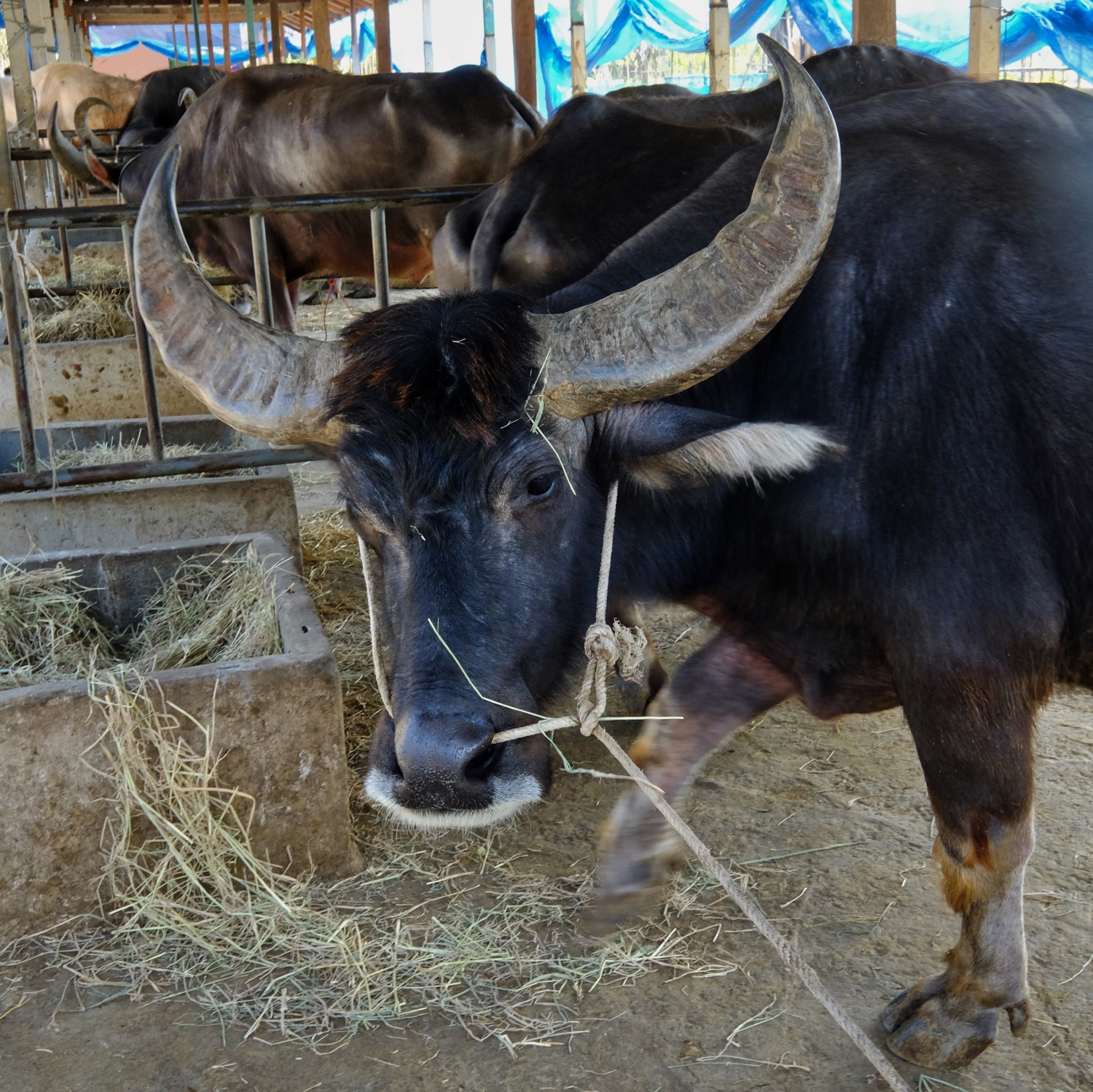 Some of the buffalo were brought into a shed for feeding.
Some of the buffalo were brought into a shed for feeding.
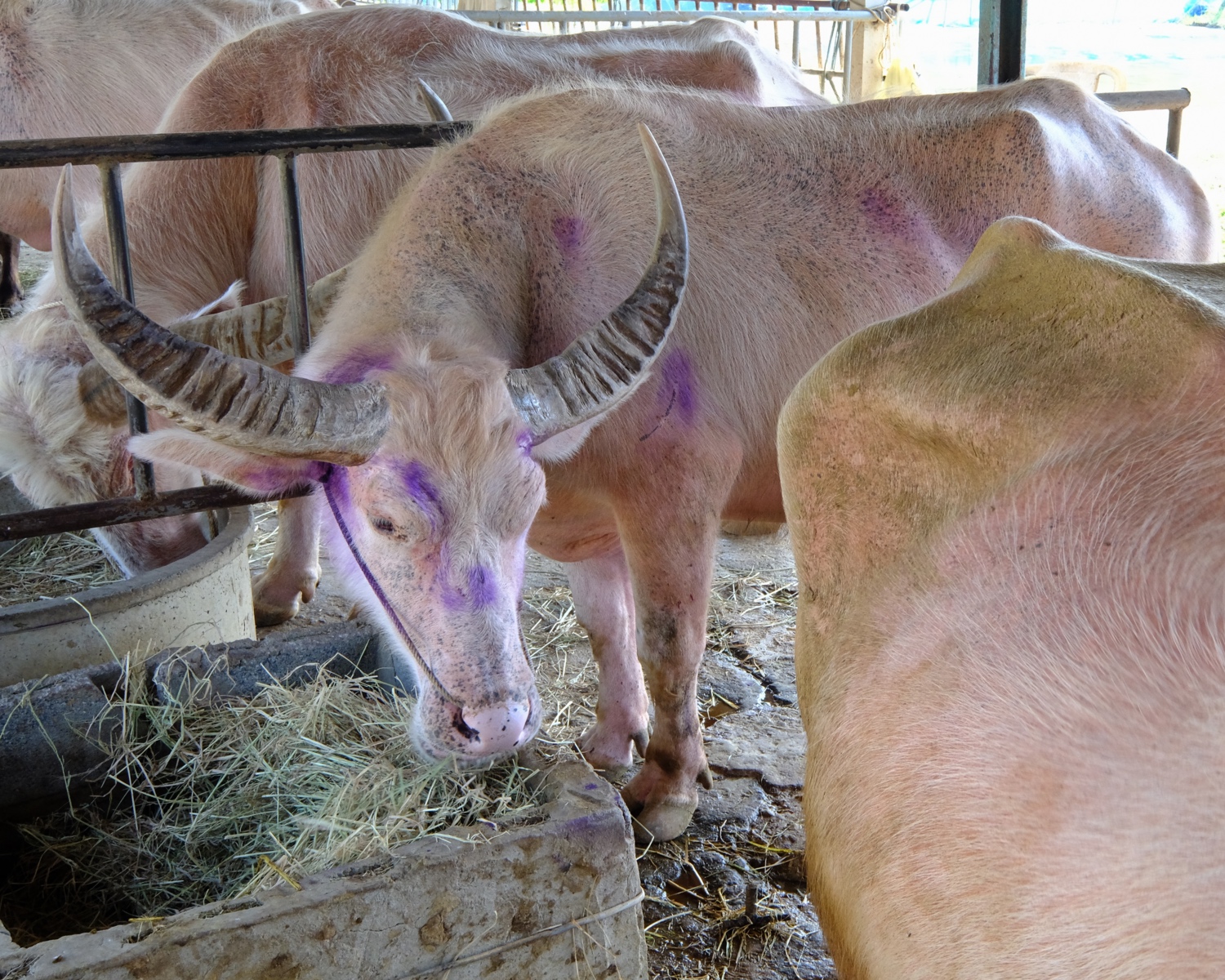 The purple . . . perhaps medical treatment of some kind.
The purple . . . perhaps medical treatment of some kind.
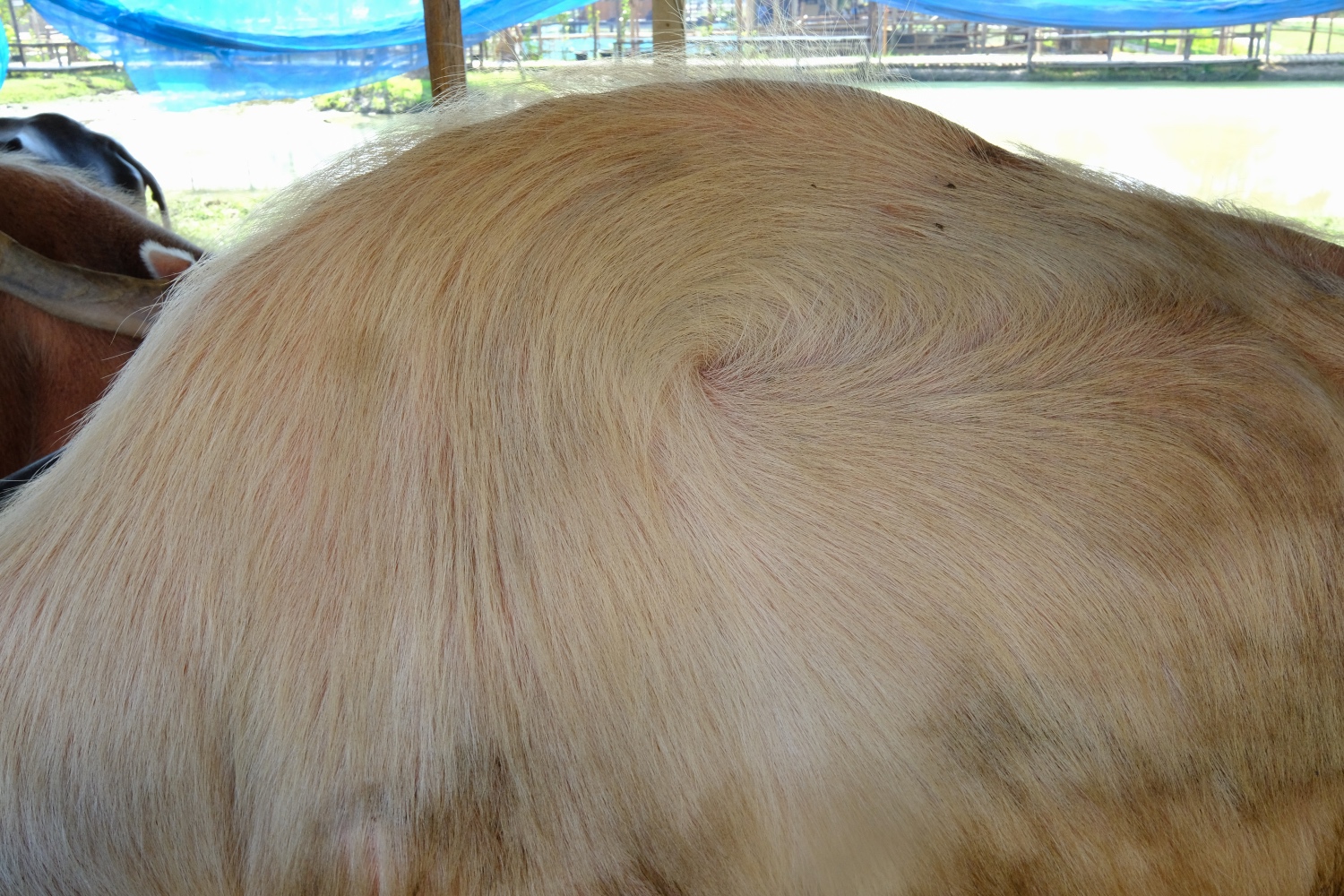 No: not a cowlick . . . a buffalolick!
No: not a cowlick . . . a buffalolick!
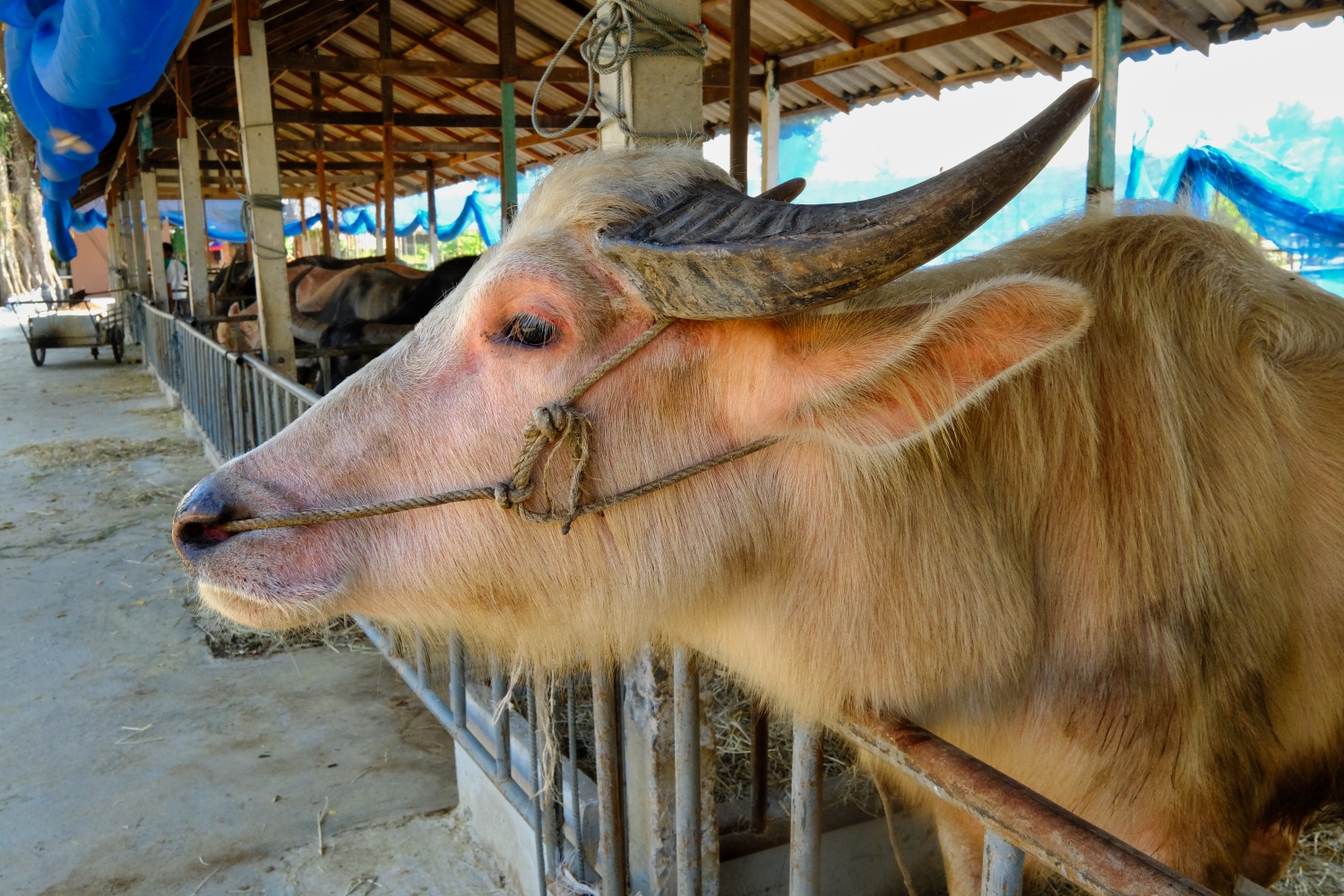 Buffalo are a noble creature . . .
Buffalo are a noble creature . . .
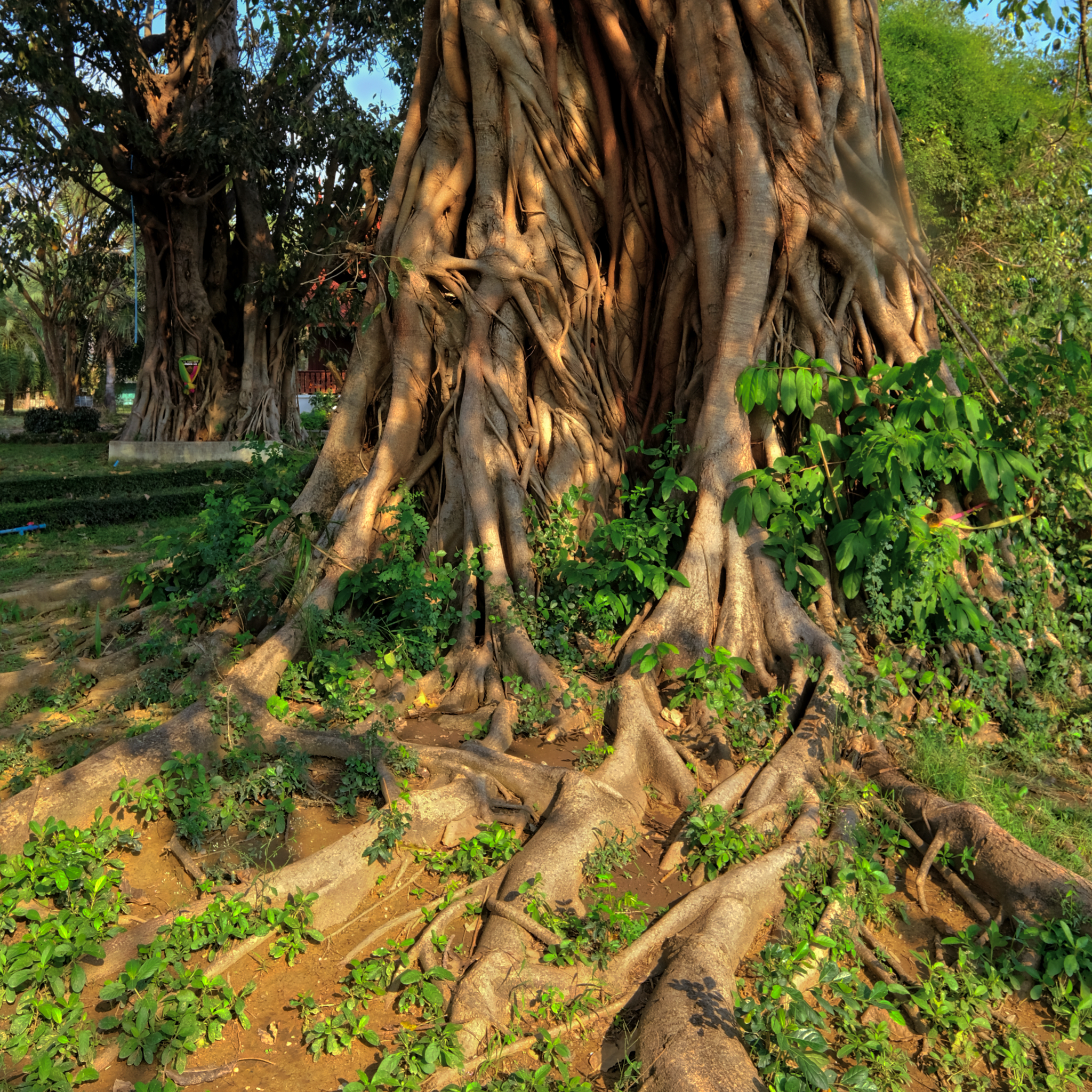 It was a pleasant day for just walking a round. There was always something of interest to see.
It was a pleasant day for just walking a round. There was always something of interest to see.
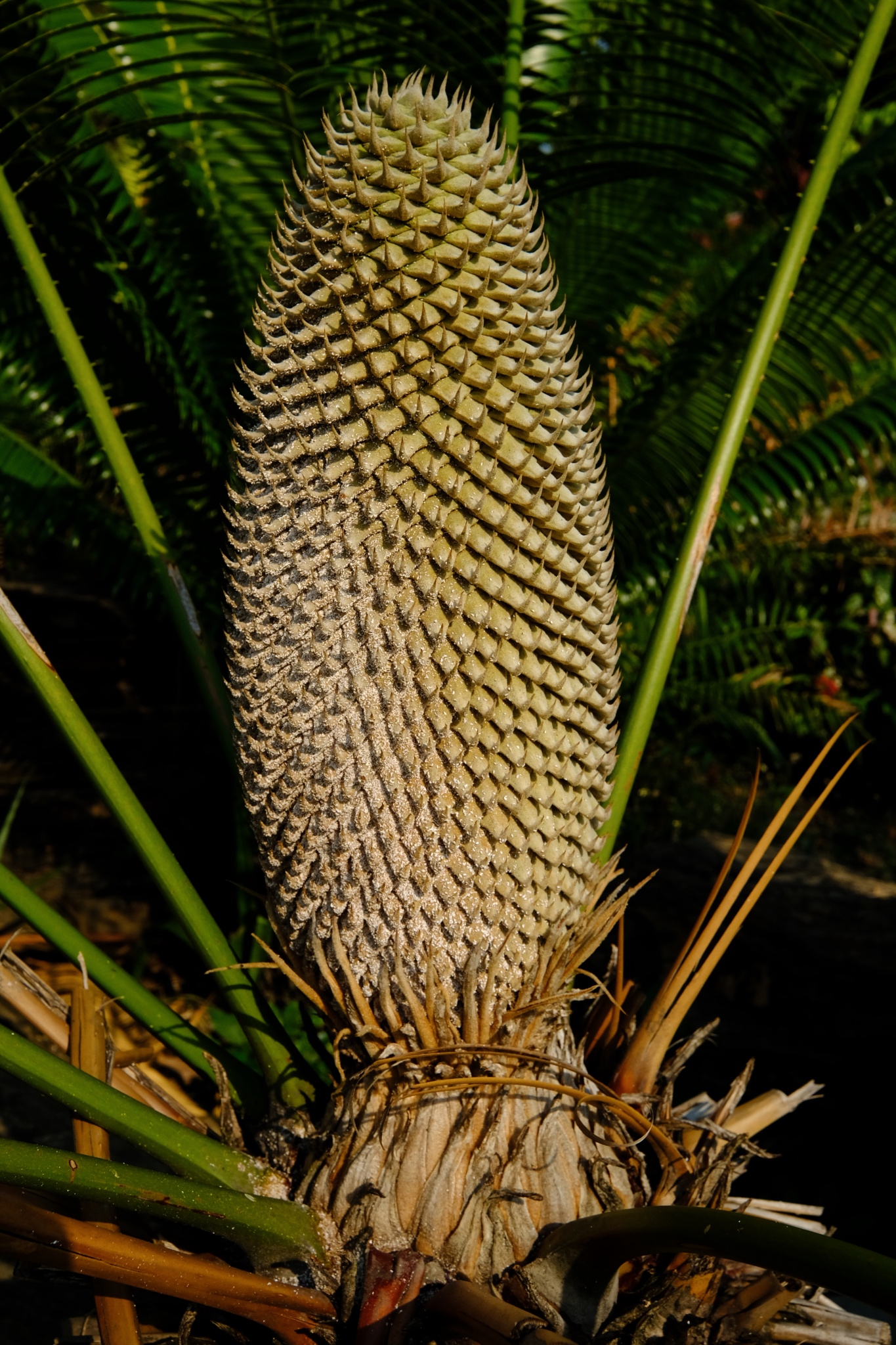 The large seed pod of a fern palm.
The large seed pod of a fern palm.
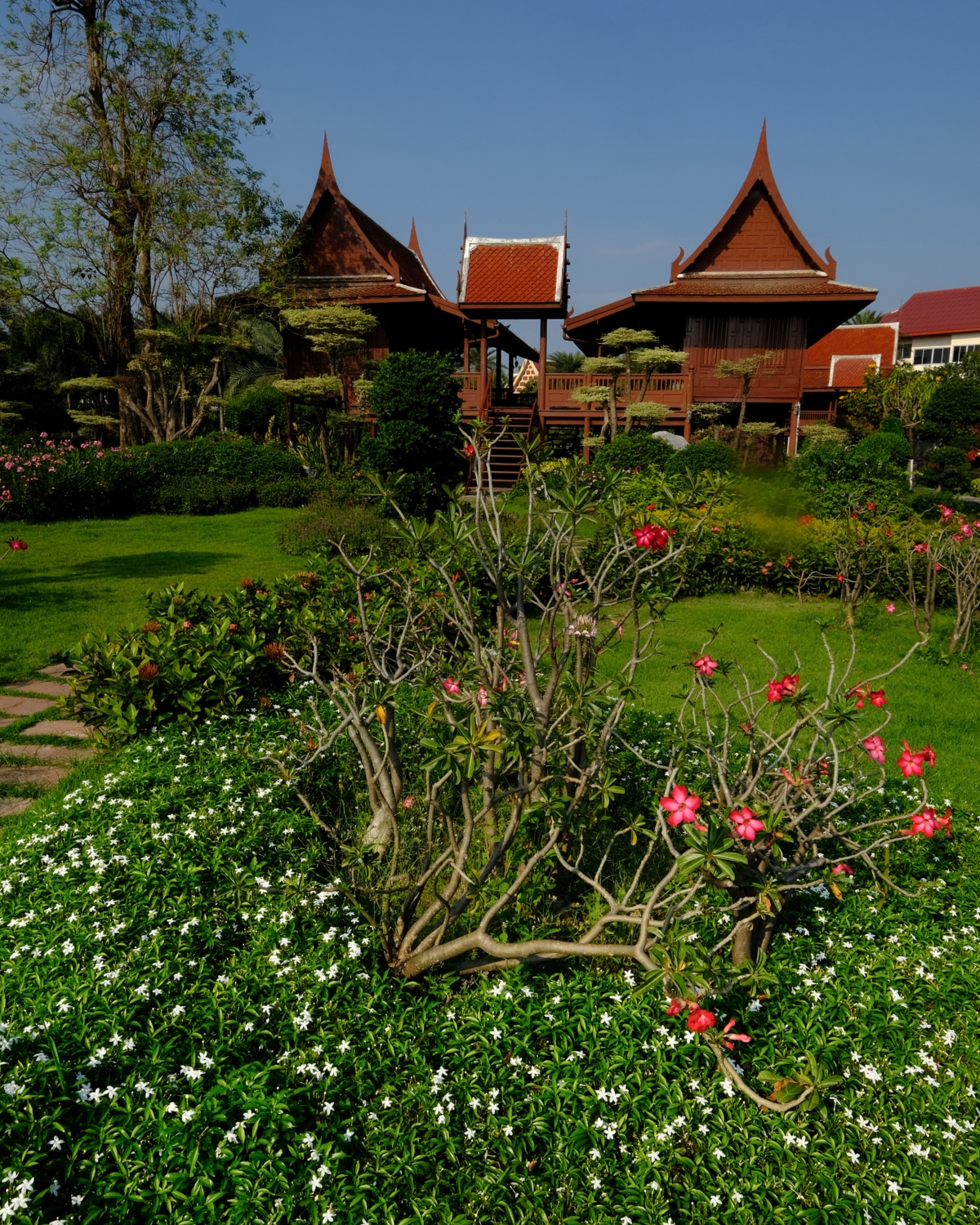 It was the end of the rainy season and everything was looking good.
It was the end of the rainy season and everything was looking good.
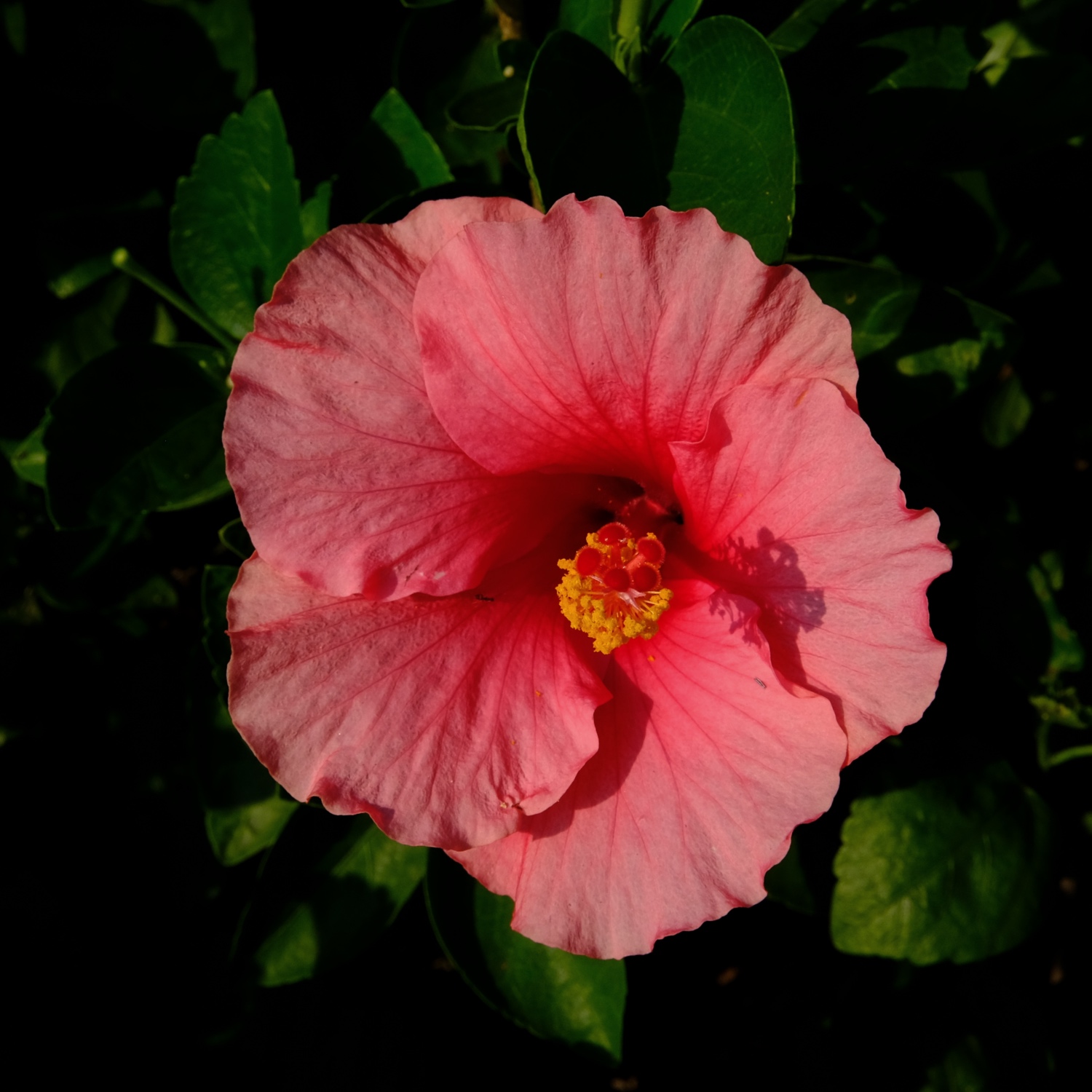 A lovely Hibiscus flower.
A lovely Hibiscus flower.
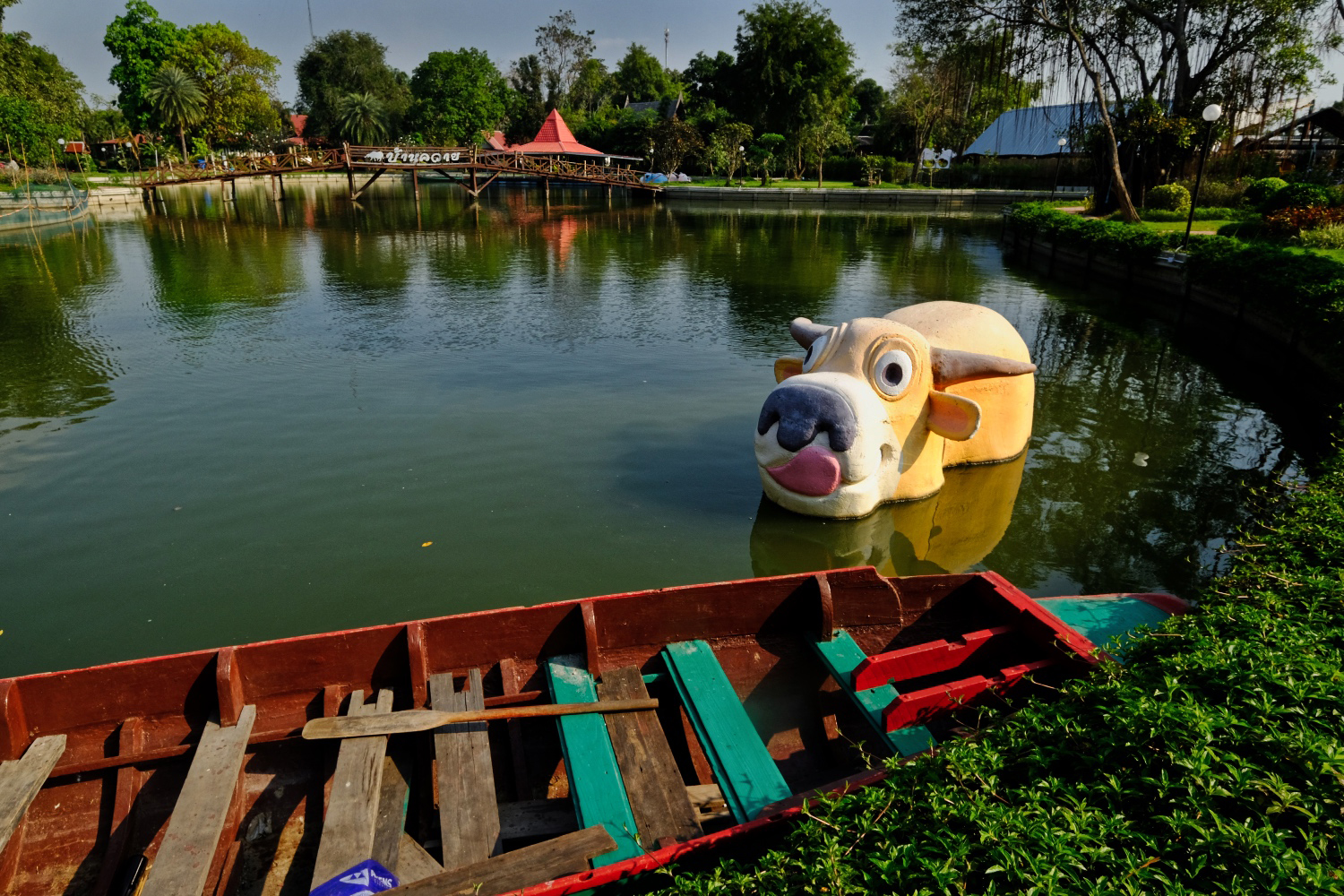 No buffalo park would be complete without a fiberglass replica of a buffalo cartoon character from Thai childrens' TV.
No buffalo park would be complete without a fiberglass replica of a buffalo cartoon character from Thai childrens' TV.
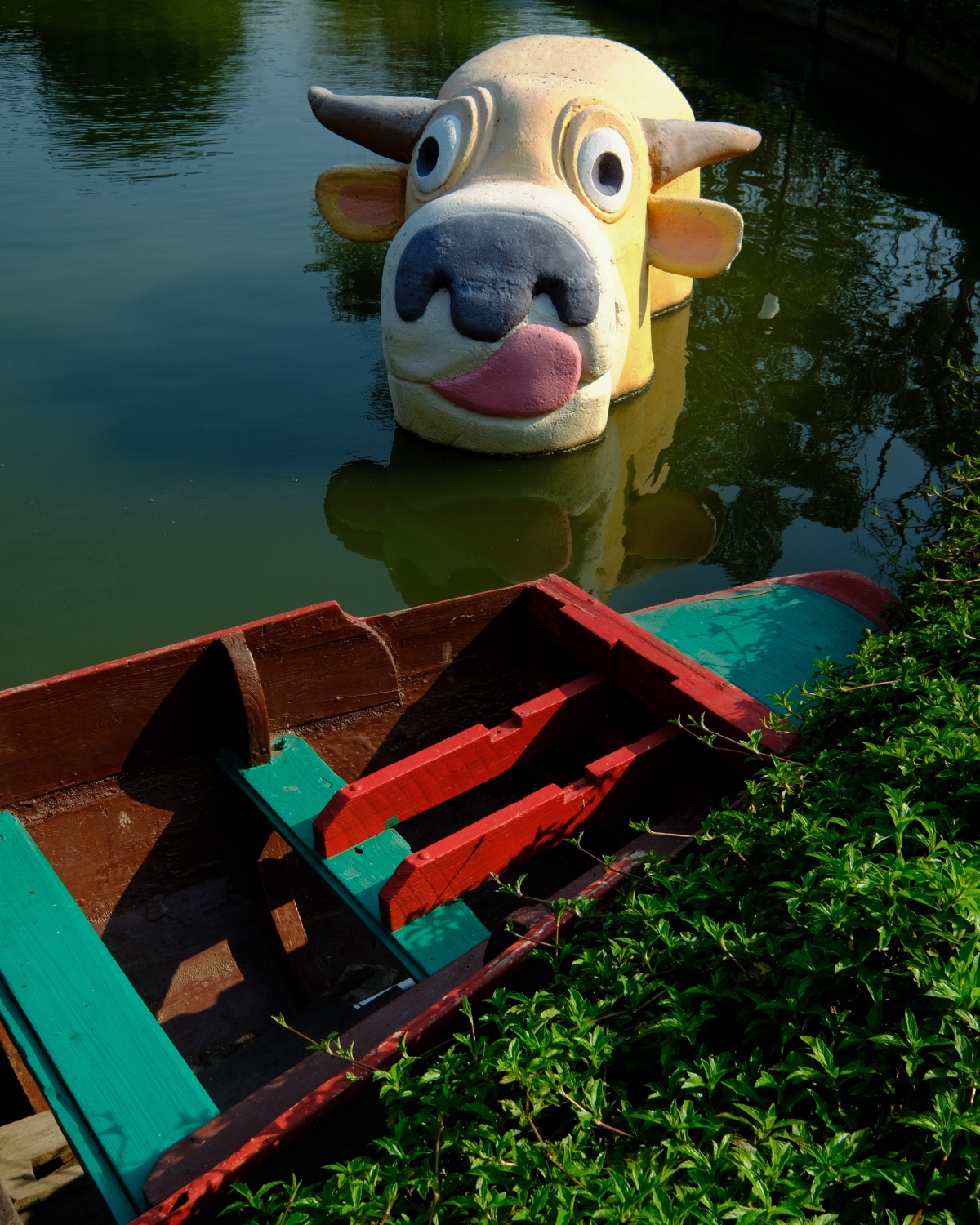 We saw only three other visitors during the hour we spent at the buffalo village. Granted, it was a Monday, but there must be a tourist season. A school teacher friend of mine said that his school takes elementary school kids here by bus once a year . . . .
We saw only three other visitors during the hour we spent at the buffalo village. Granted, it was a Monday, but there must be a tourist season. A school teacher friend of mine said that his school takes elementary school kids here by bus once a year . . . .
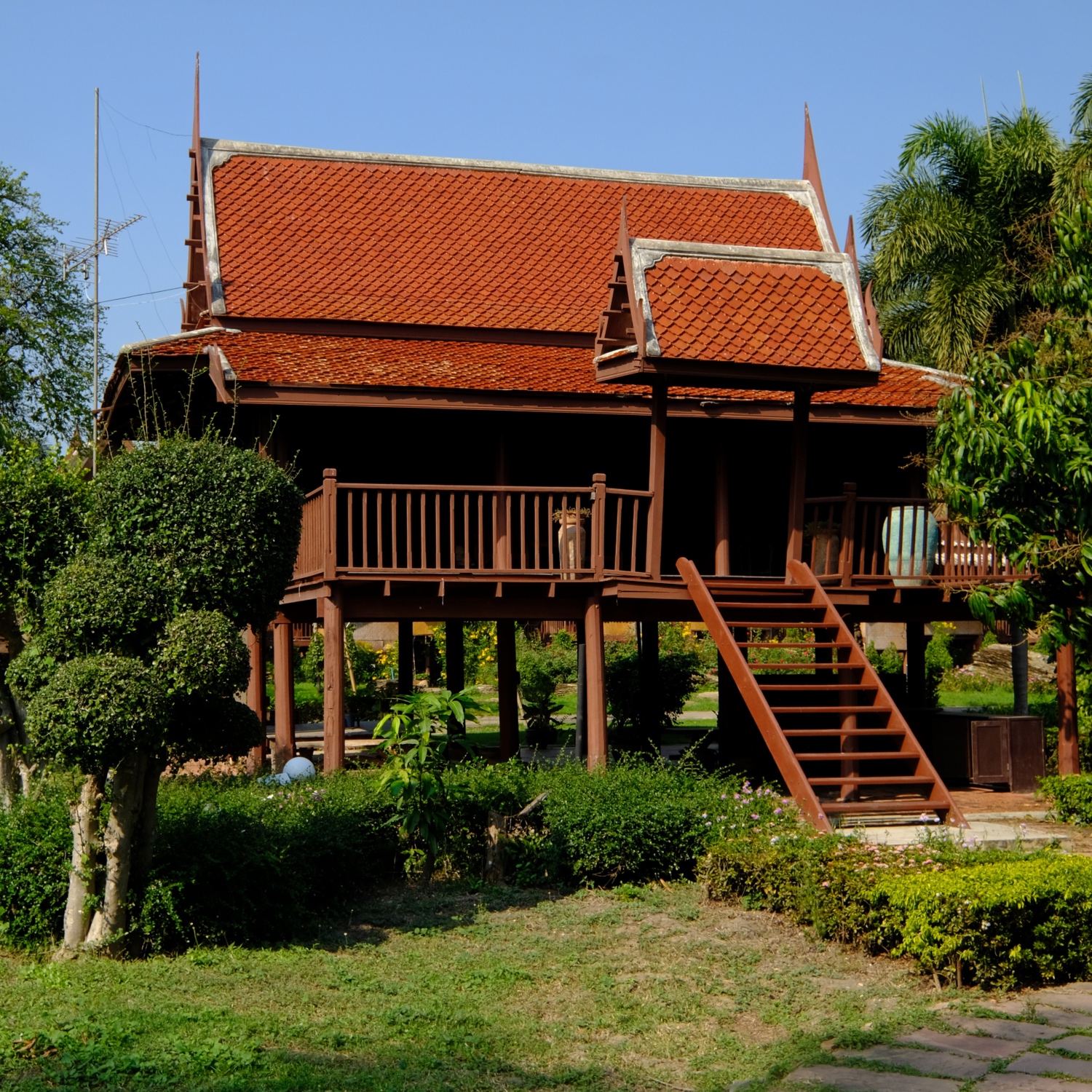 The whole buffalo village was dotted with the fine old Thai style houses. Beautiful.
The whole buffalo village was dotted with the fine old Thai style houses. Beautiful.
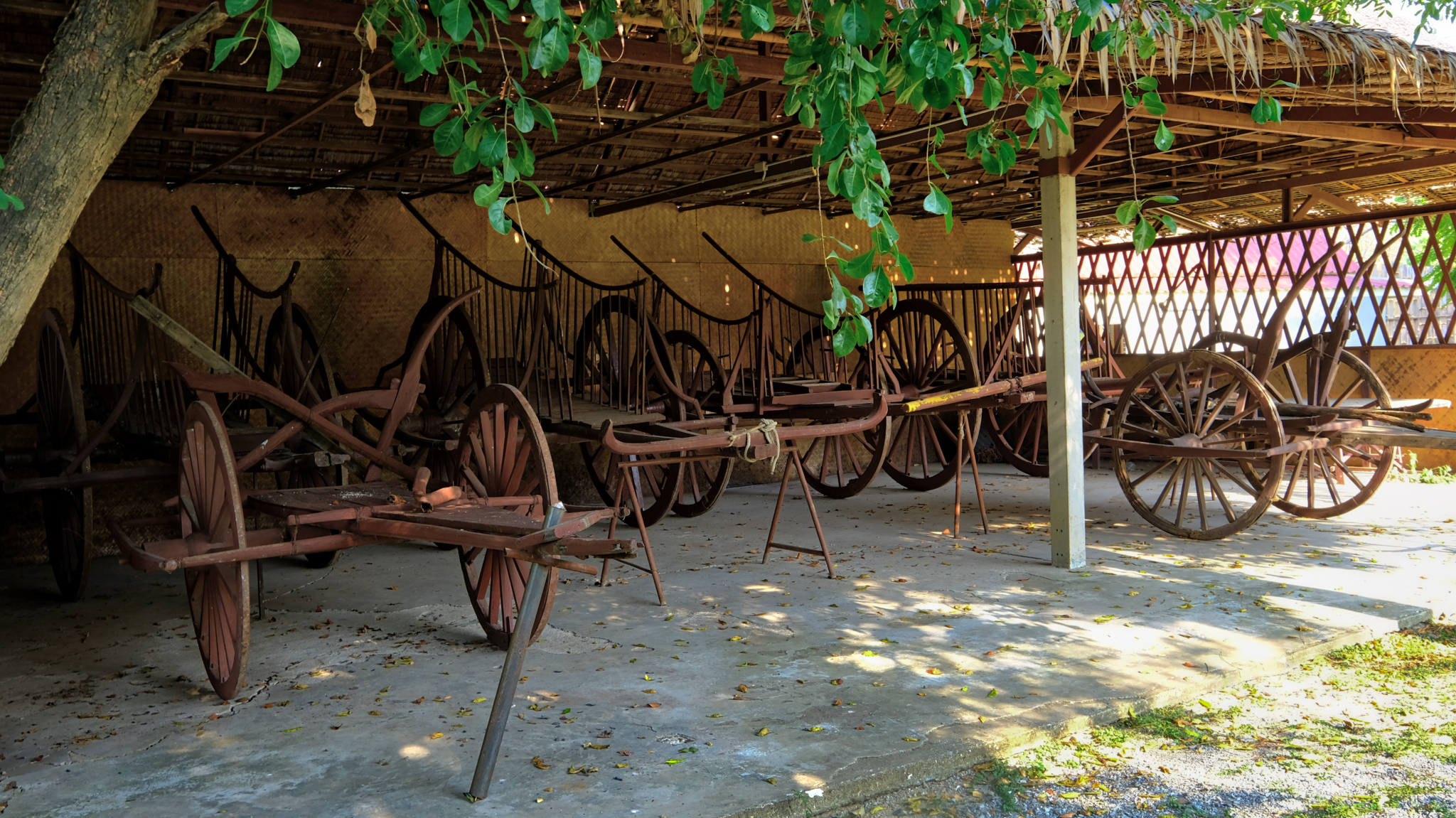 Buffalo pull buffalo carts . . . duh! I was glad to have found this shed containing many very old and restored carts.
Buffalo pull buffalo carts . . . duh! I was glad to have found this shed containing many very old and restored carts.
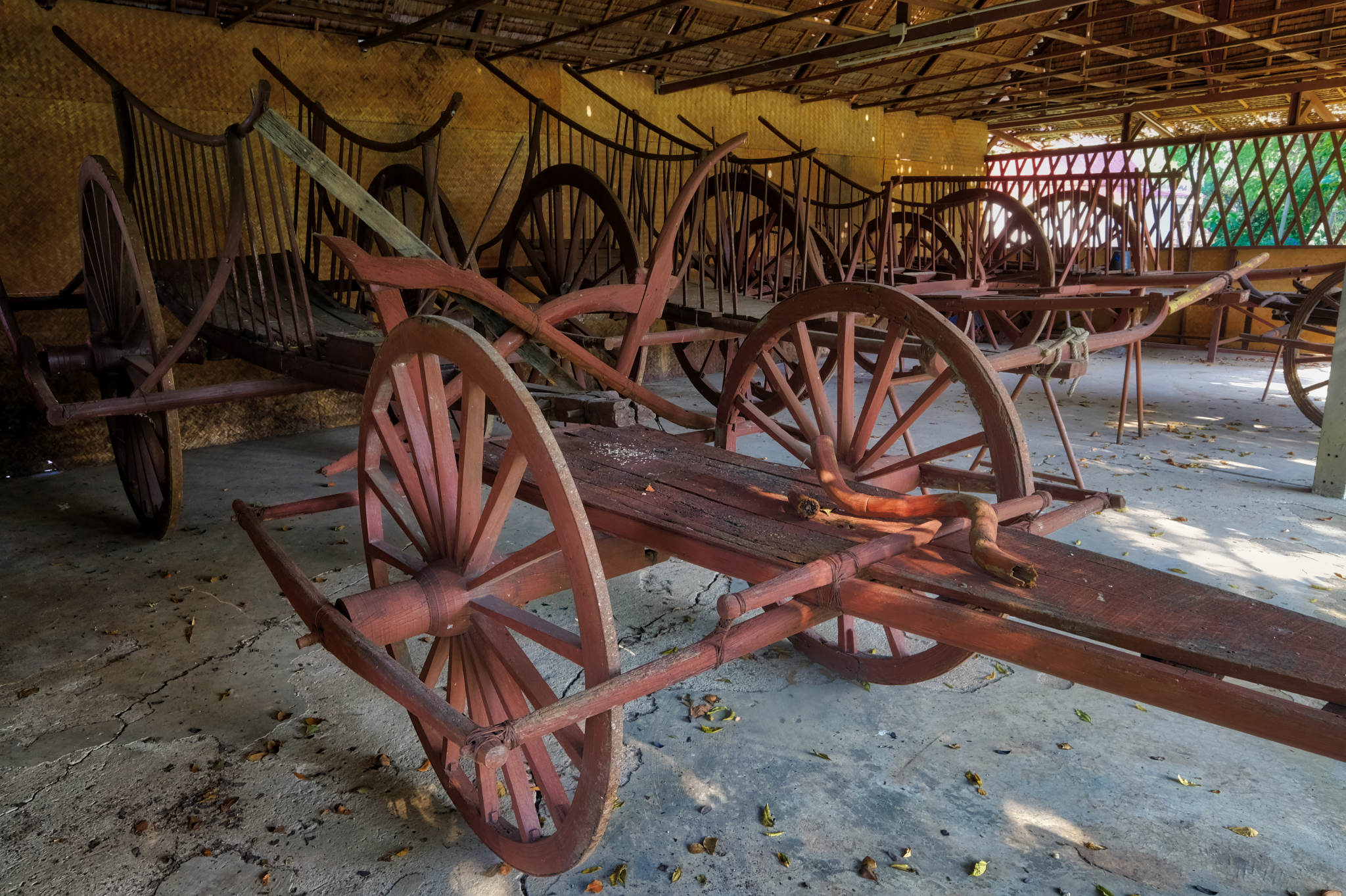 A cart for every purpose.
A cart for every purpose.
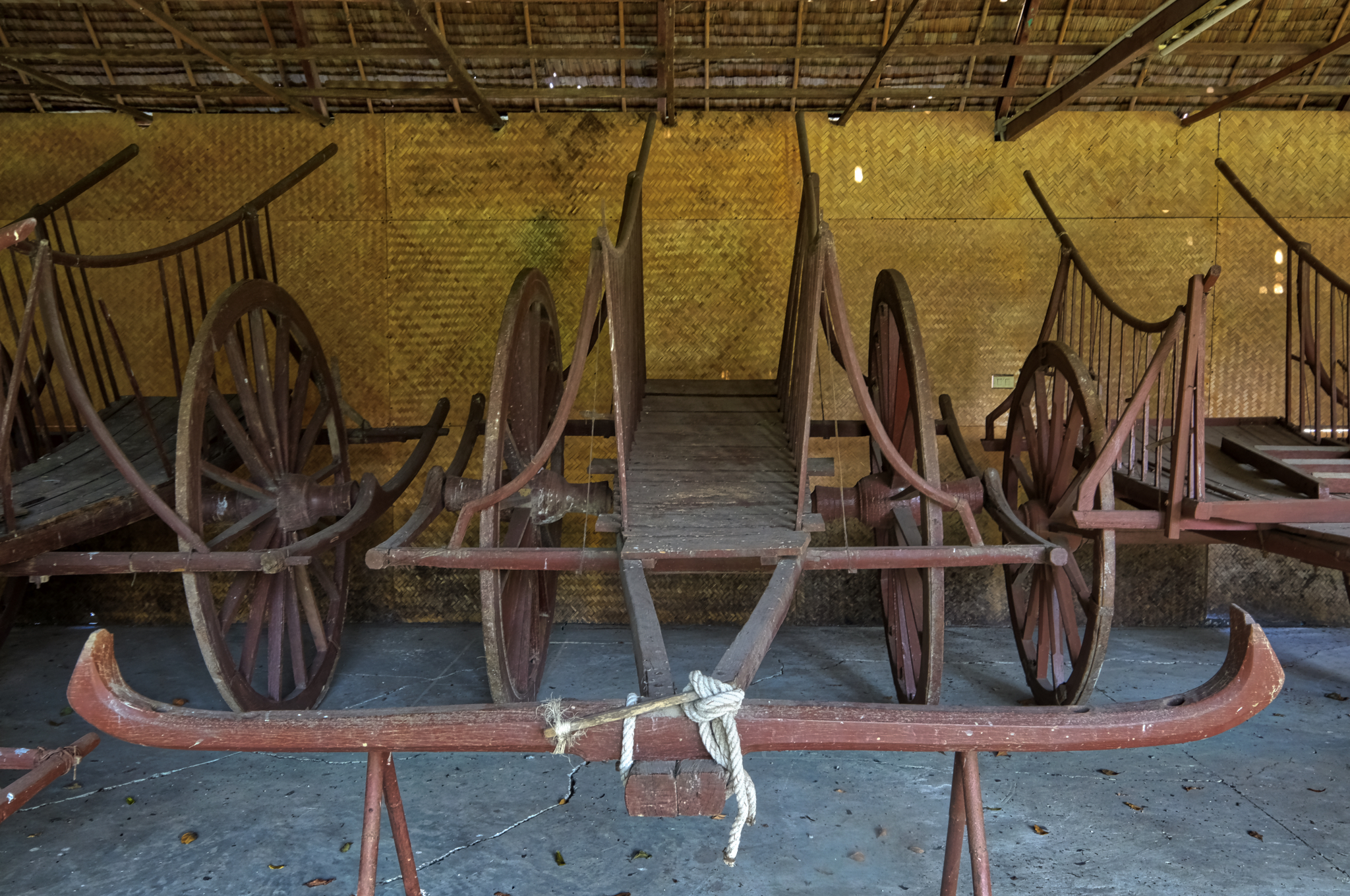 Very simple construction, but strong.
Very simple construction, but strong.
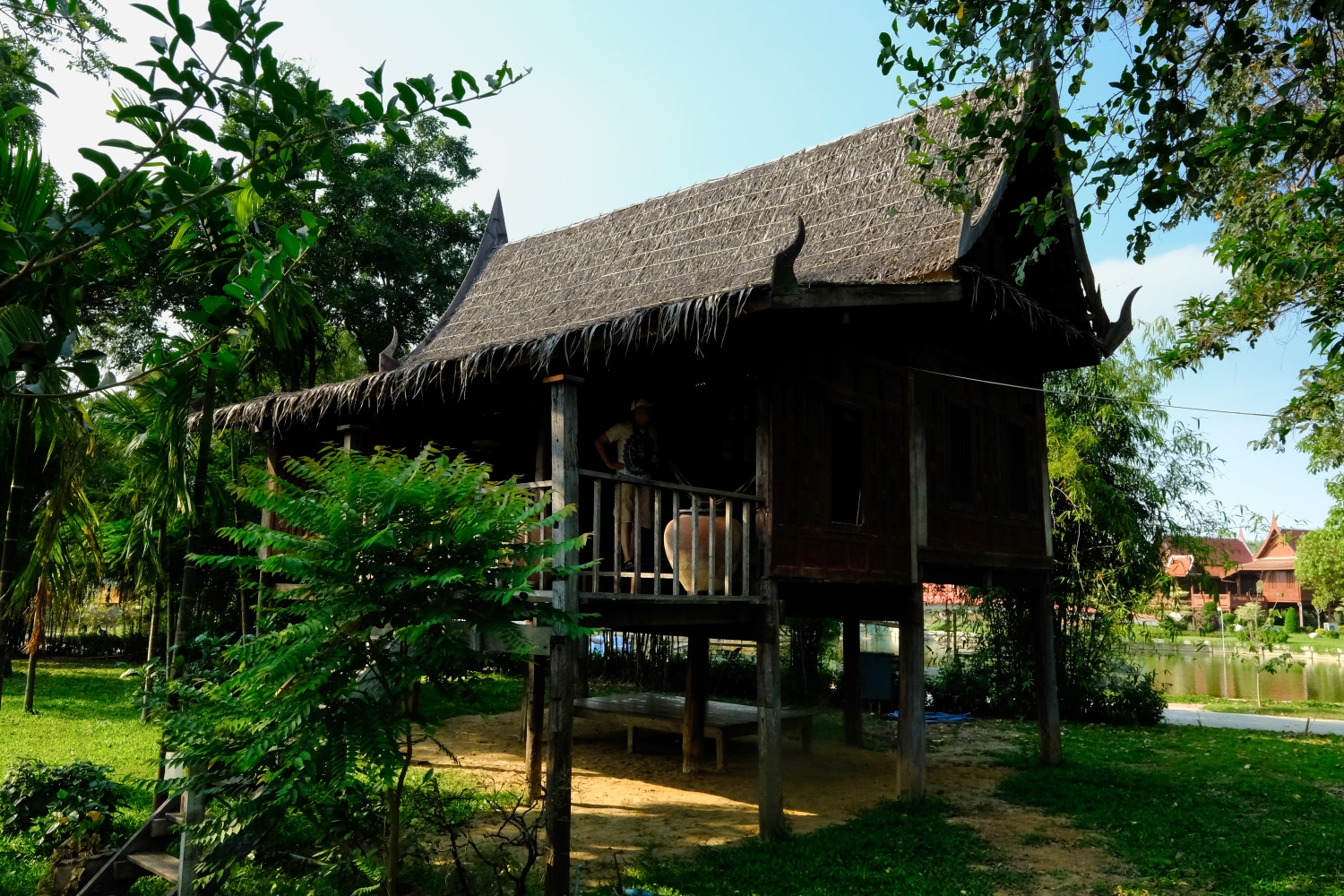 This was a very old Thai house that was open for inspection. We went in and were amazed at what we saw!
This was a very old Thai house that was open for inspection. We went in and were amazed at what we saw!
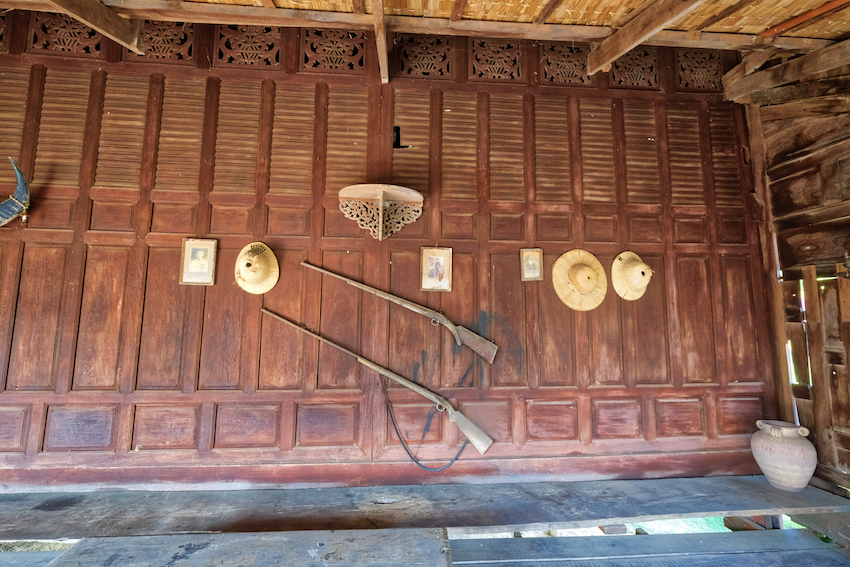 Many old antique items remained in the old farm house.
Many old antique items remained in the old farm house.
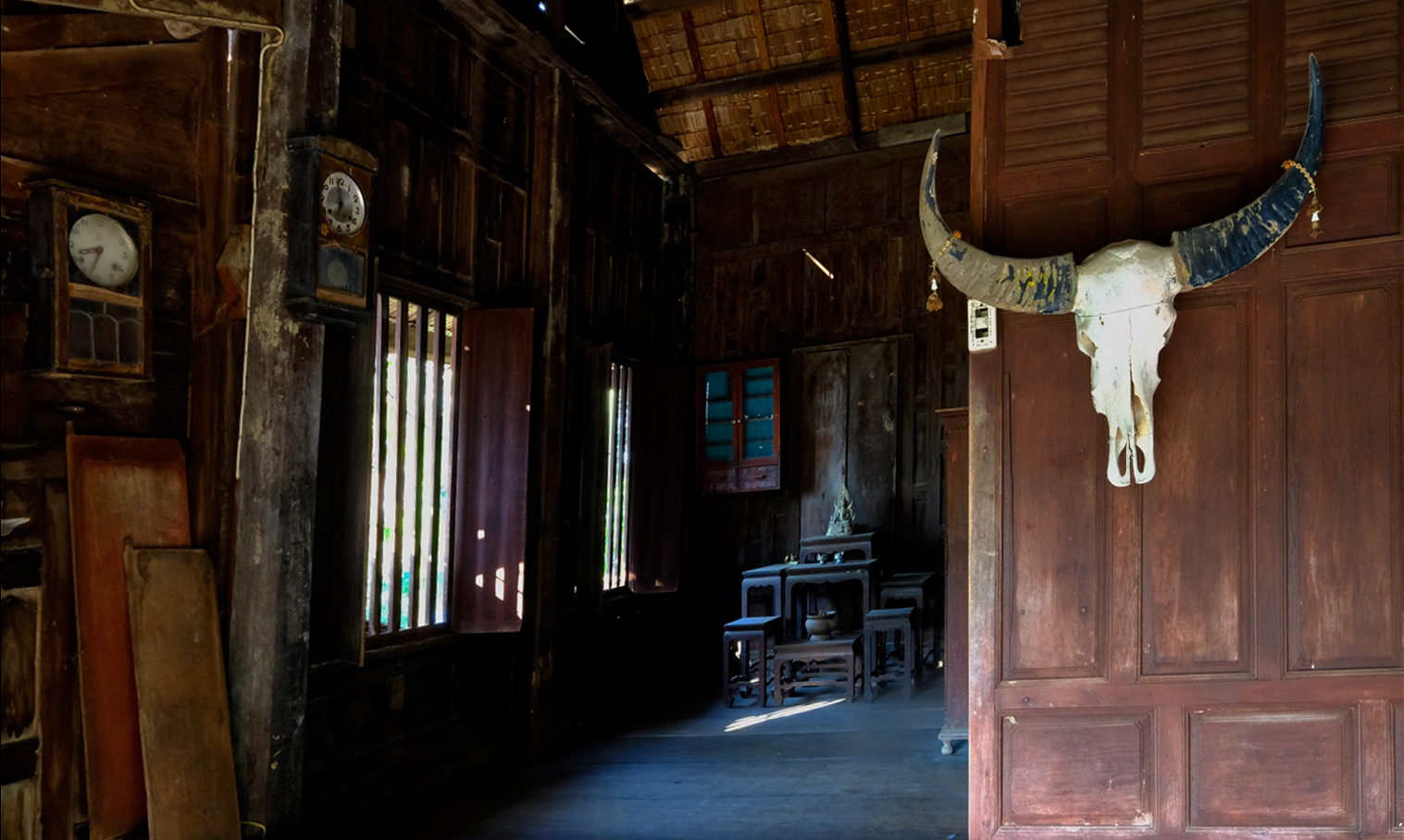 Fantastic light and color inside the old Thai farmhouse.
Fantastic light and color inside the old Thai farmhouse.
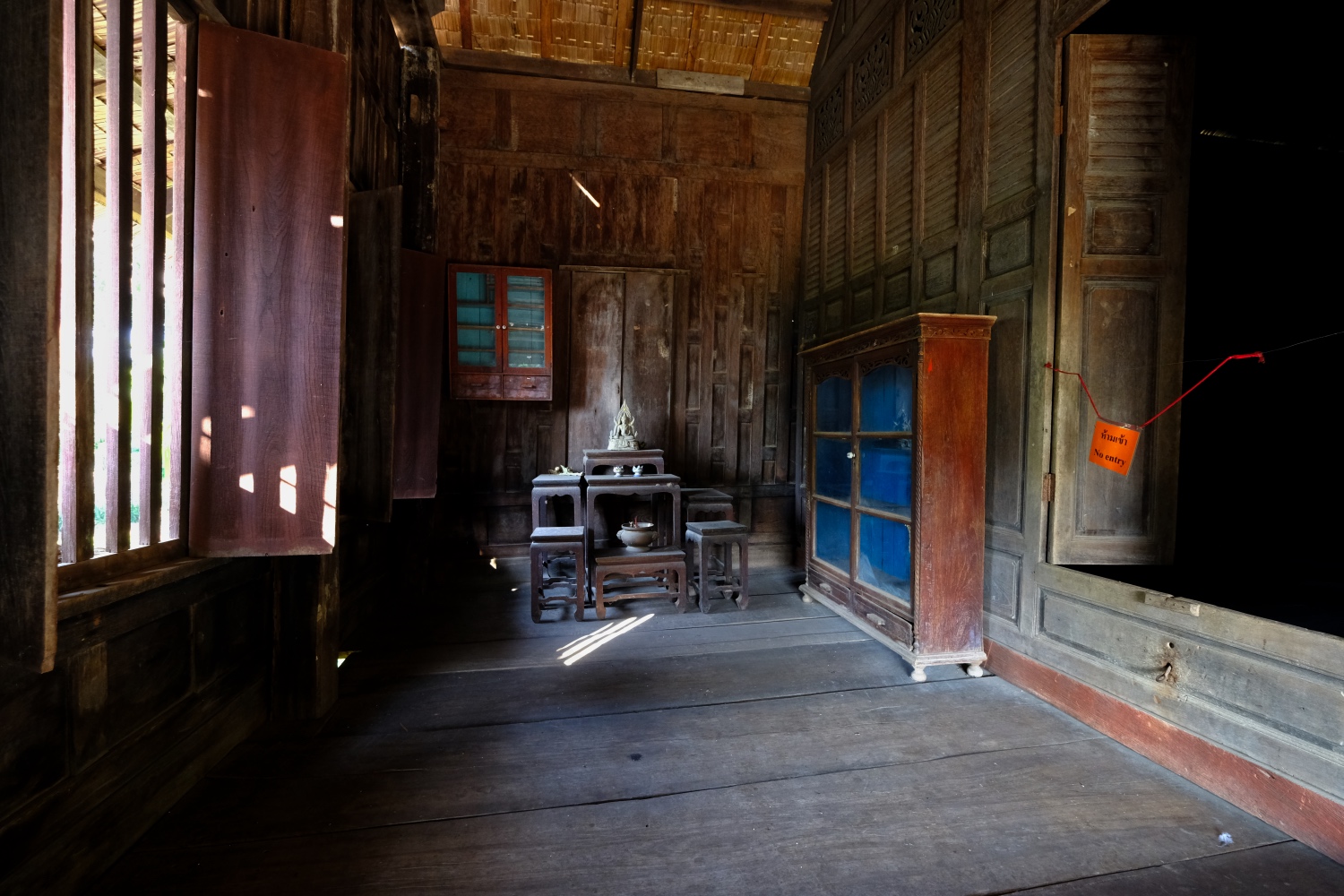 Huge teak planks made up the floor.
Huge teak planks made up the floor.
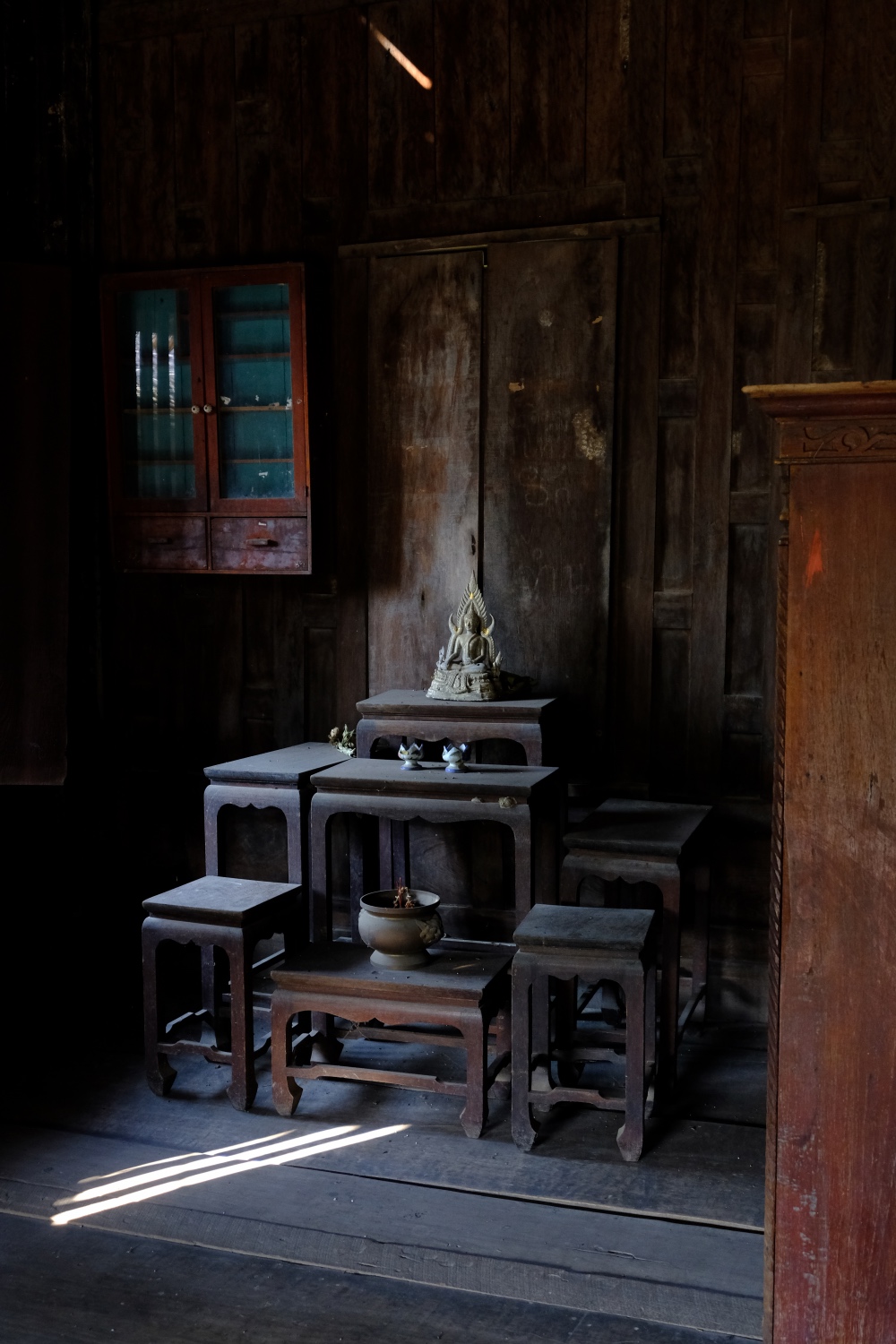 Such quiet spiritual beauty!
Such quiet spiritual beauty!
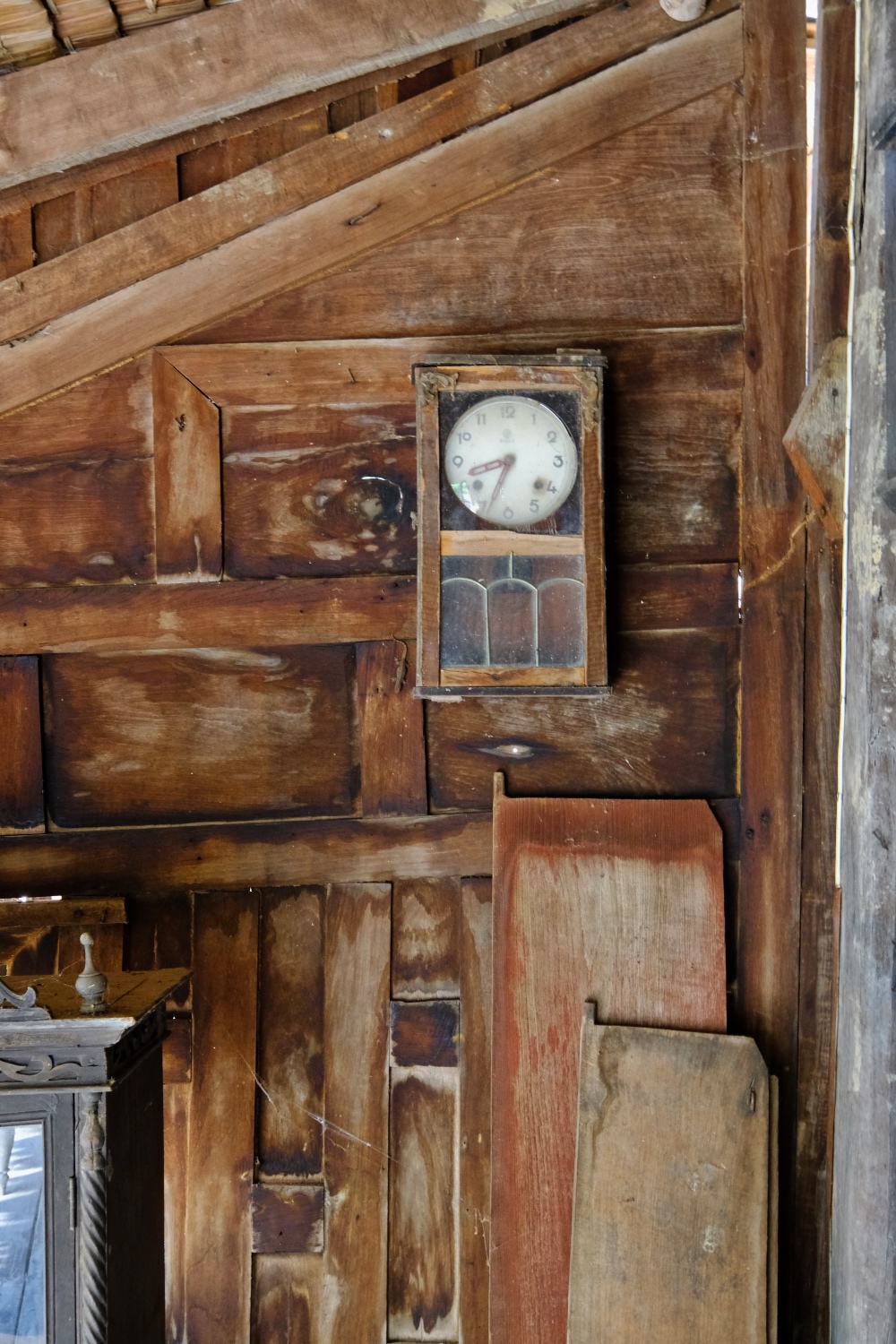 Marvelous light, color, shape, and texture.
Marvelous light, color, shape, and texture.
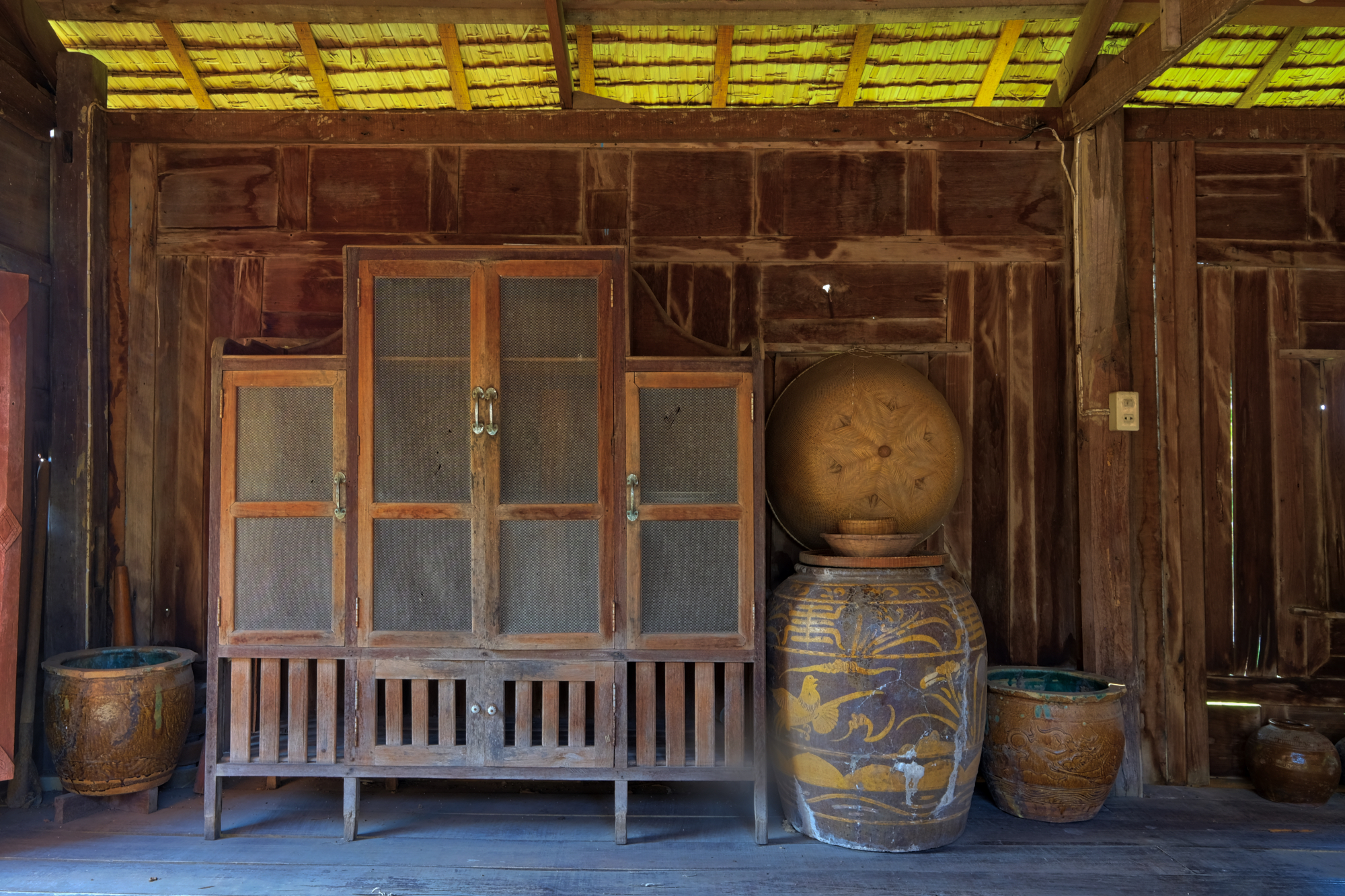 Every wall, every room . . . held visual marvels!
Every wall, every room . . . held visual marvels!
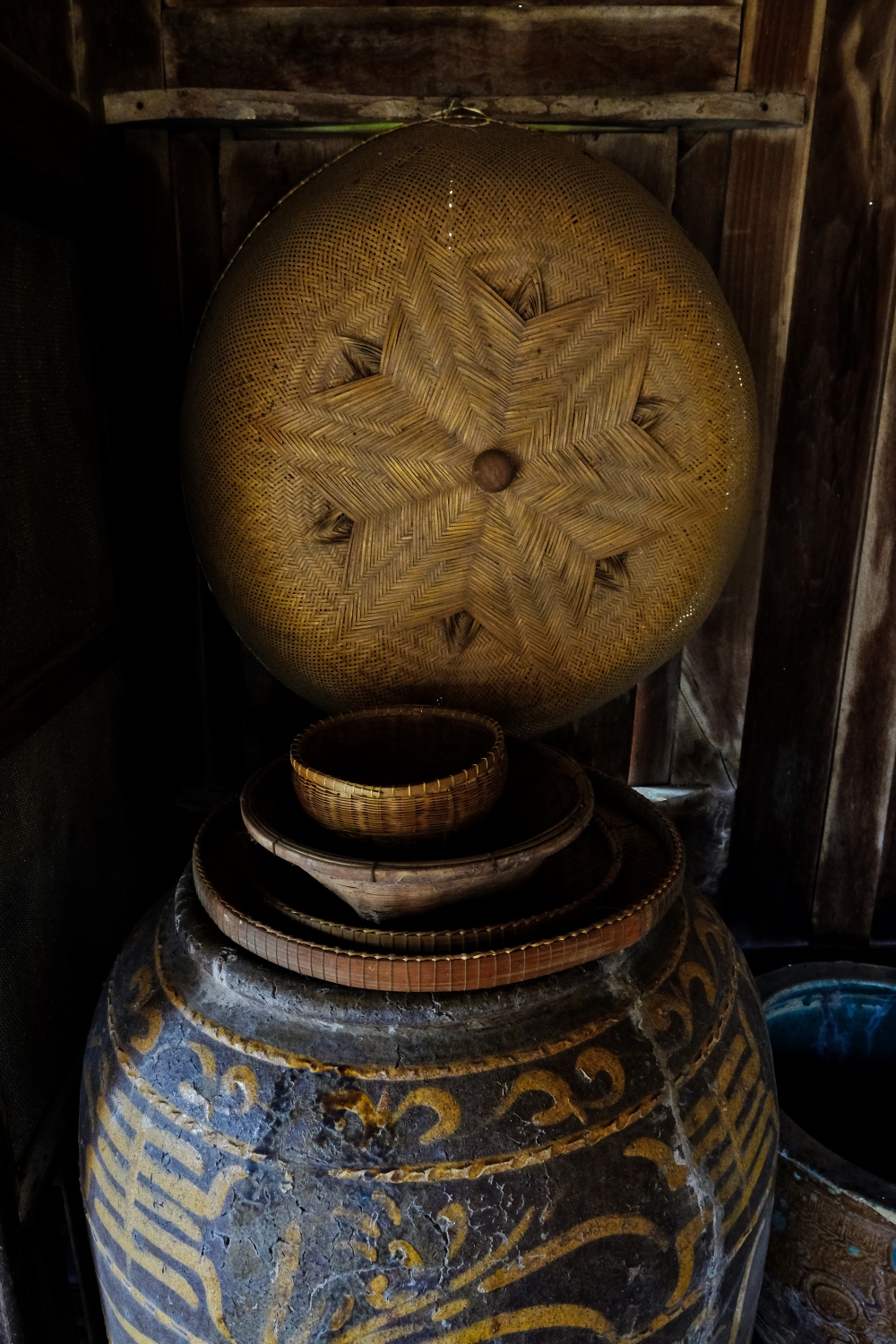 A perfect still life study wherever I looked.
A perfect still life study wherever I looked.
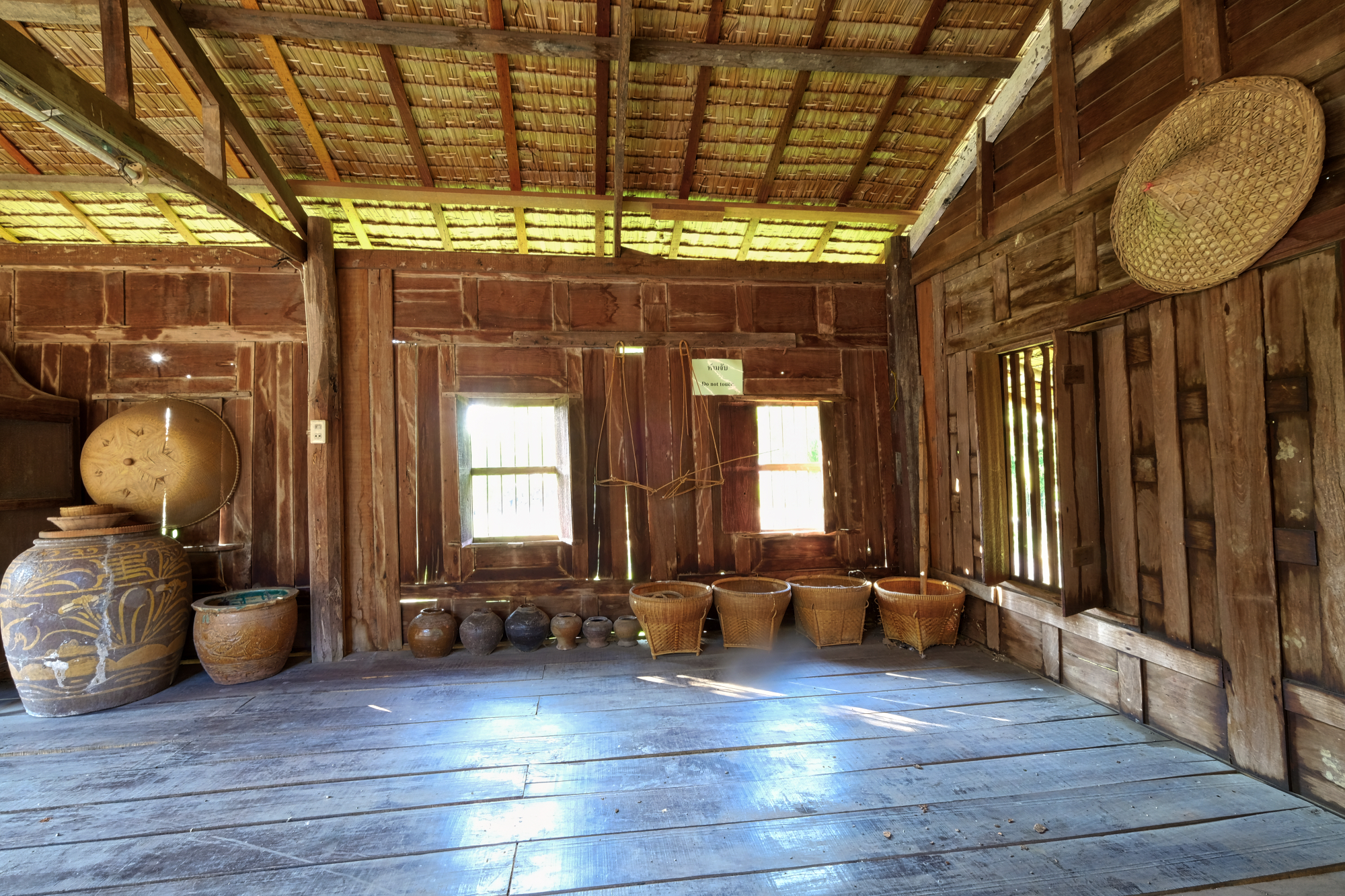 A collection of things one might find in an old Thai farmhouse.
A collection of things one might find in an old Thai farmhouse.
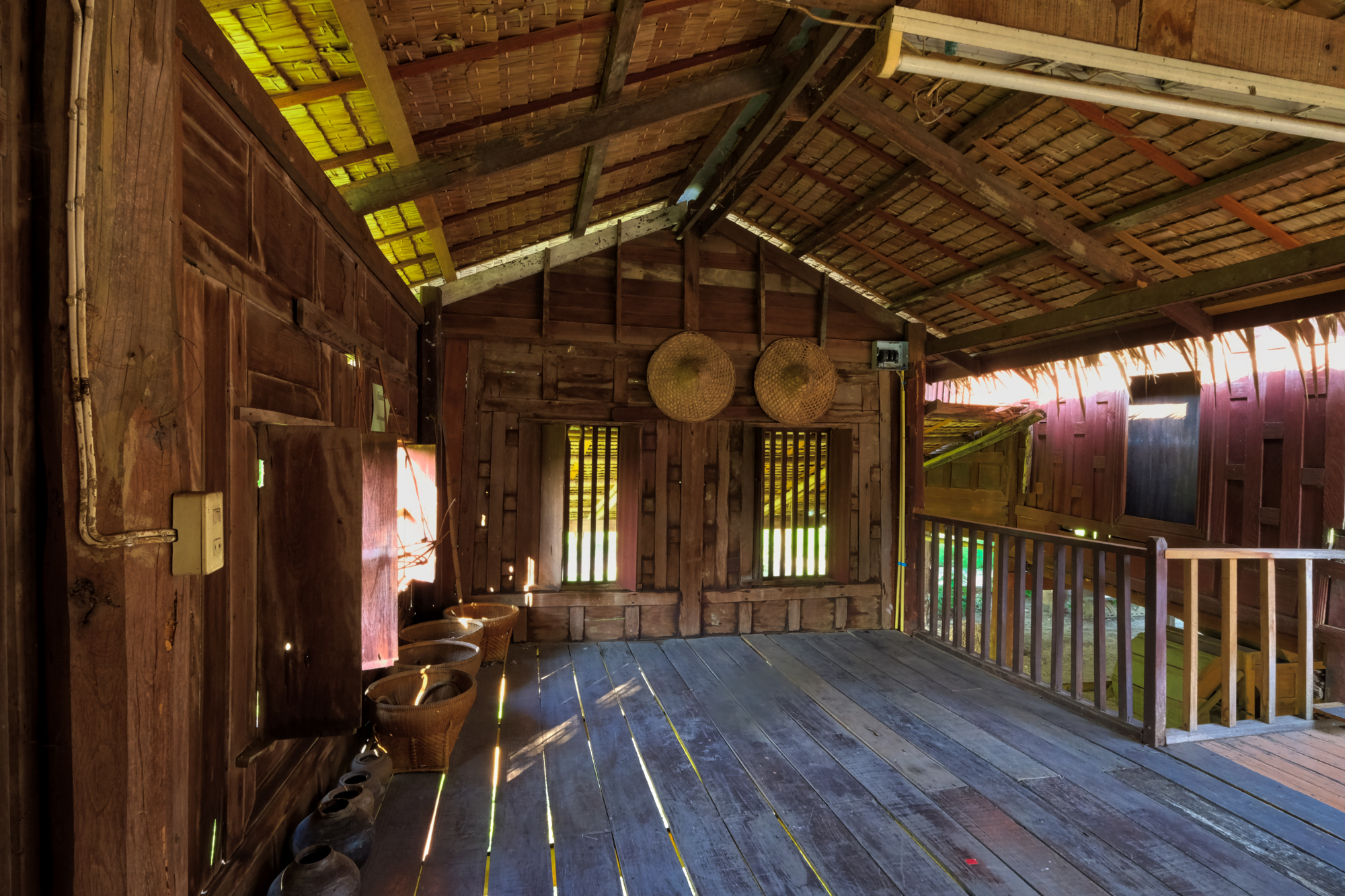 Parts of the old farmhouse were open to the outside . . . it is the tropics, so no need for heating . . . most likely the open kitchen area.
Parts of the old farmhouse were open to the outside . . . it is the tropics, so no need for heating . . . most likely the open kitchen area.
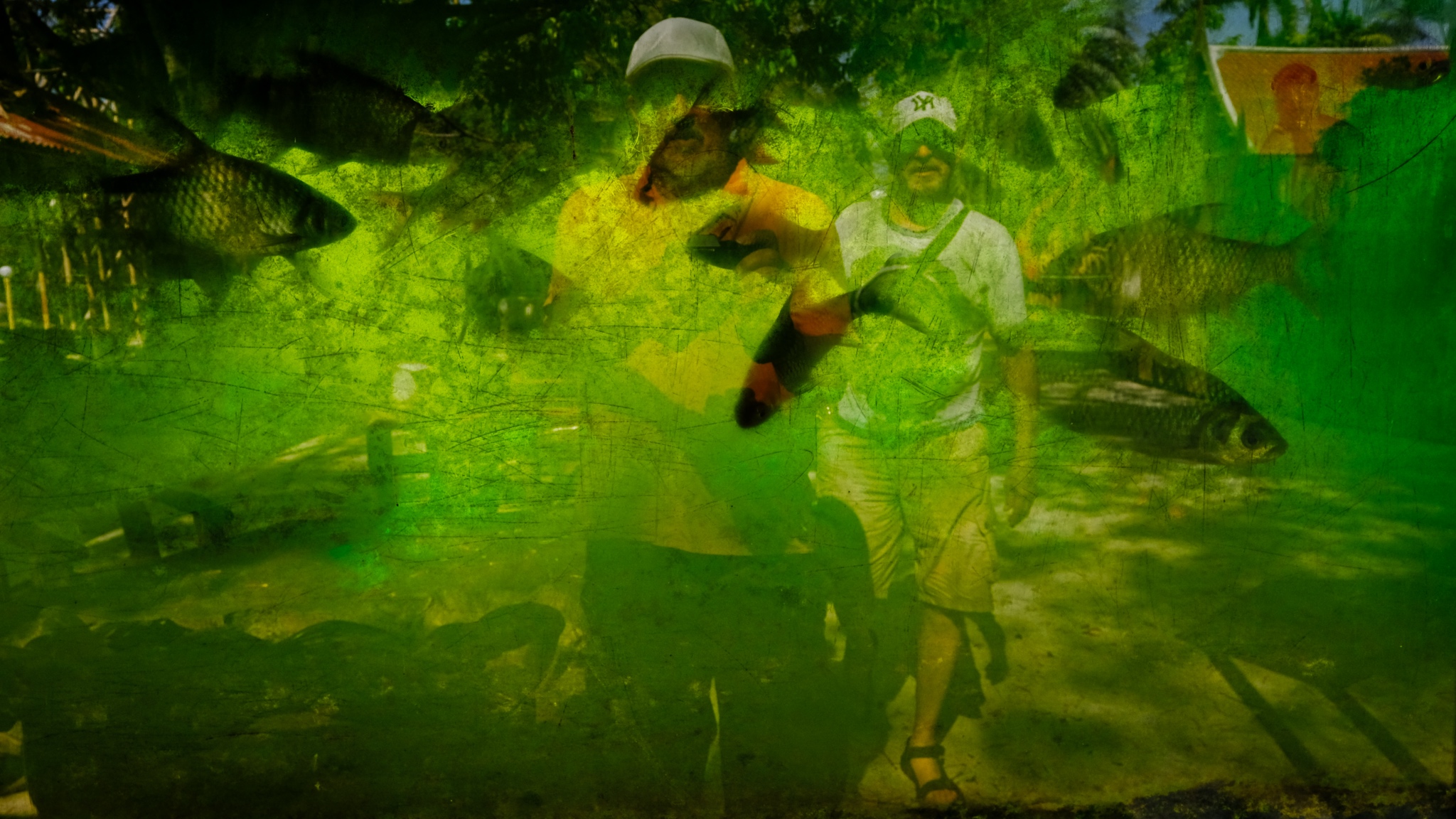 As we were leaving Baan Kwai, we couldn't help but notice a large fish tank . . . with fantastic reflections . . . of us! Bizarre selfie opportunities like this do not come along all that often.
As we were leaving Baan Kwai, we couldn't help but notice a large fish tank . . . with fantastic reflections . . . of us! Bizarre selfie opportunities like this do not come along all that often.
Suphanburi Province: A Day Trip Northwest Of Bangkok
 Saturday, March 10, 2018 at 7:11PM
Saturday, March 10, 2018 at 7:11PM A RAMBLE IN FOUR PARTS
Part One: An Ancient Rural Suiphanburi Riverside Wat
My friend John Stiles and I set off in my old truck up the road to the rural province of Suphanburi, to the northwest of Bangkok. As usual, we had a vague idea, from a tertiary Google search, of what we wanted to see, but no particular plan: we would ramble. We would eventually see several amazing Buddhist temple complexes, a Buffalo park, and a Farm Museum. We never 'found' the actual town of Suphanburi, but we didn't care: we had a grand adventure rambling about the rural Thai countryside.
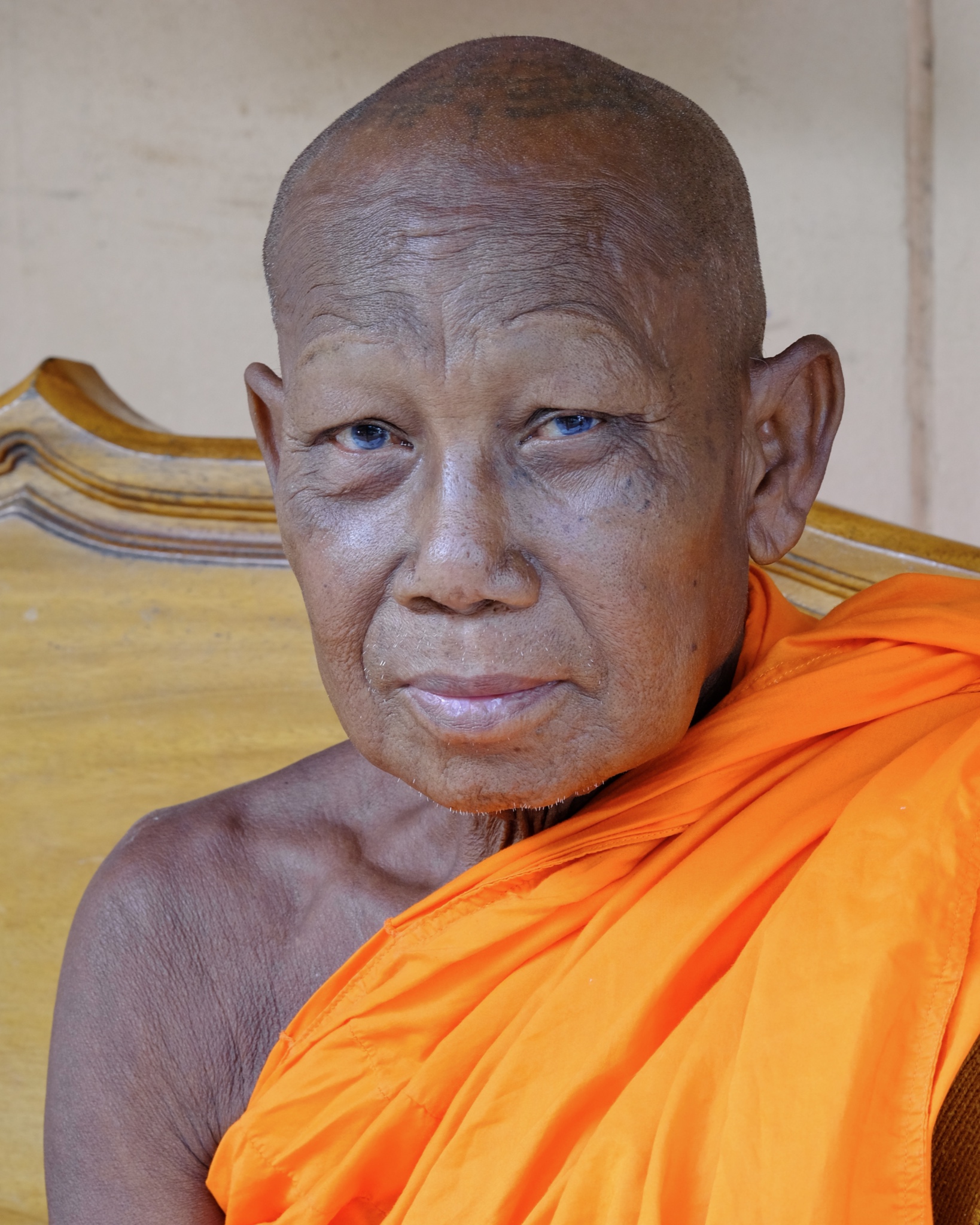 Suphanburi, just a two hours drive from my home, is like going back in time to simpler days in Thailand.
Suphanburi, just a two hours drive from my home, is like going back in time to simpler days in Thailand.
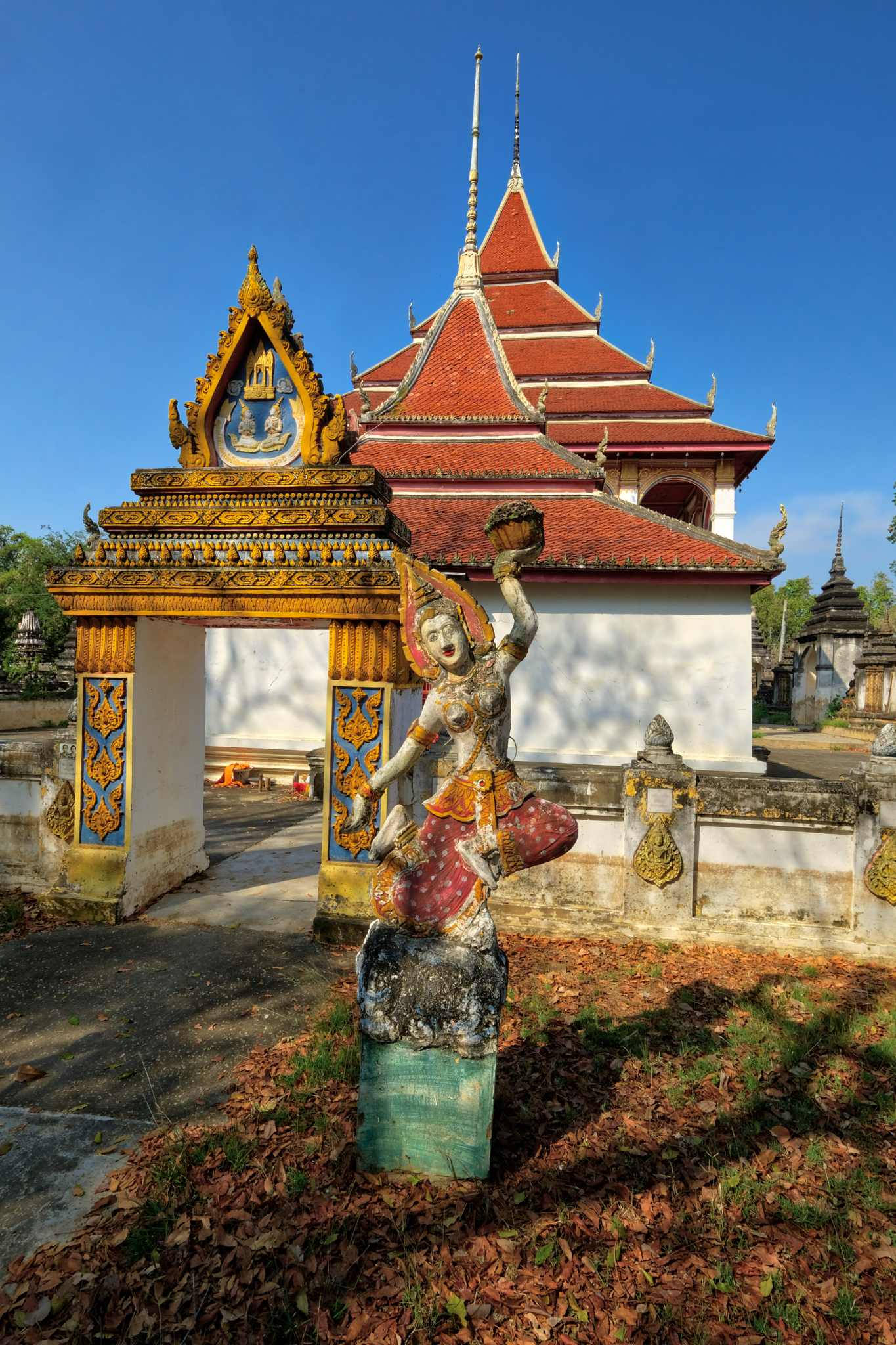 . . . and wonderful old Buddhist temples (Wats) dotted throughout the scenery. Our first stop was as the result of spotting a large, towering chedi through some trees as we sped down the highway. We turned off the road not knowing that we would find a most beautiful and interesting temple.
. . . and wonderful old Buddhist temples (Wats) dotted throughout the scenery. Our first stop was as the result of spotting a large, towering chedi through some trees as we sped down the highway. We turned off the road not knowing that we would find a most beautiful and interesting temple.
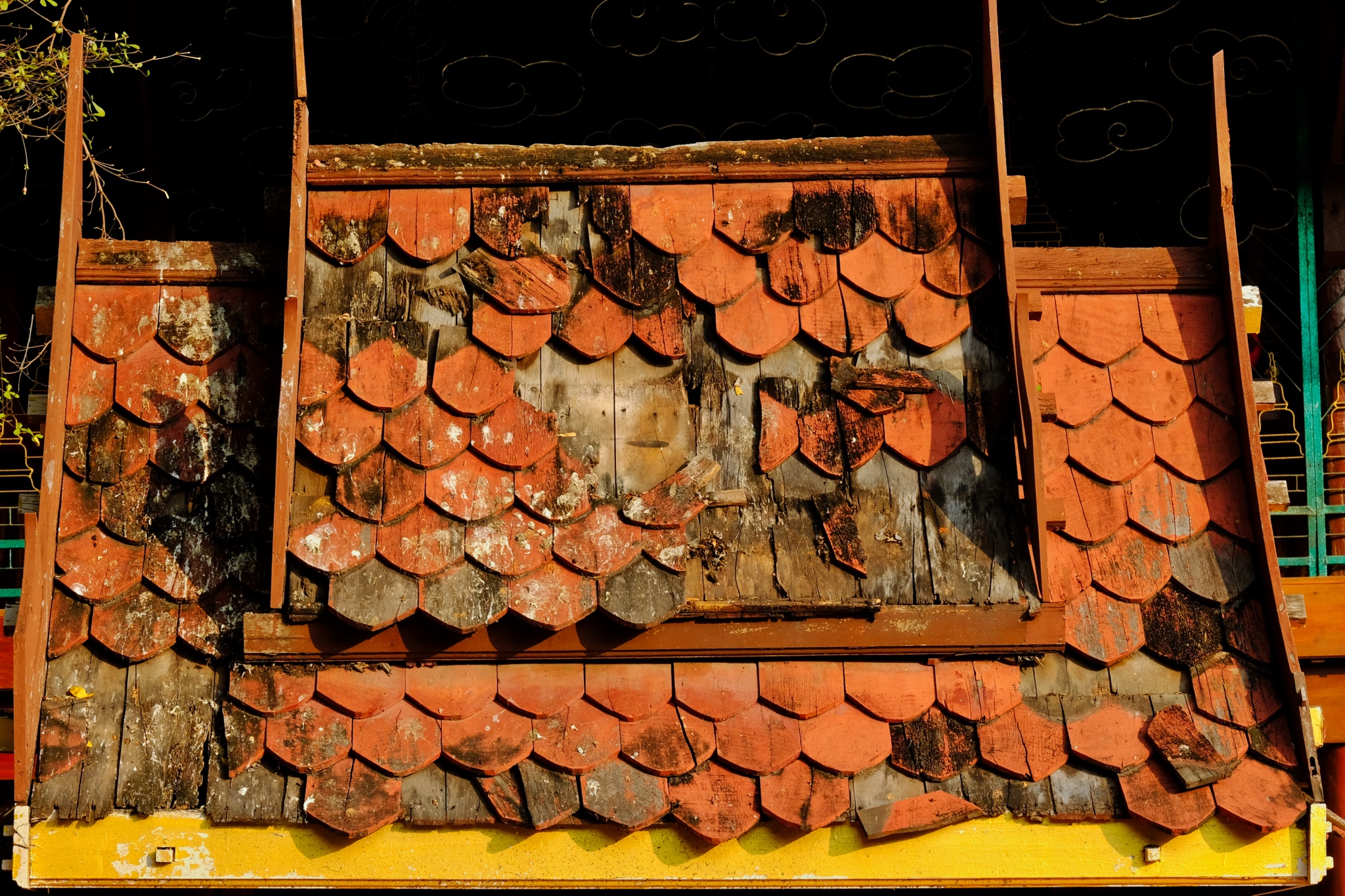 The wat we found was also a school, which was just getting started. A student band was playing and children were singing. We wandered in.
The wat we found was also a school, which was just getting started. A student band was playing and children were singing. We wandered in.
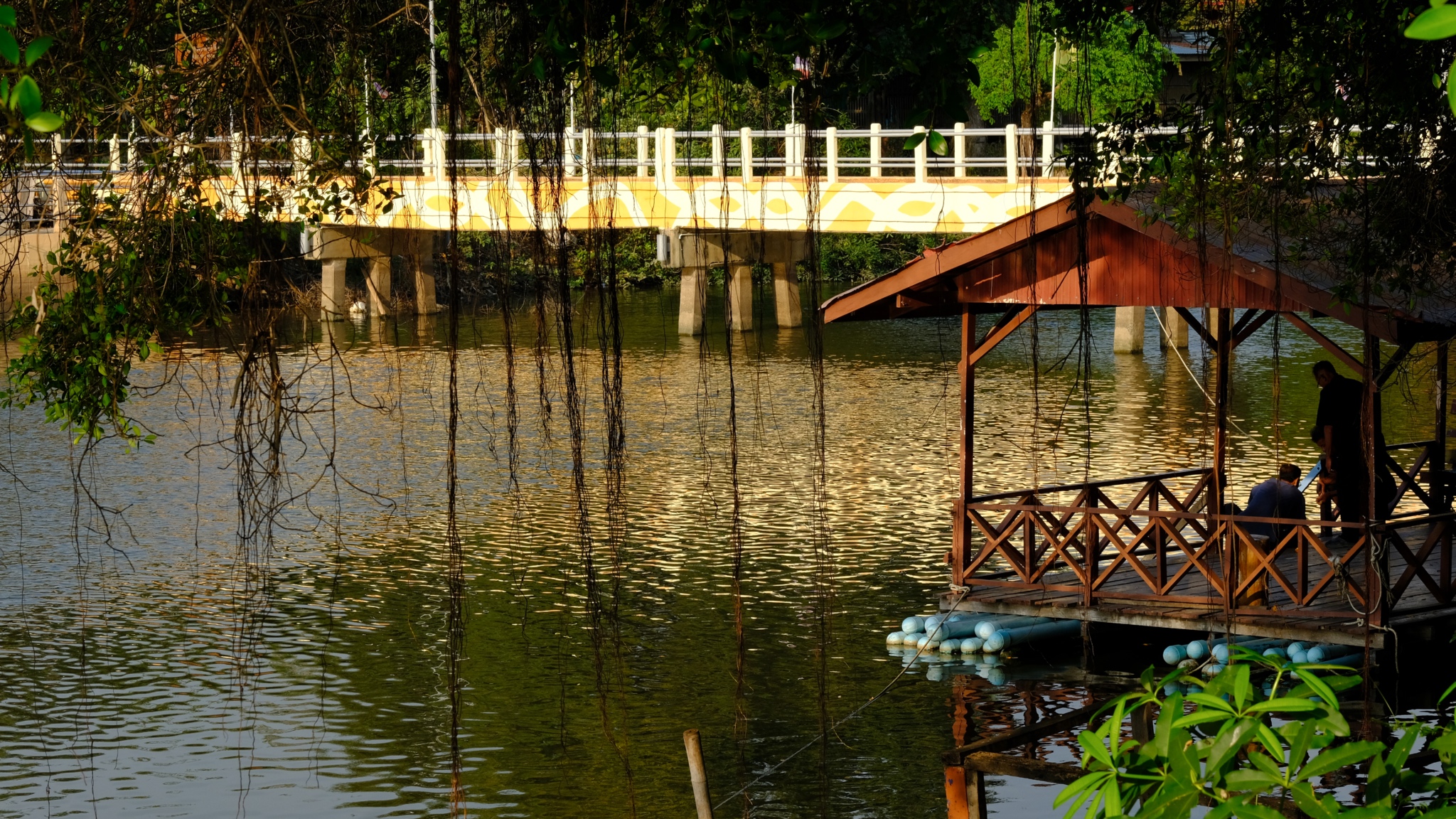 The wat was built along both sides of a river, one of the tributaries of the Chao Phraya River.
The wat was built along both sides of a river, one of the tributaries of the Chao Phraya River.
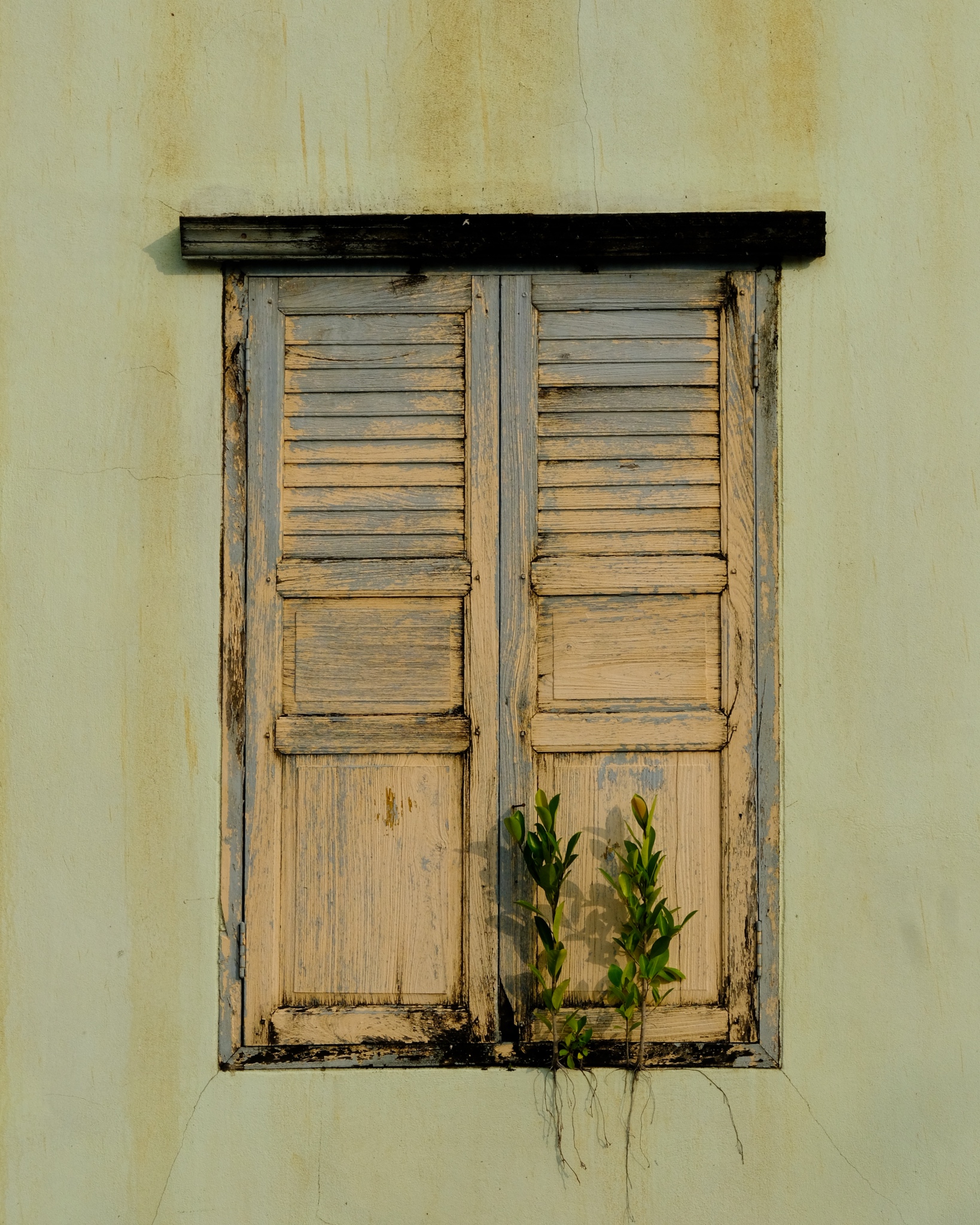 Marvelous aged textures throughout this beautiful place.
Marvelous aged textures throughout this beautiful place.
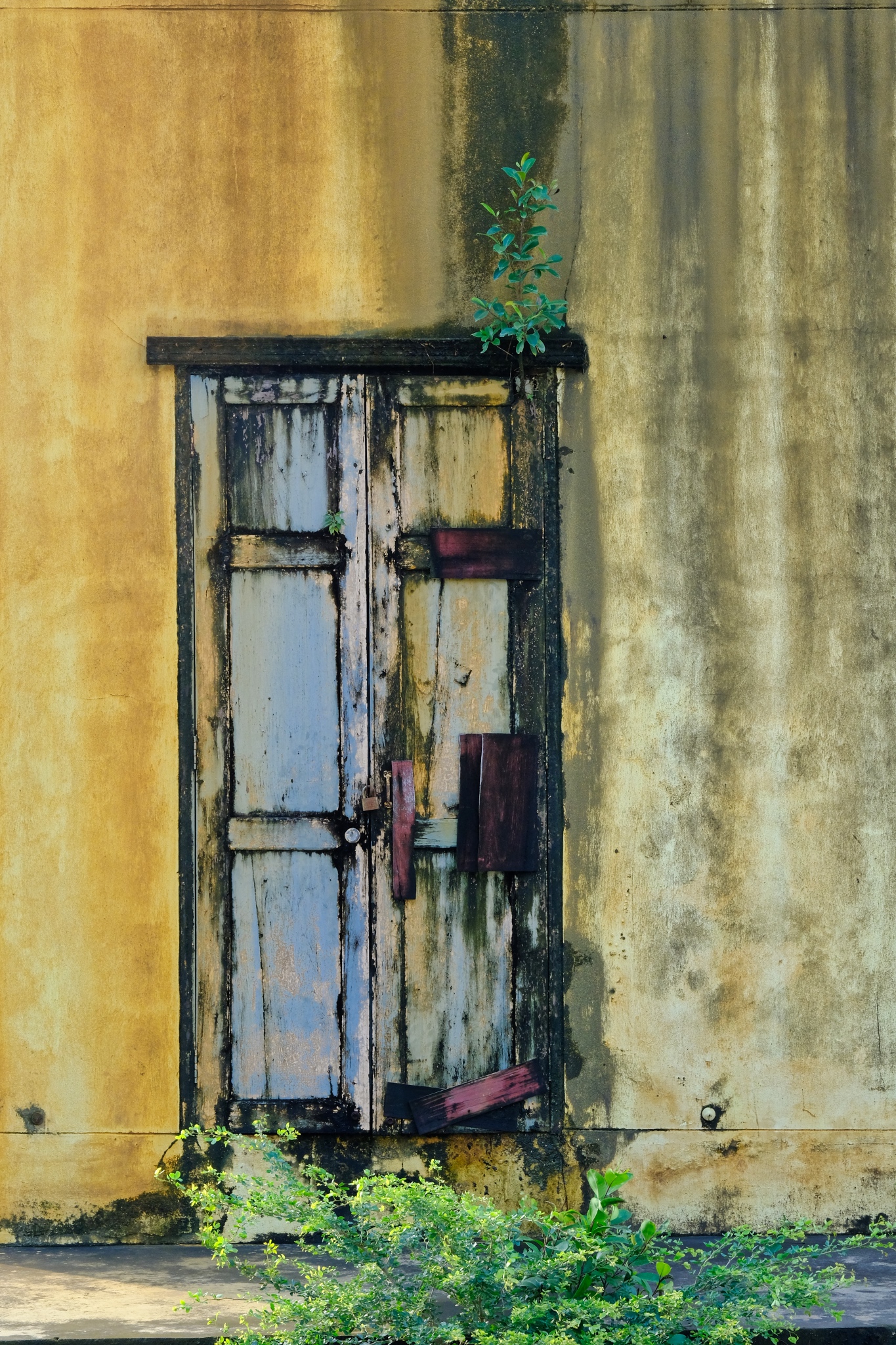 I believe we could have spent all day just photographing this door and the windows on this old storehouse. The black mold outlining, the weathered and stained walls, the encroaching plants. The color! Incredible. But we ambled on, pointing our cameras here and there, and always finding something visually interesting.
I believe we could have spent all day just photographing this door and the windows on this old storehouse. The black mold outlining, the weathered and stained walls, the encroaching plants. The color! Incredible. But we ambled on, pointing our cameras here and there, and always finding something visually interesting.
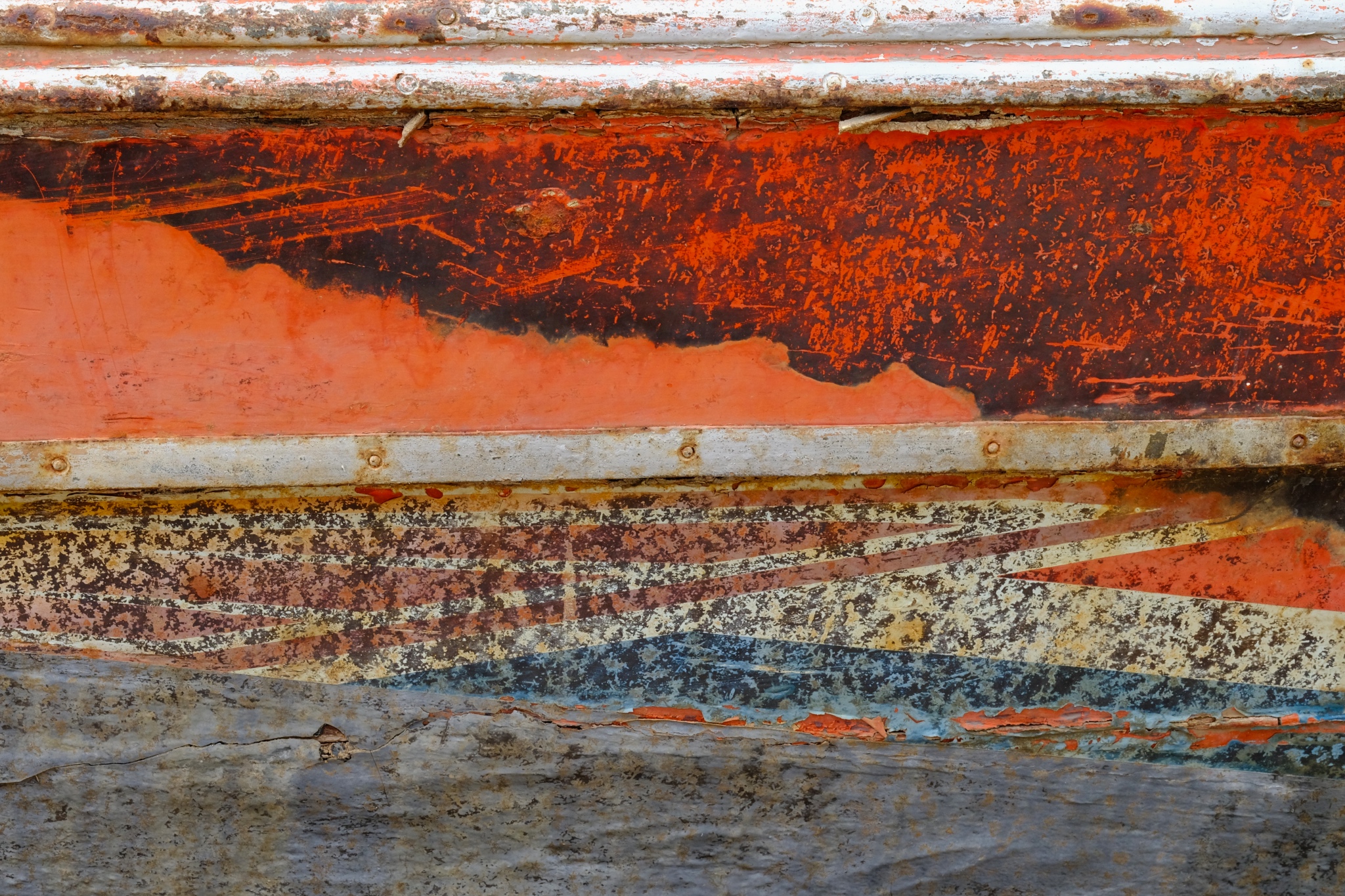
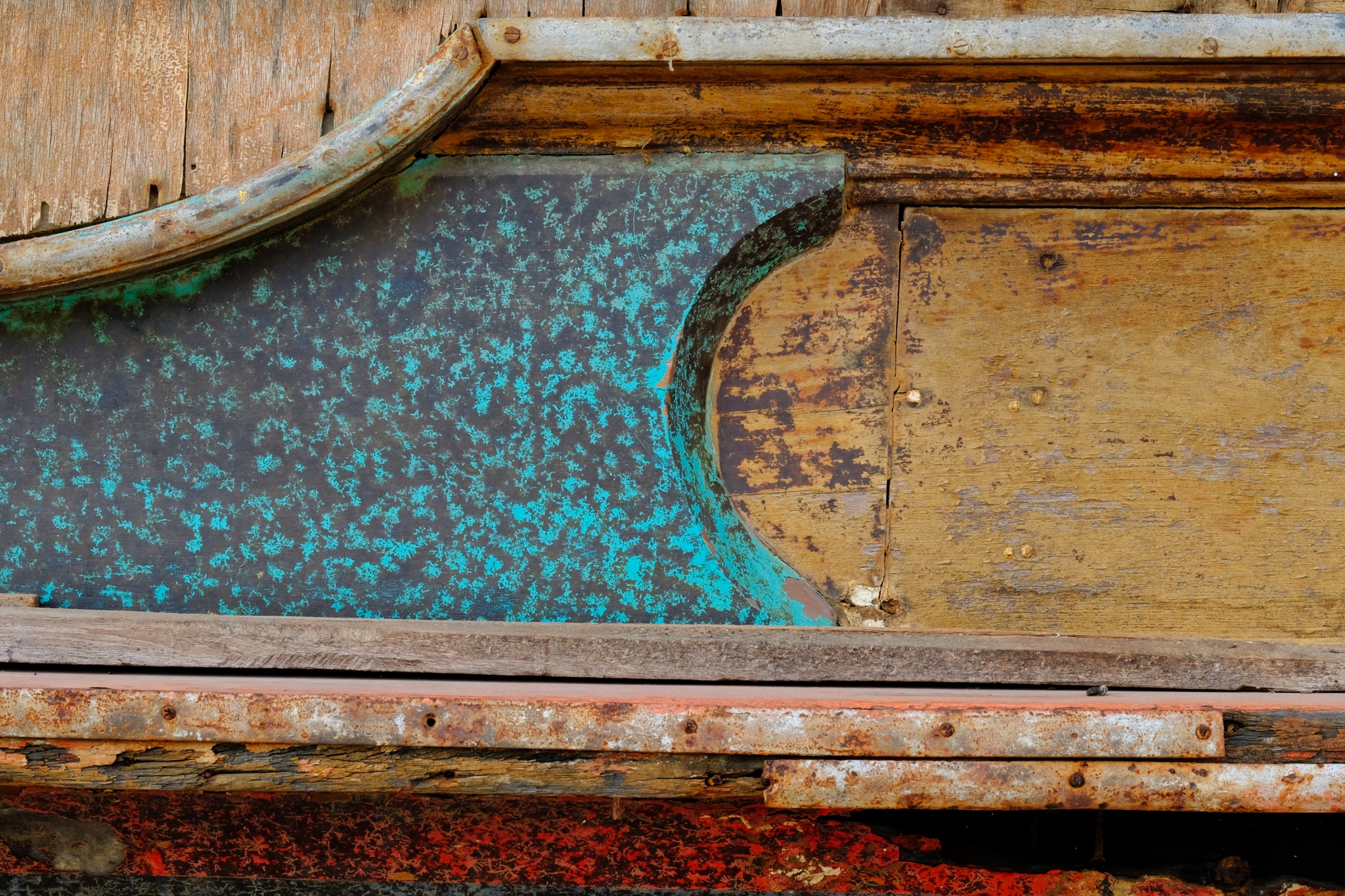 Detail of a weathered old river ferry boat that had been pulled up into the wat parking lot.
Detail of a weathered old river ferry boat that had been pulled up into the wat parking lot.
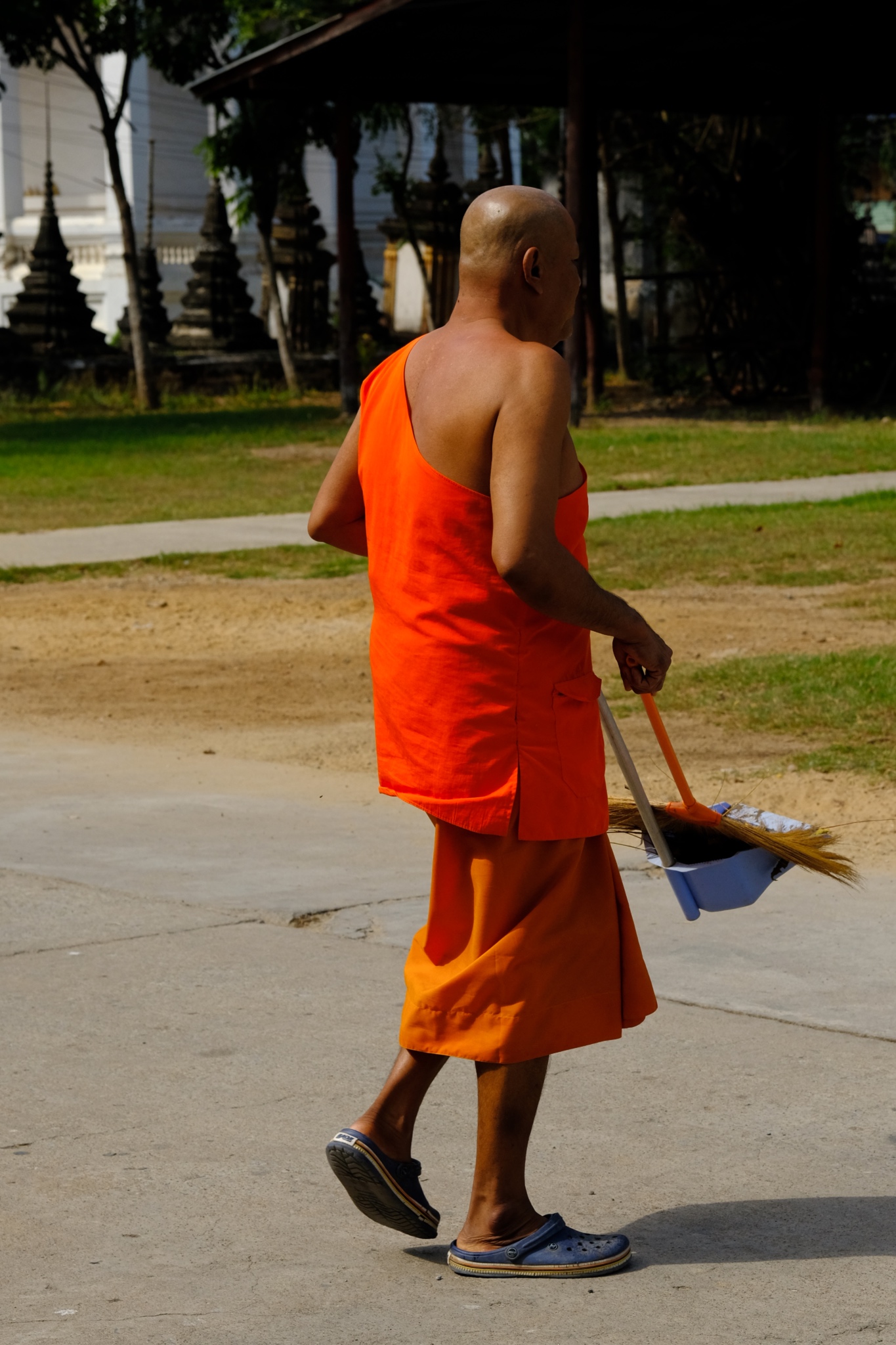 It was still early, after morning meditation, so the monks were out doing their chores.
It was still early, after morning meditation, so the monks were out doing their chores.
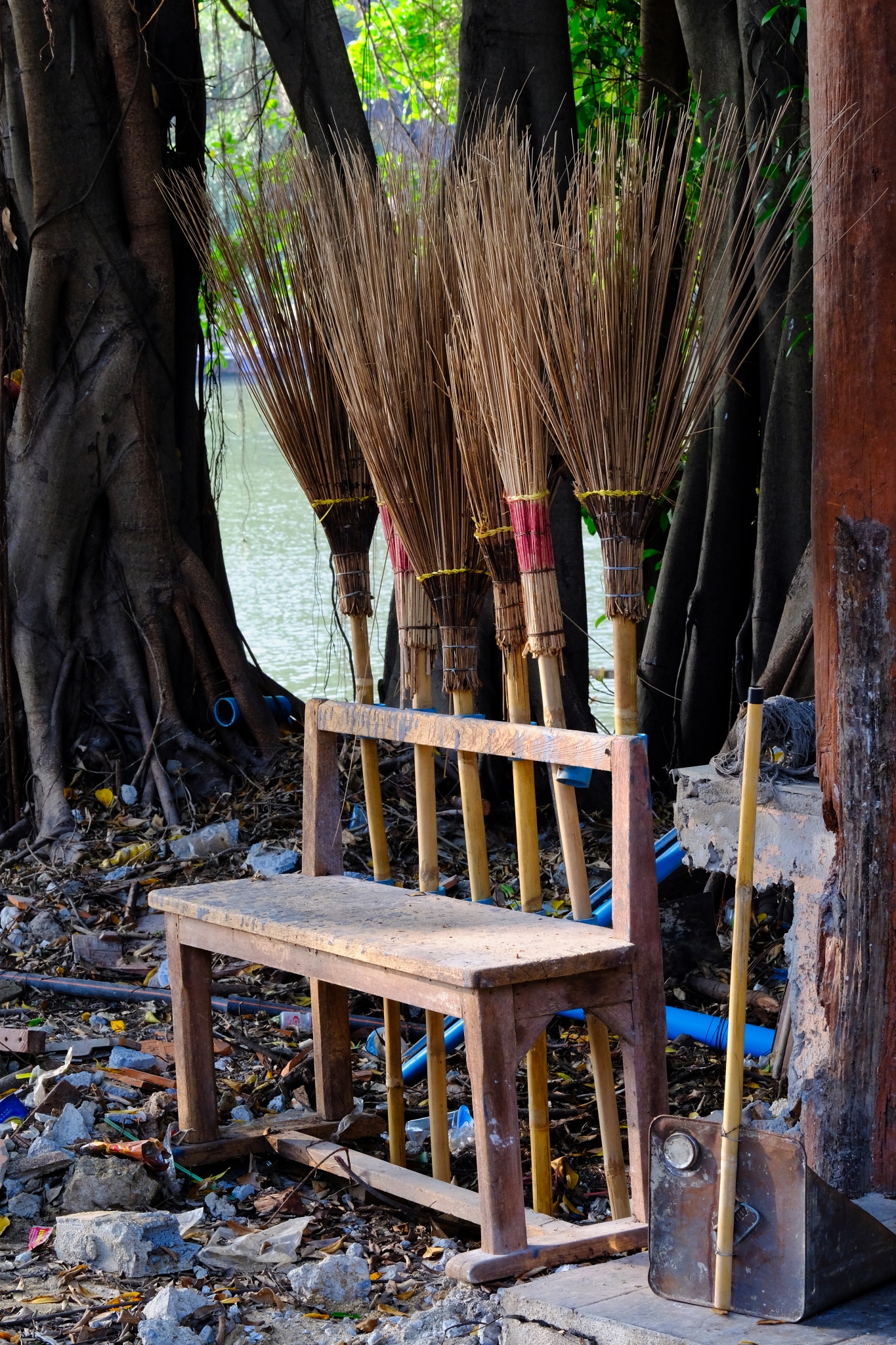 The brooms neatly arranged . . . and a bench to sit on after completing the job.
The brooms neatly arranged . . . and a bench to sit on after completing the job.
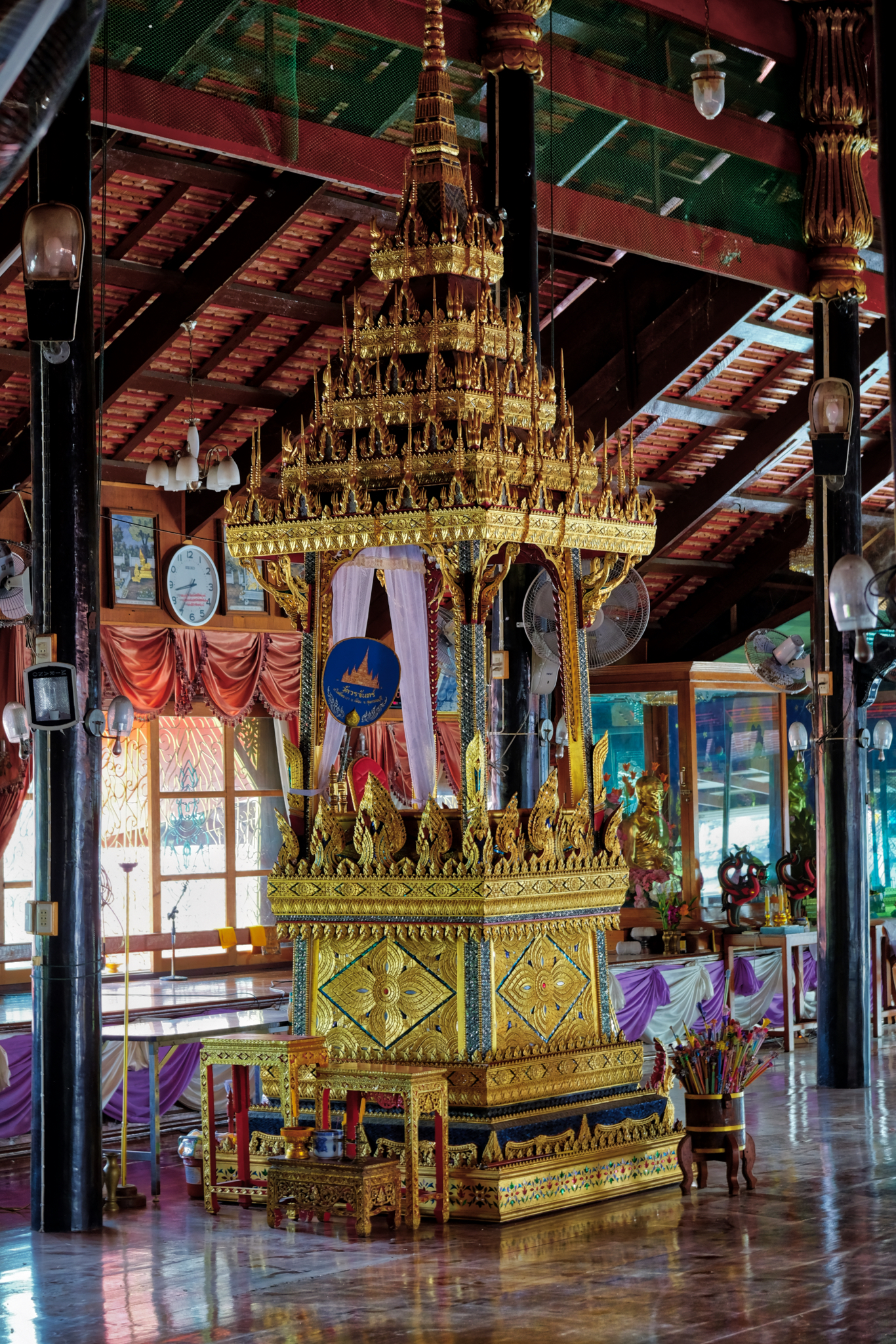 In our ambling we found an old wooden building and went up the stairs to find a meditation hall with an elaborately decorated 'pulpit.'
In our ambling we found an old wooden building and went up the stairs to find a meditation hall with an elaborately decorated 'pulpit.'
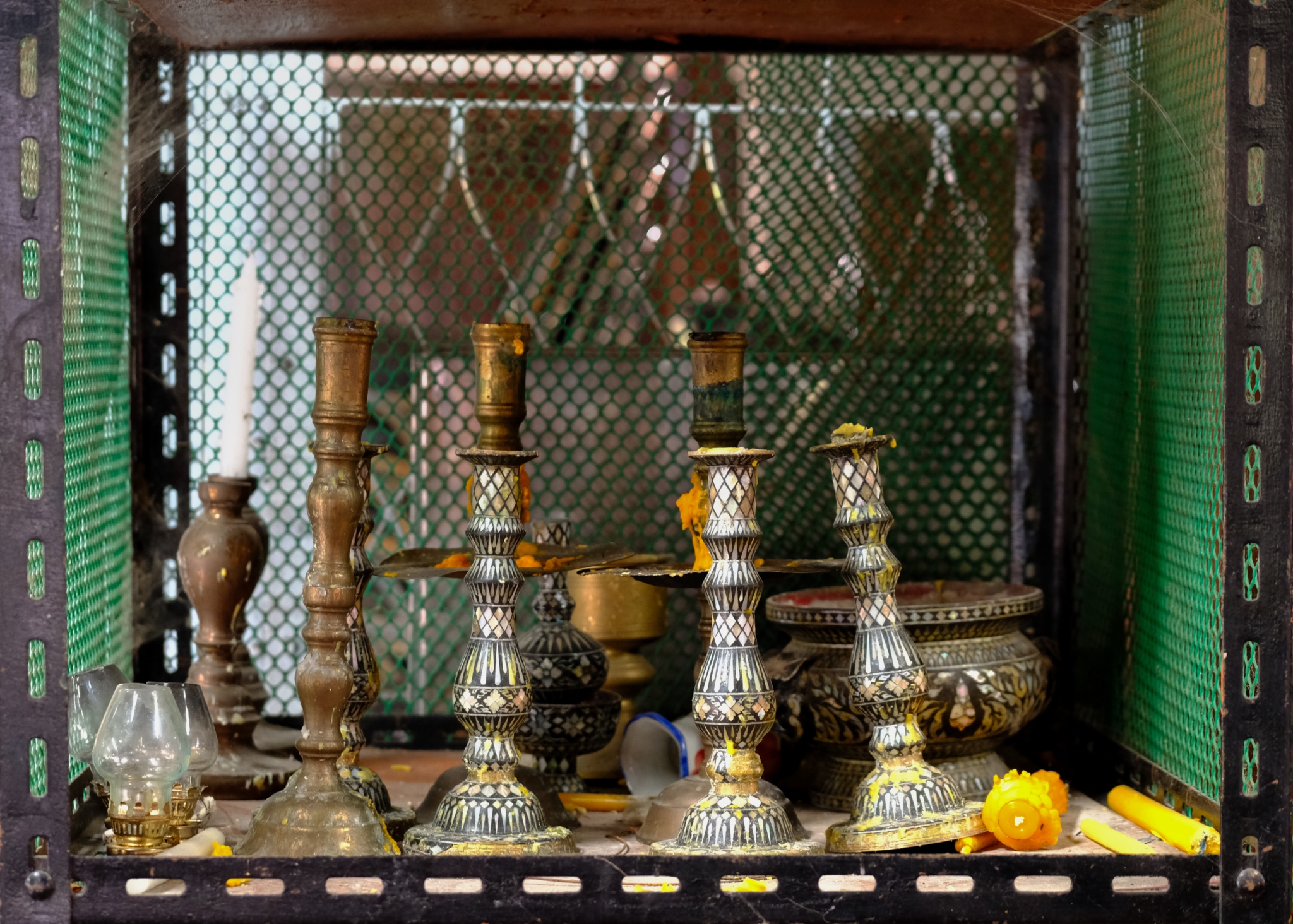 Simple votive items in storage until tomorrow's meditation.
Simple votive items in storage until tomorrow's meditation.
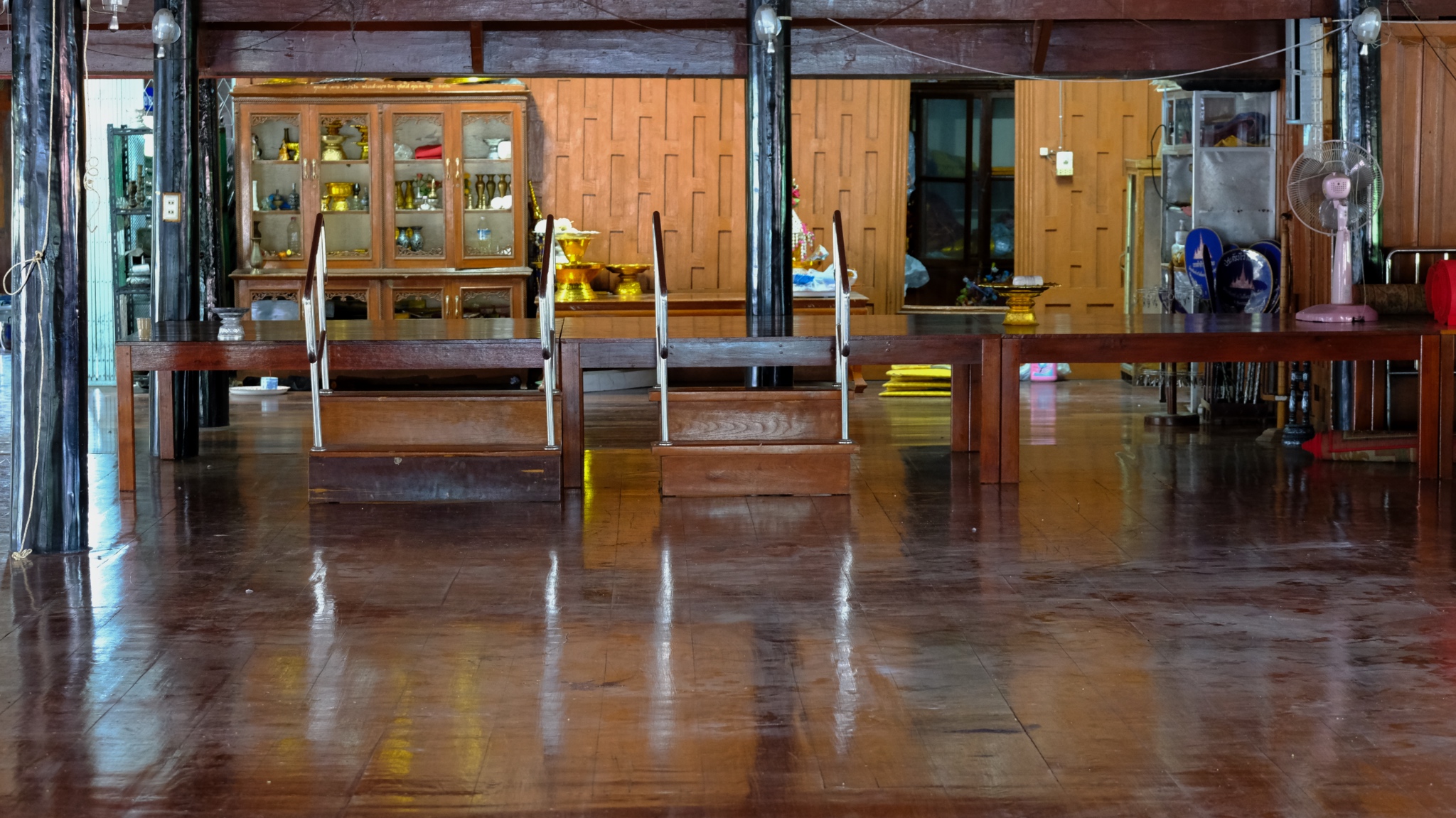 The simple interior of a rural Suphanburi wat. Little did we know that just across the river was the other half of this wat complex . . . and it was something special!
The simple interior of a rural Suphanburi wat. Little did we know that just across the river was the other half of this wat complex . . . and it was something special!
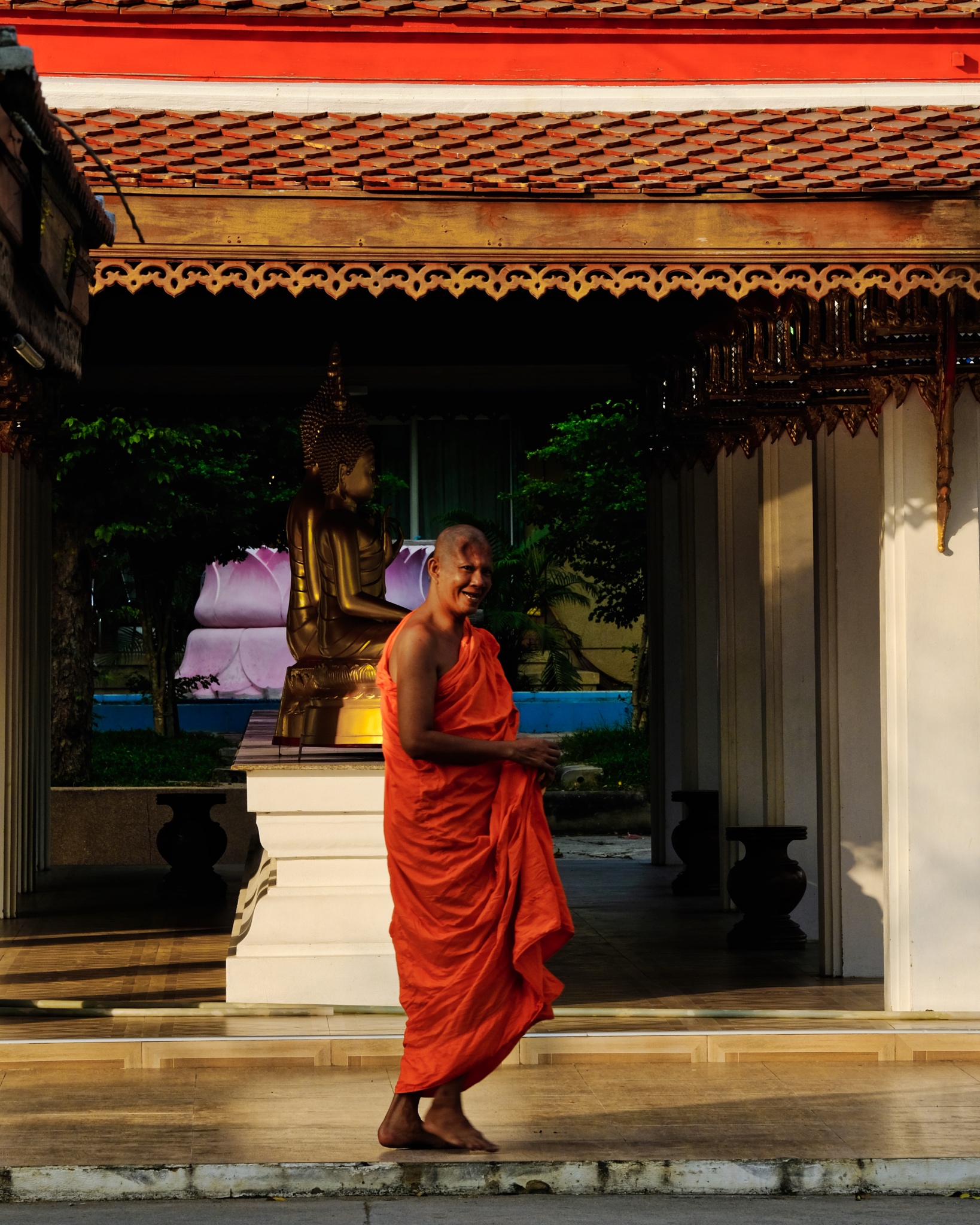 We crossed the bridge to the other side of the wat. It had a very different feel . . . Yes, this monk had a hole in his head (from an earlier injury).
We crossed the bridge to the other side of the wat. It had a very different feel . . . Yes, this monk had a hole in his head (from an earlier injury).
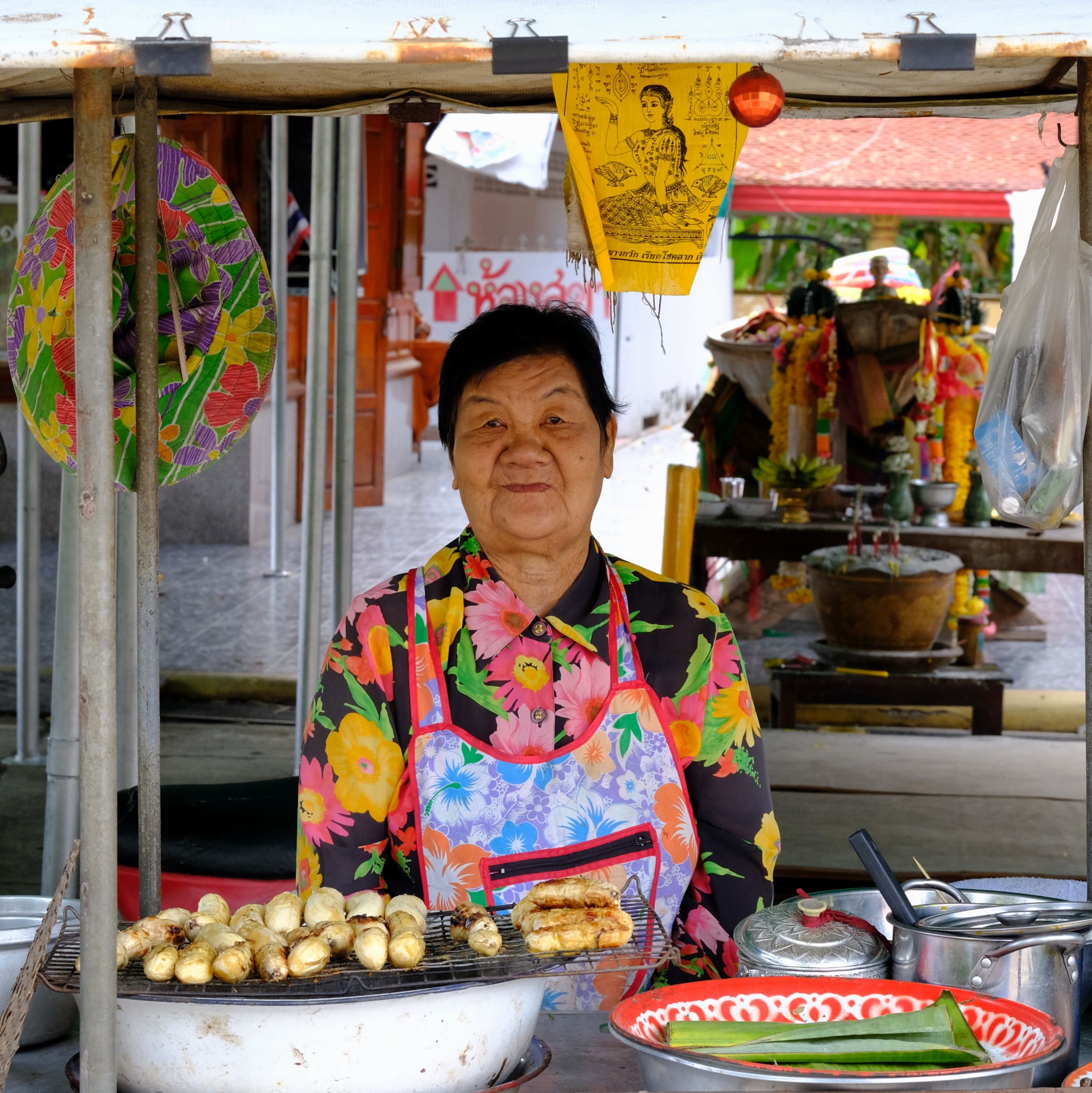 A grilled banana hawker stood outside of the temple buildings.
A grilled banana hawker stood outside of the temple buildings.
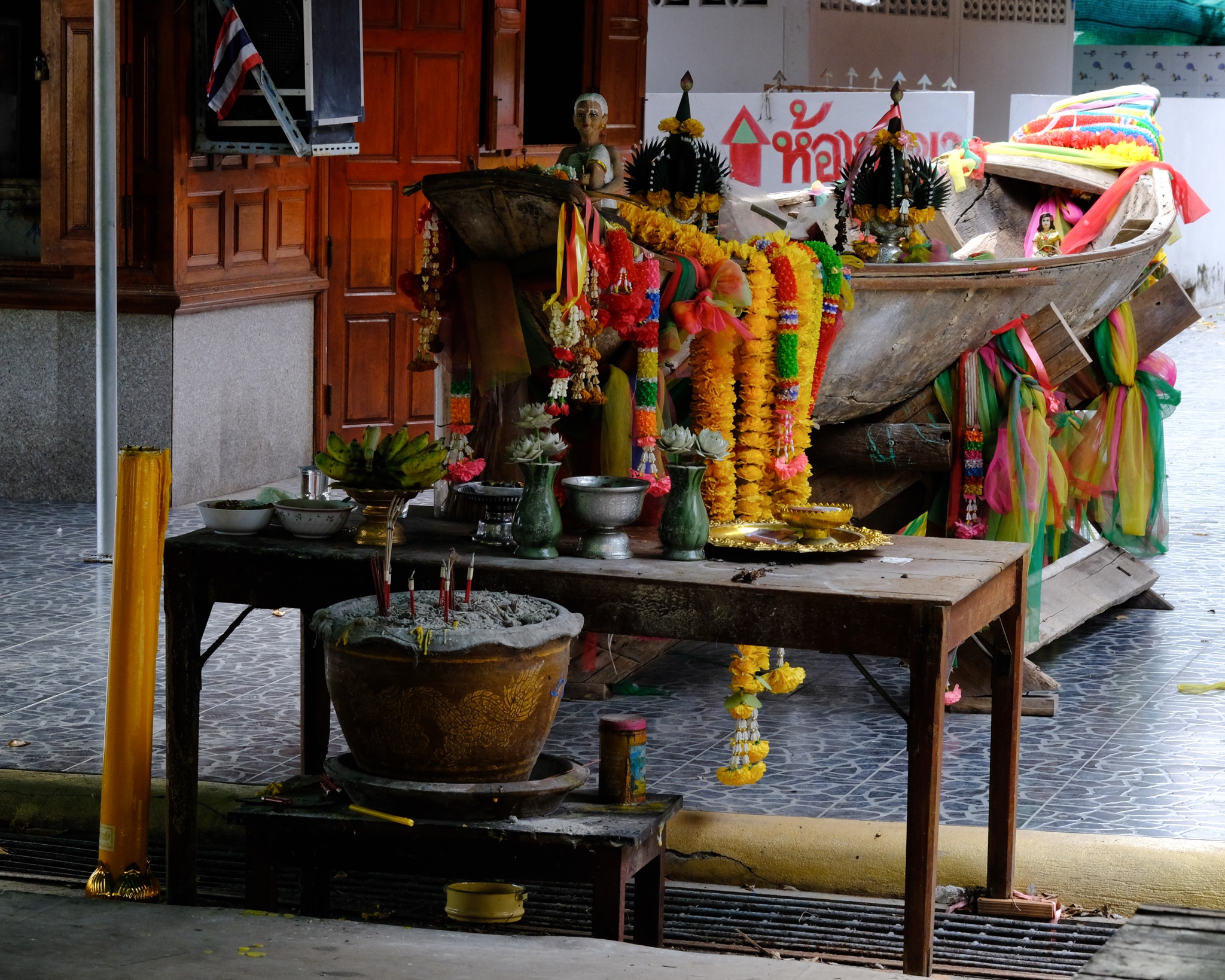 A votive altar made in a boat at this riverside temple.
A votive altar made in a boat at this riverside temple.
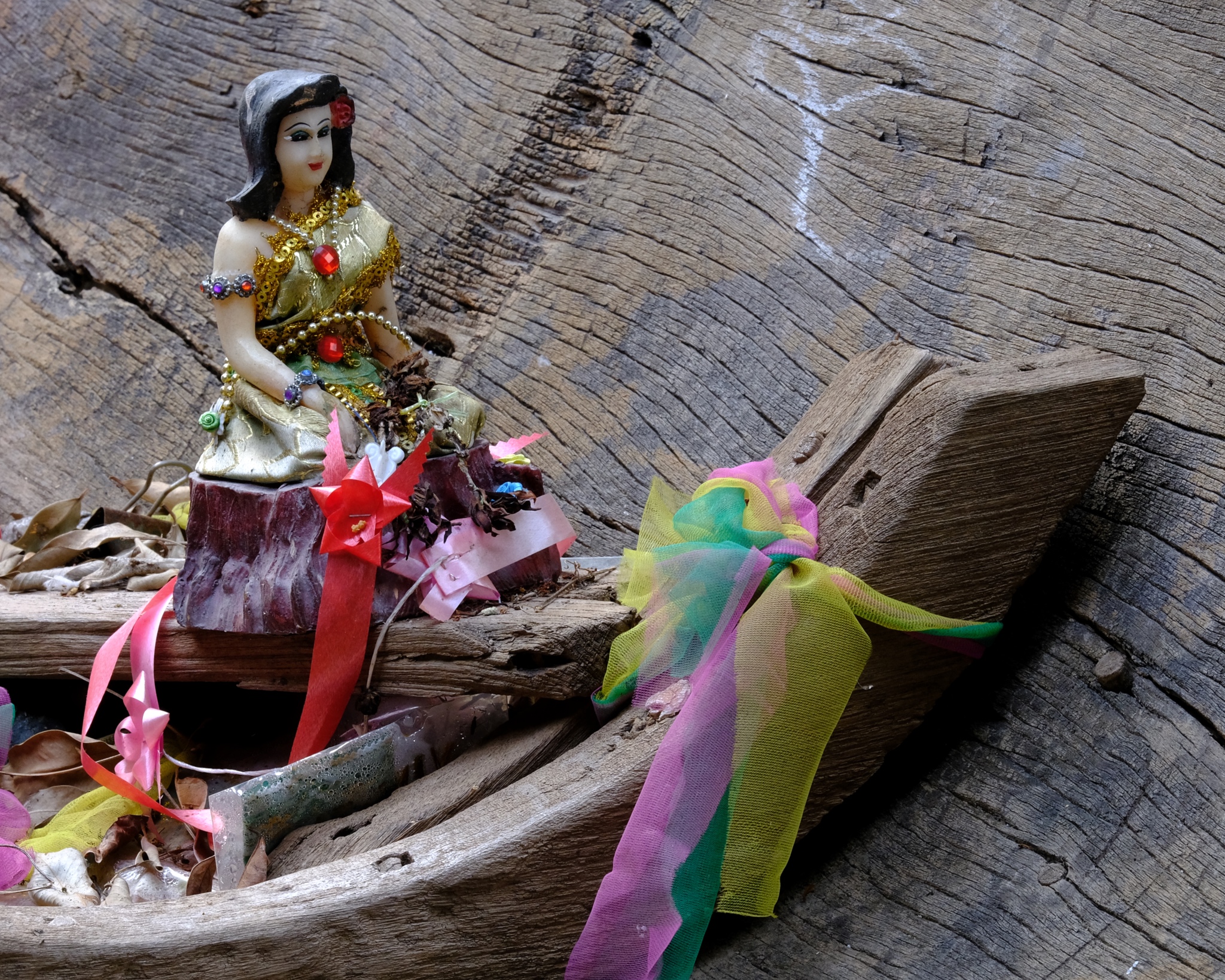 The boat altar was full of these scenes of devotional focus.
The boat altar was full of these scenes of devotional focus.
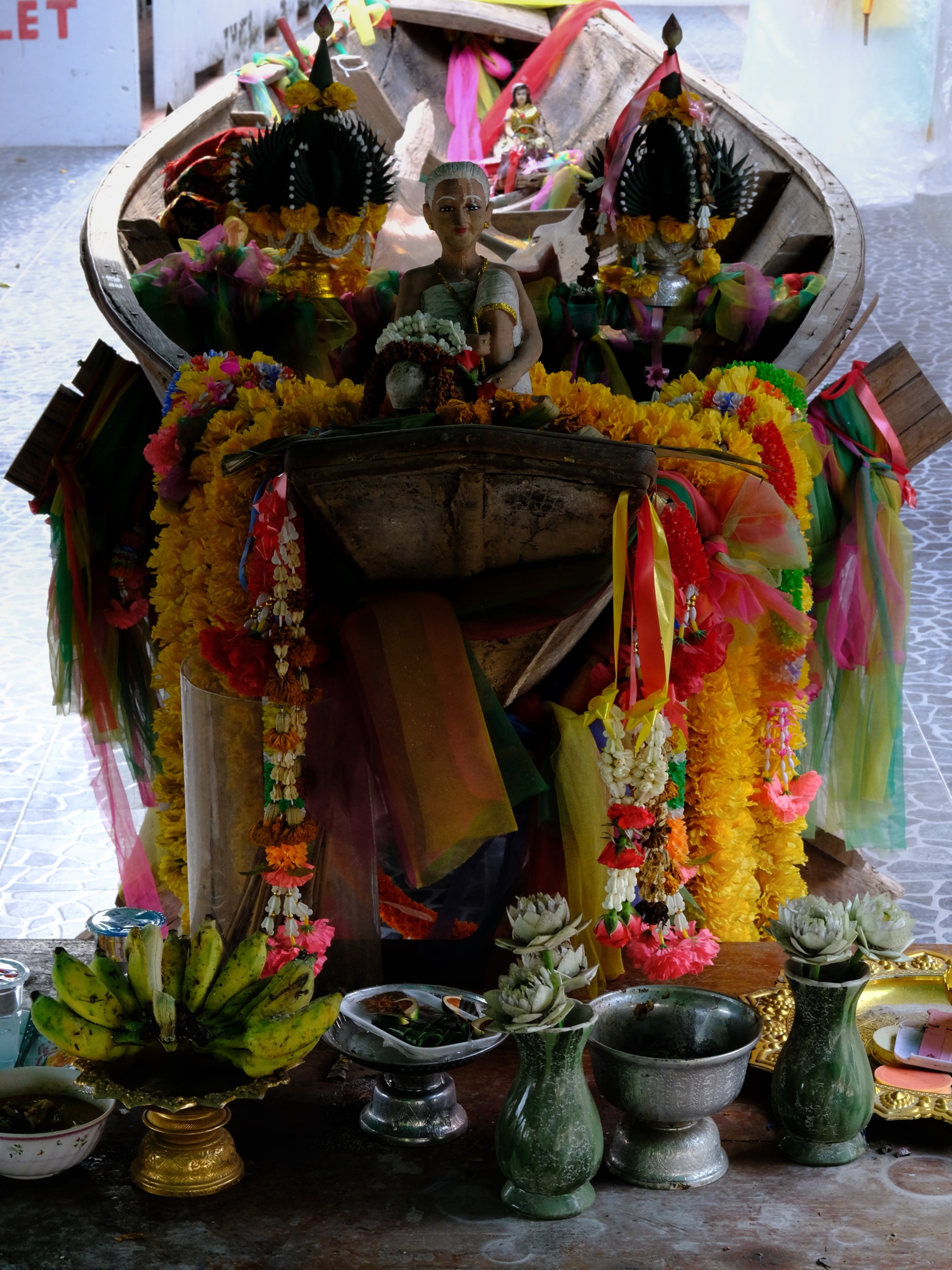 A reminder that these altars are not 'antiques' or 'relics' but living, current places of respect, attention, and daily tending (note the fresh bananas).
A reminder that these altars are not 'antiques' or 'relics' but living, current places of respect, attention, and daily tending (note the fresh bananas).
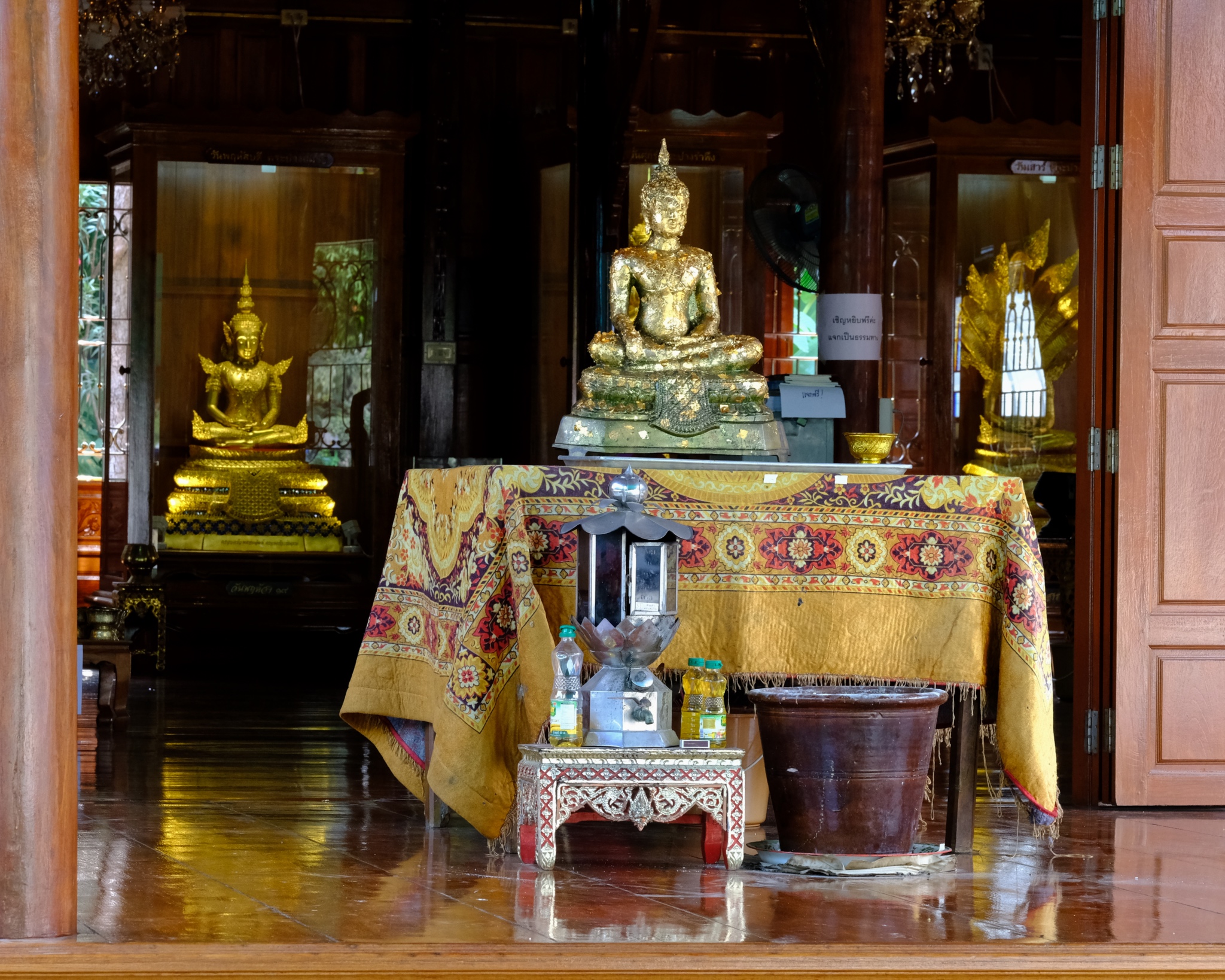 The entrance to the first wooden building we came to turned out to be a consolidated museum of the ancient Buddha images from the oldest wats on the ground.
The entrance to the first wooden building we came to turned out to be a consolidated museum of the ancient Buddha images from the oldest wats on the ground.
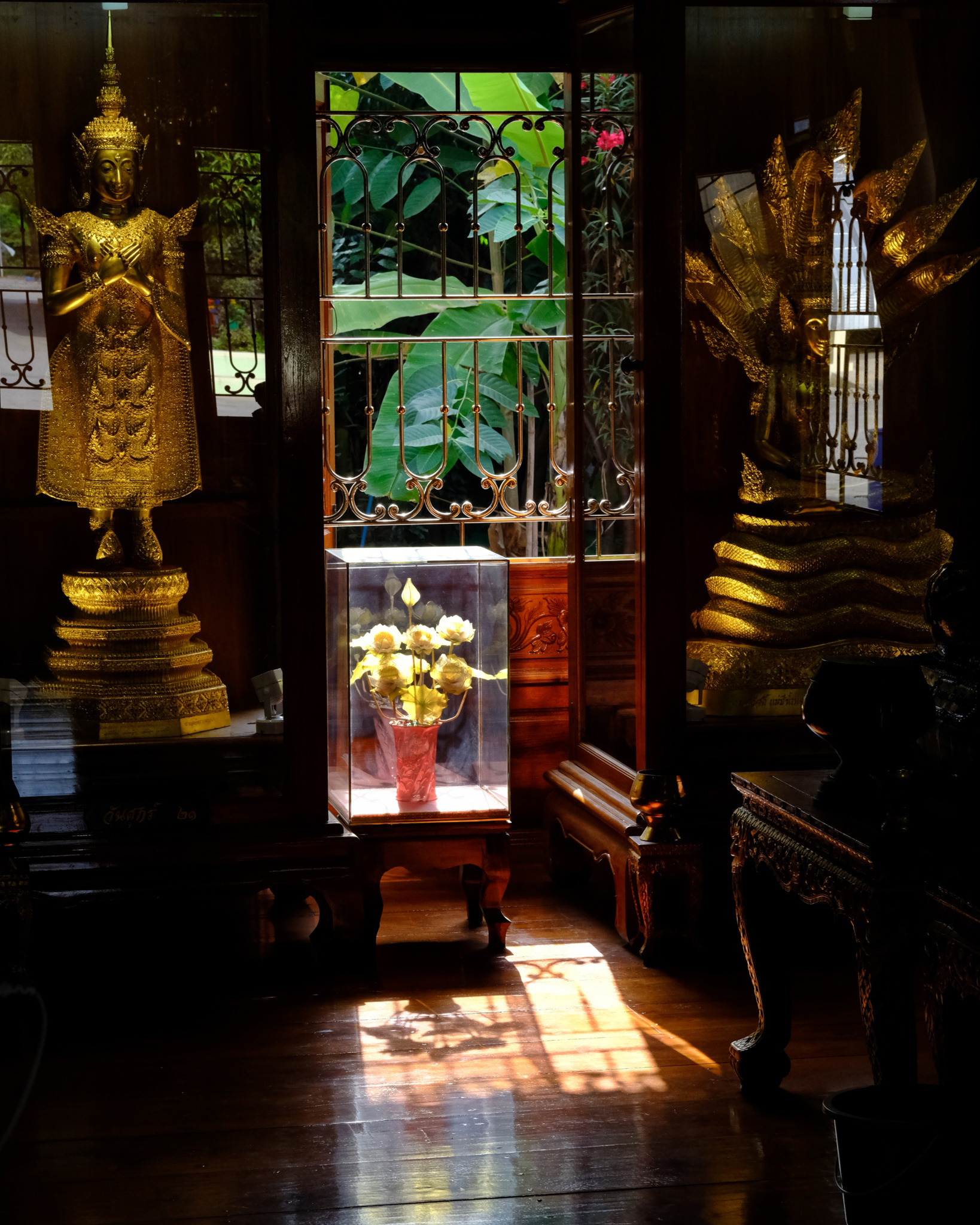 The interior of the museum. The light! The light!
The interior of the museum. The light! The light!
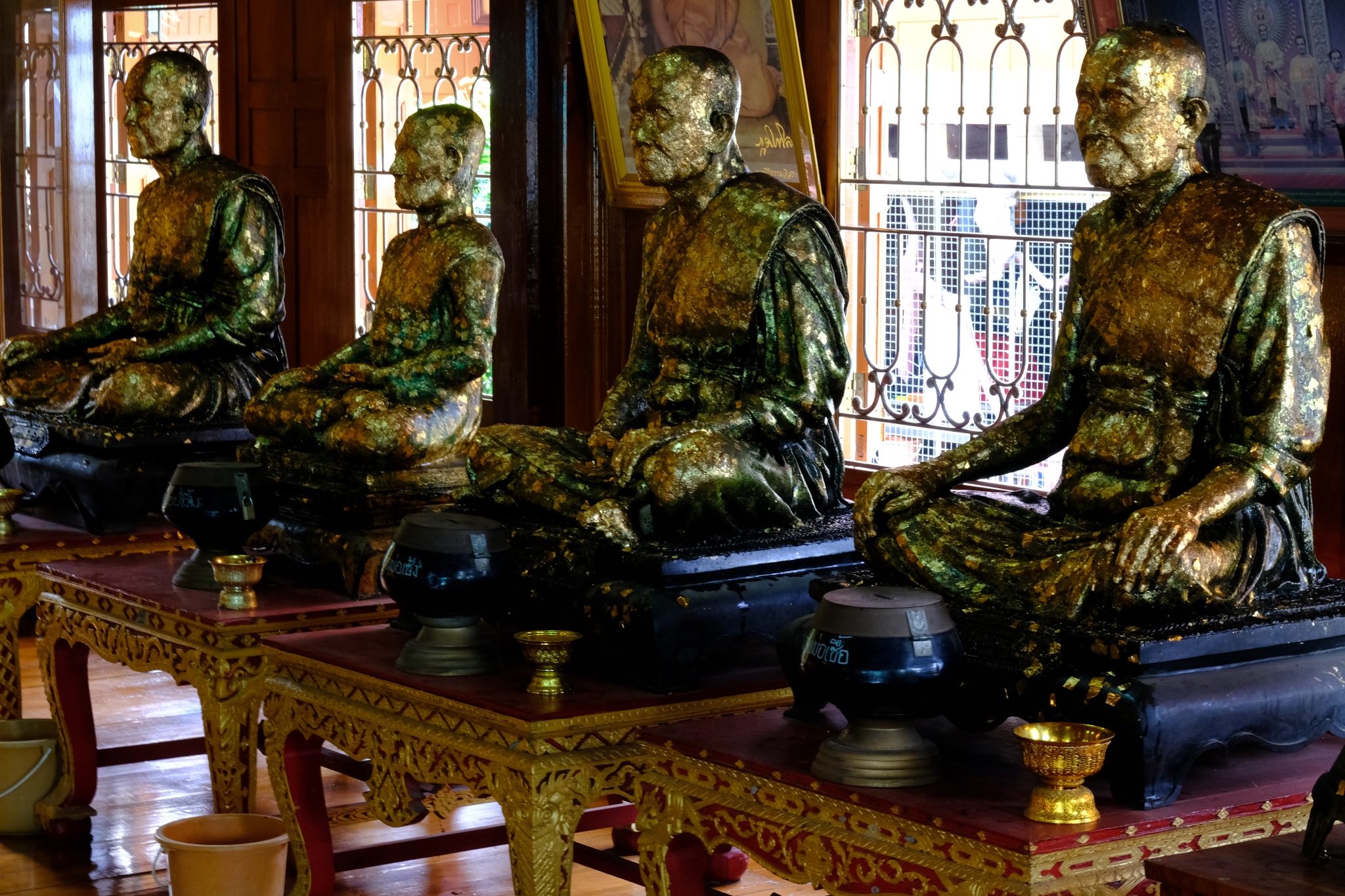 Remarkable.
Remarkable.
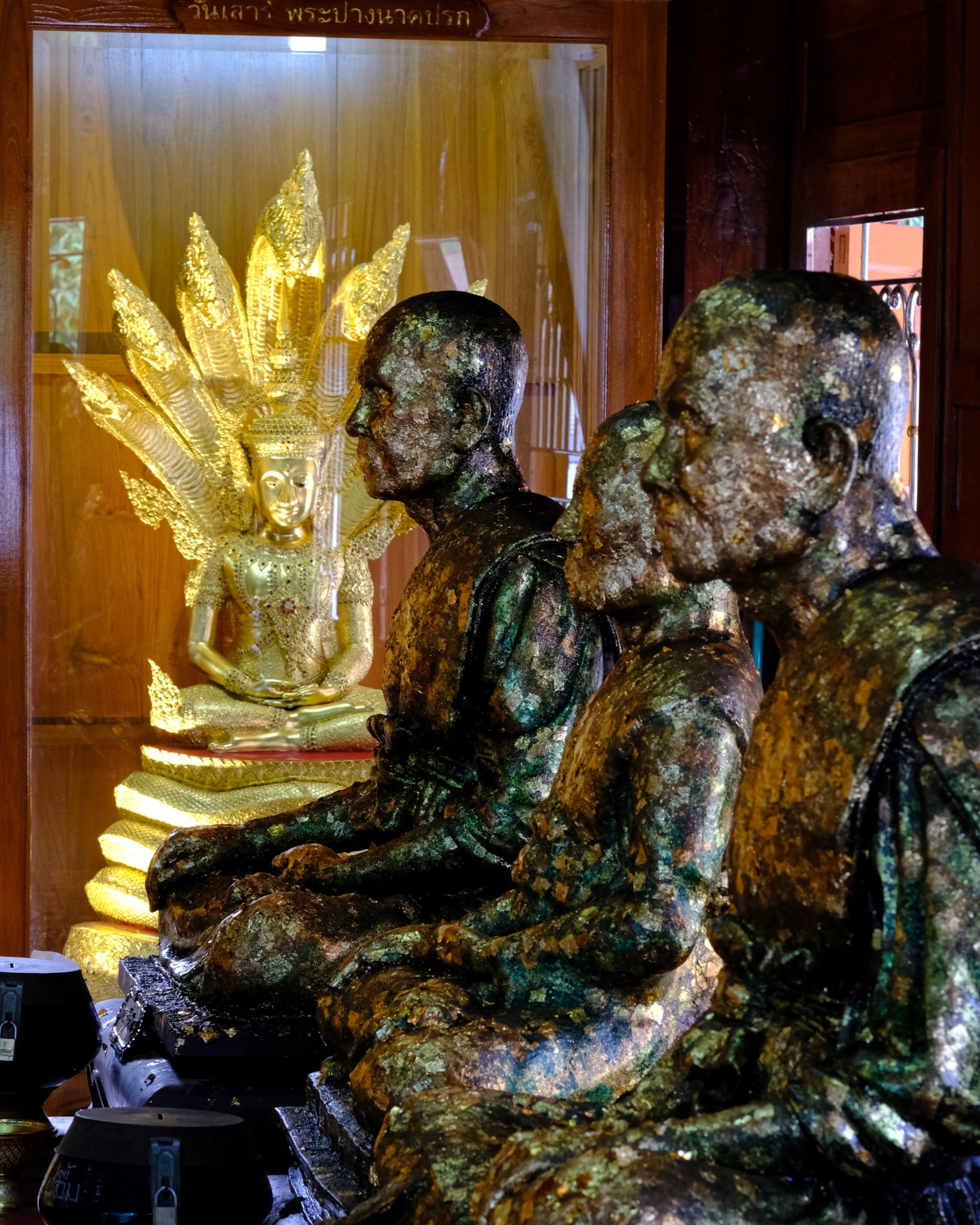 Revered monks in effigy.
Revered monks in effigy.
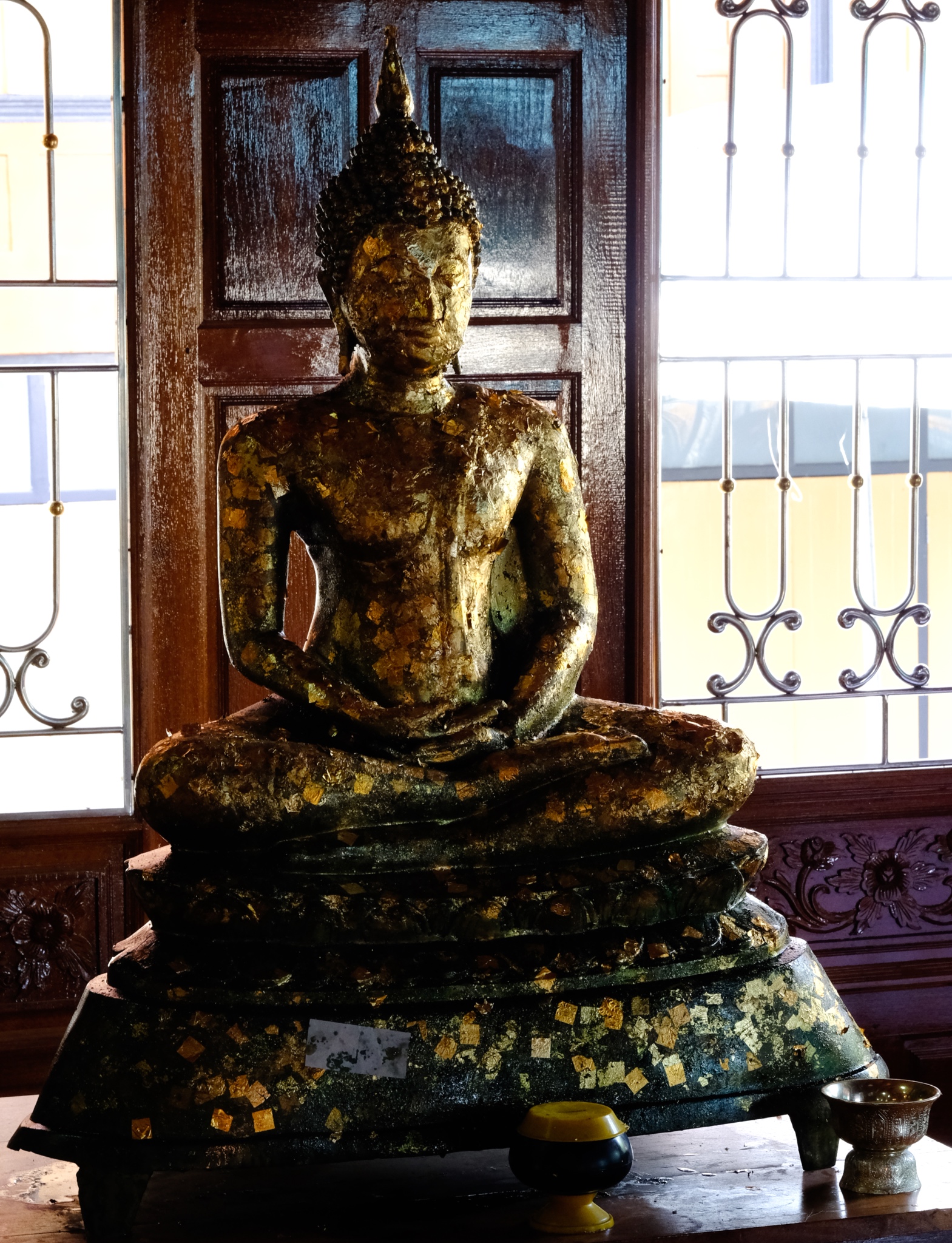 Many fine, ancient Buddha images were housed in the museum.
Many fine, ancient Buddha images were housed in the museum.
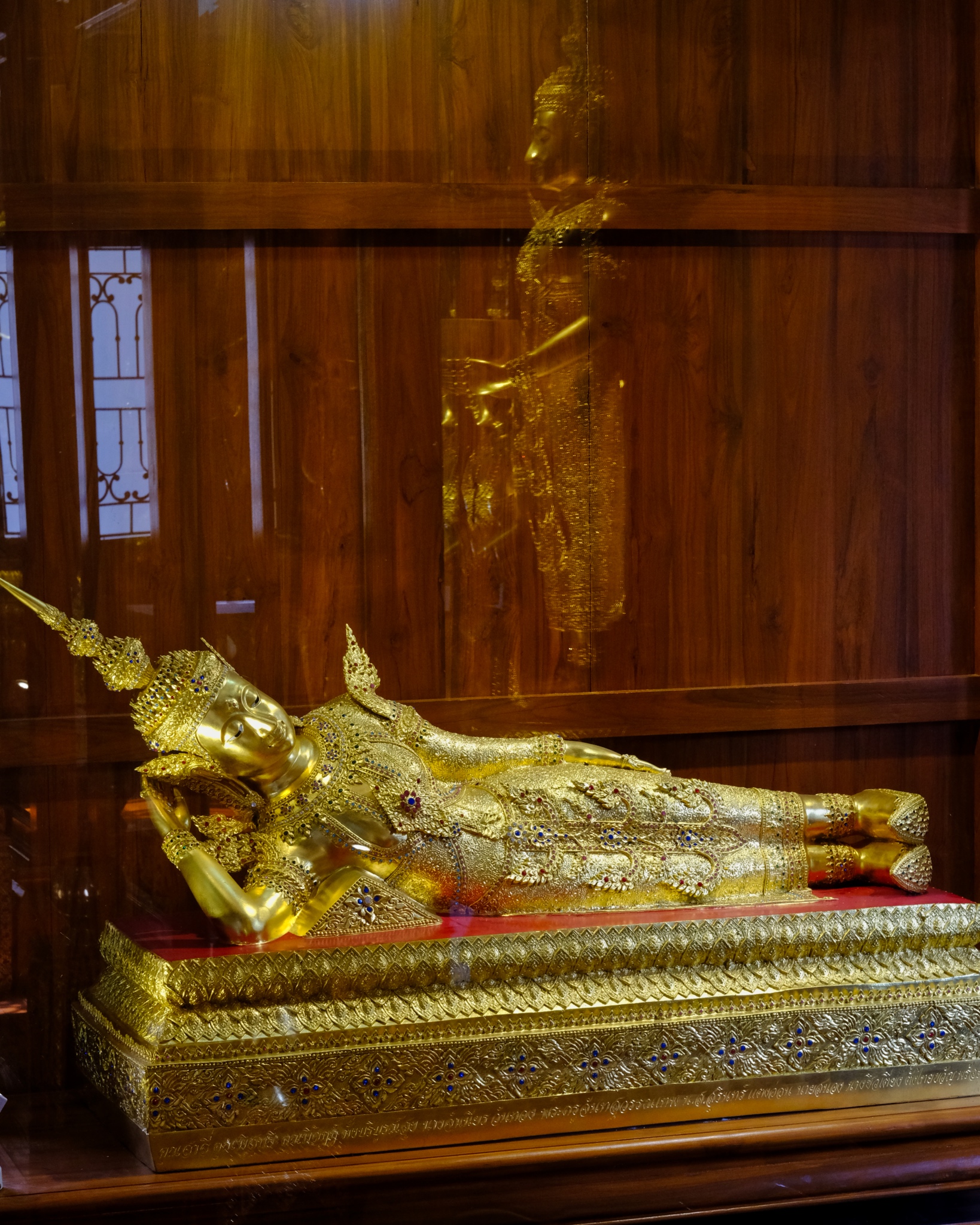 Ghostly reflections on the display cases enhanced our fantastic experience.
Ghostly reflections on the display cases enhanced our fantastic experience.
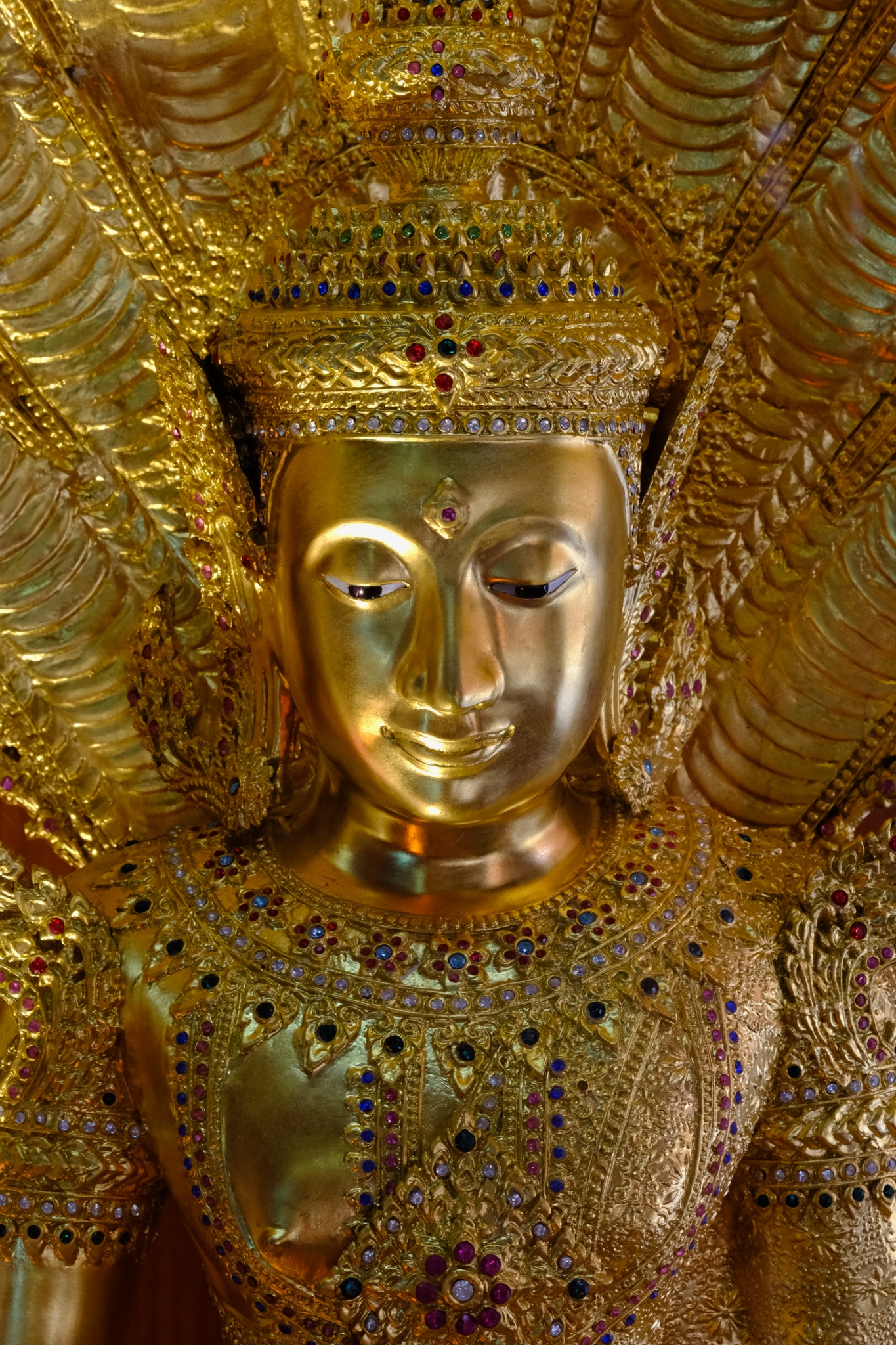 Remarkable artistry in gold.
Remarkable artistry in gold.
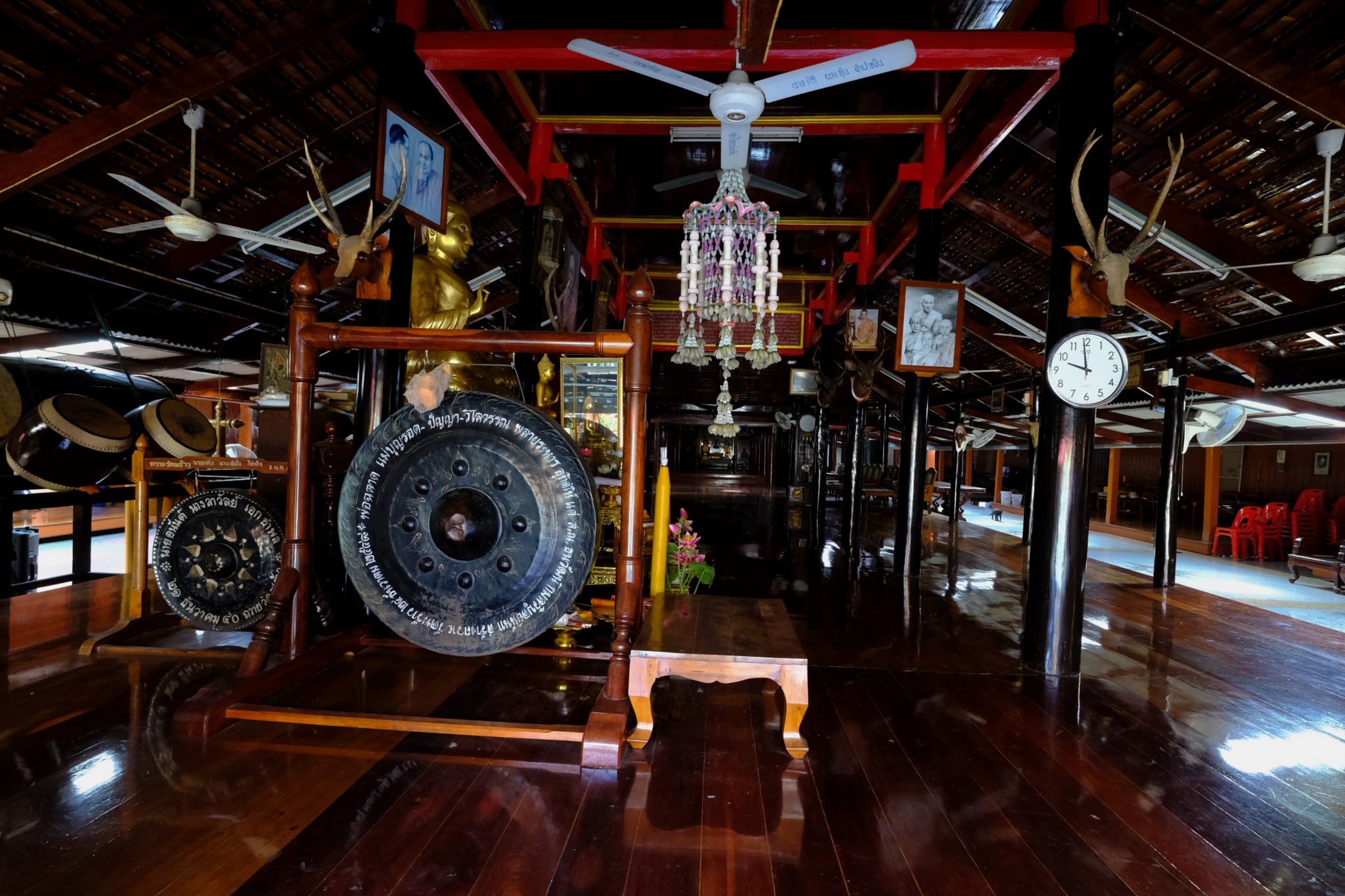 We walked out of the museum and into a nondescript wooden structure next door . . . and another world revealed itself to us!!!
We walked out of the museum and into a nondescript wooden structure next door . . . and another world revealed itself to us!!!
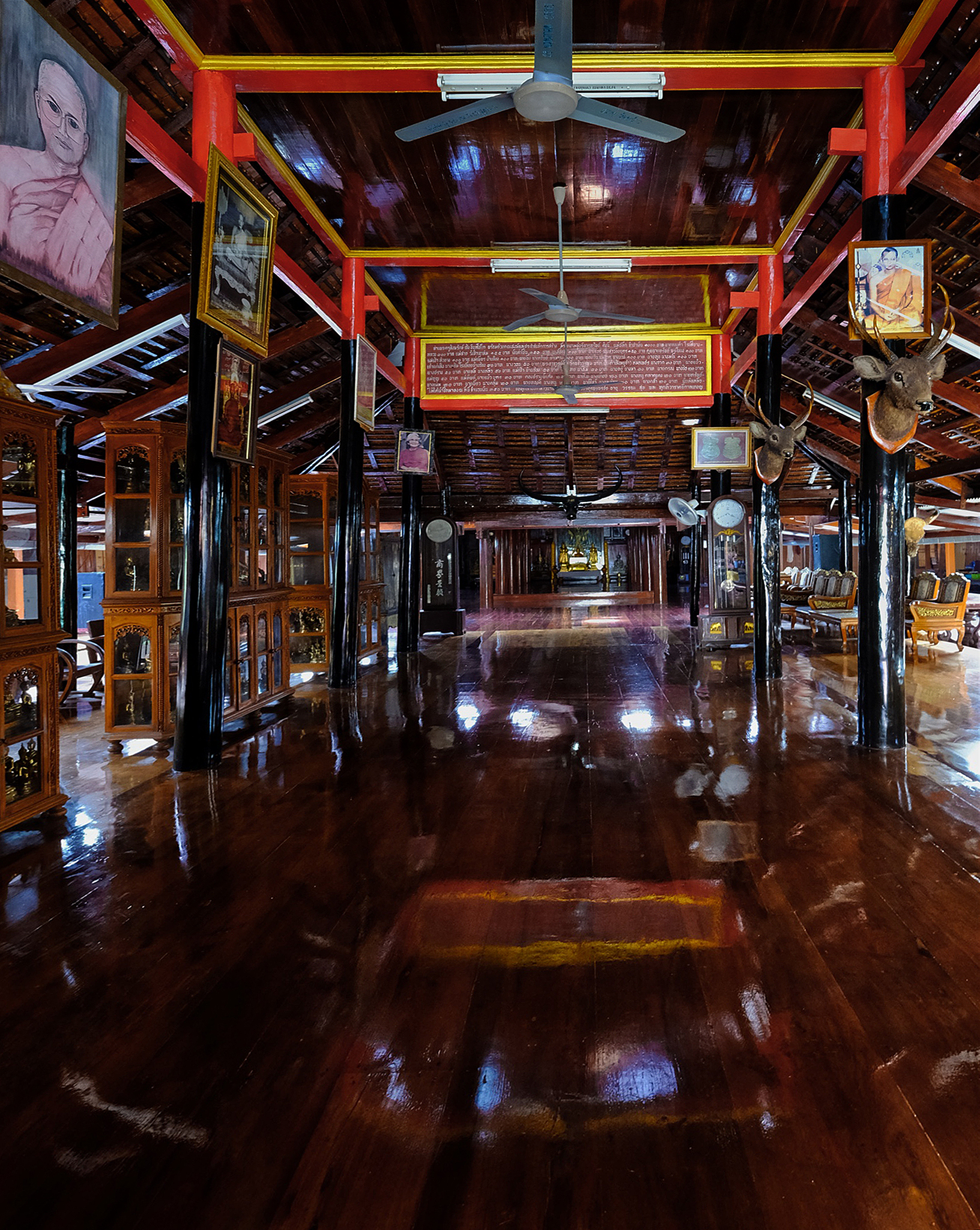 We entered at the invitation of an old monk . . . and went deeper and deeper into this artistically remarkable spiritual space.
We entered at the invitation of an old monk . . . and went deeper and deeper into this artistically remarkable spiritual space.
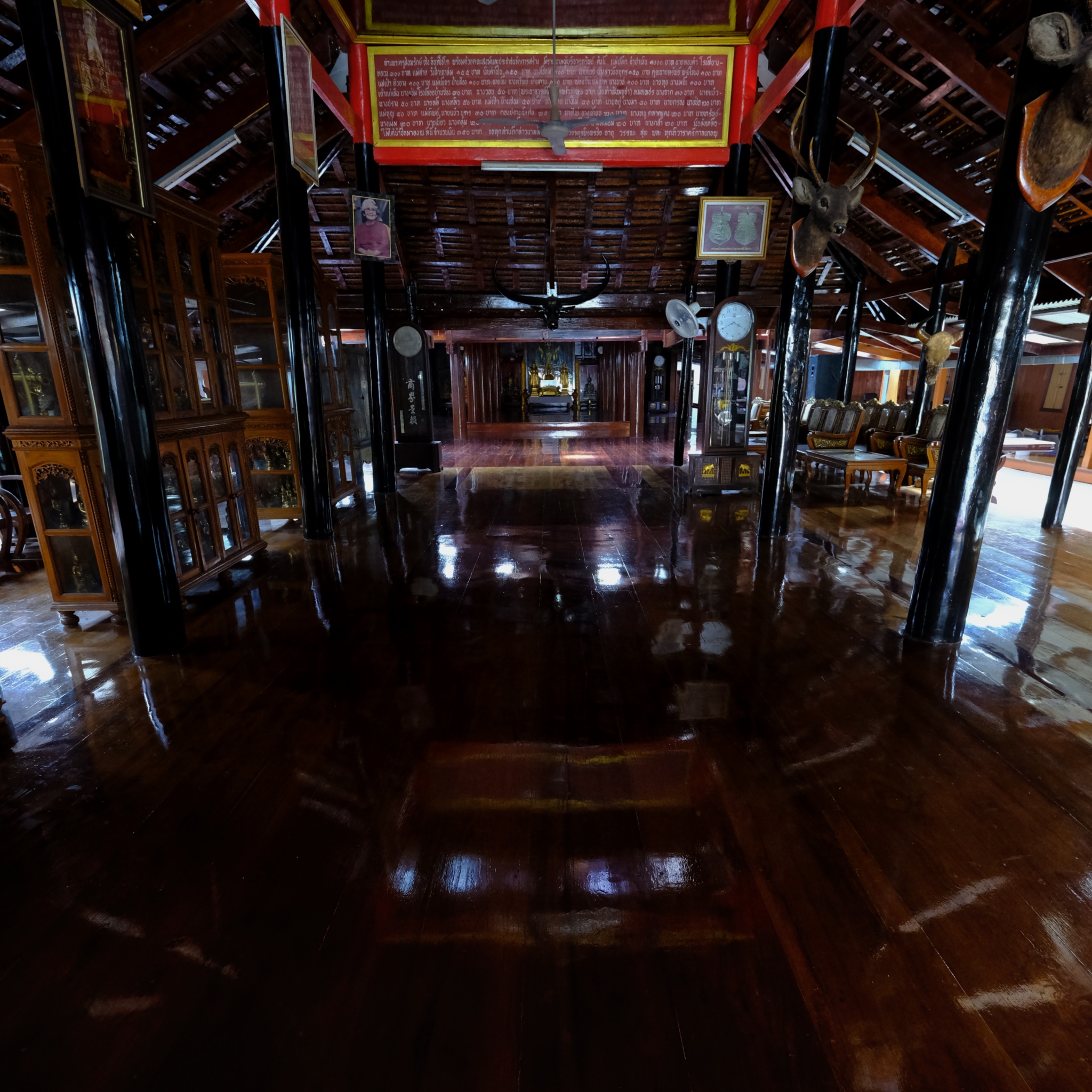 Further and further into the old wooden temple . . .
Further and further into the old wooden temple . . .
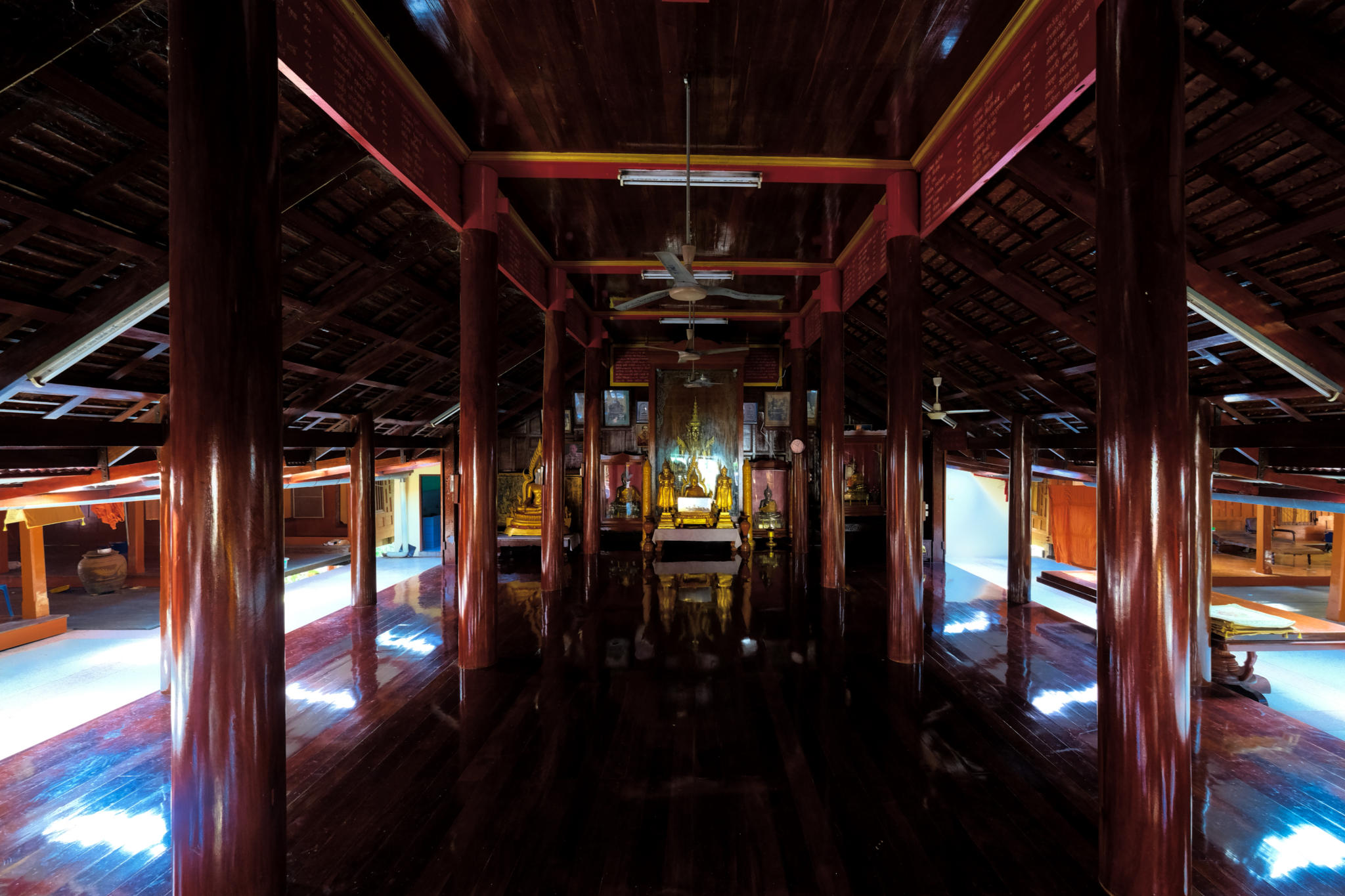 The open-sided temple seemed recently restored.
The open-sided temple seemed recently restored.
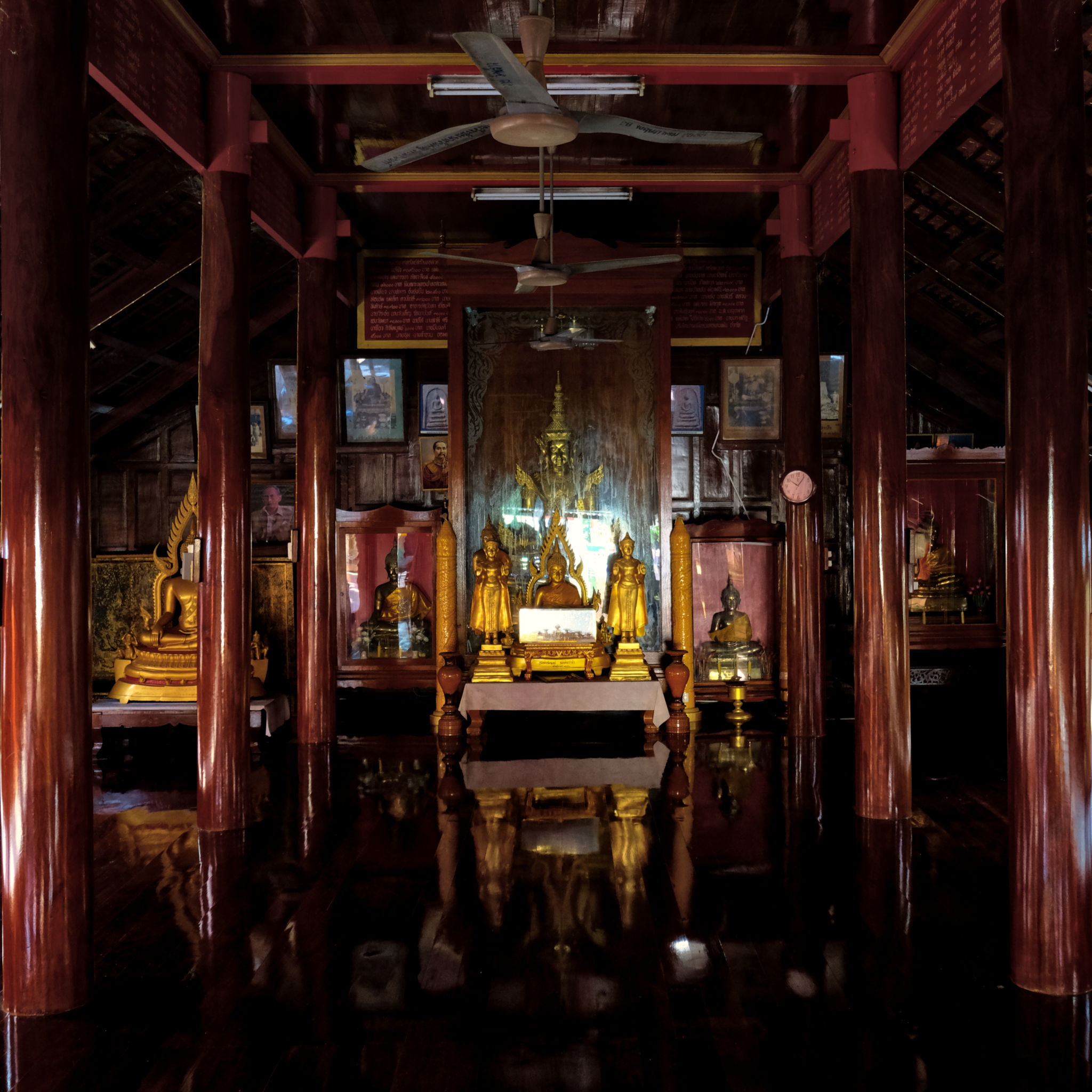 Further and further into the temple until we came to the central altar.
Further and further into the temple until we came to the central altar.
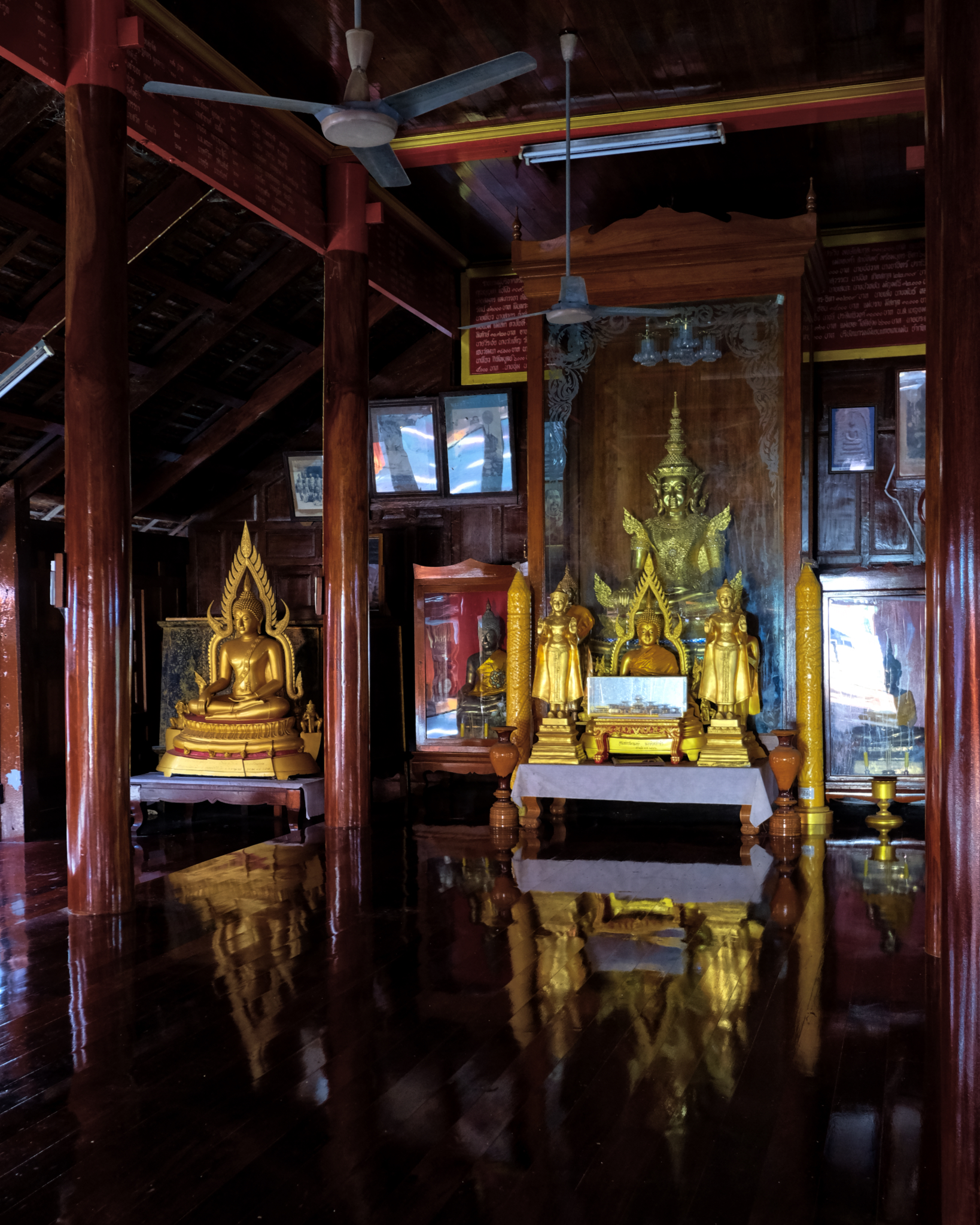 Sacred altar to The Buddha.
Sacred altar to The Buddha.
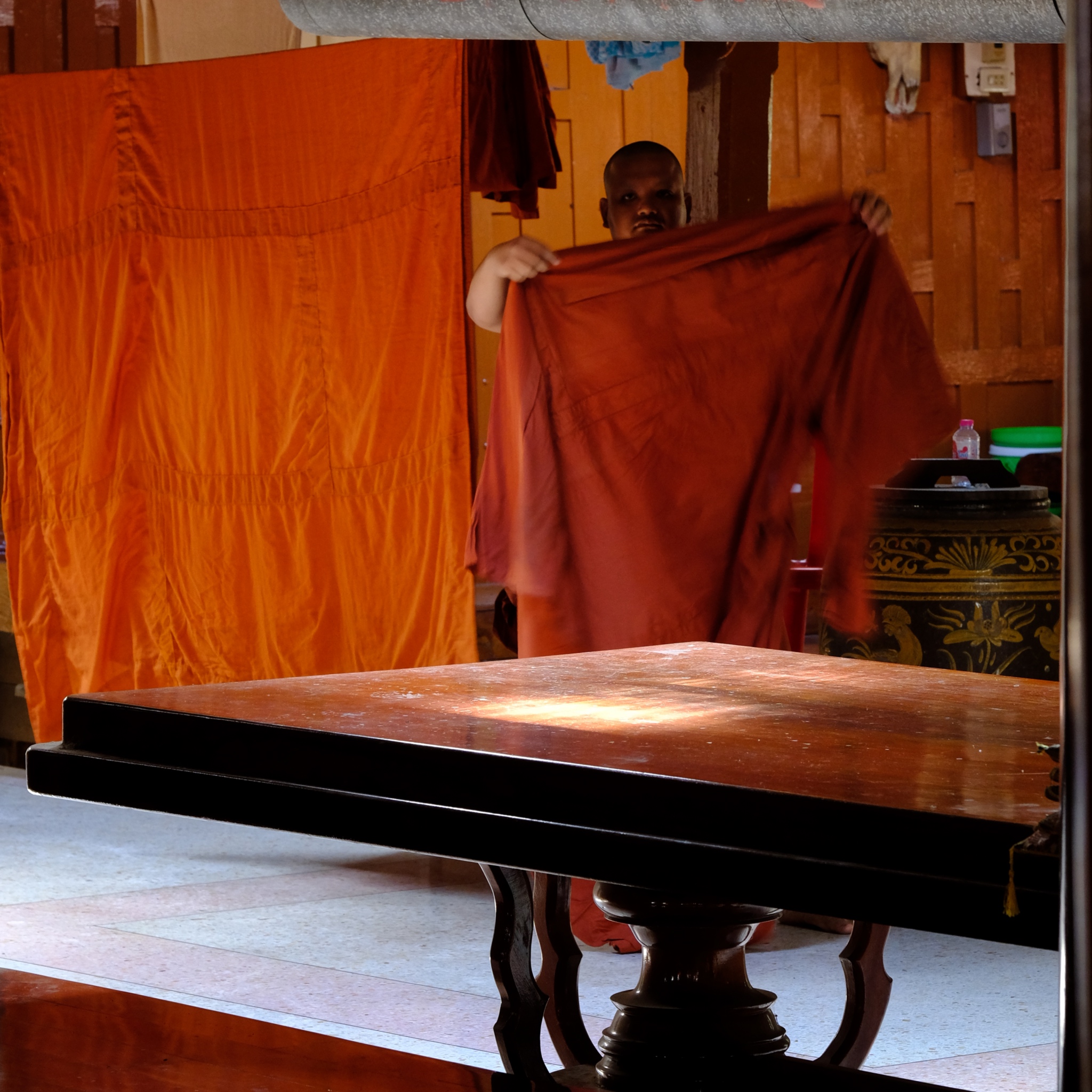 As this is a living temple, the monks live in cells around the central temple and use it as a kind of day room for their chores.
As this is a living temple, the monks live in cells around the central temple and use it as a kind of day room for their chores.
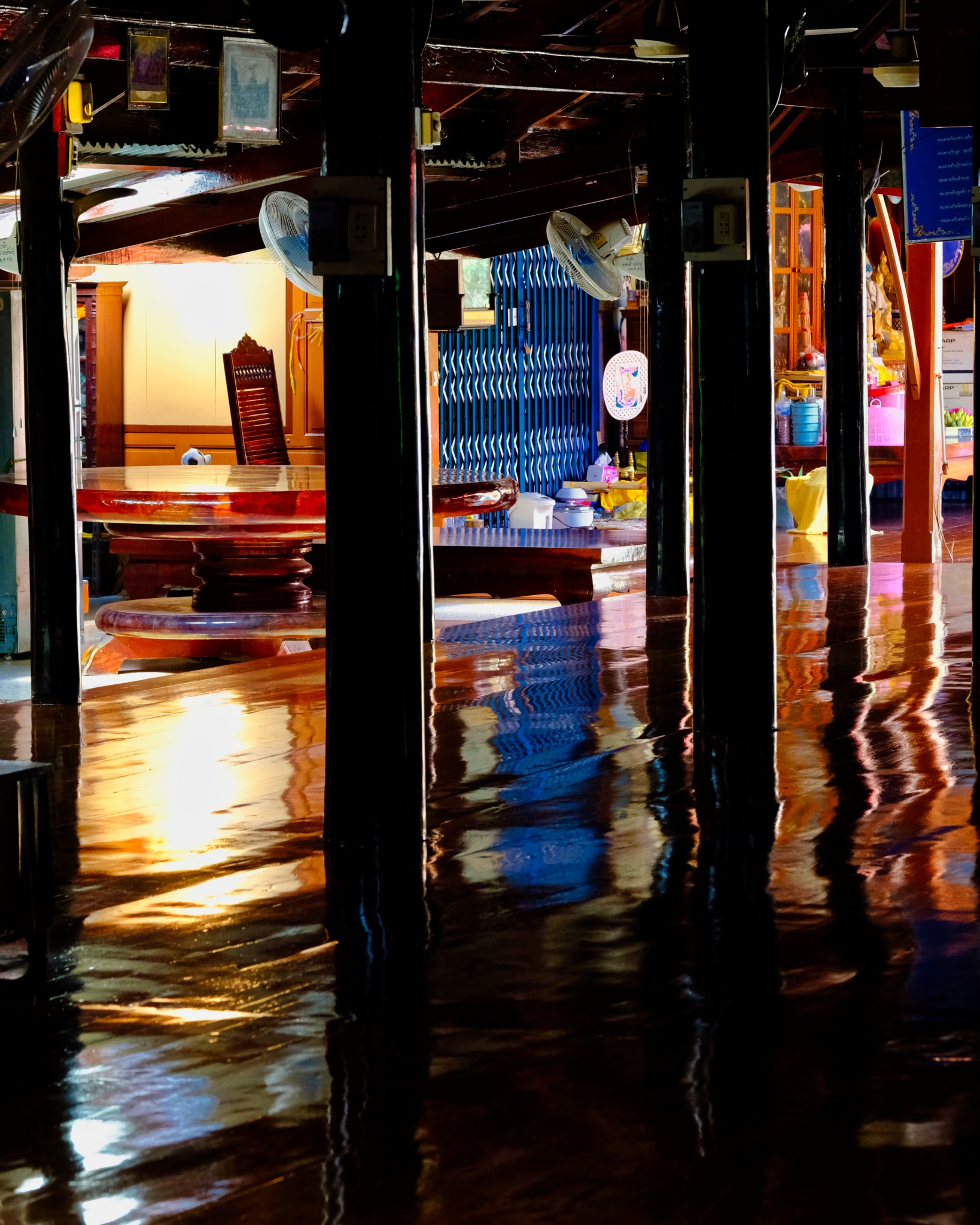 All the mundane items of daily living stacked in a corner of this remarkably beautiful place.
All the mundane items of daily living stacked in a corner of this remarkably beautiful place.
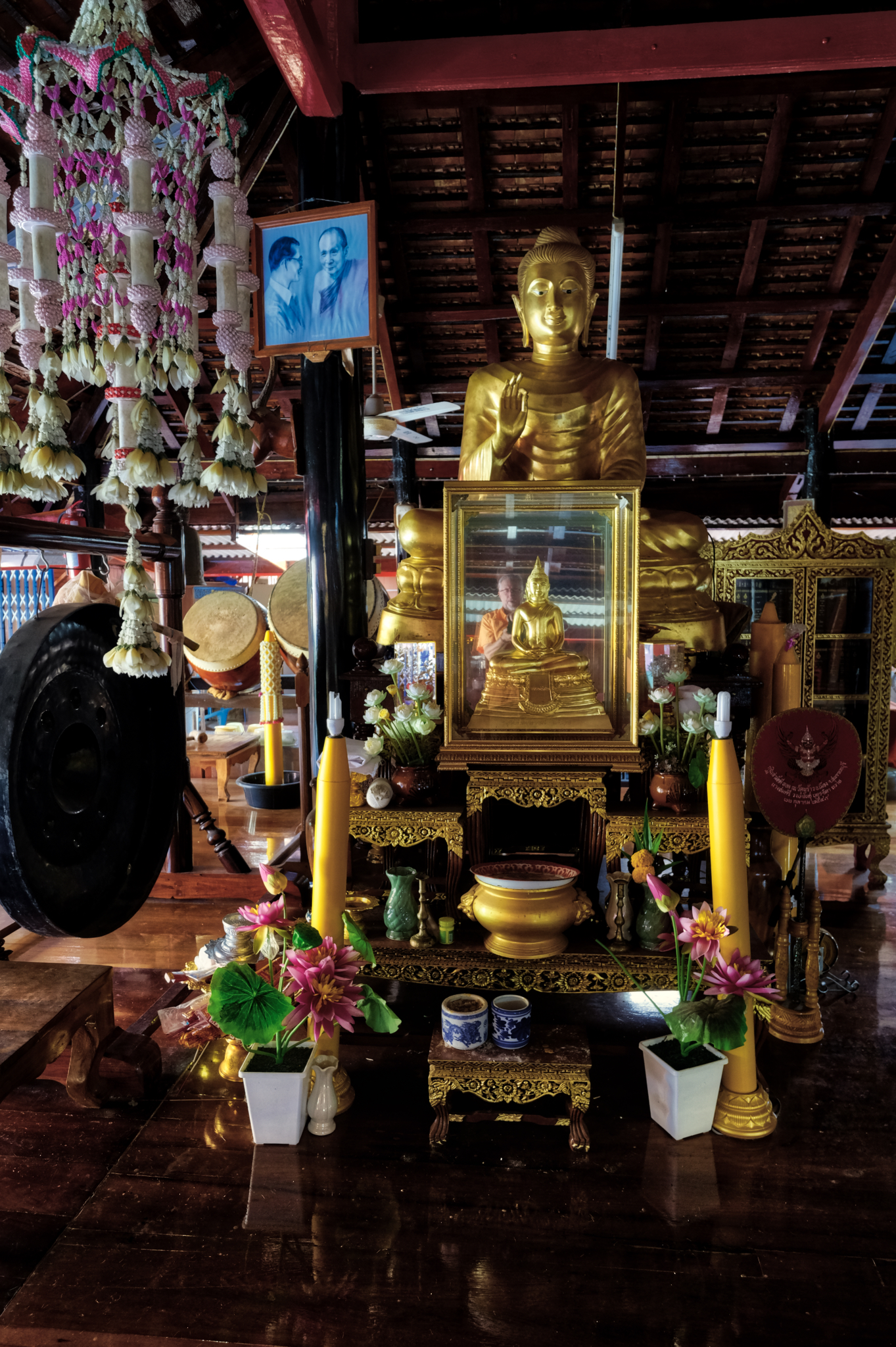 There were many other other altars in the freshly varnished temple. This one included a 'self portrait' of your intrepid photographer.
There were many other other altars in the freshly varnished temple. This one included a 'self portrait' of your intrepid photographer.
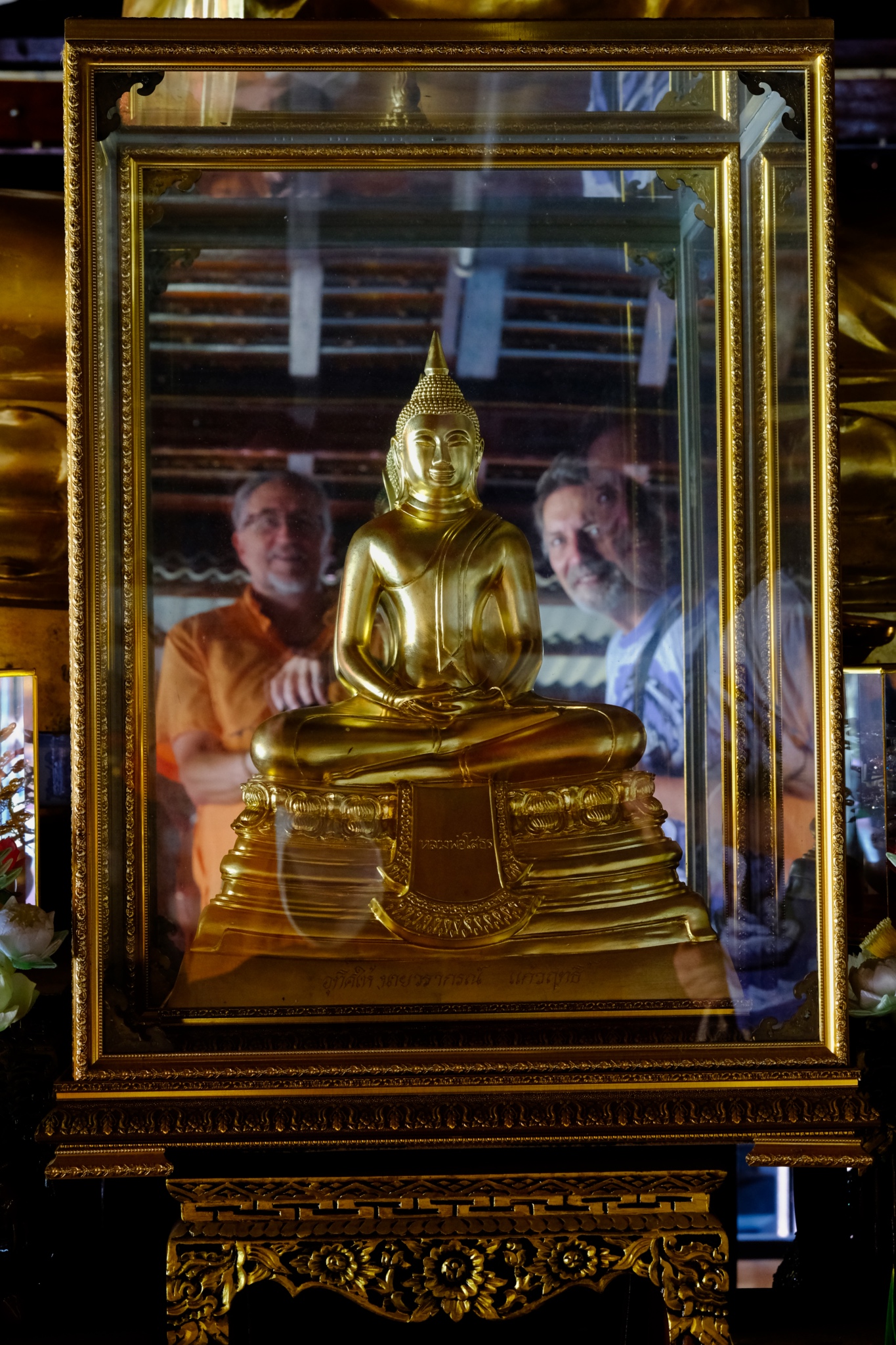 I am keeping good company . . . John and The Buddha.
I am keeping good company . . . John and The Buddha.
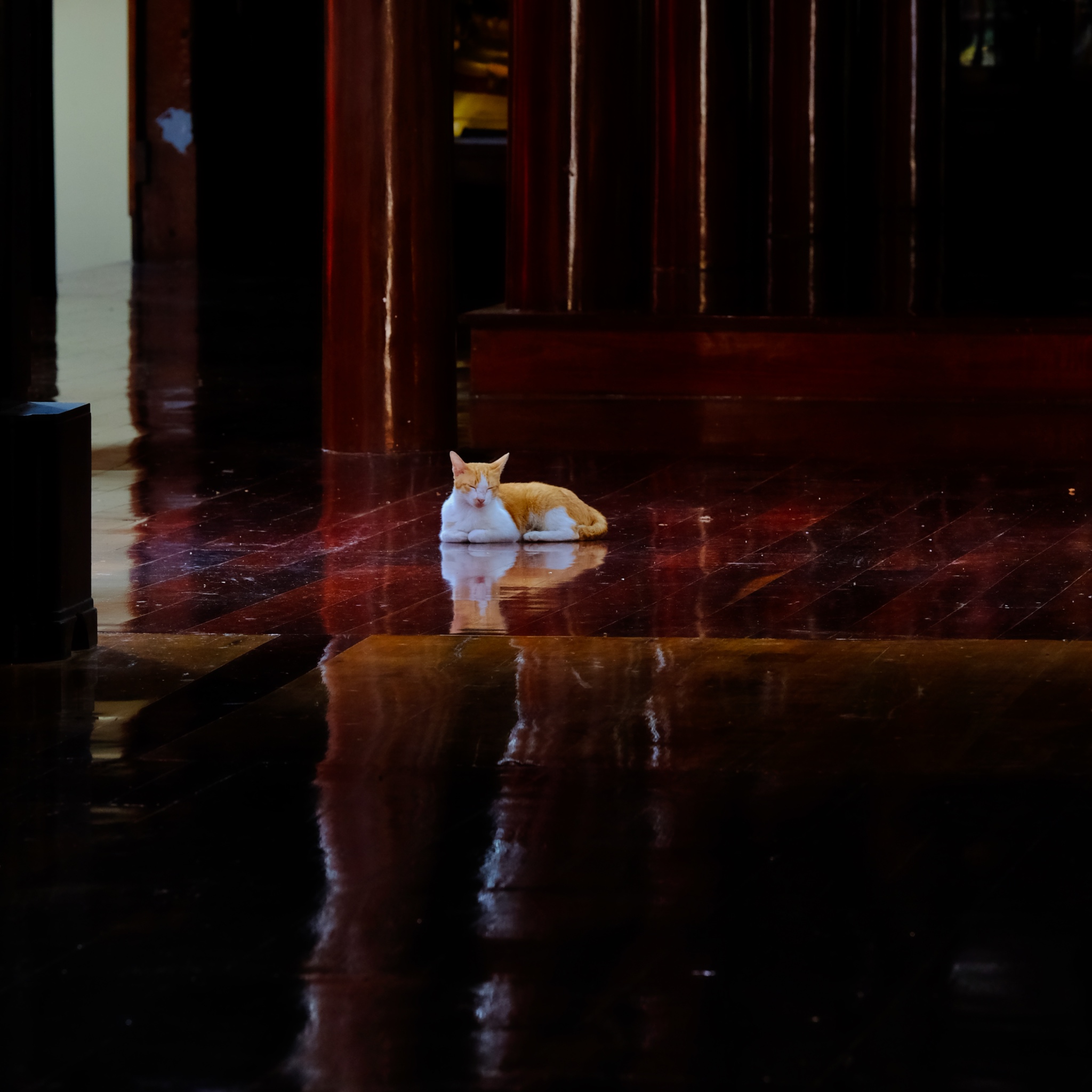 There were freeloader cats looking content in the temple.
There were freeloader cats looking content in the temple.
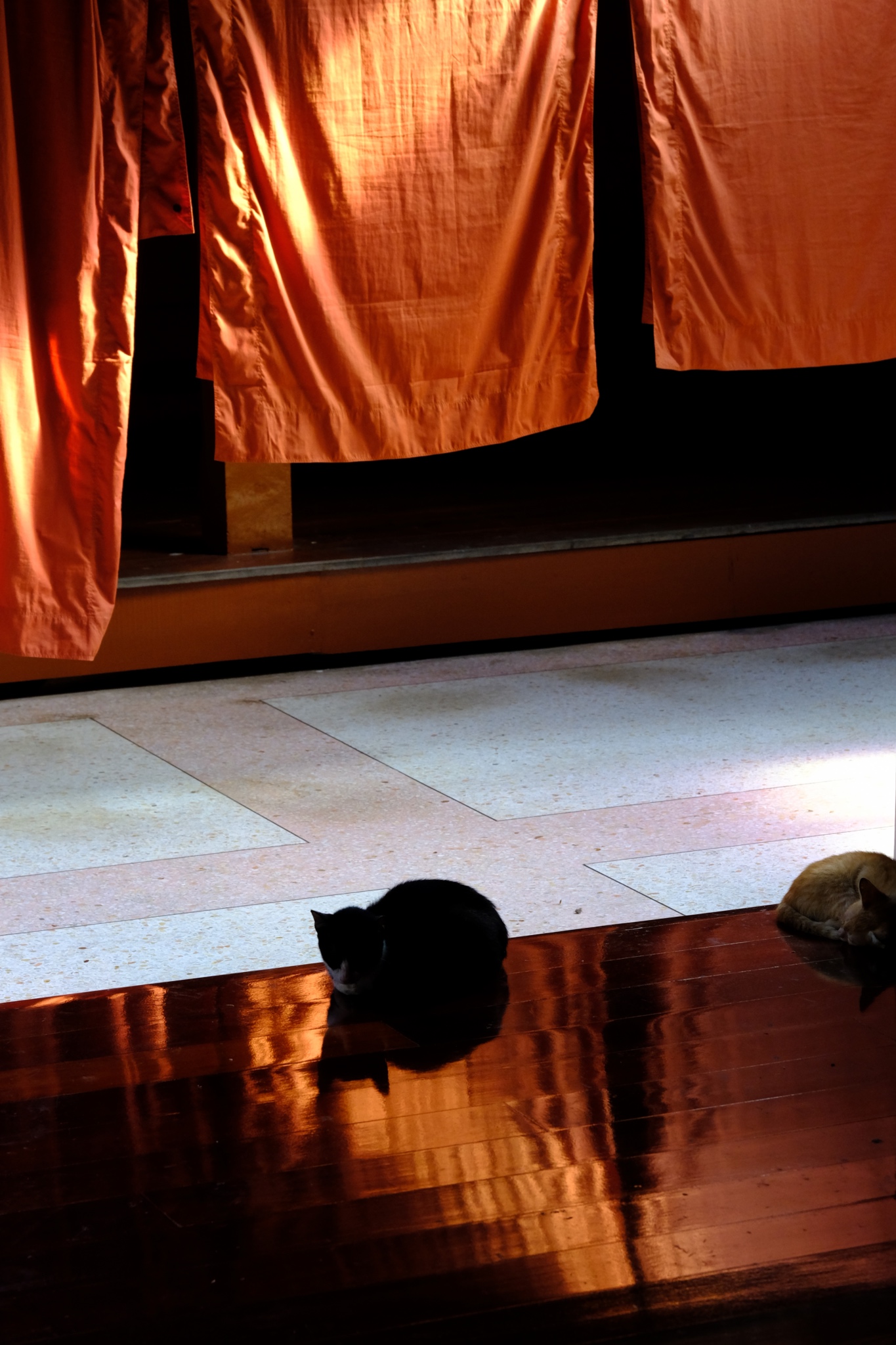 The cats distributed themselves around the temple in the most aesthetic way possible.
The cats distributed themselves around the temple in the most aesthetic way possible.
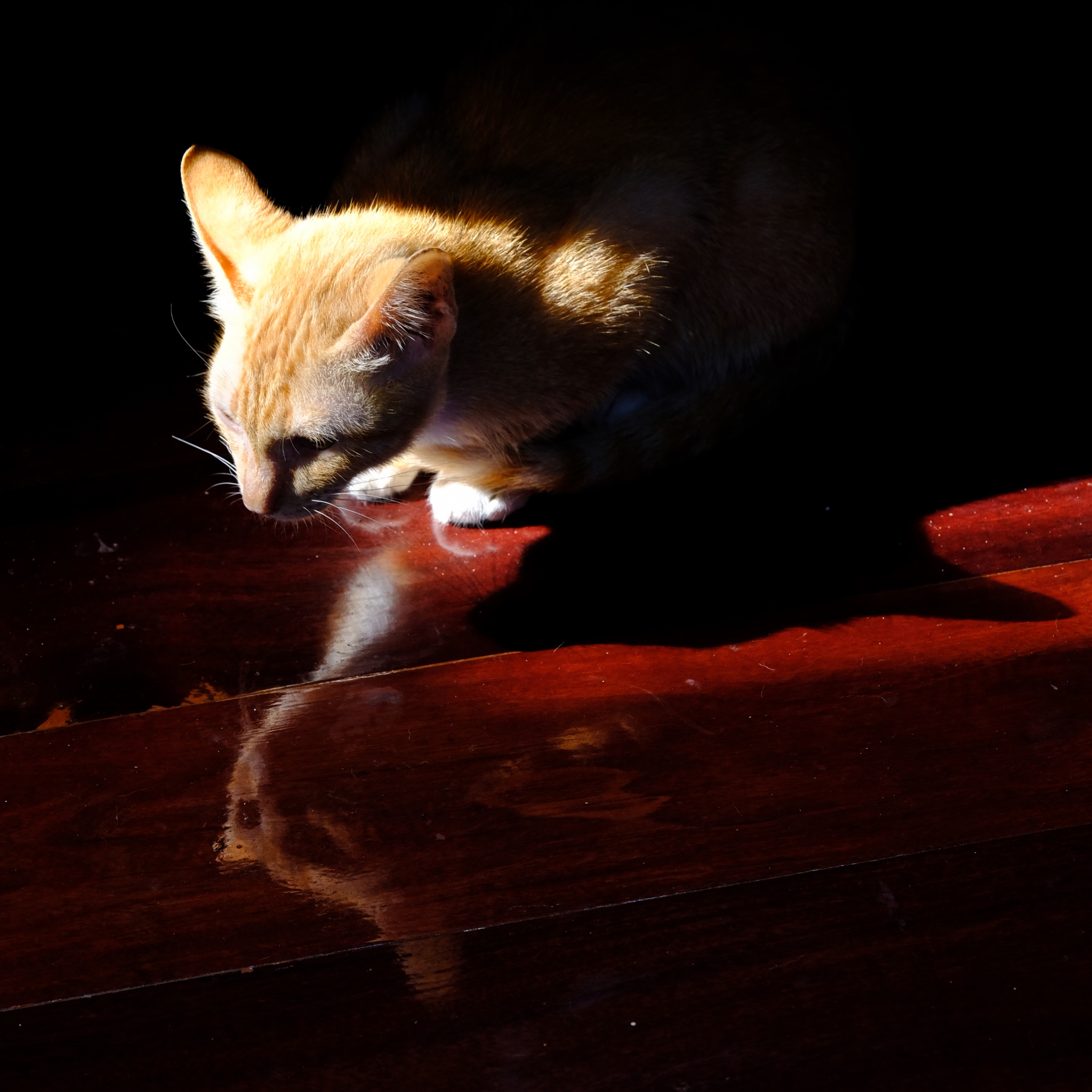 A temple cat in full meditative repose.
A temple cat in full meditative repose.
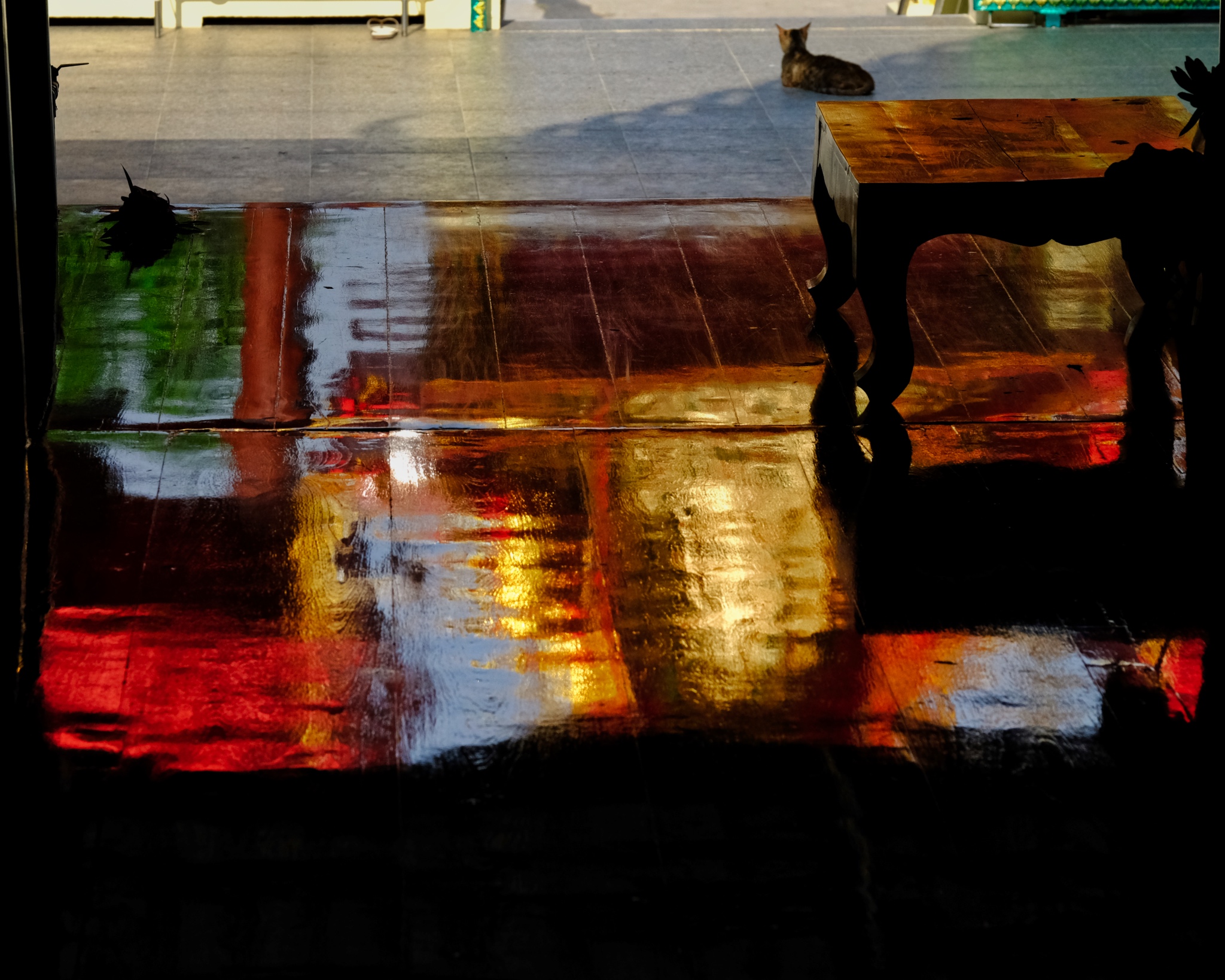 Wonderful reflection of the surrounding temple structures on the polished varnish floor (with cat).
Wonderful reflection of the surrounding temple structures on the polished varnish floor (with cat).
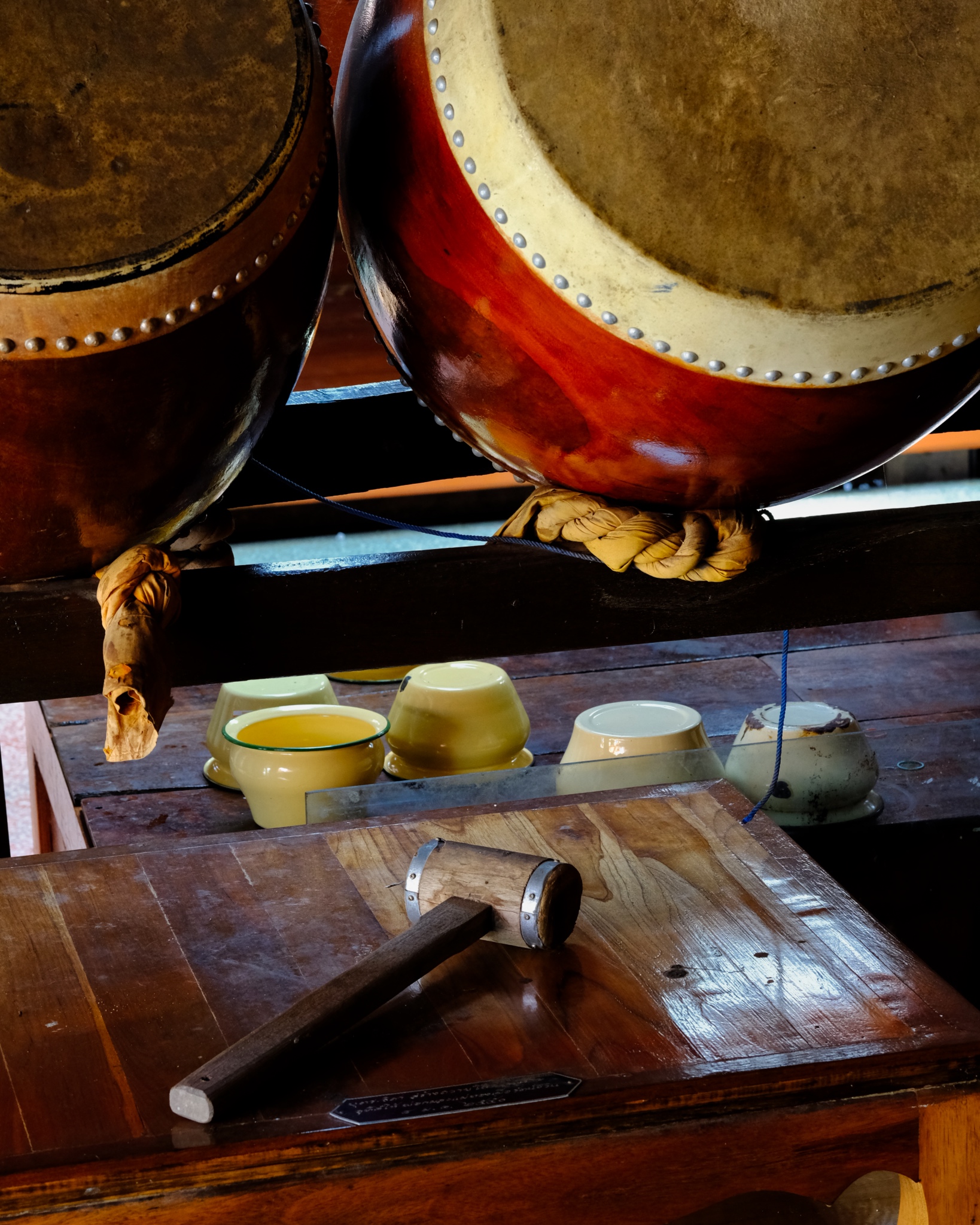 I was tempted . . . but relented . . . because of the peacefulness there.
I was tempted . . . but relented . . . because of the peacefulness there.
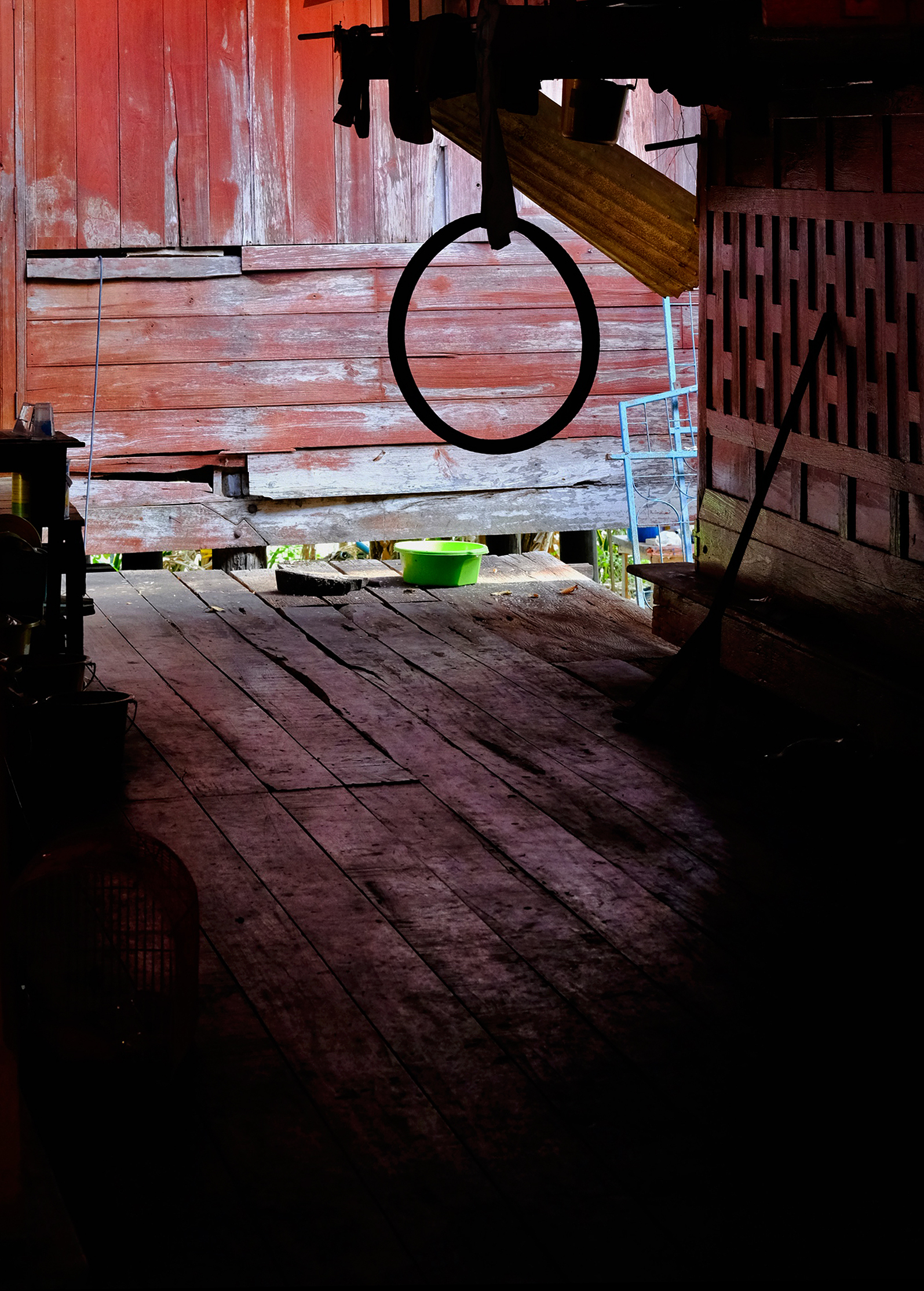 I could have spent all day in that wooden temple (or all the rest of my life!) . . . but we left our homes that morning to ramble, and ramble we would.
I could have spent all day in that wooden temple (or all the rest of my life!) . . . but we left our homes that morning to ramble, and ramble we would.
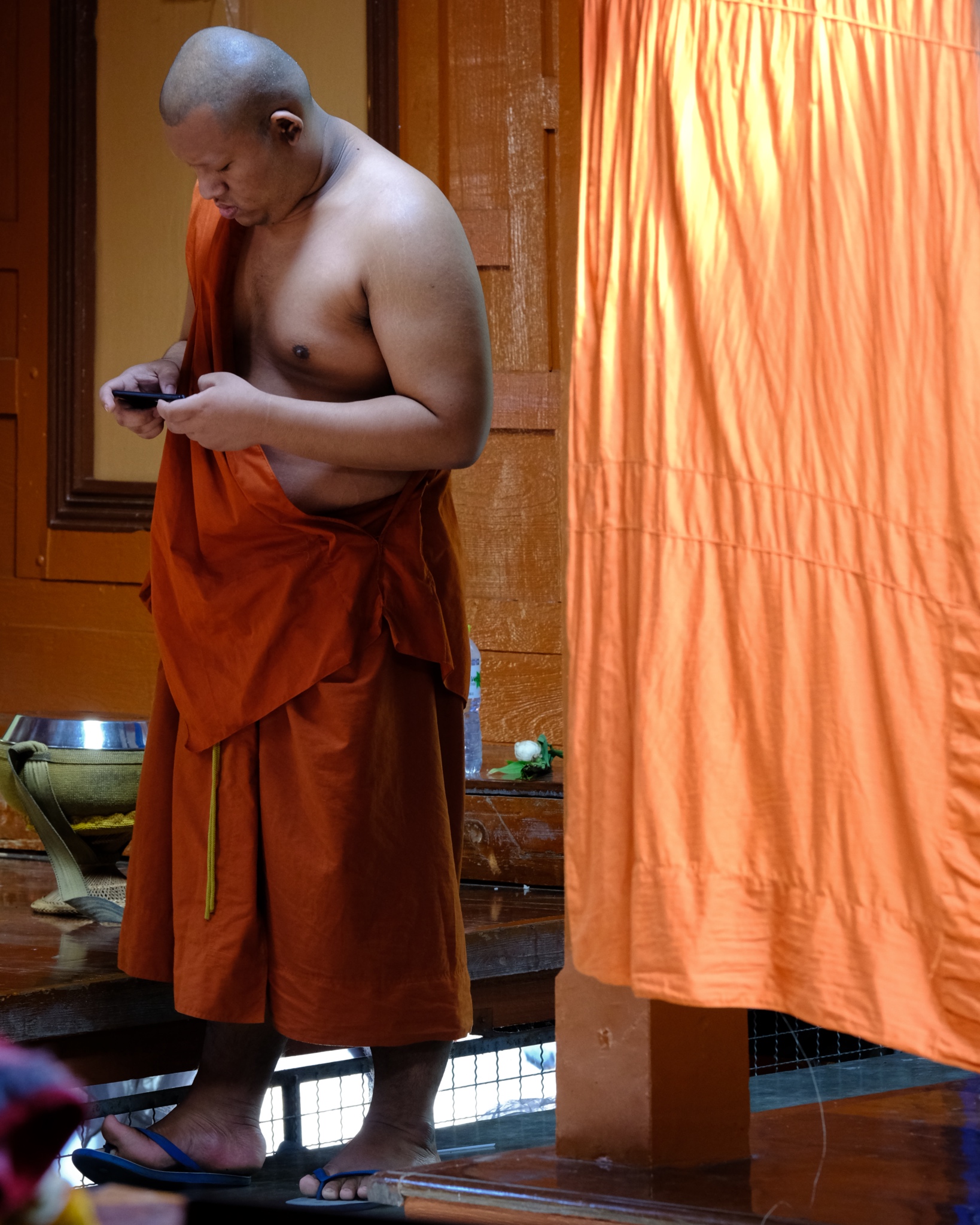 I am not sure what to say about this. I am sure this 'modern' monk is somewhere on his own spiritual path . . . but it seems odd to me. I guess the Buddha did not anticipate modern technology, and the current wat abbots have not discovered effective guidance . . . or it doesn't matter.
I am not sure what to say about this. I am sure this 'modern' monk is somewhere on his own spiritual path . . . but it seems odd to me. I guess the Buddha did not anticipate modern technology, and the current wat abbots have not discovered effective guidance . . . or it doesn't matter.
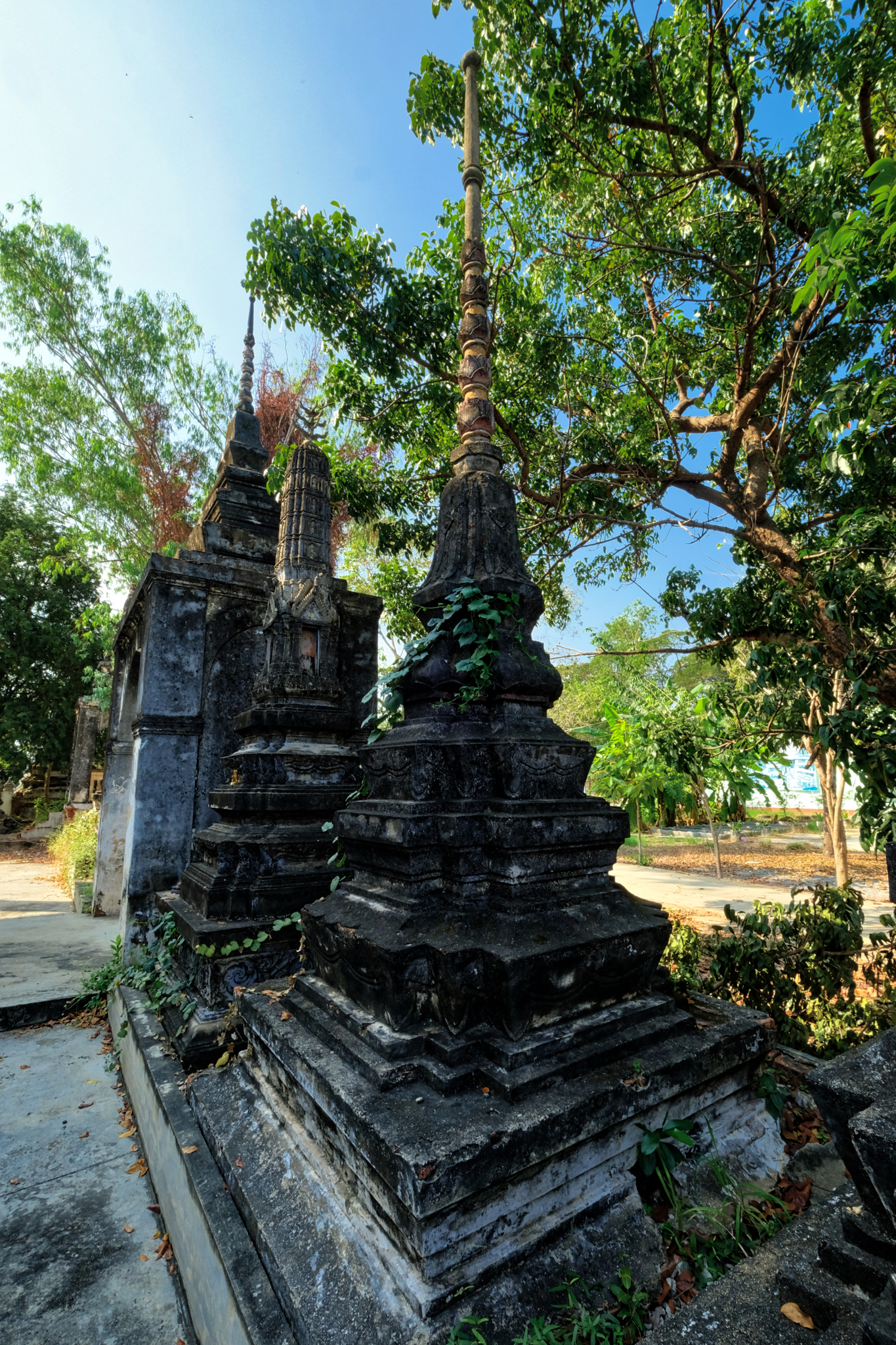 Back outside in the real air . . . a row of chedis moldering away in the sunlight.
Back outside in the real air . . . a row of chedis moldering away in the sunlight.
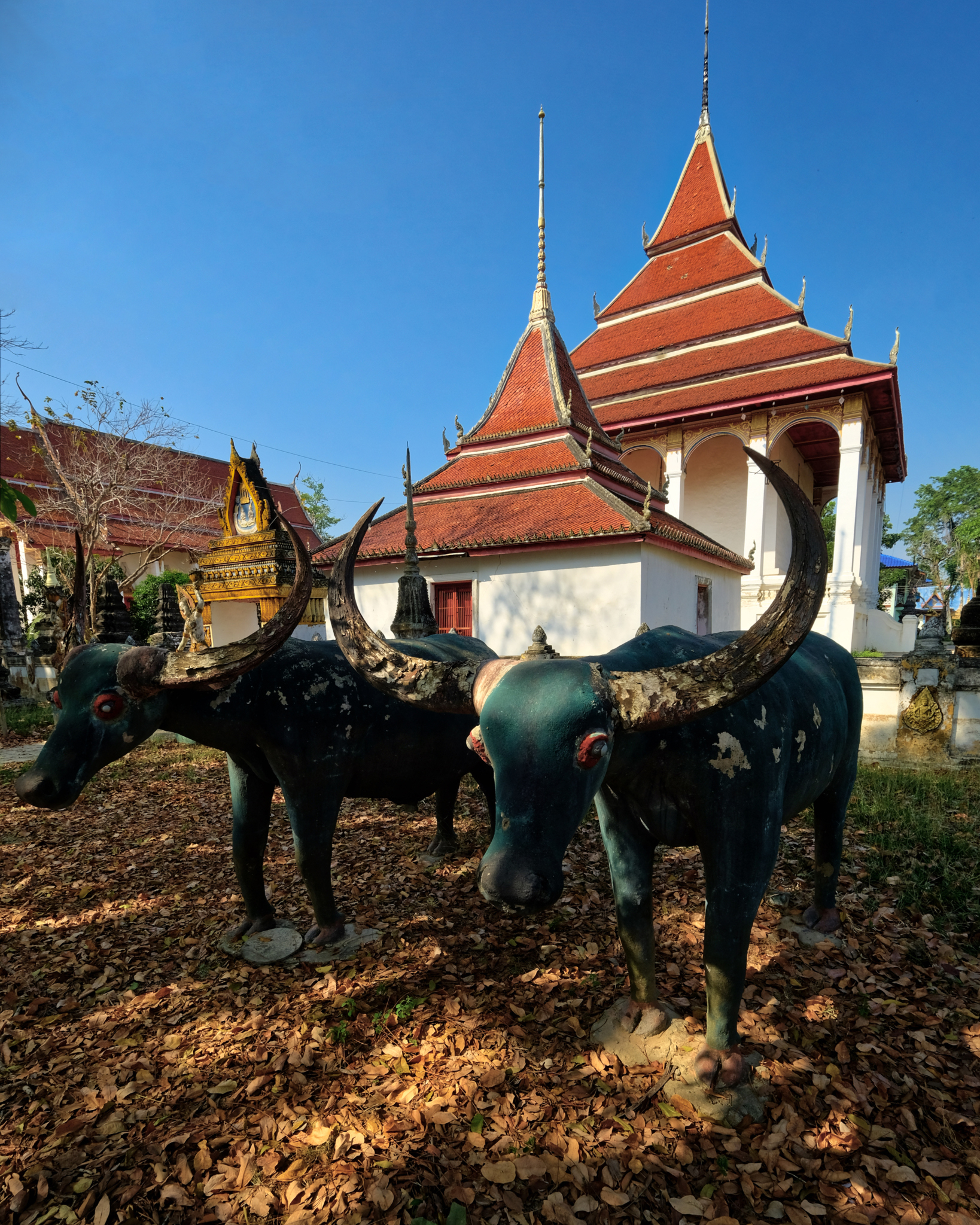 Yes, still inside the same temple grounds. Buffalo revered as a part of the lives of the people who live in the surrounding rural farmland.
Yes, still inside the same temple grounds. Buffalo revered as a part of the lives of the people who live in the surrounding rural farmland.
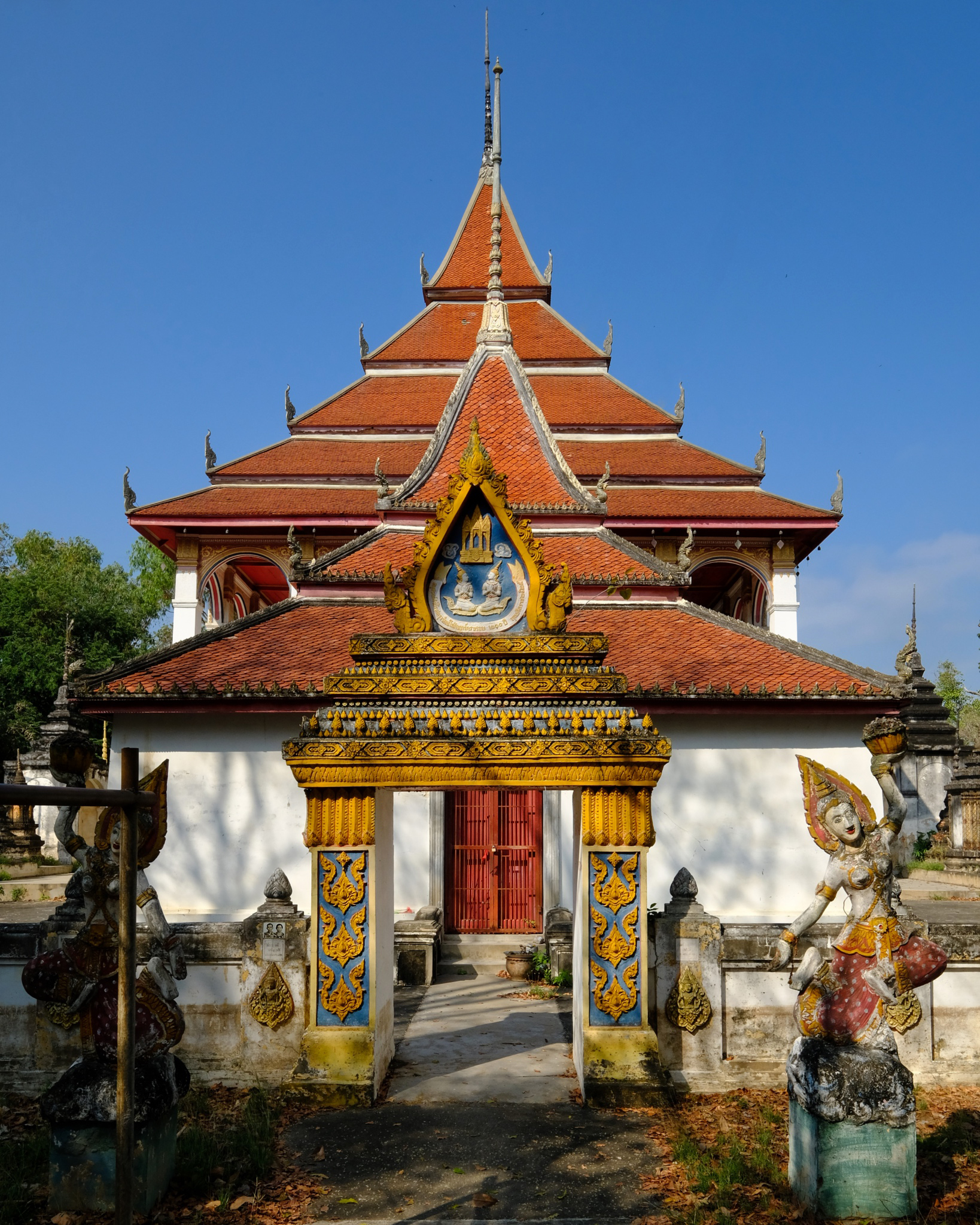 A beautiful Wat gate with welcoming mythological spirits. This building was surrounded by a walled compound filled with old chedis holding the ashes, one would assume, of former monks and abbots.
A beautiful Wat gate with welcoming mythological spirits. This building was surrounded by a walled compound filled with old chedis holding the ashes, one would assume, of former monks and abbots.
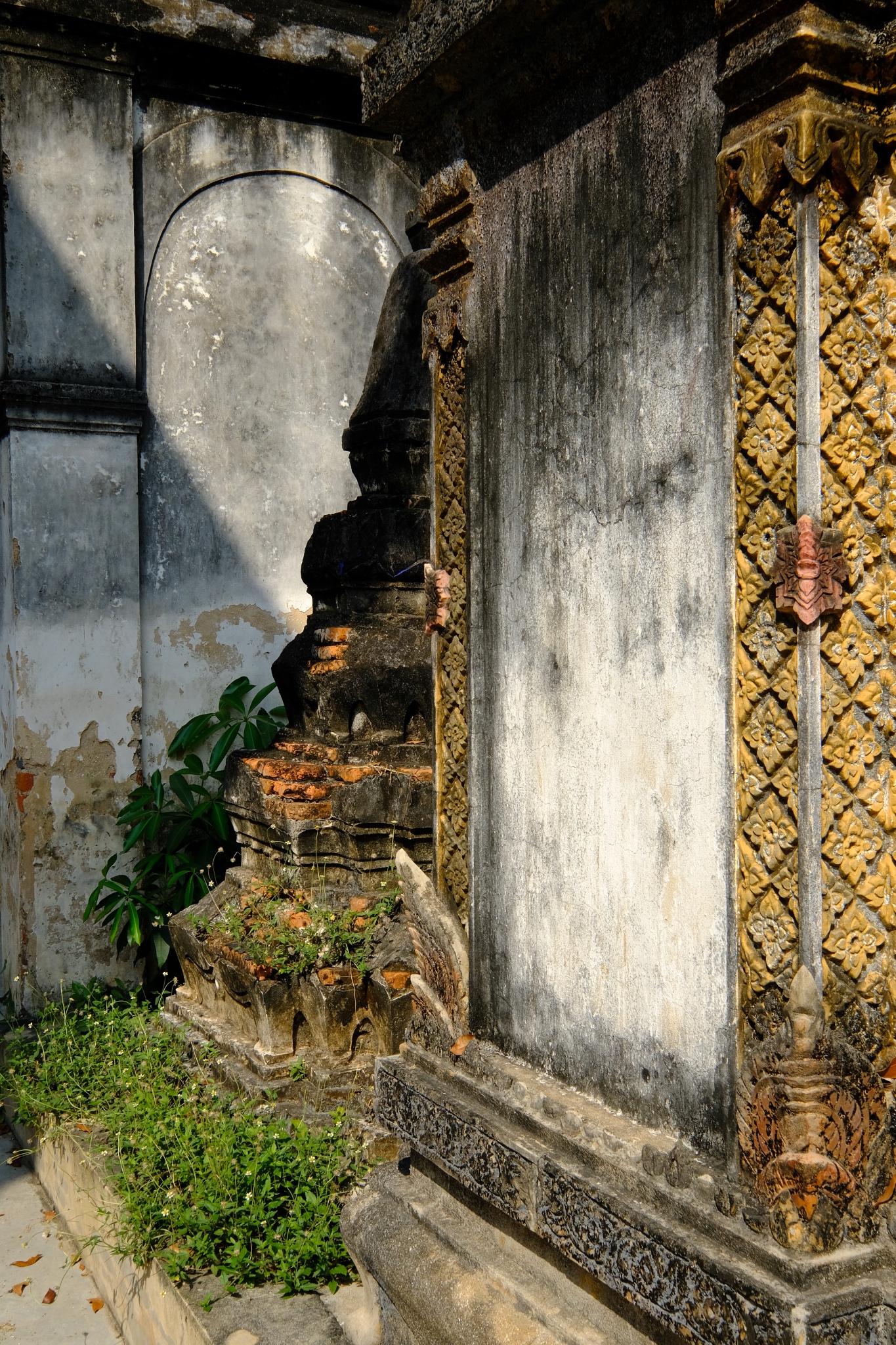 The surrounding chedis.
The surrounding chedis.
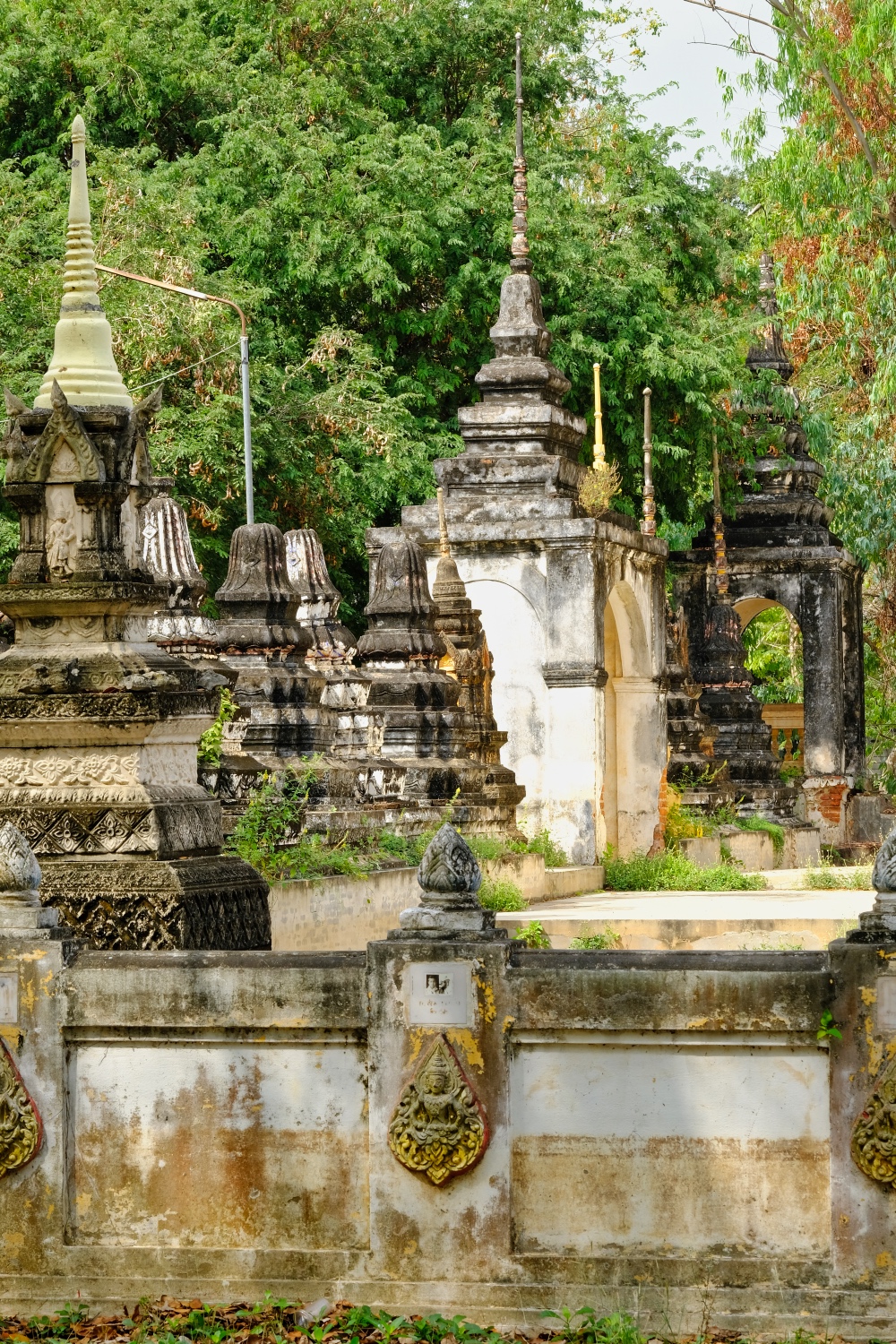 The old chedis stand in a vigil around the temple . . .
The old chedis stand in a vigil around the temple . . .
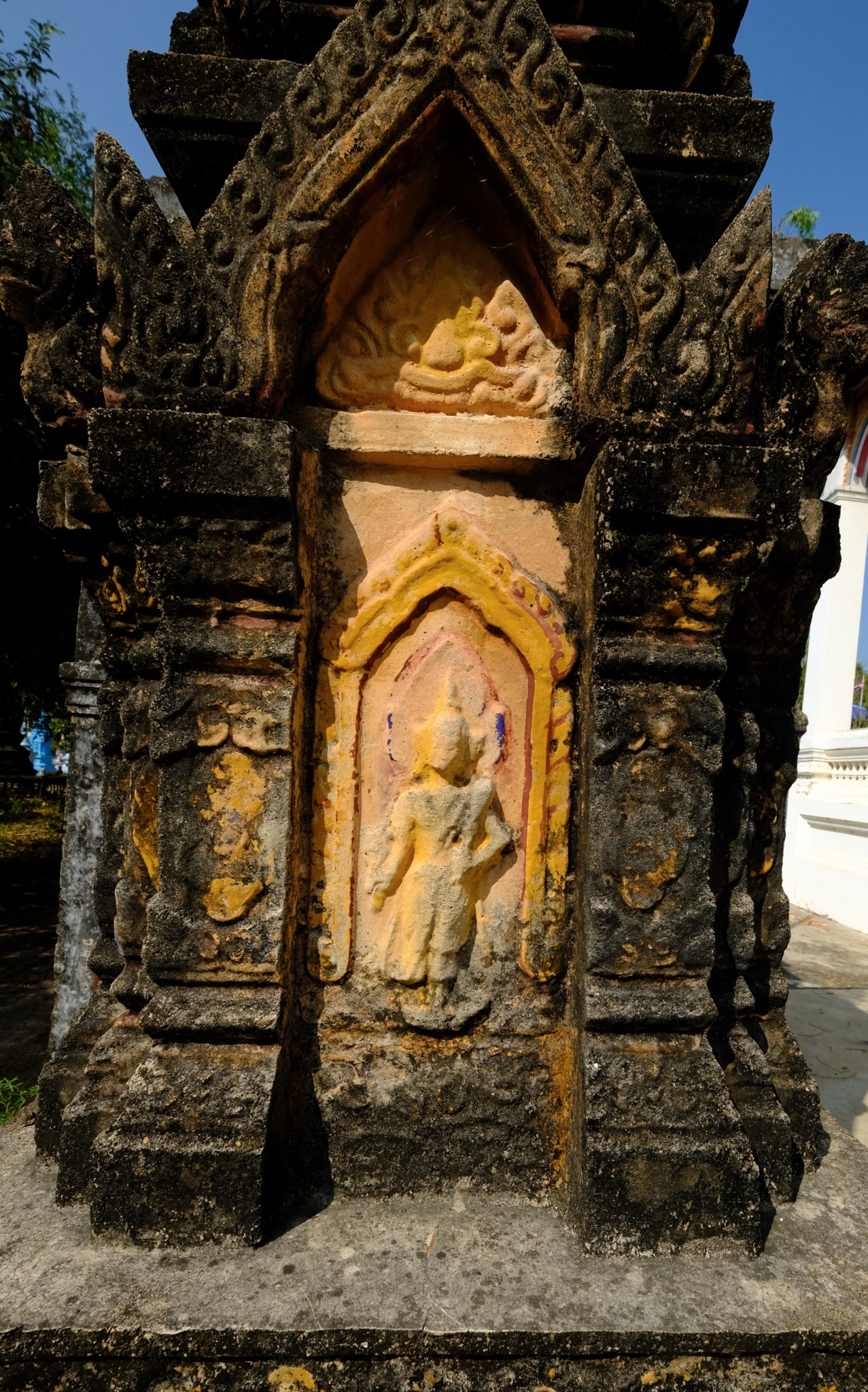 Some of the detail of these old funerary chedis is still very beautiful.
Some of the detail of these old funerary chedis is still very beautiful.
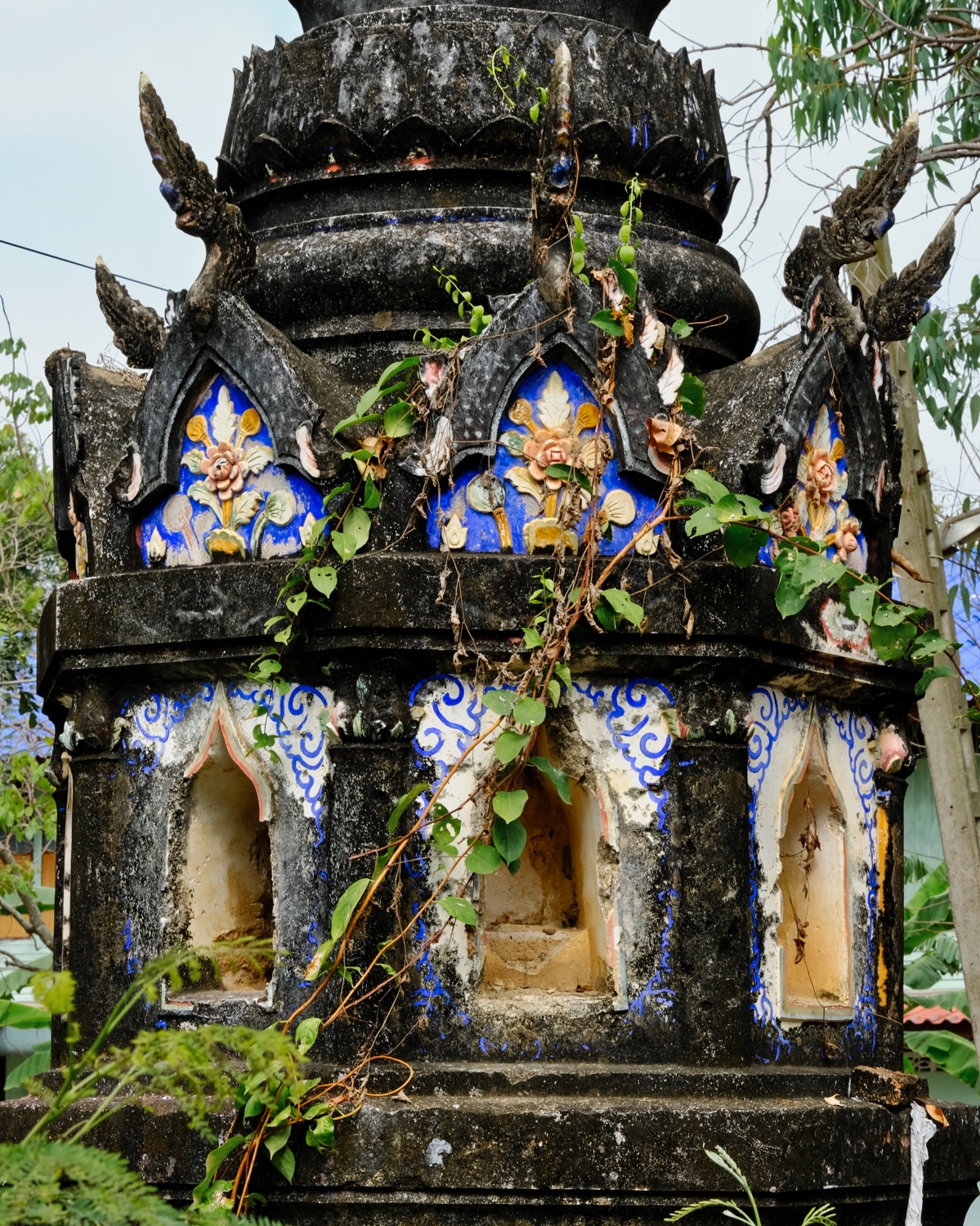 Missing Buddha images! If you ever go to Thailand, remember this photo! This is where those expensive 'rare ancient Buddha' images sold in the expensive hotel art shops come from! They are robbed from these old chedis. It is against the law to export Buddha images without the proper permission from authorities.
Missing Buddha images! If you ever go to Thailand, remember this photo! This is where those expensive 'rare ancient Buddha' images sold in the expensive hotel art shops come from! They are robbed from these old chedis. It is against the law to export Buddha images without the proper permission from authorities.
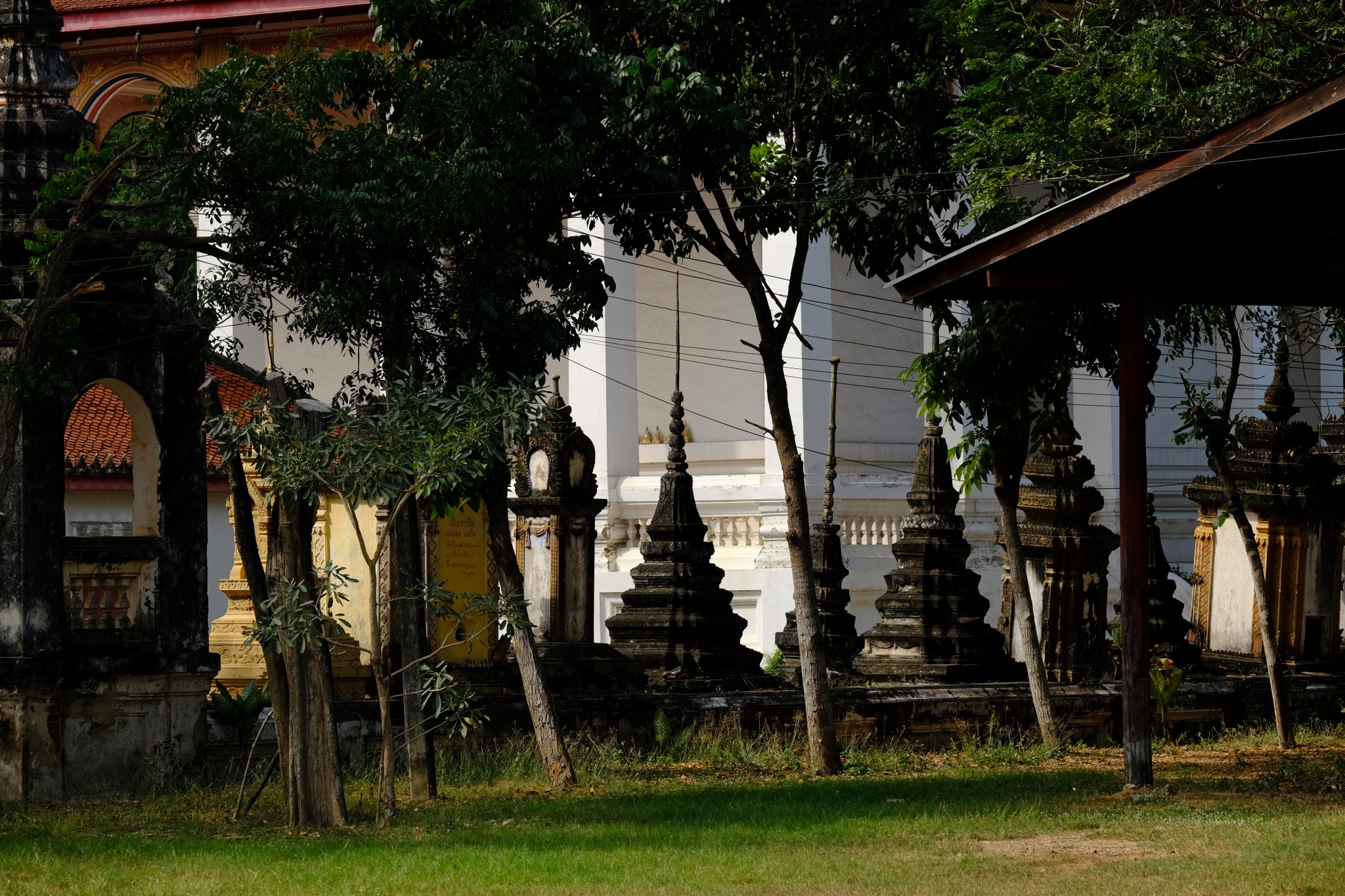 Around the temple I walked admiring the lines of chedis.
Around the temple I walked admiring the lines of chedis.
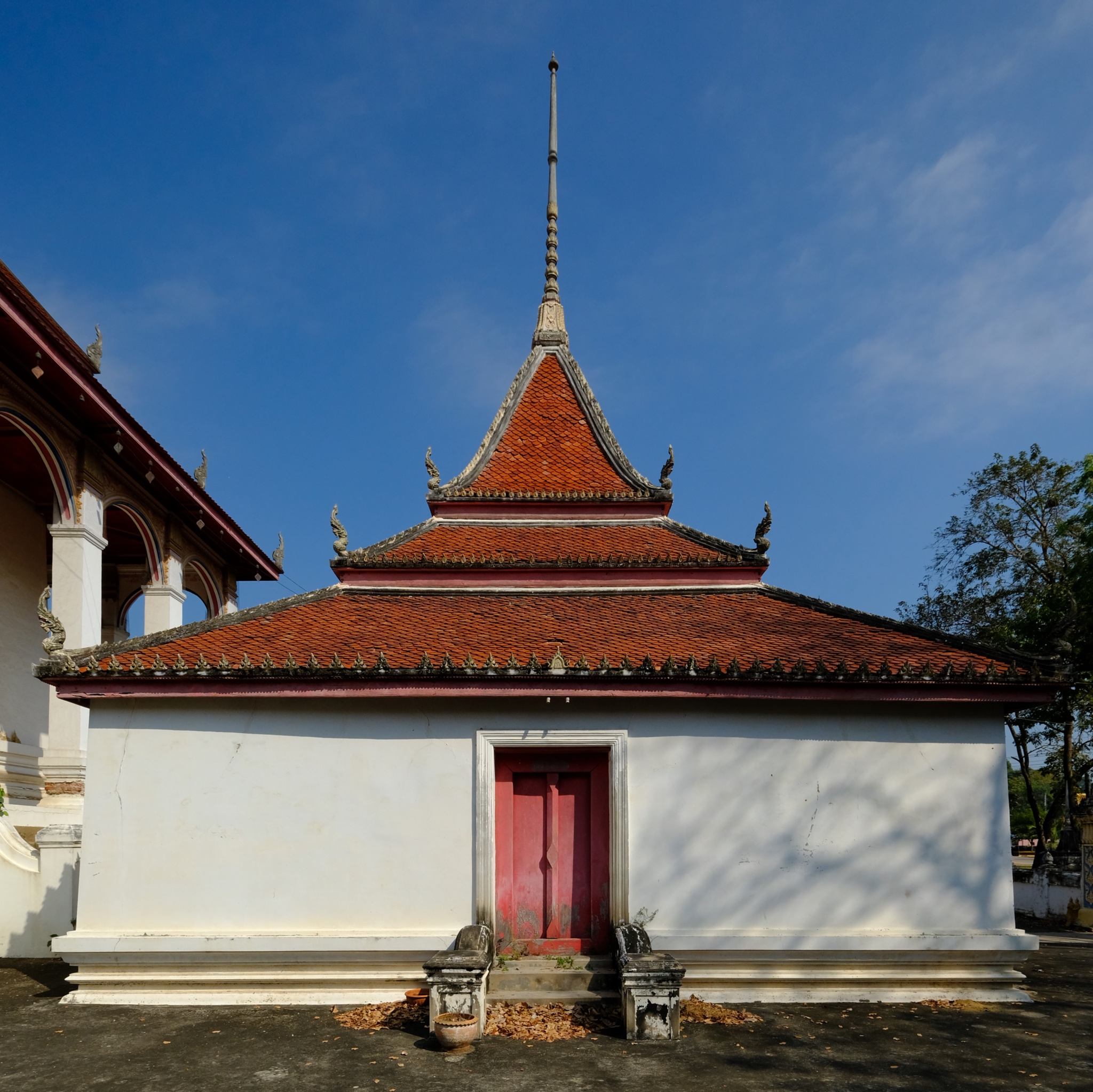 A temple within a temple. Stunning architecture.
A temple within a temple. Stunning architecture.
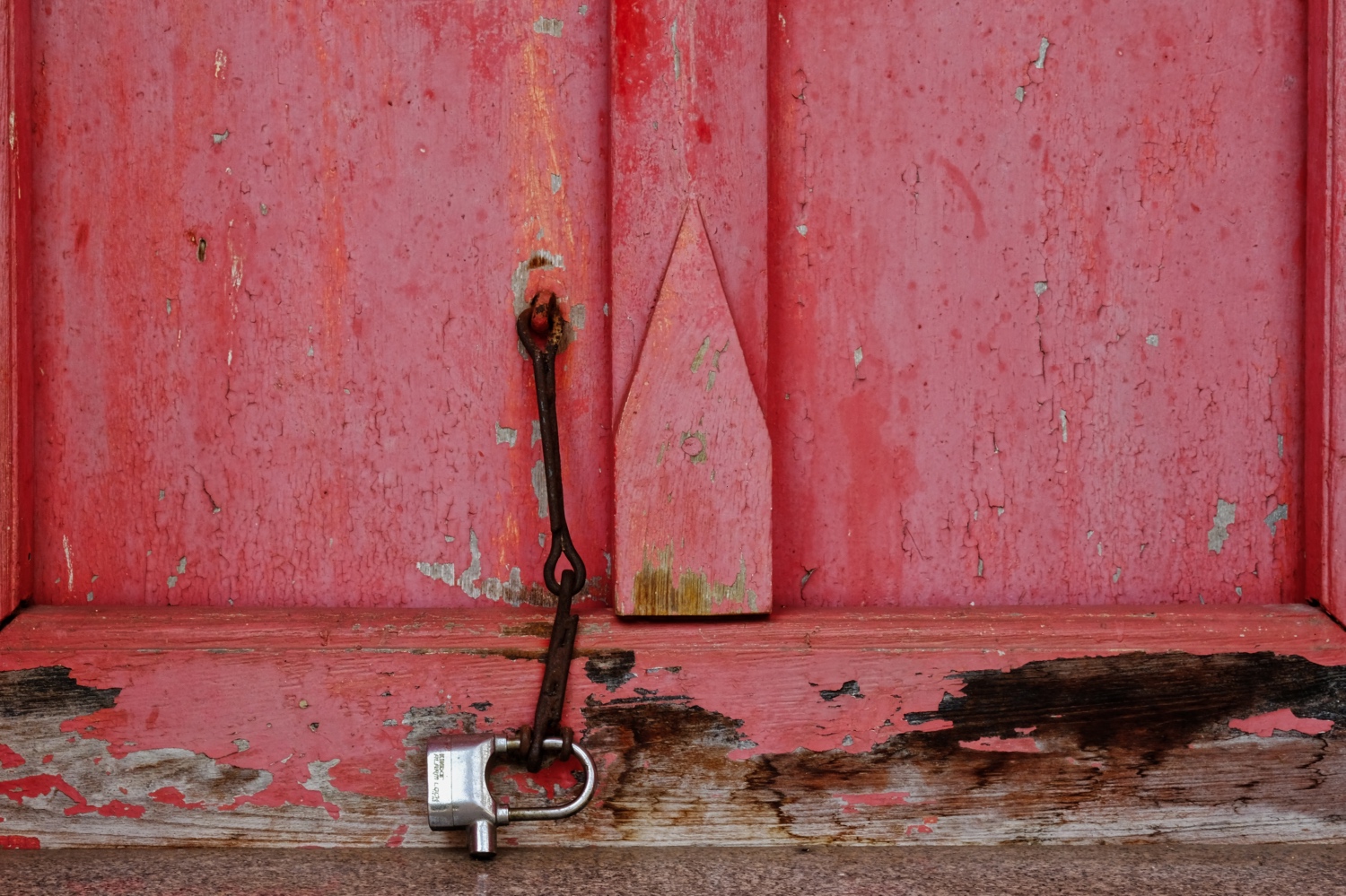 Old and decaying temple hardware . . . and a new lock.
Old and decaying temple hardware . . . and a new lock.
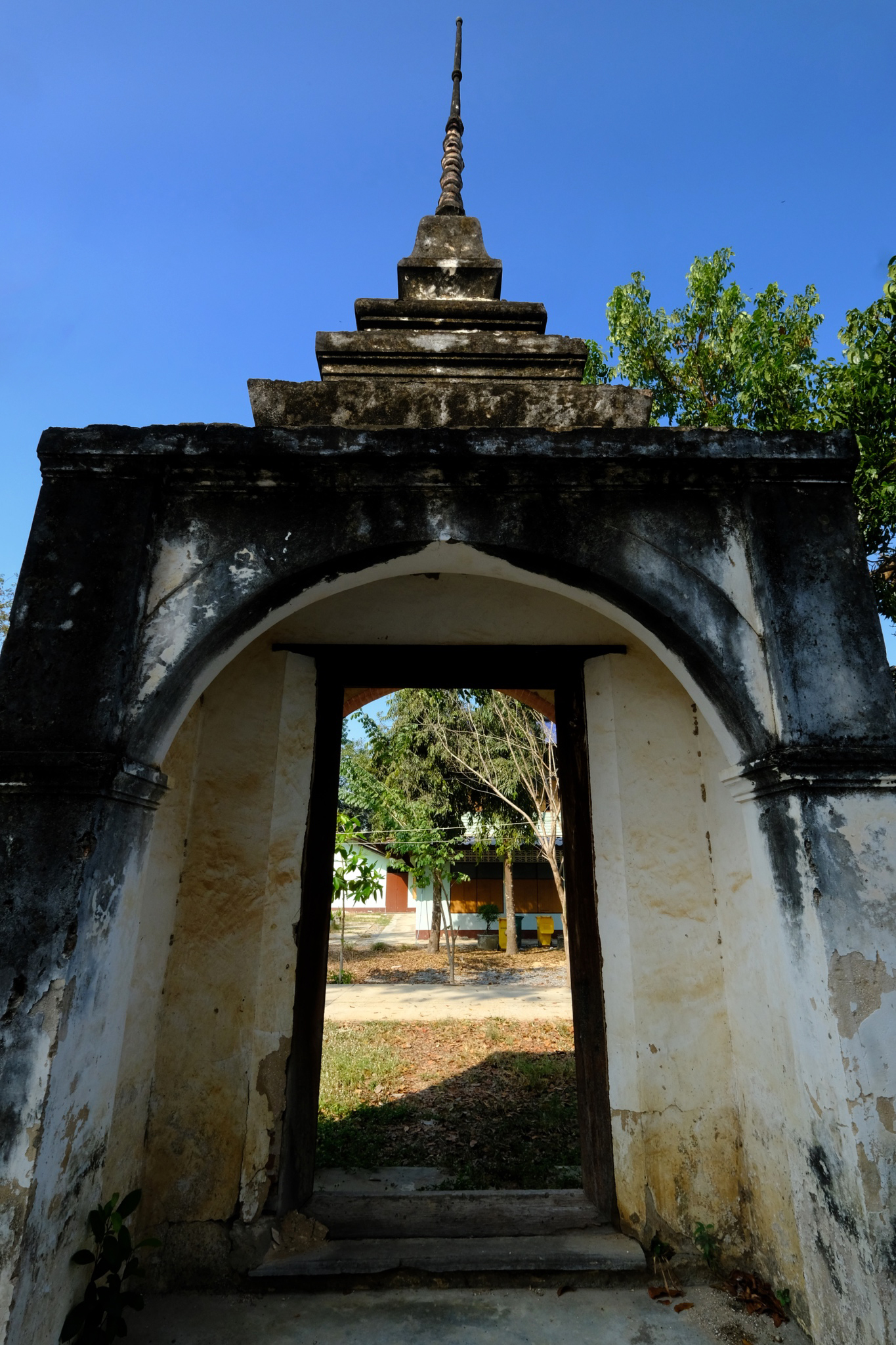 I left the inner courtyard though this gate . . . more exploring to do.
I left the inner courtyard though this gate . . . more exploring to do.
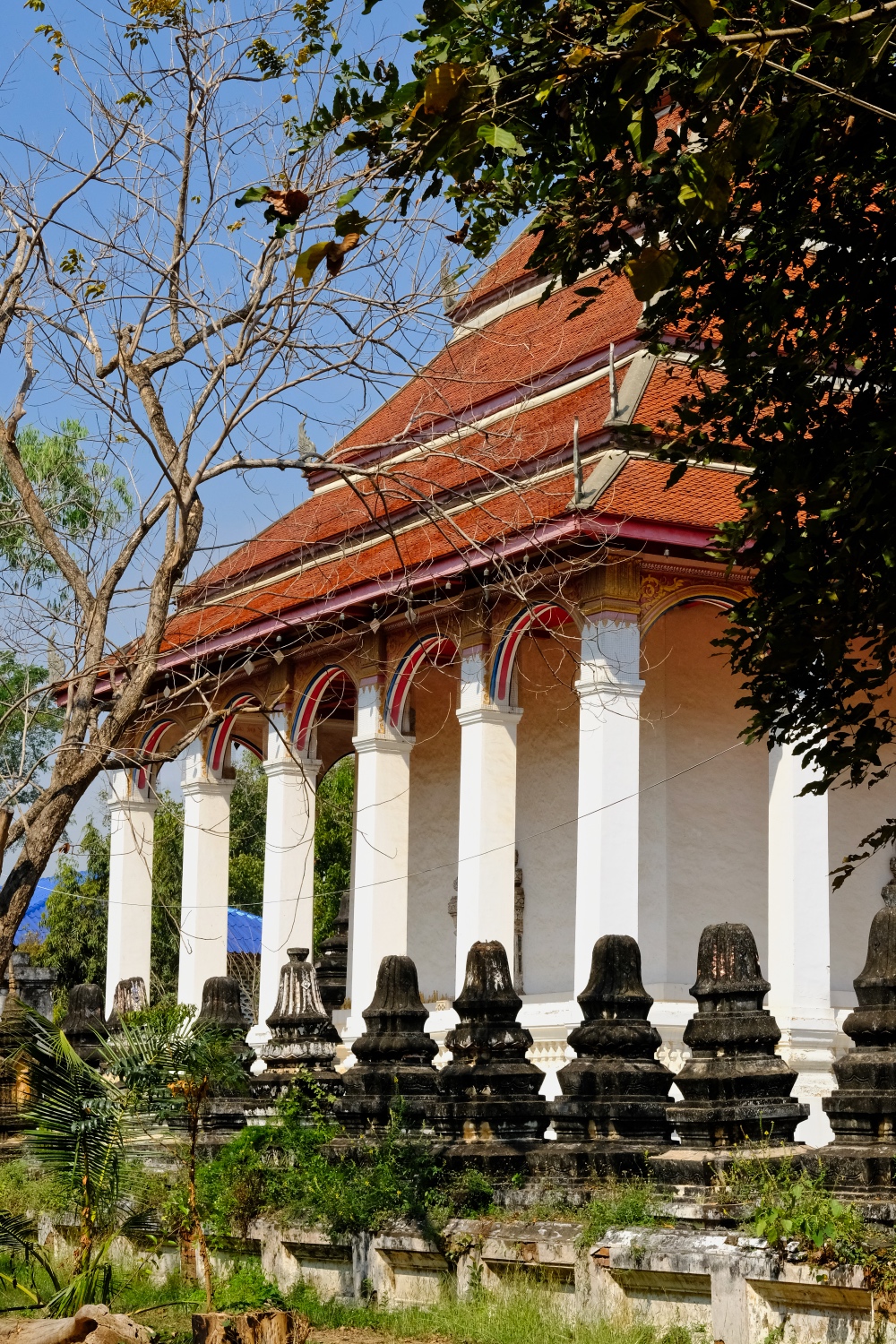 This wat building nearby drew my attention.
This wat building nearby drew my attention.
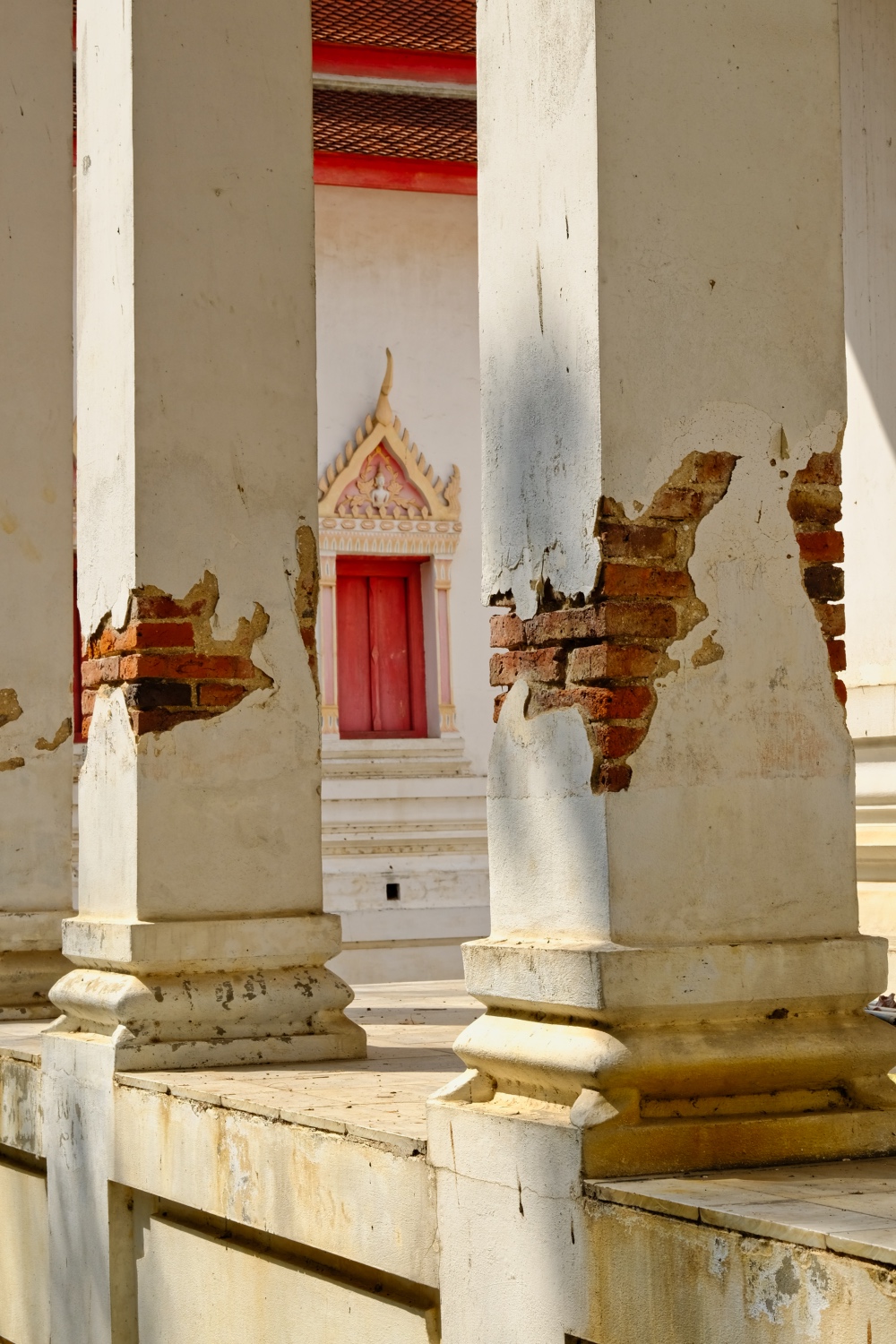 Several of the traditional white wat structures stood nearby.
Several of the traditional white wat structures stood nearby.
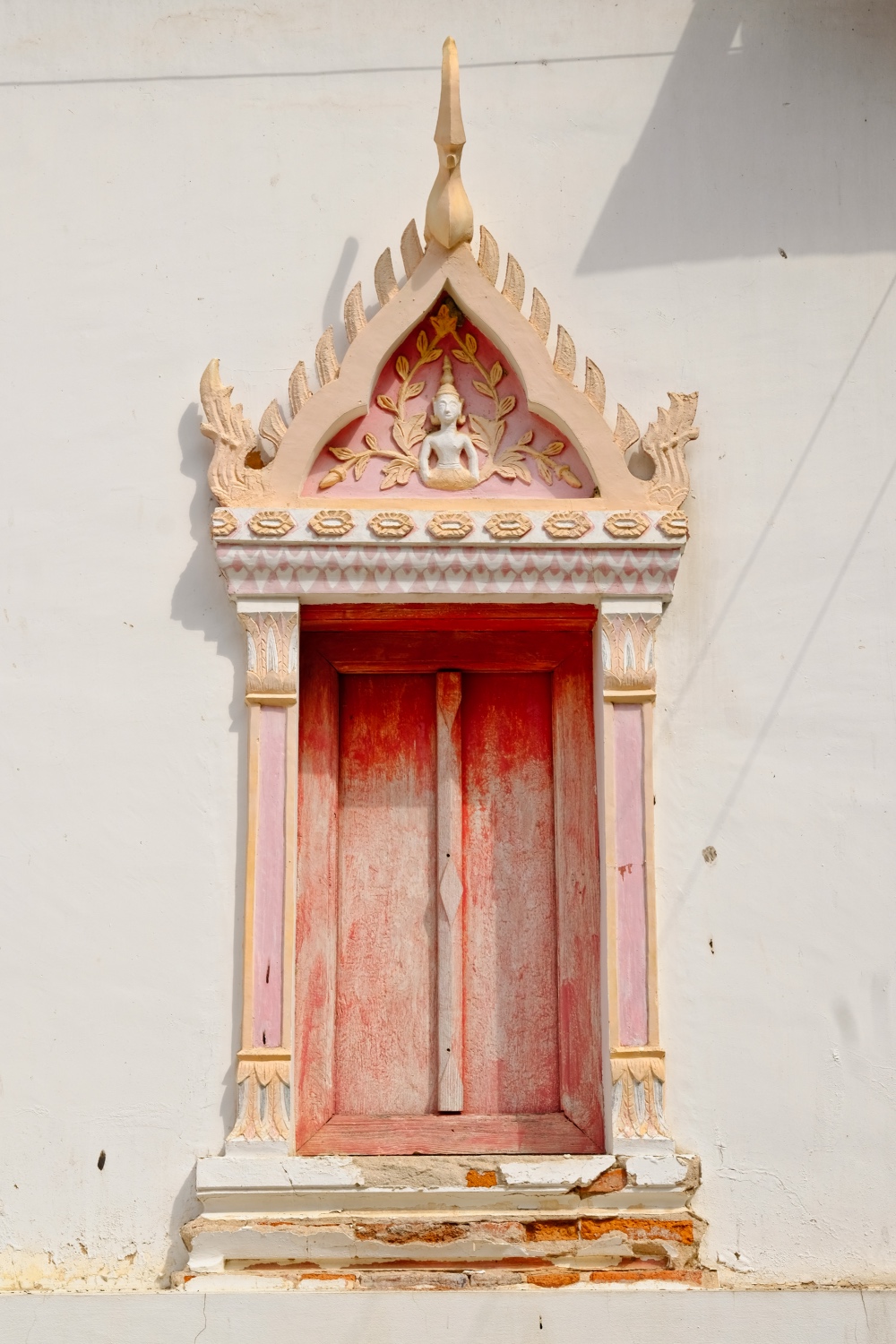 An old, sun bleached and forlorn door to the first wat building.
An old, sun bleached and forlorn door to the first wat building.
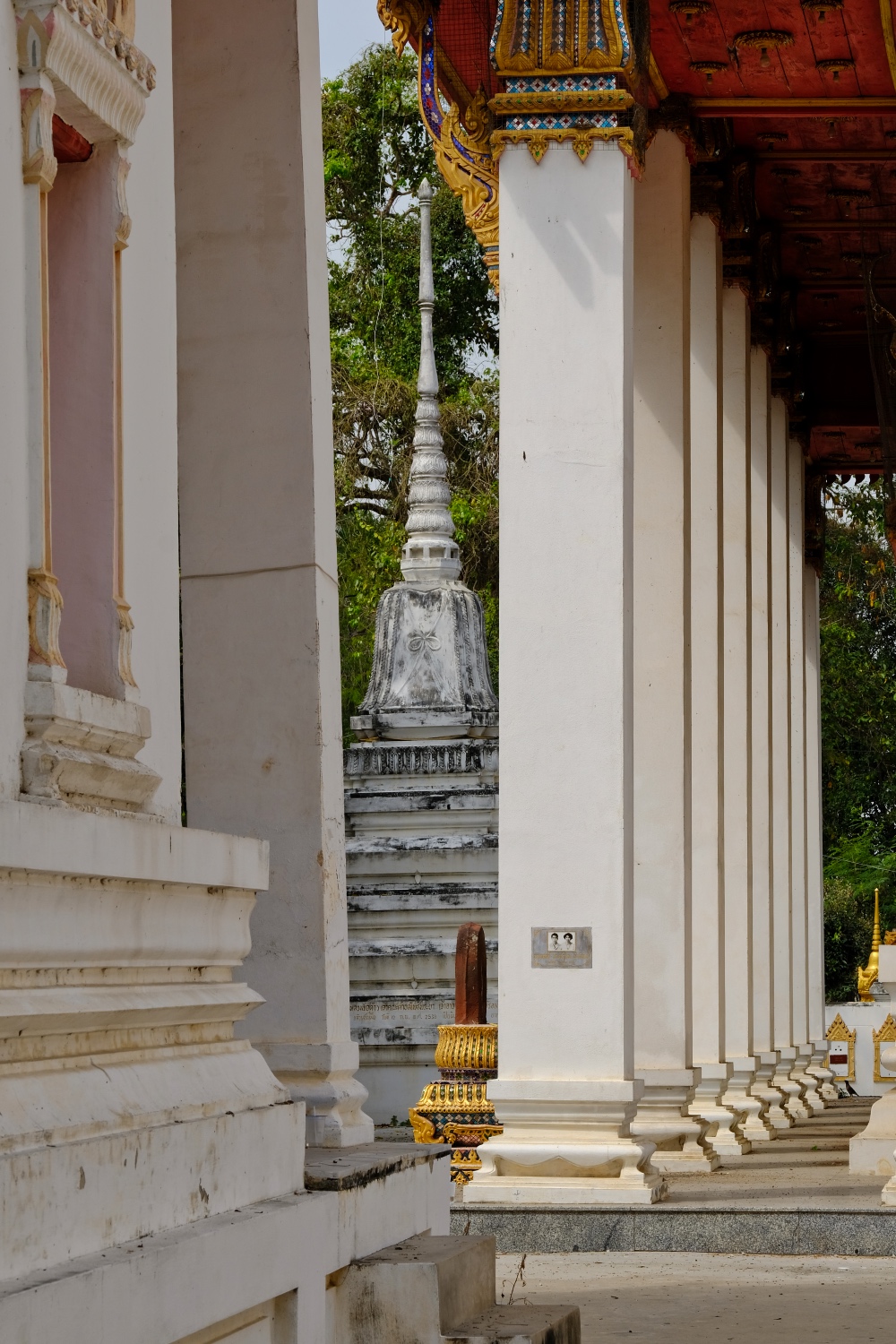 A view between the several wats. The small photos on the column (right) indicates there are the ash urns of deceased donors enshrined in the wall or column.
A view between the several wats. The small photos on the column (right) indicates there are the ash urns of deceased donors enshrined in the wall or column.
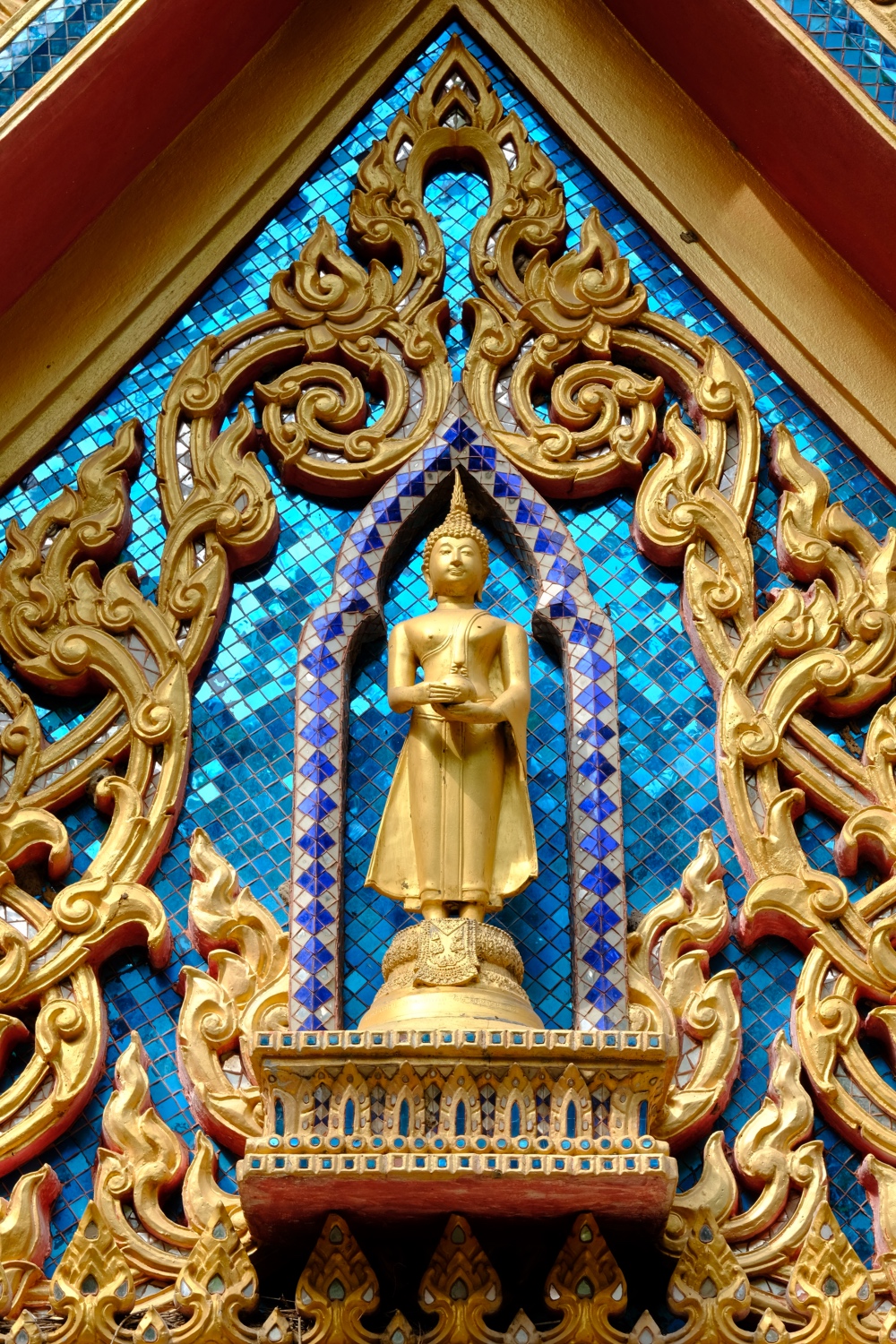 High up, under the gabled roof end, the exquisite Buddhist art looked almost new.
High up, under the gabled roof end, the exquisite Buddhist art looked almost new.
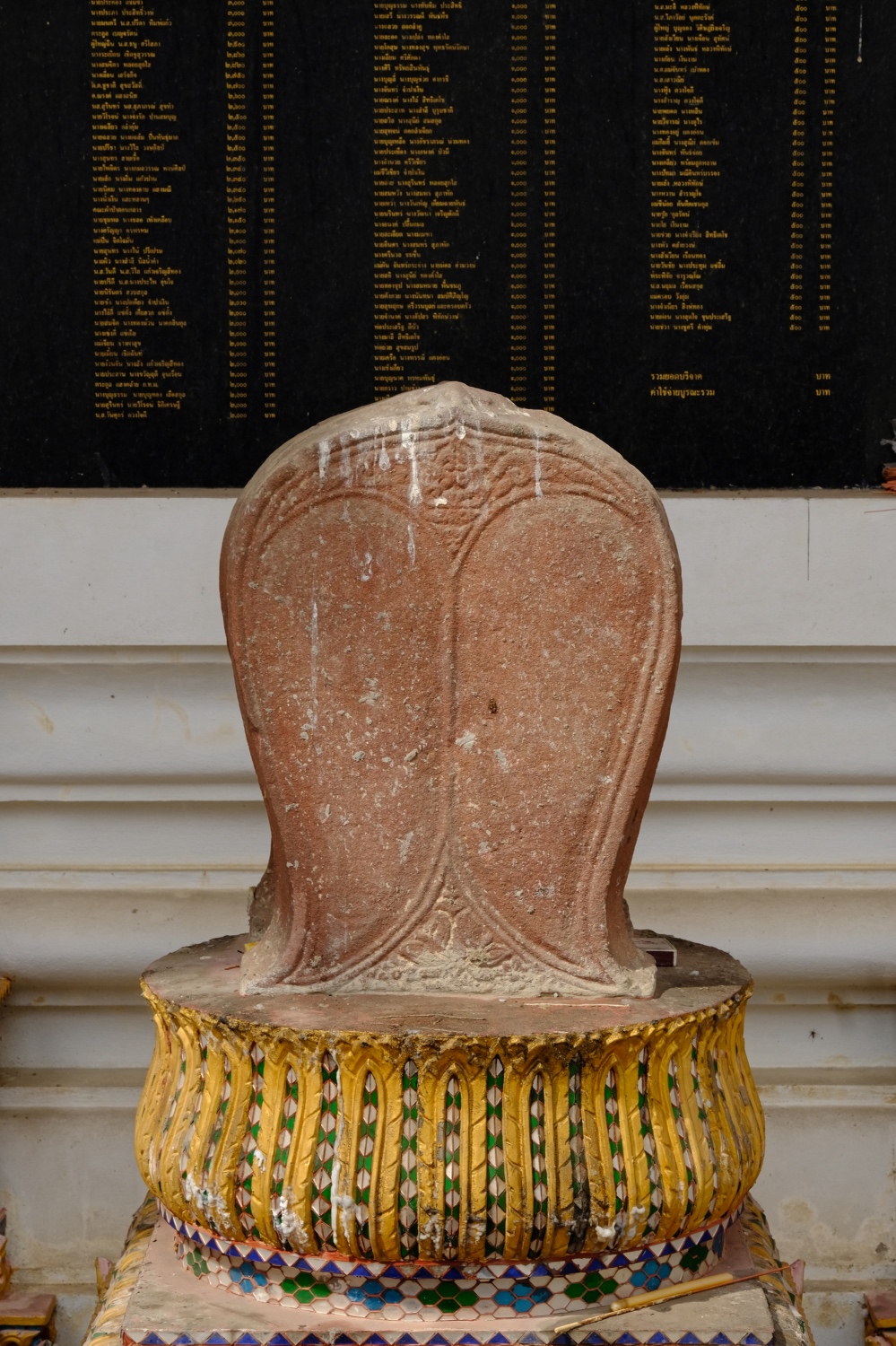 This old Buddhist tablet stood in front of a plaque listing donors to the Wat . . . in order of the amount donated. My name, and my wife's name, appears on many of these donor lists throughout Thailand.
This old Buddhist tablet stood in front of a plaque listing donors to the Wat . . . in order of the amount donated. My name, and my wife's name, appears on many of these donor lists throughout Thailand.
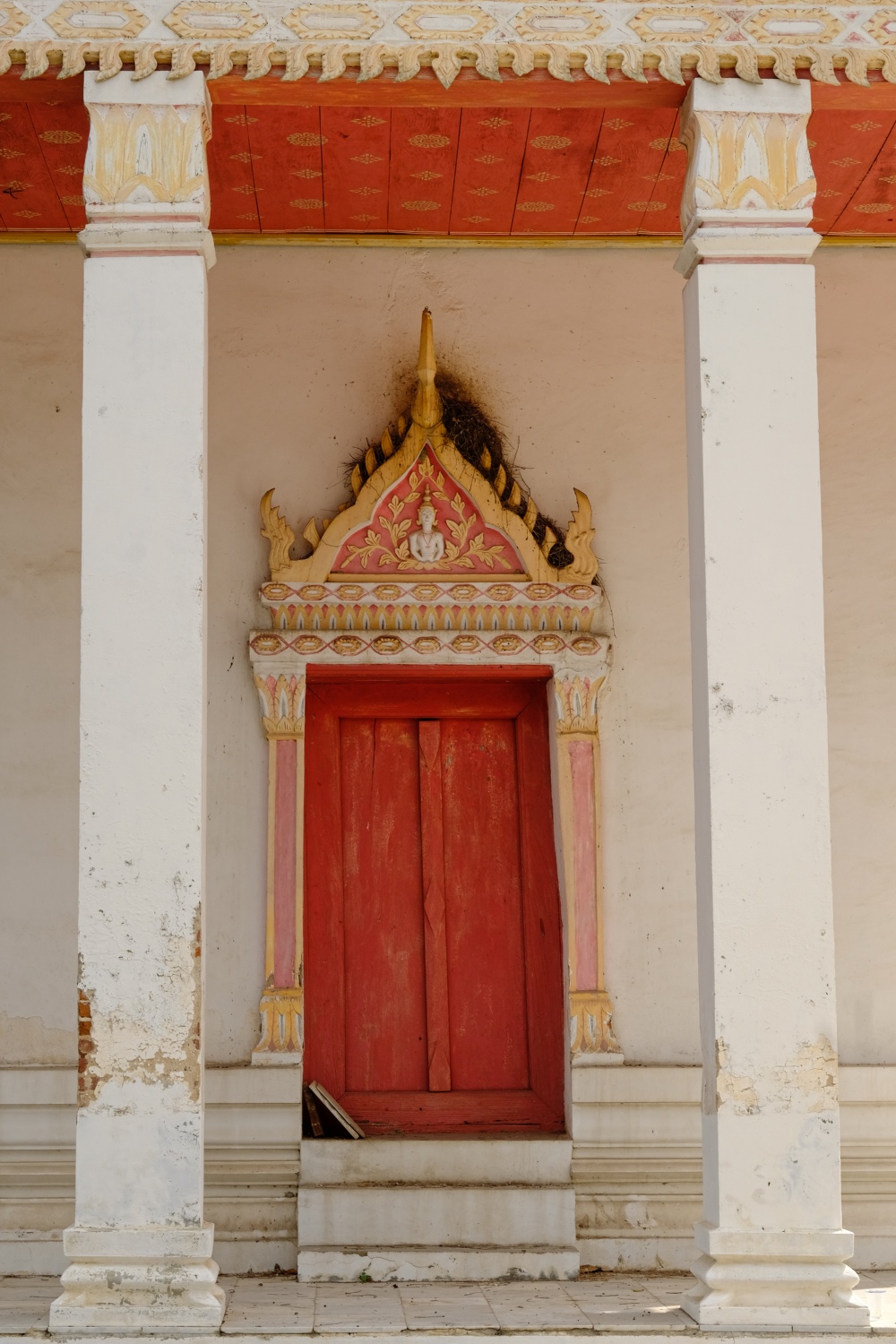 Birds had built quite a nest above one of the doors.
Birds had built quite a nest above one of the doors.
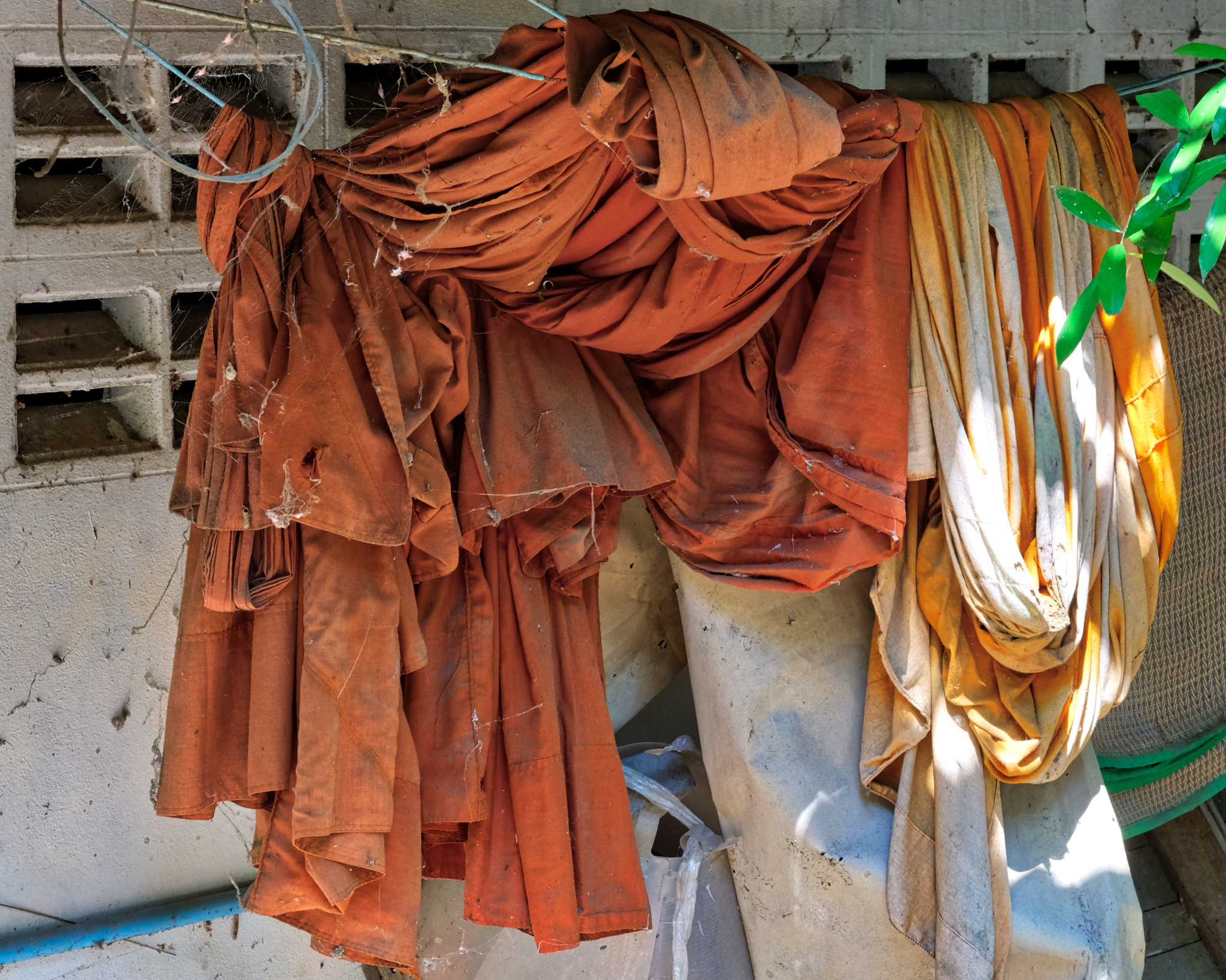 John and I wandered further back into the wat along a wooded path and discovered abandoned monks' quarters. It looks like whoever lived there in the past left all of a sudden.
John and I wandered further back into the wat along a wooded path and discovered abandoned monks' quarters. It looks like whoever lived there in the past left all of a sudden.
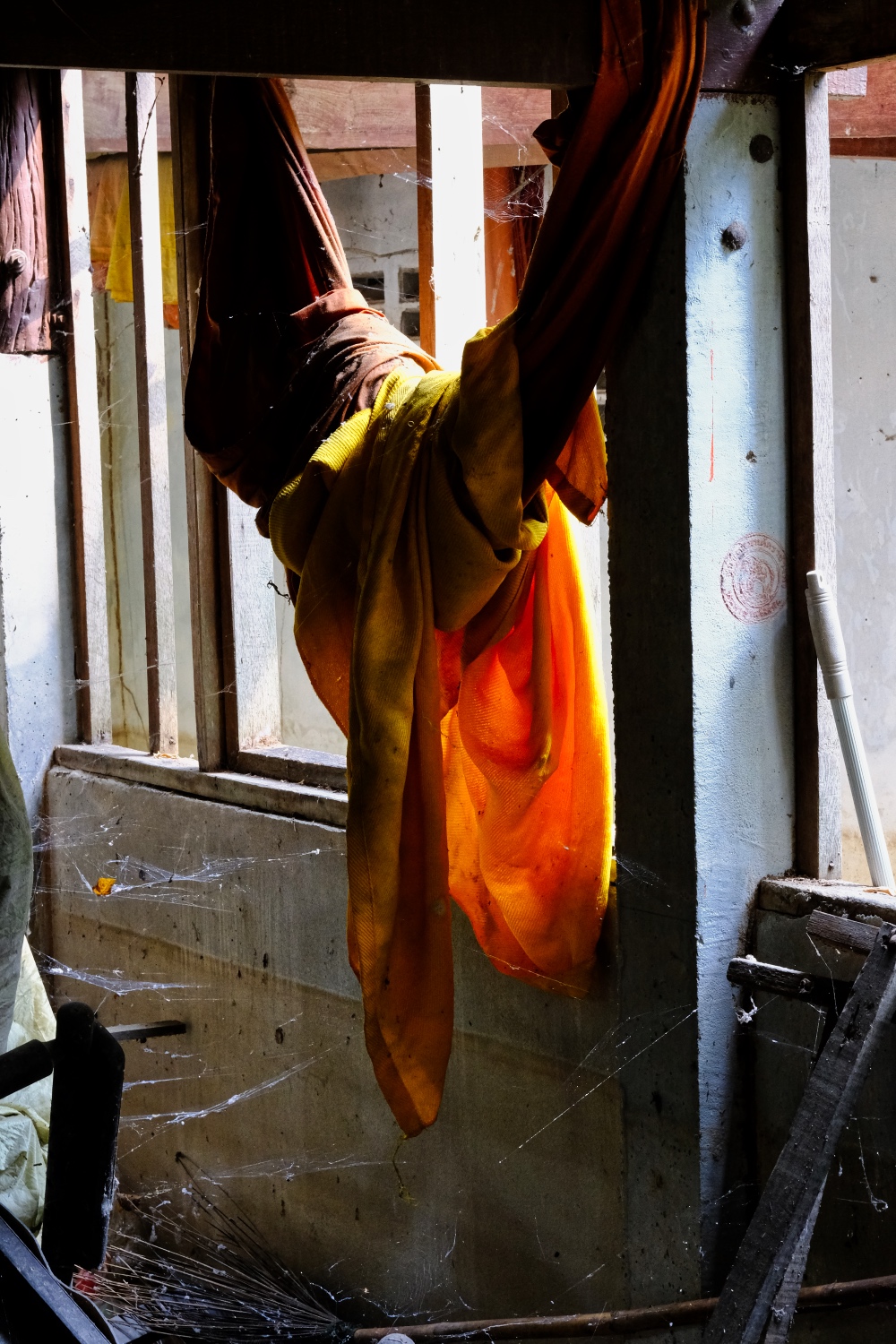 We sensed a mystery: Why had these monks left in such a hurry that they did not even have time to take their robes with them? Perhaps they had done something bad . . . or had been suddenly transferred to another wat . . . or . . .?
We sensed a mystery: Why had these monks left in such a hurry that they did not even have time to take their robes with them? Perhaps they had done something bad . . . or had been suddenly transferred to another wat . . . or . . .?
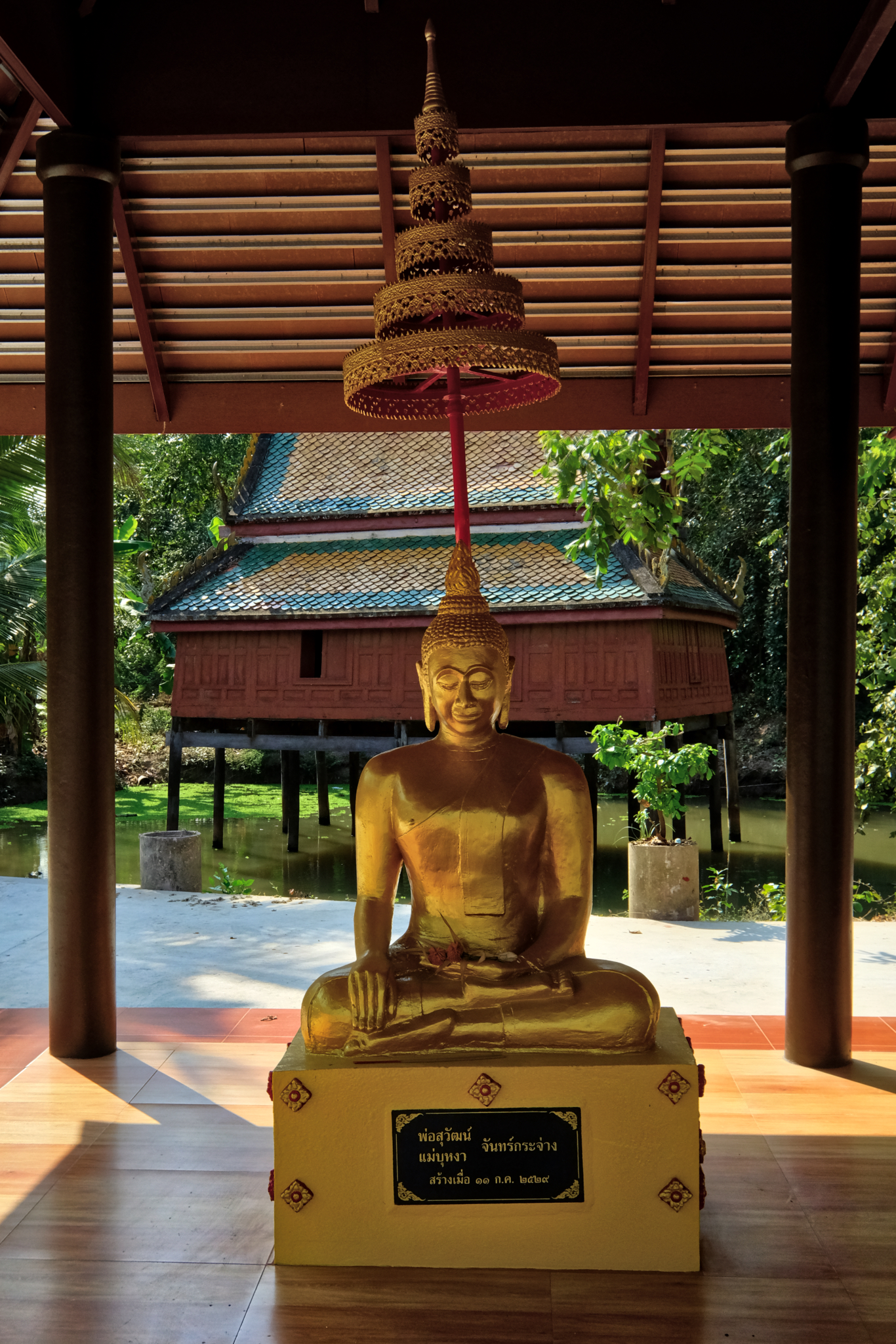 Along a path we came upon two powerful Buddha images in a pavilion next to a pond.
Along a path we came upon two powerful Buddha images in a pavilion next to a pond.
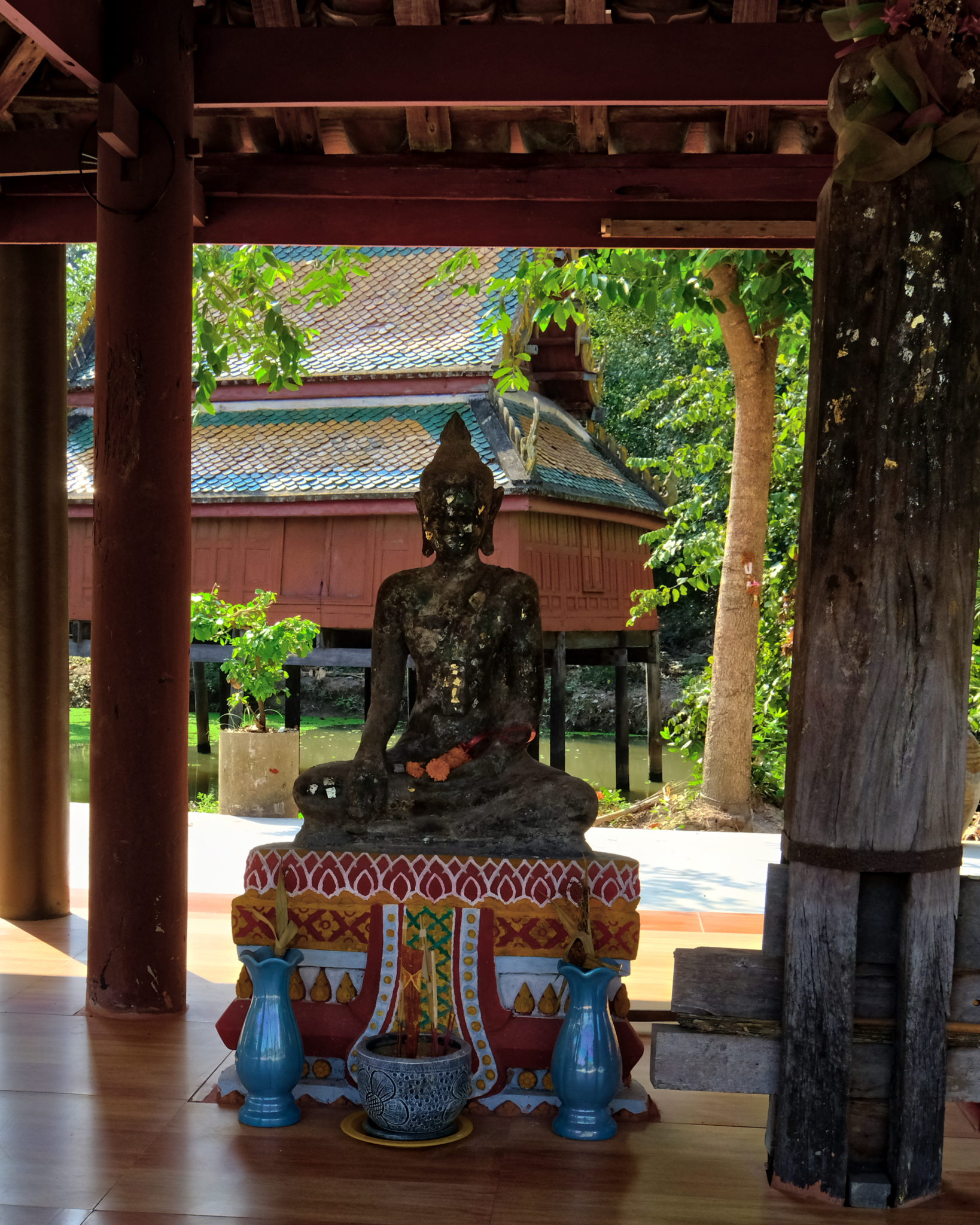 Each pavilion Buddha was amazing.
Each pavilion Buddha was amazing.
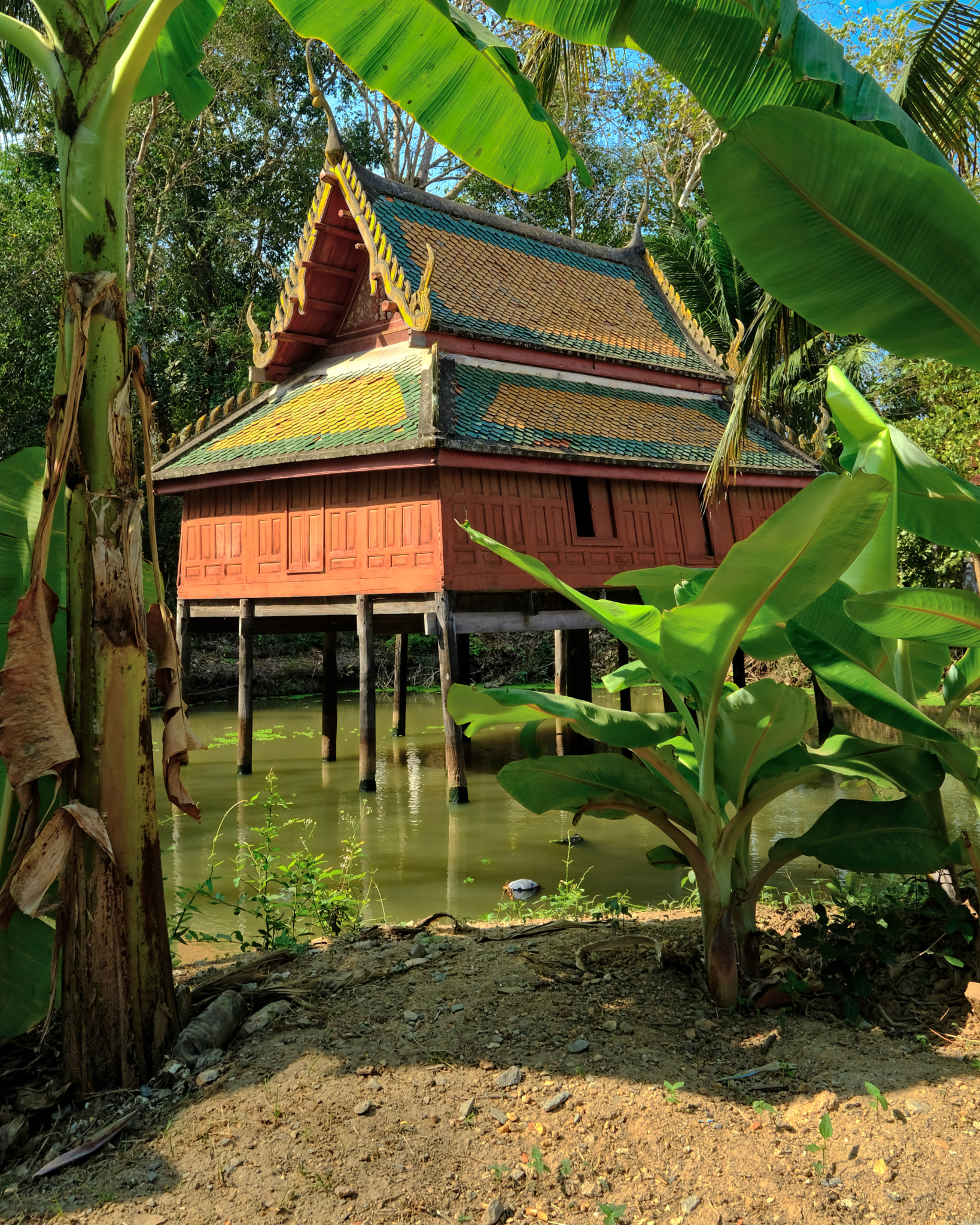 Behind the Buddha pavilion was this Thai-style cottage set in the middle of a pond.
Behind the Buddha pavilion was this Thai-style cottage set in the middle of a pond.
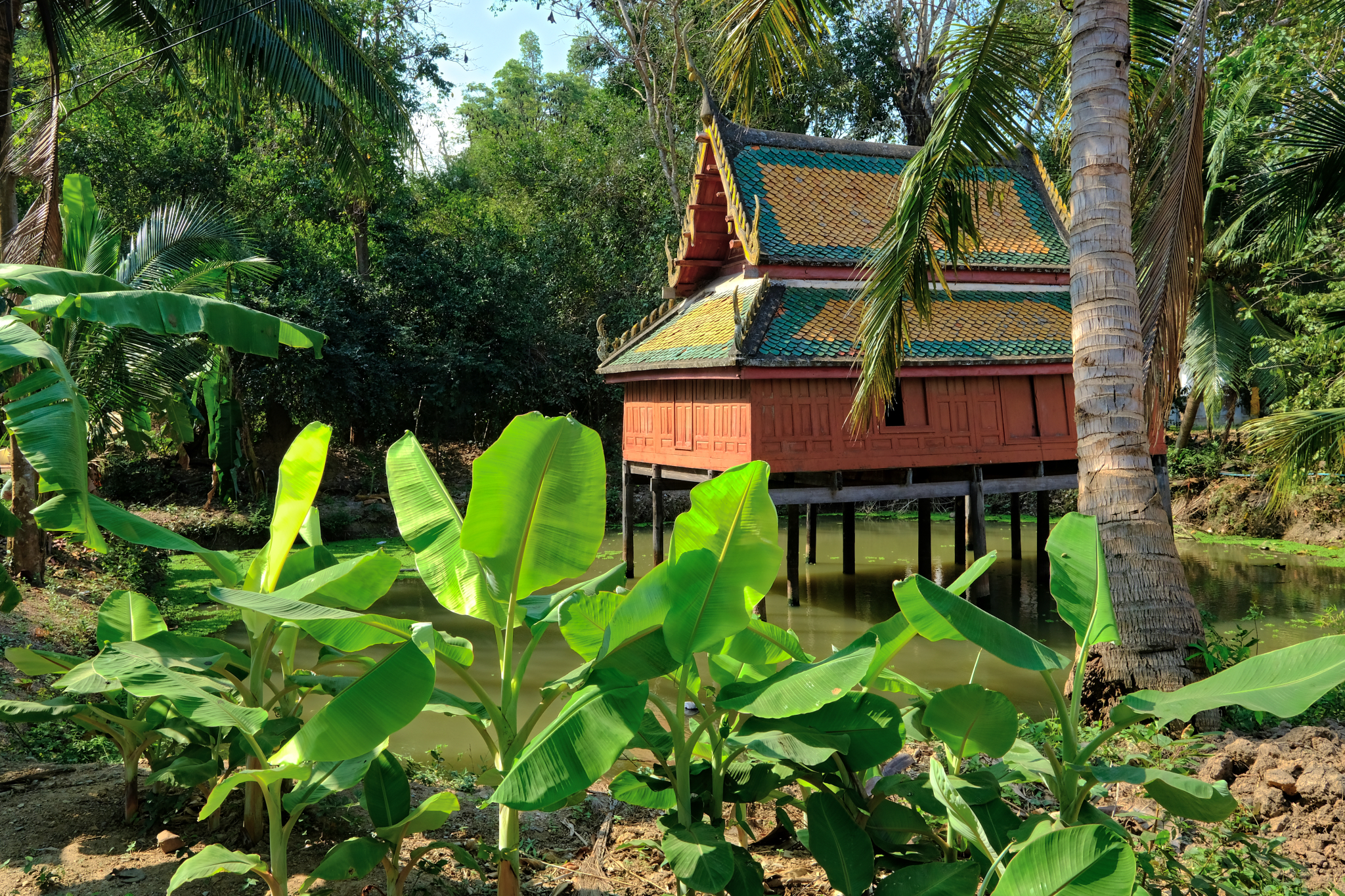 This building was a bit of a mystery too: there was no bridge out to the structure, and there was no boat anywhere to be seen.
This building was a bit of a mystery too: there was no bridge out to the structure, and there was no boat anywhere to be seen.
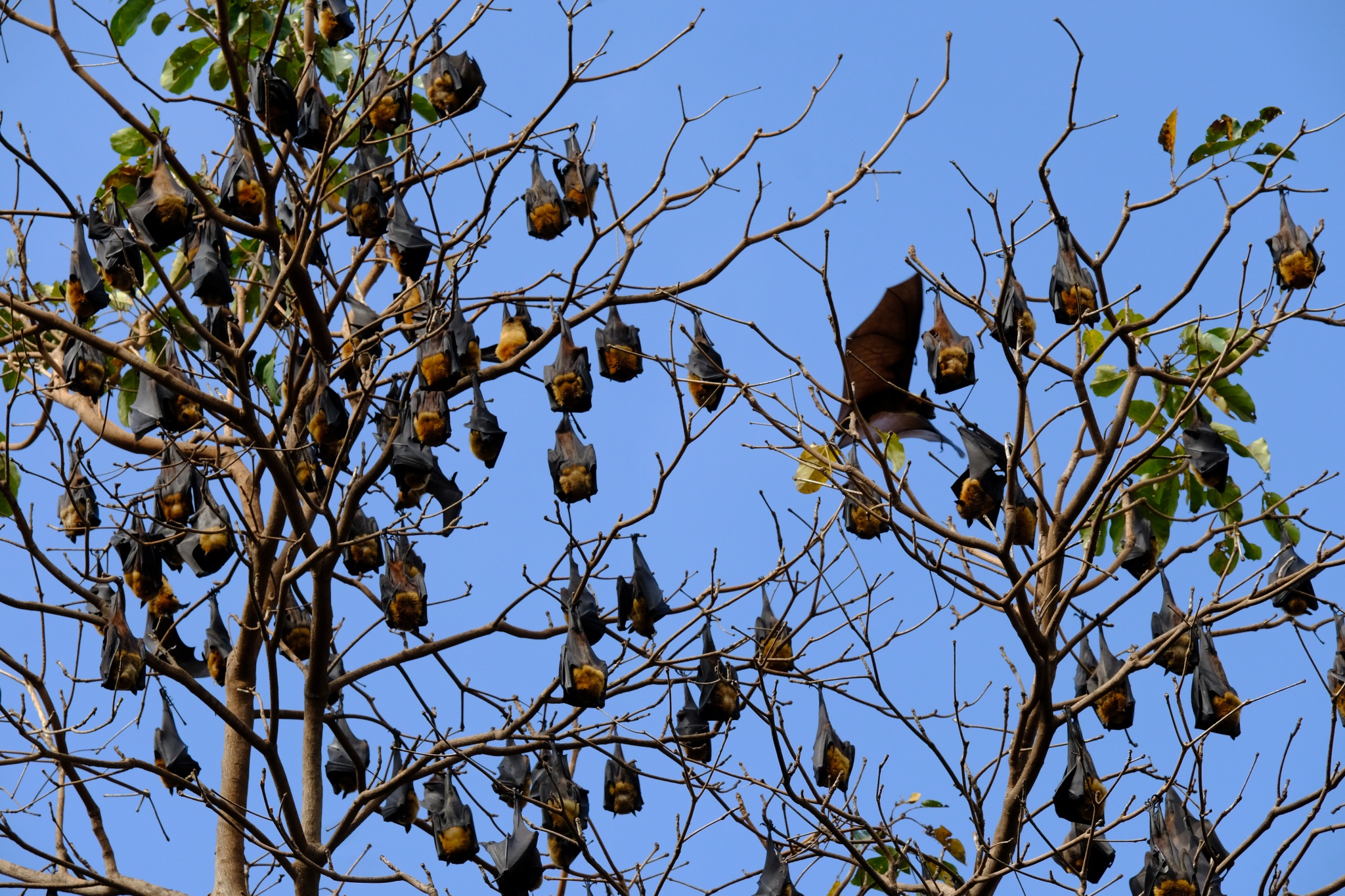 A small forest of trees full of chattering fruit bats surrounded the cottage in the pond.
A small forest of trees full of chattering fruit bats surrounded the cottage in the pond.
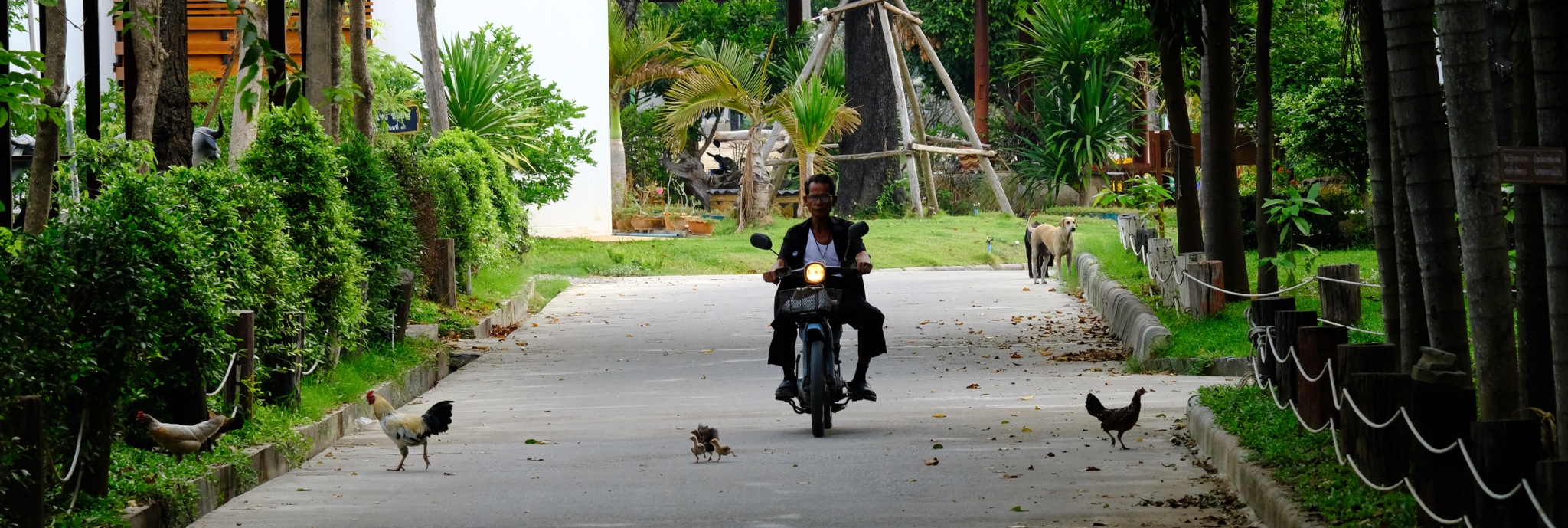 It was not even noon and I felt my day had already been successful. We walked out of the wat over the bridge and along this road.
It was not even noon and I felt my day had already been successful. We walked out of the wat over the bridge and along this road.
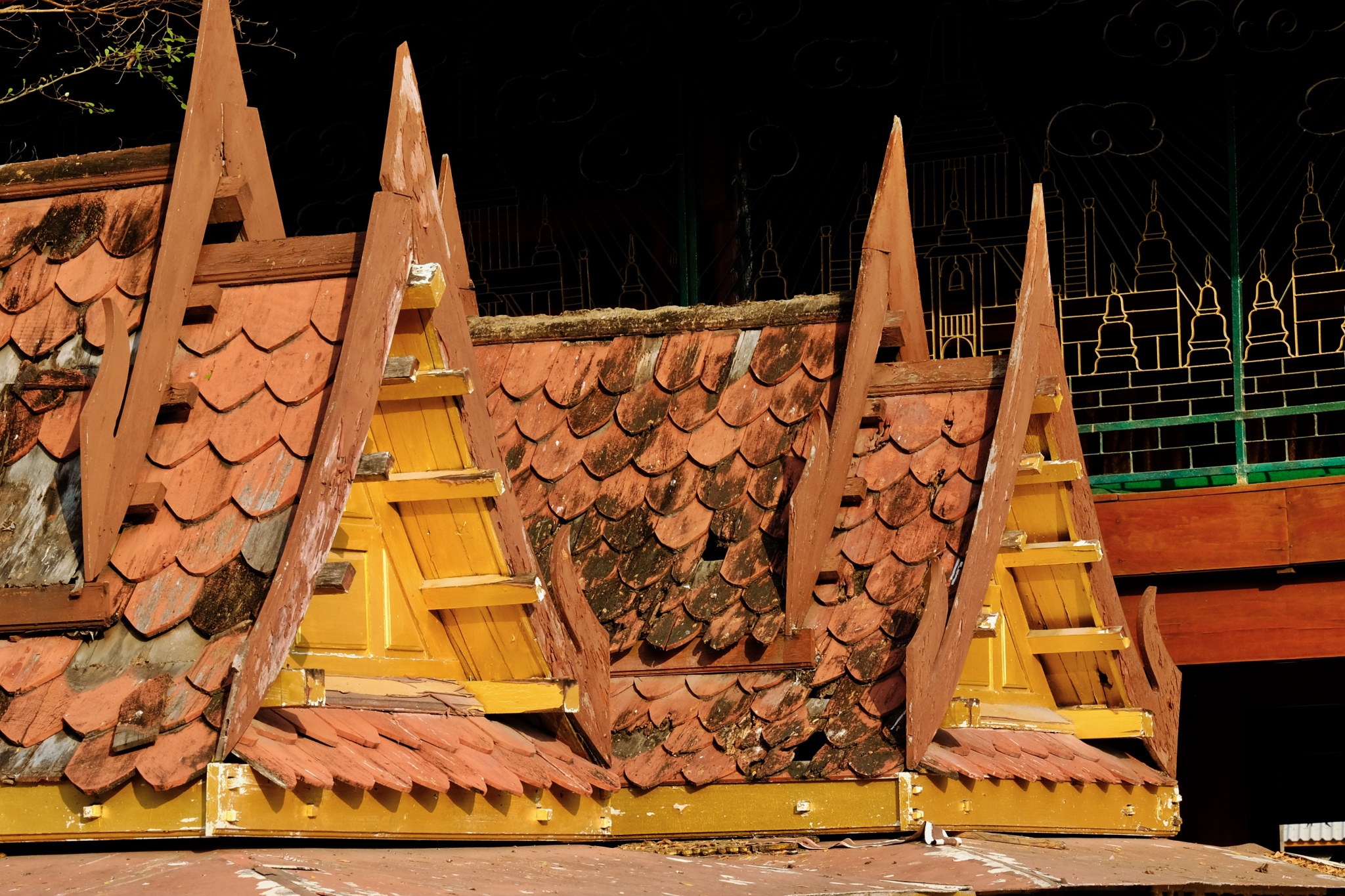 Out past the old school house to my truck and back on the road to more rambling adventure in Suphanburi Province.
Out past the old school house to my truck and back on the road to more rambling adventure in Suphanburi Province.
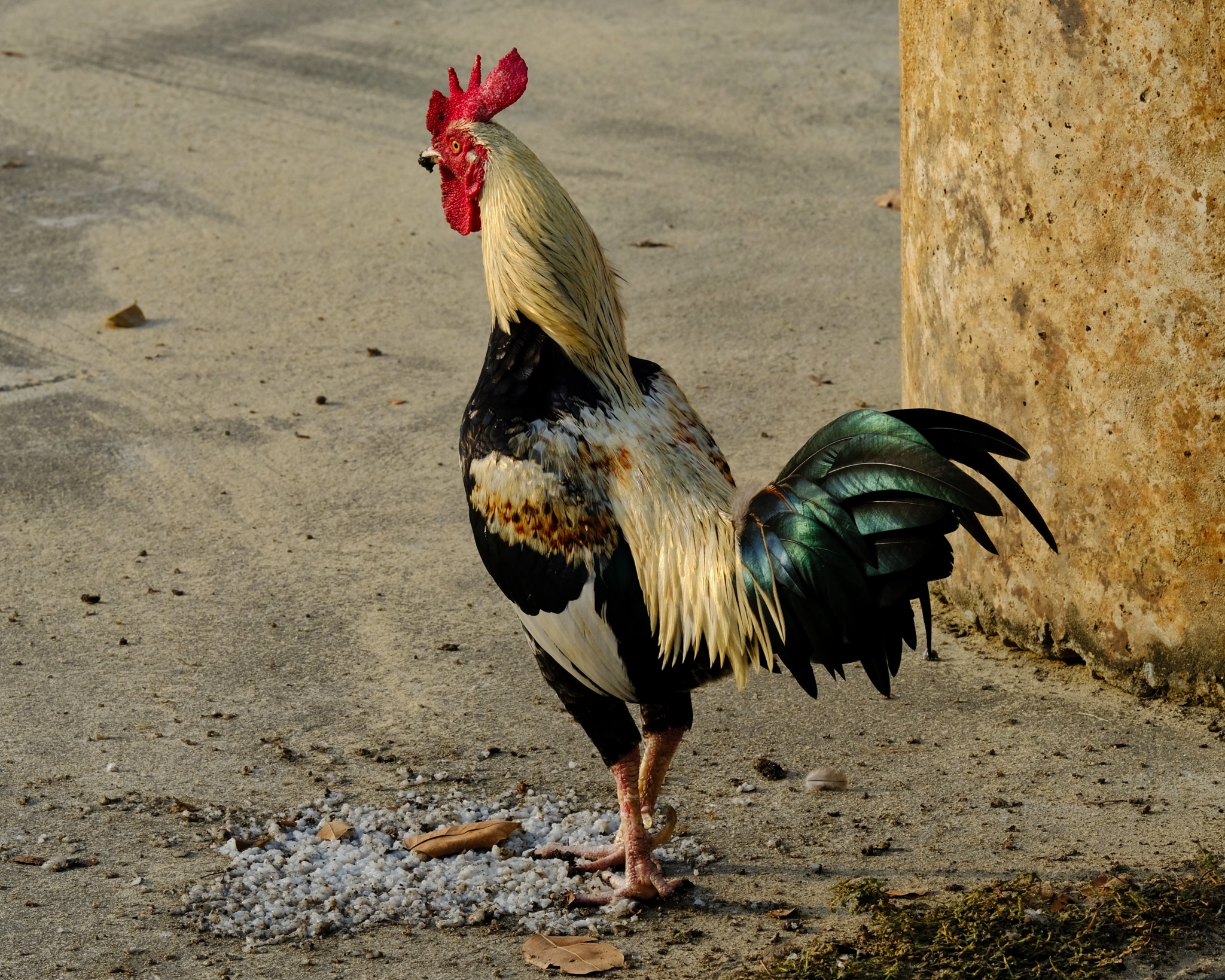 Oh, I almost forgot . . . there was a rooster at the wat and I took the best rooster photo of my entire life!
Oh, I almost forgot . . . there was a rooster at the wat and I took the best rooster photo of my entire life!
